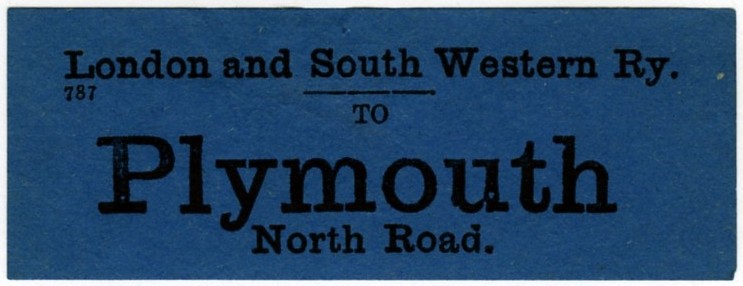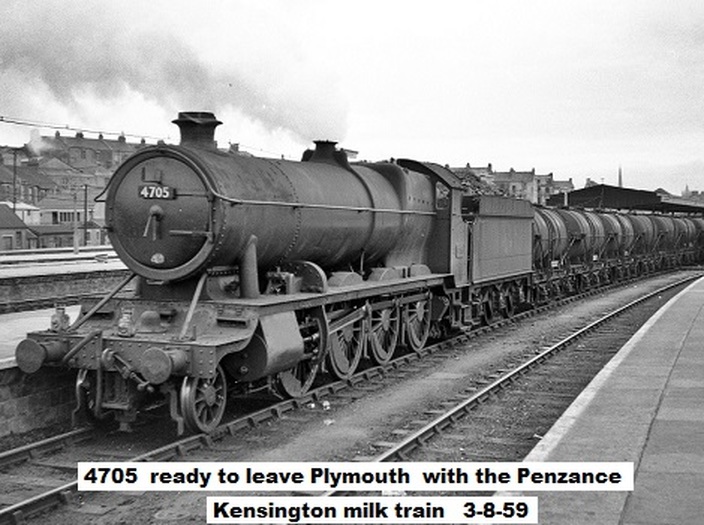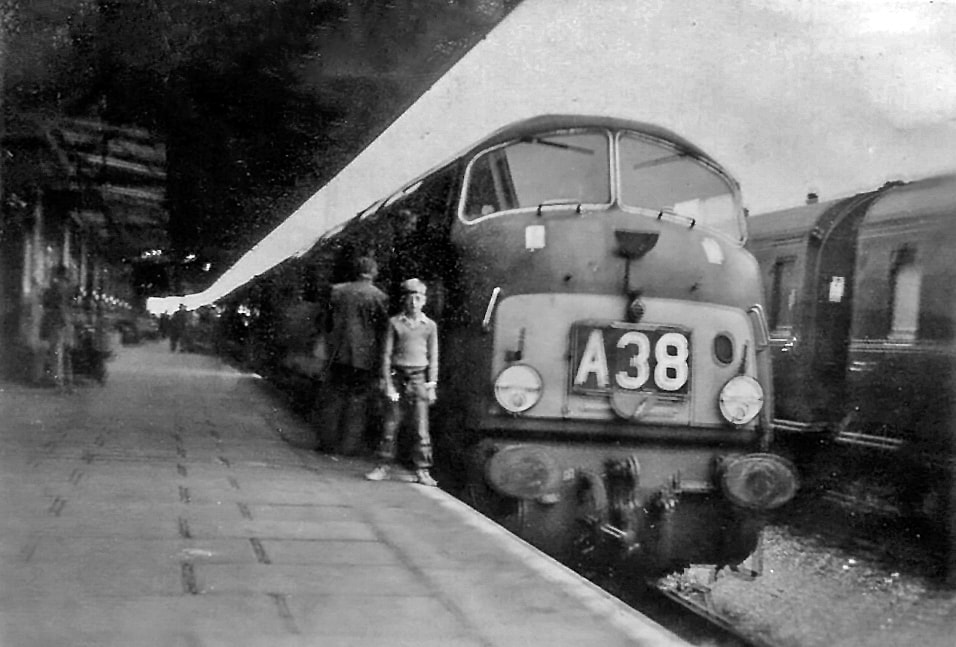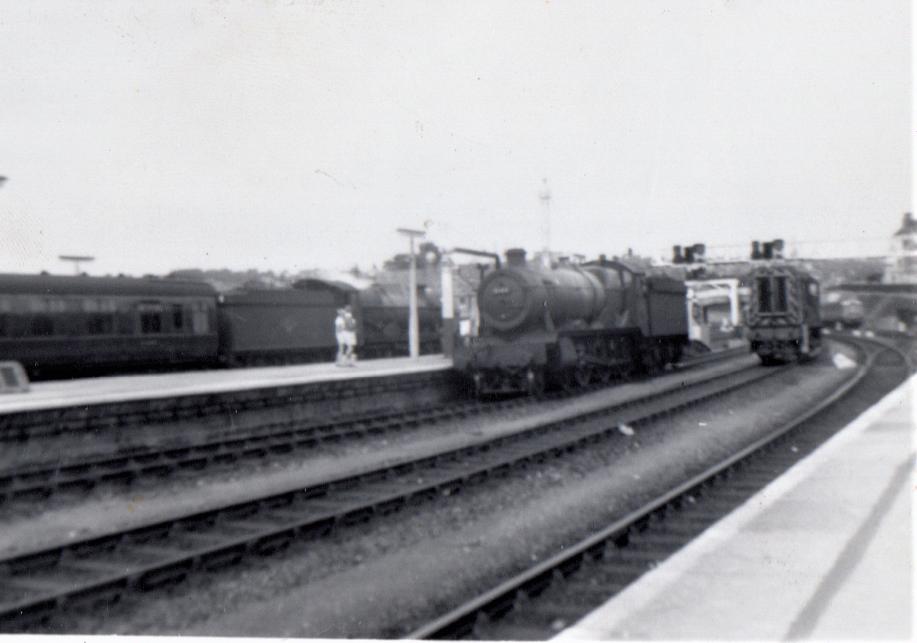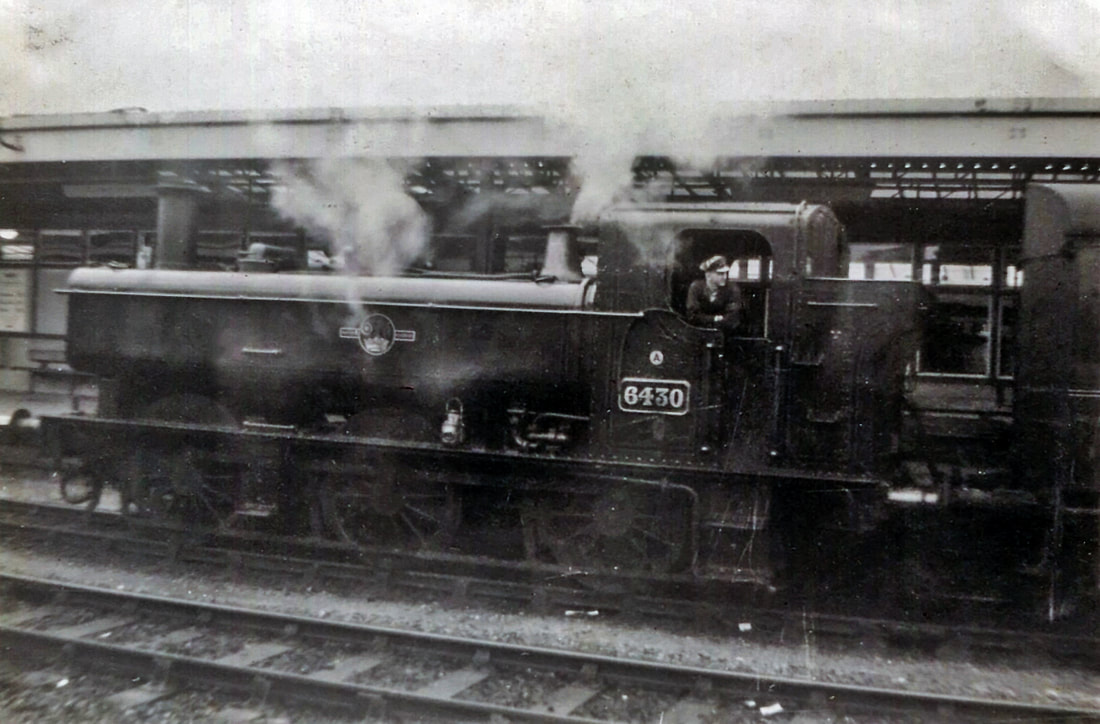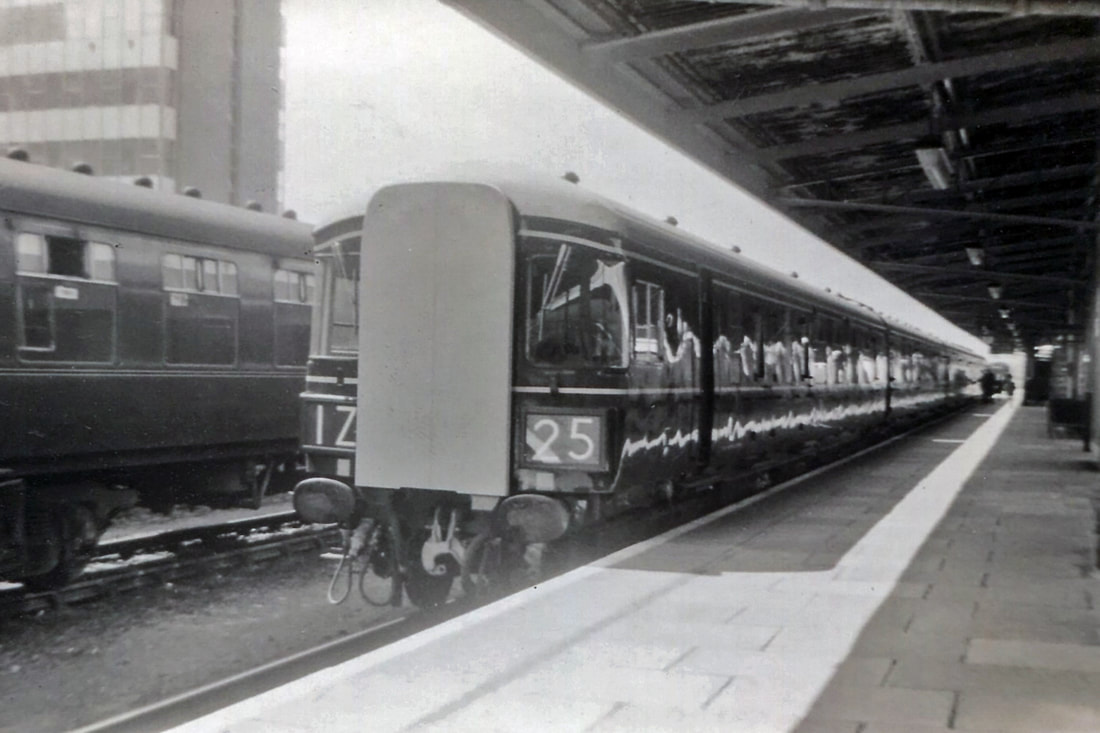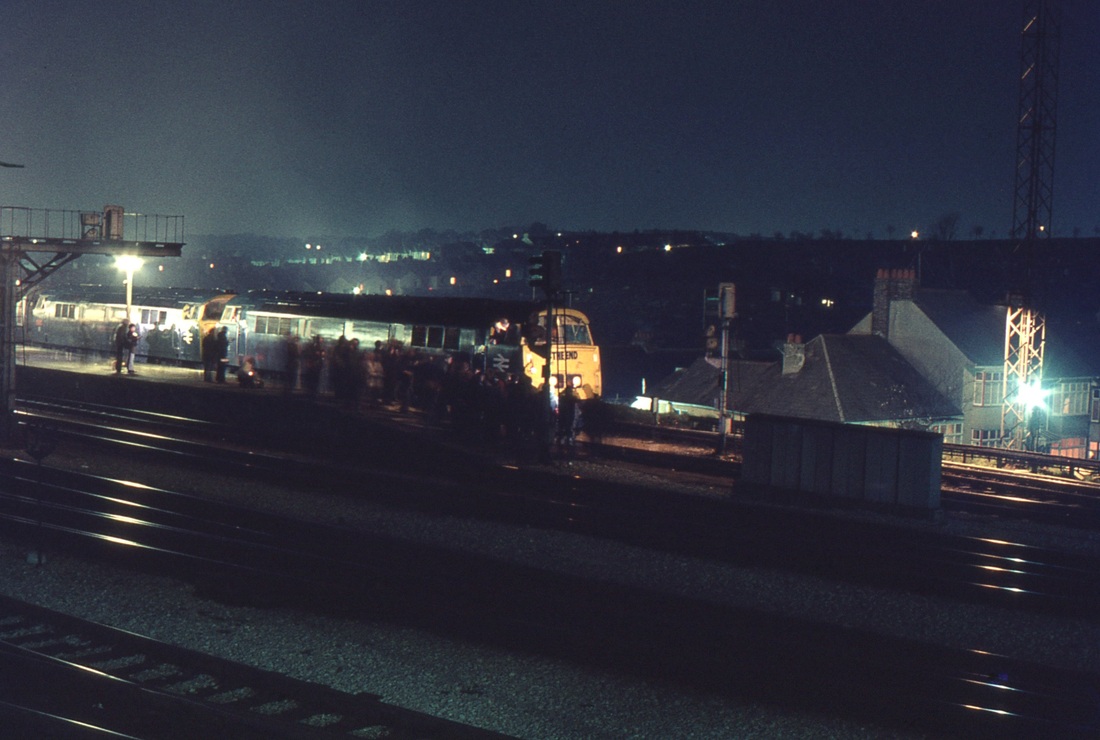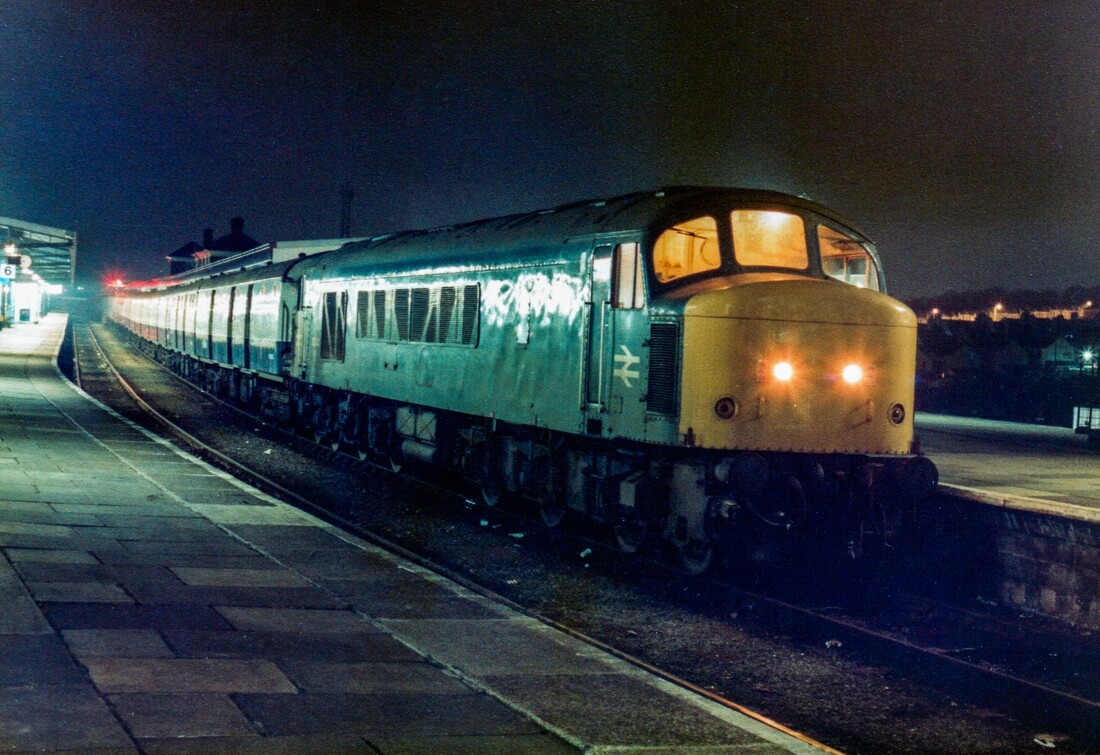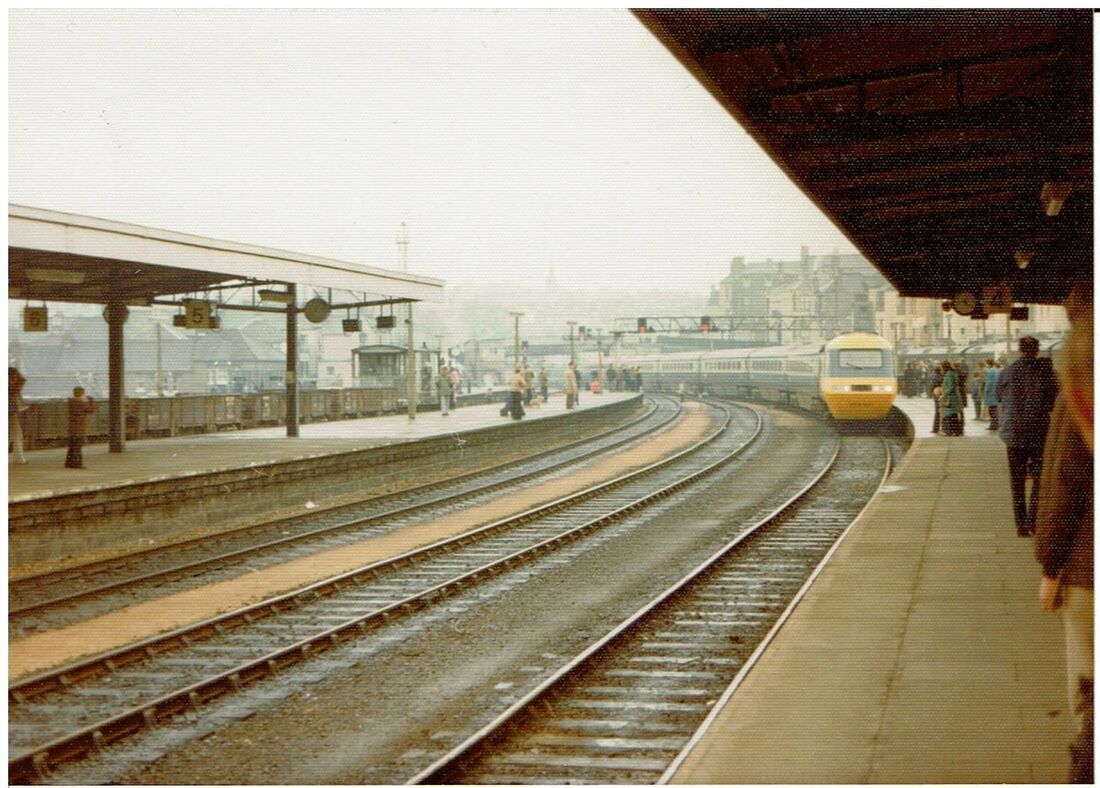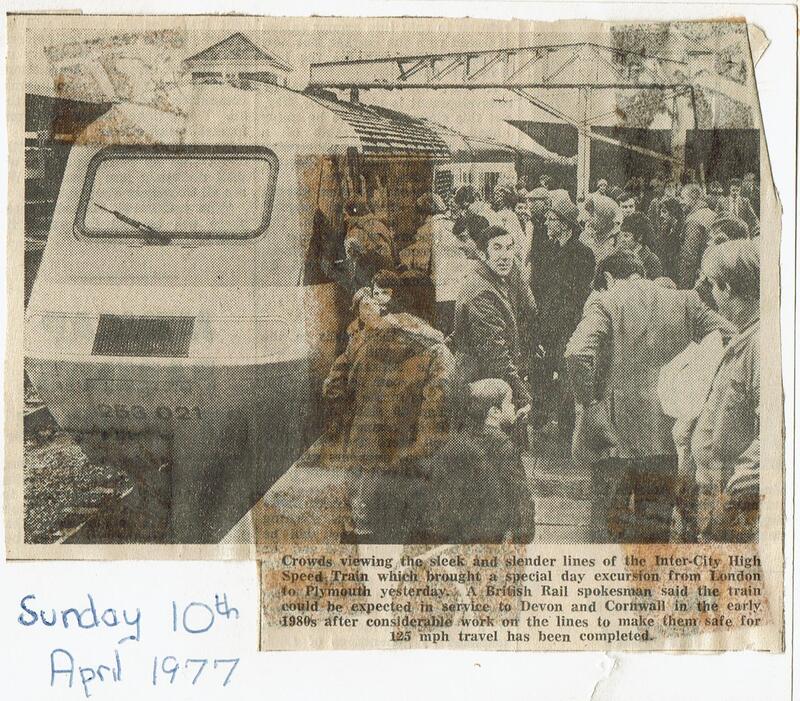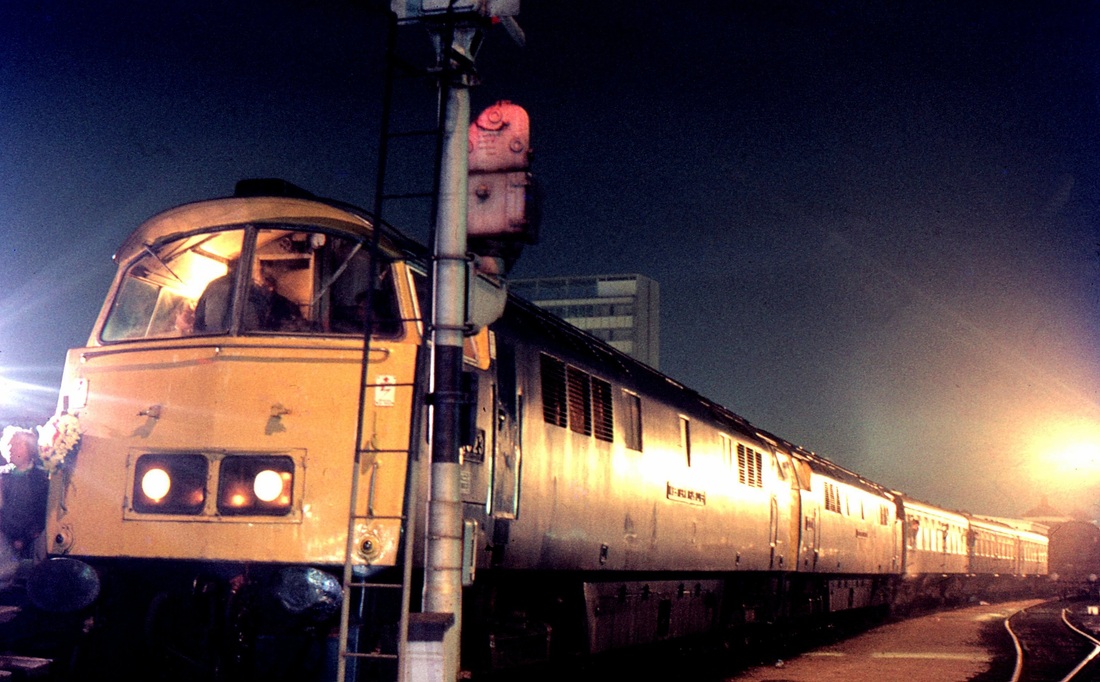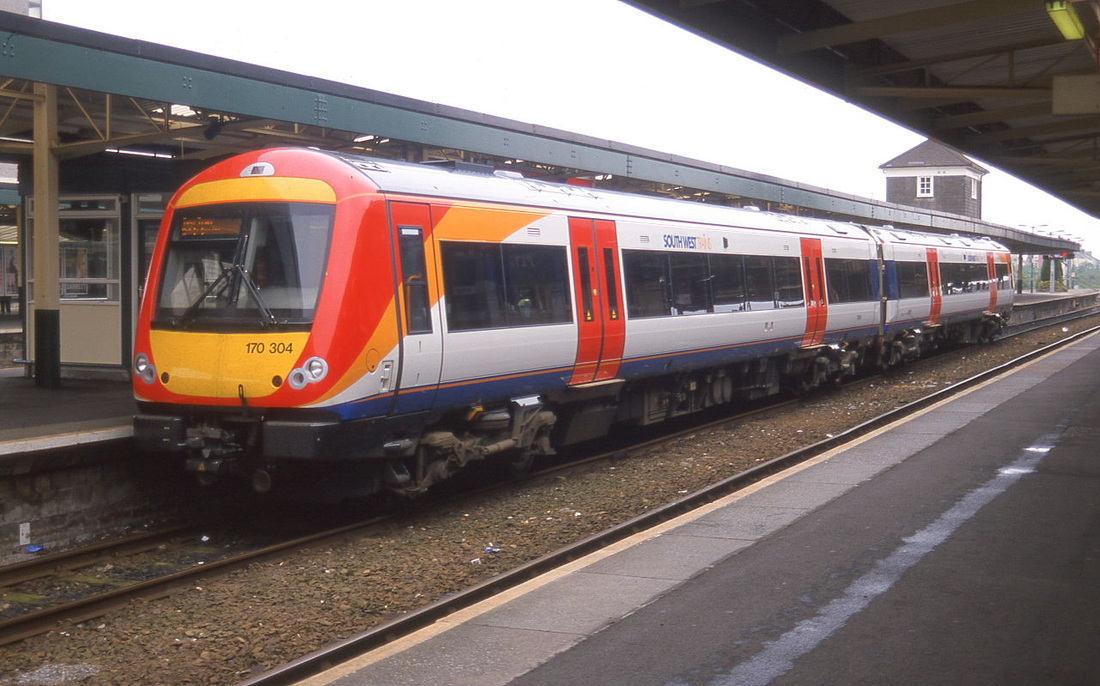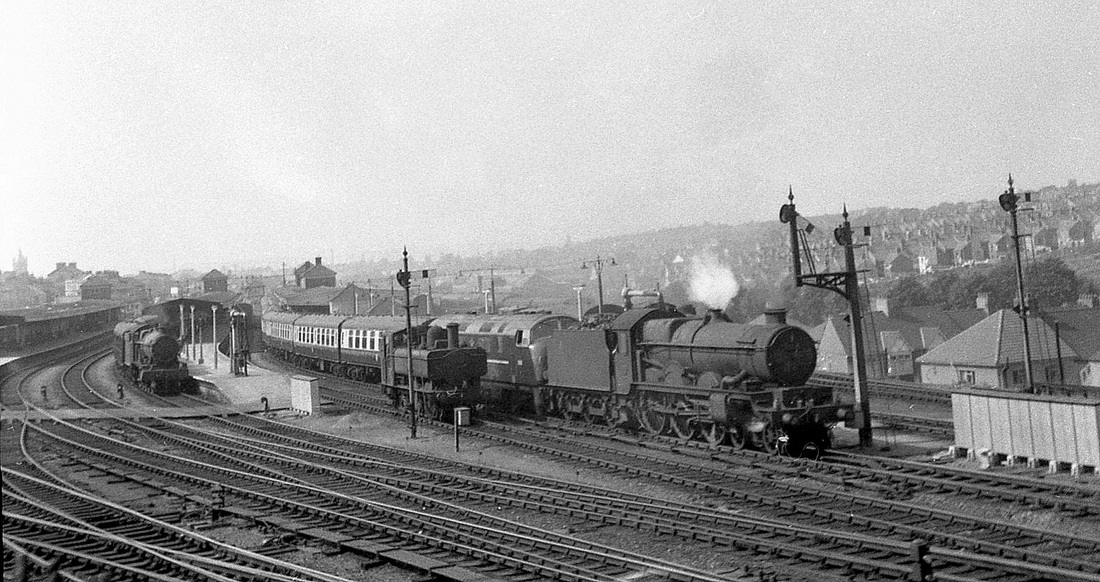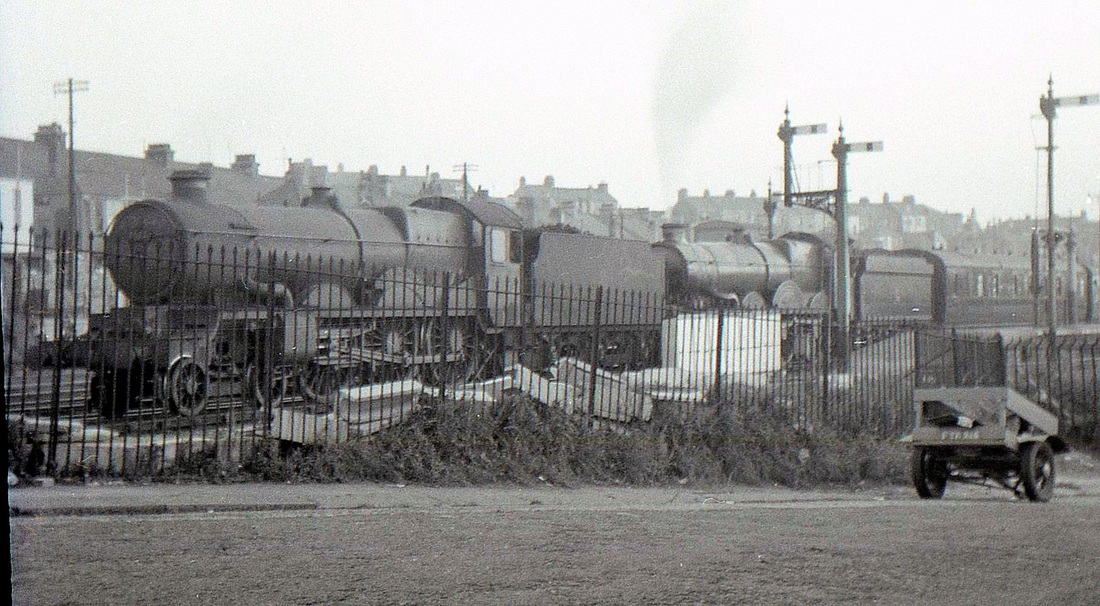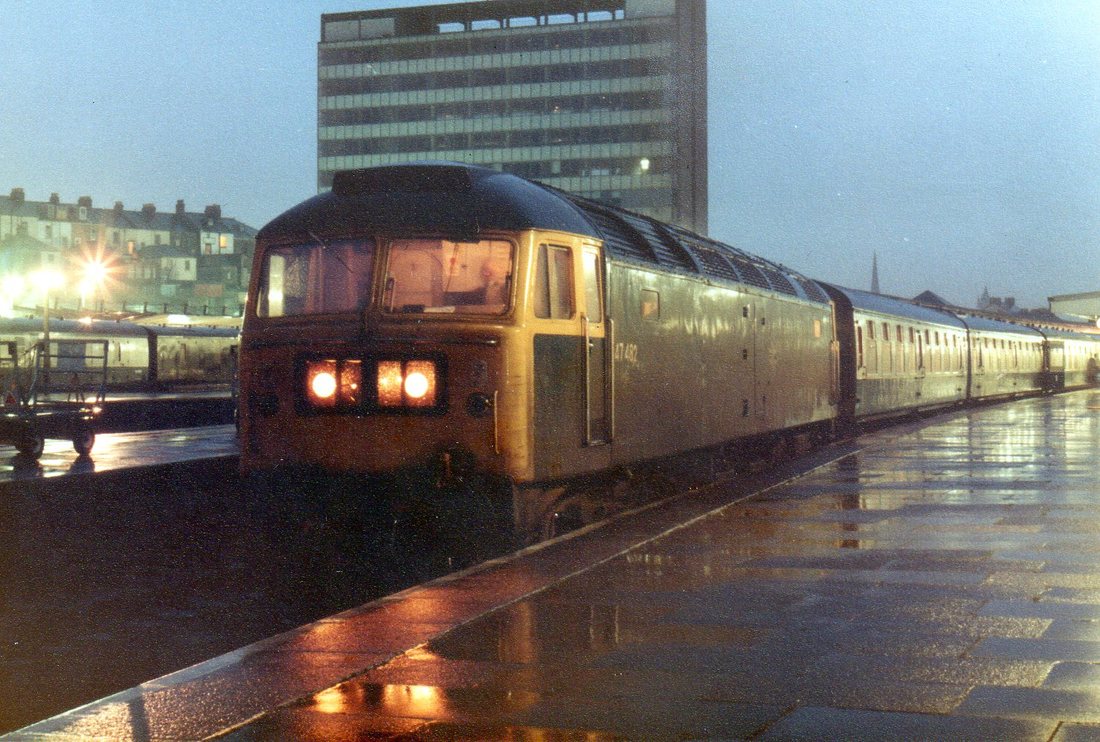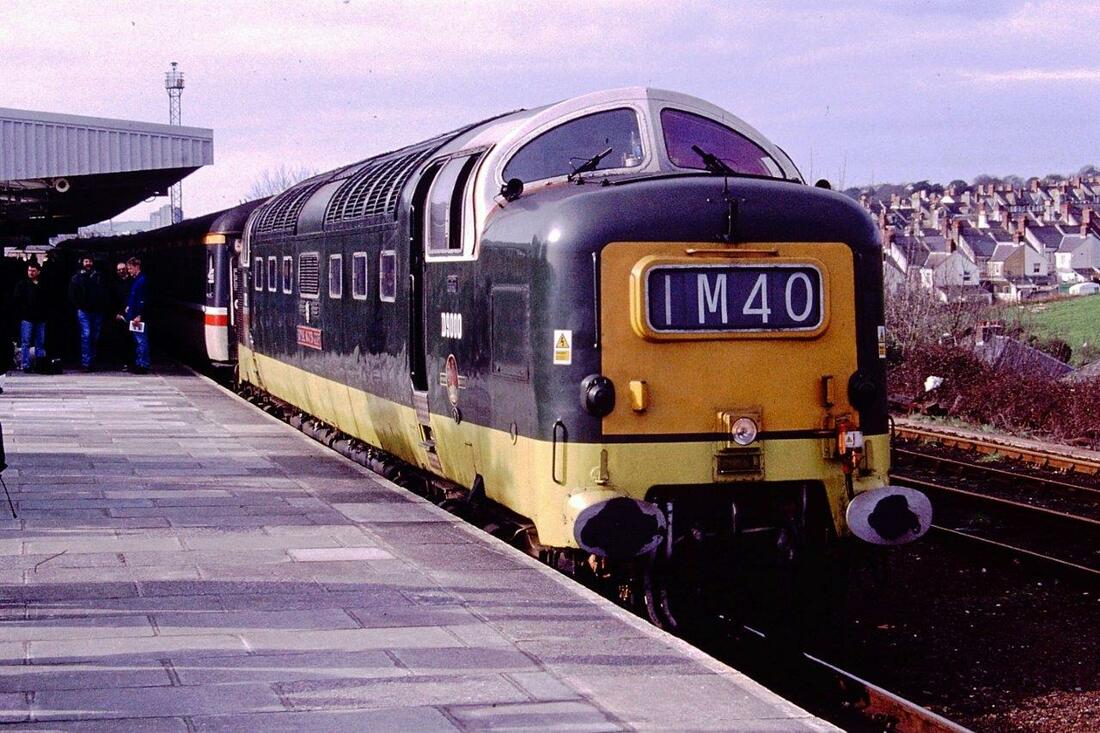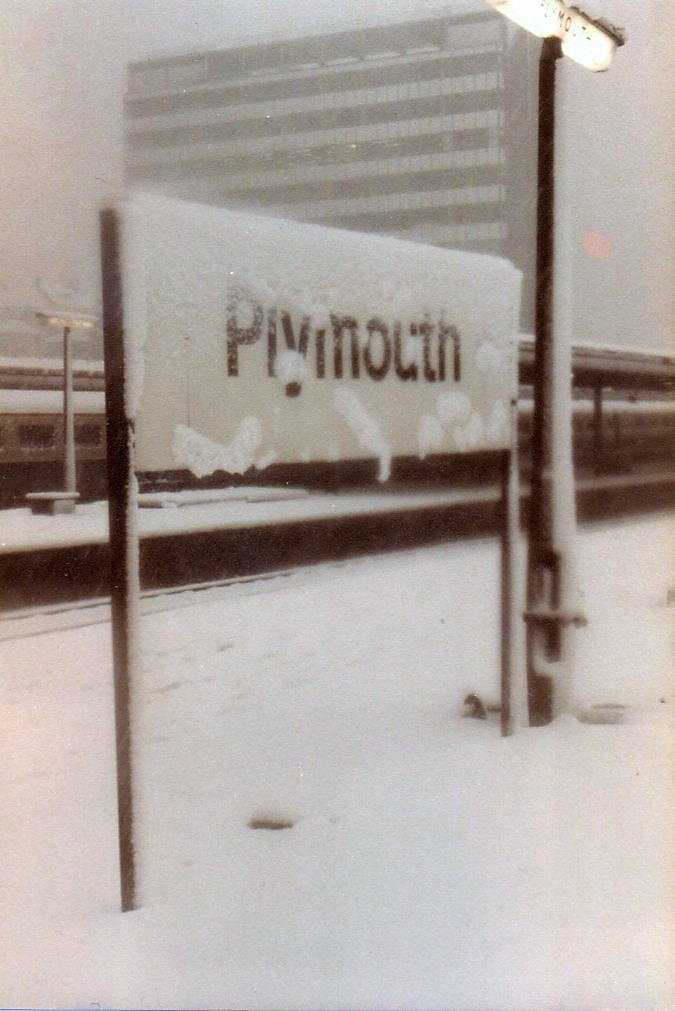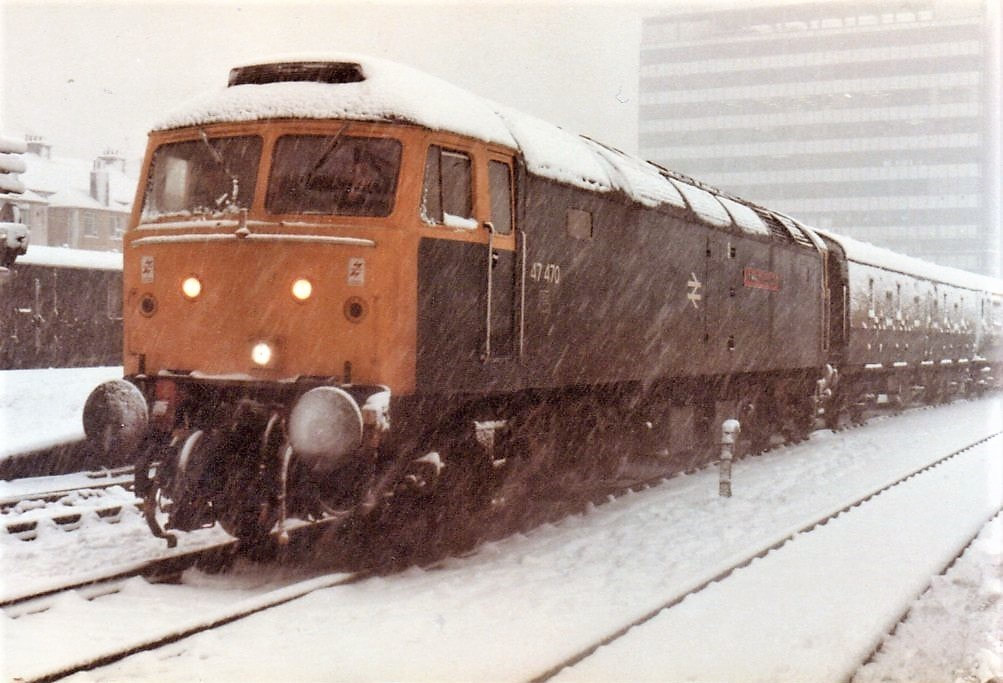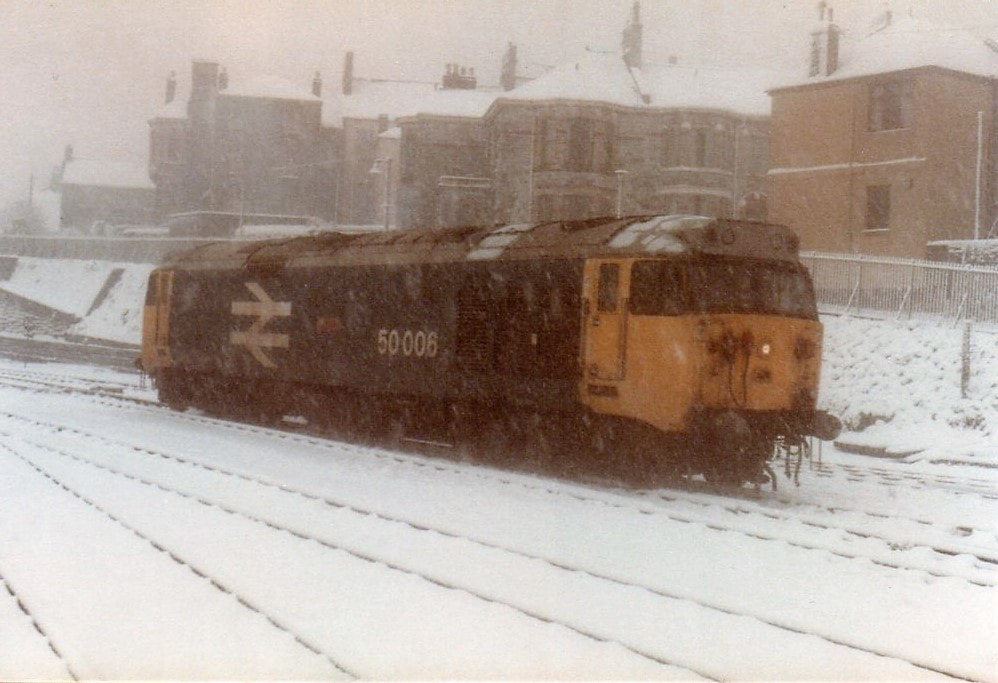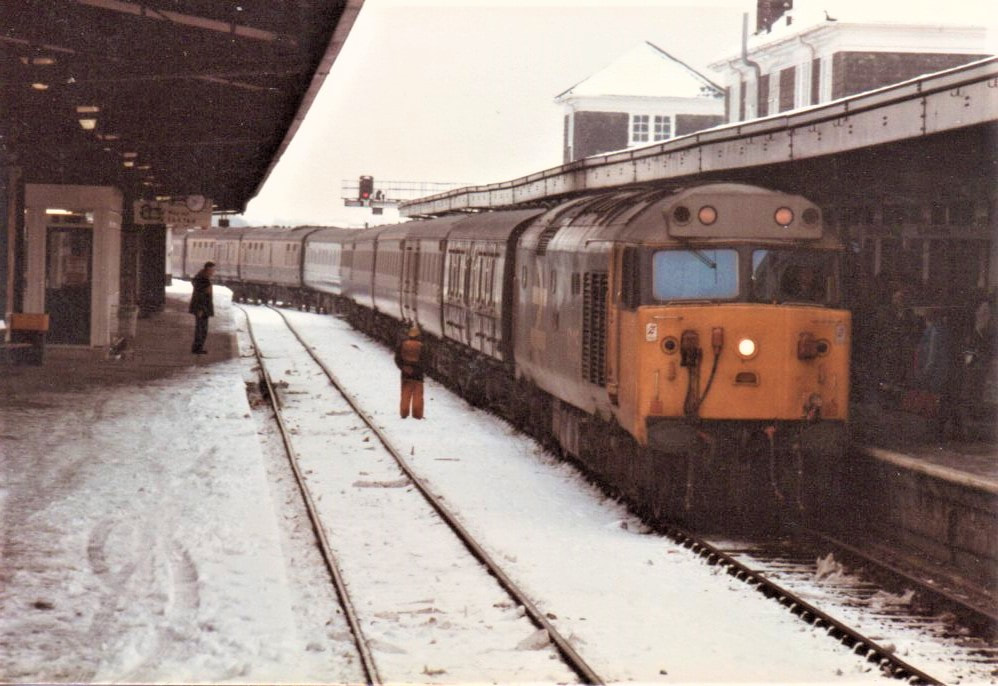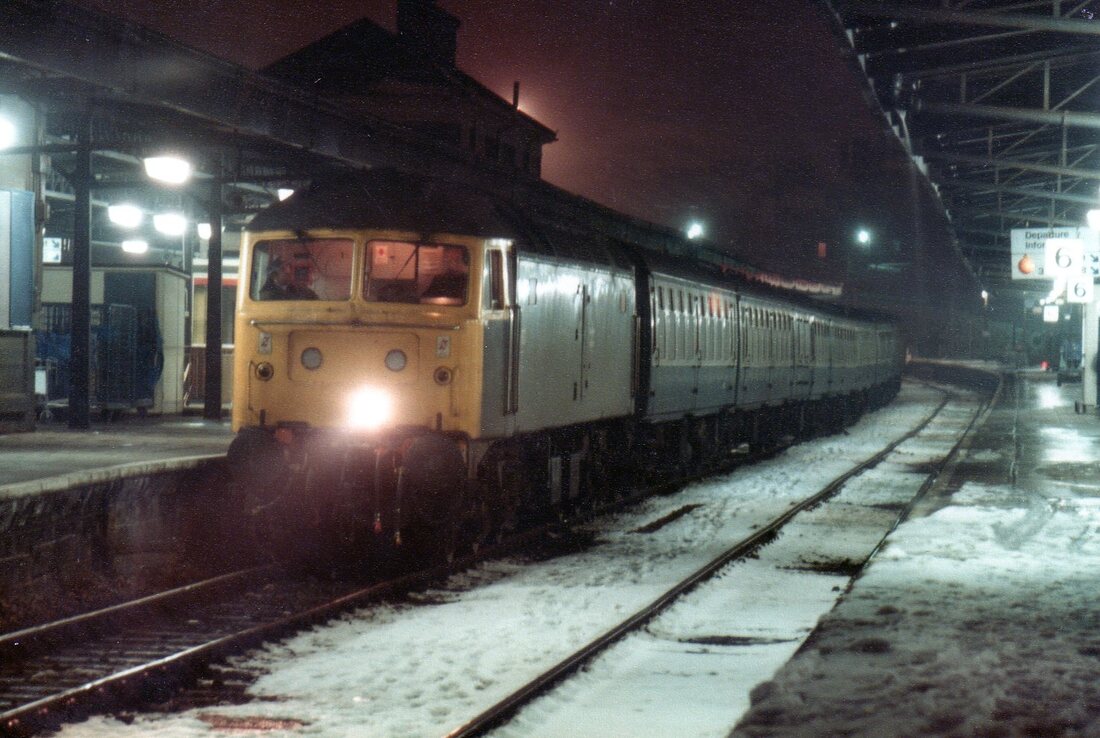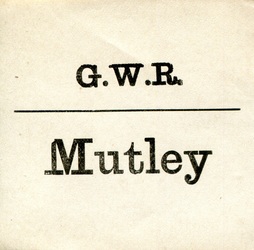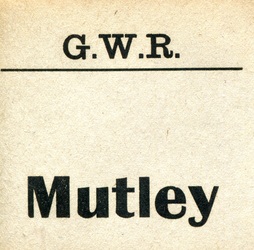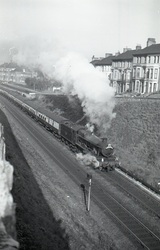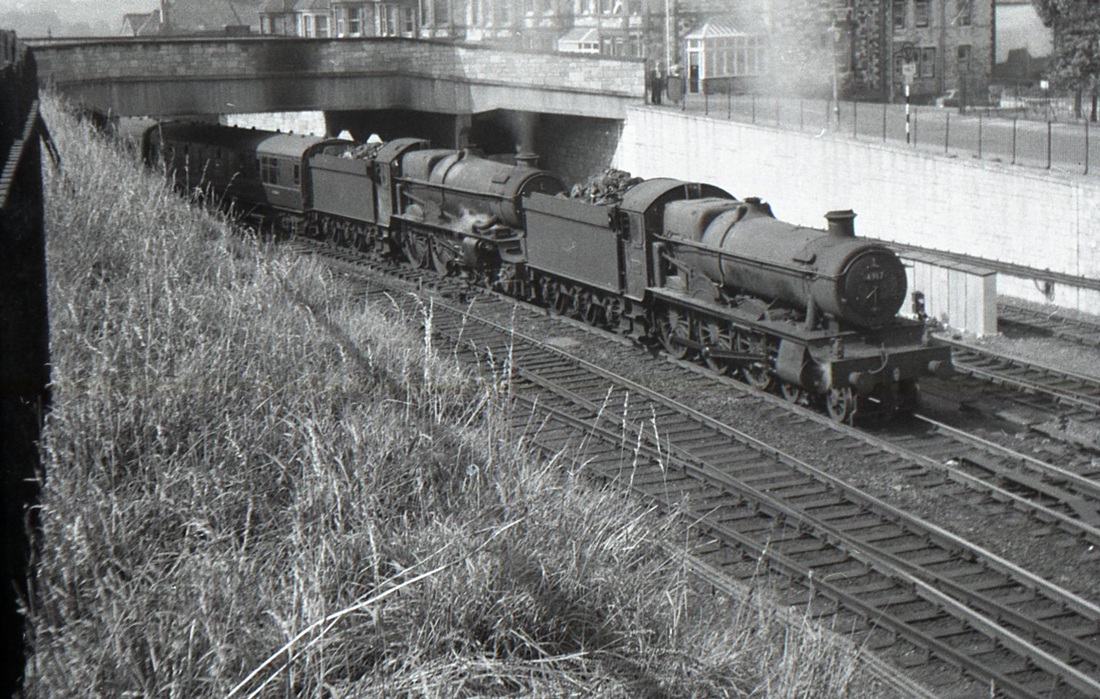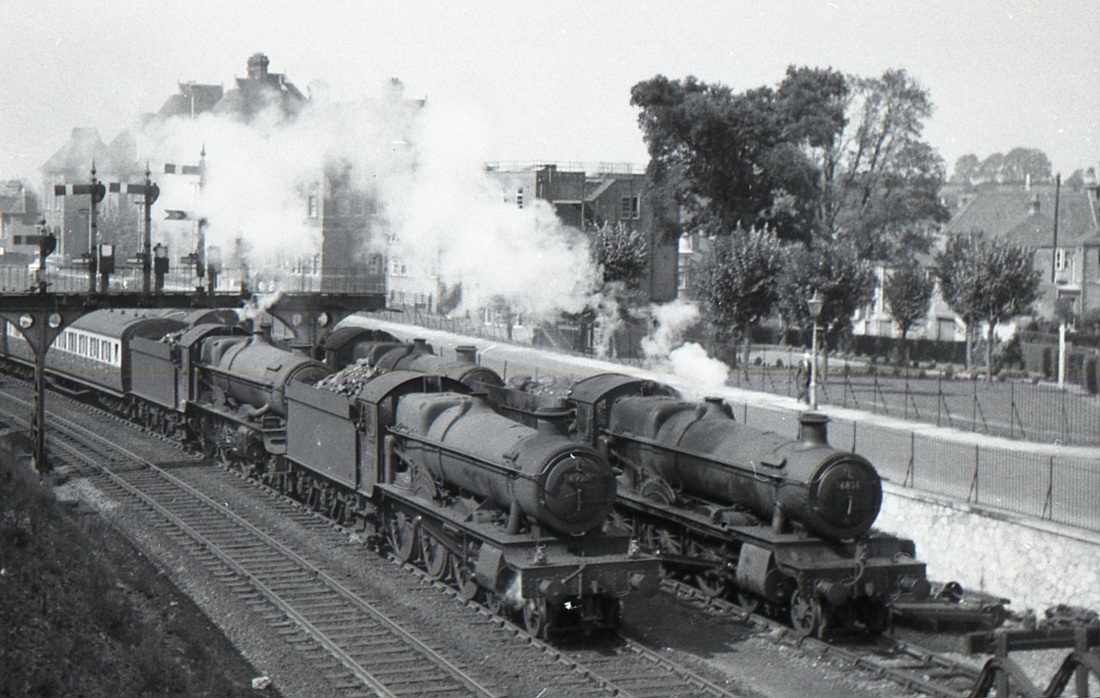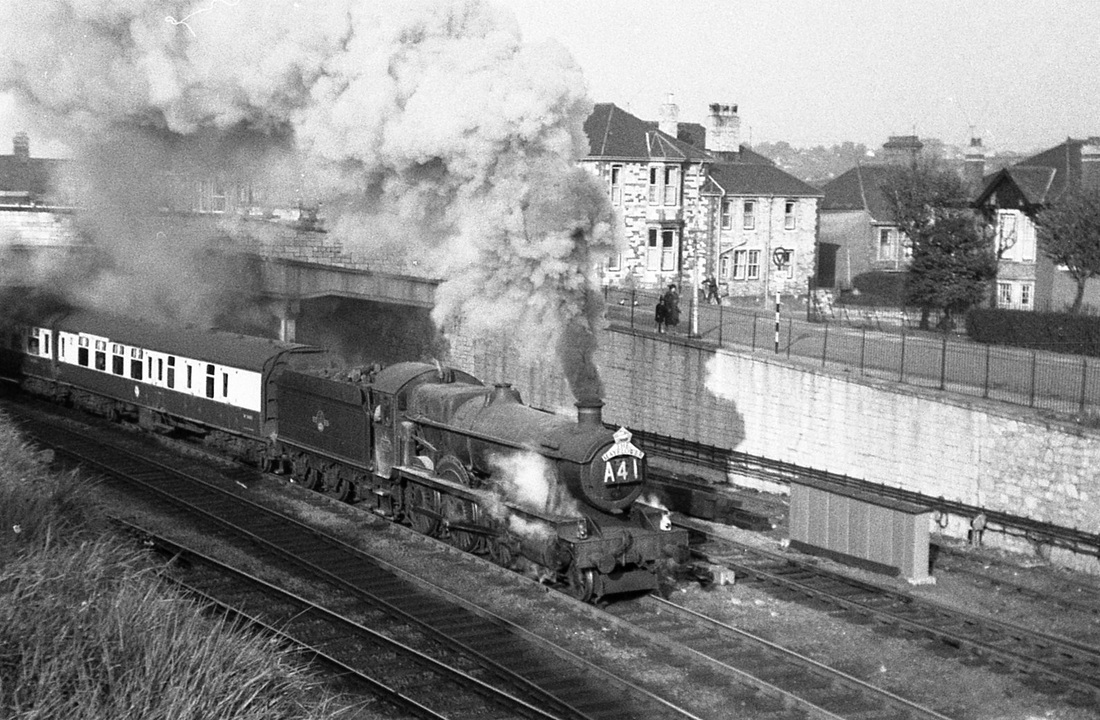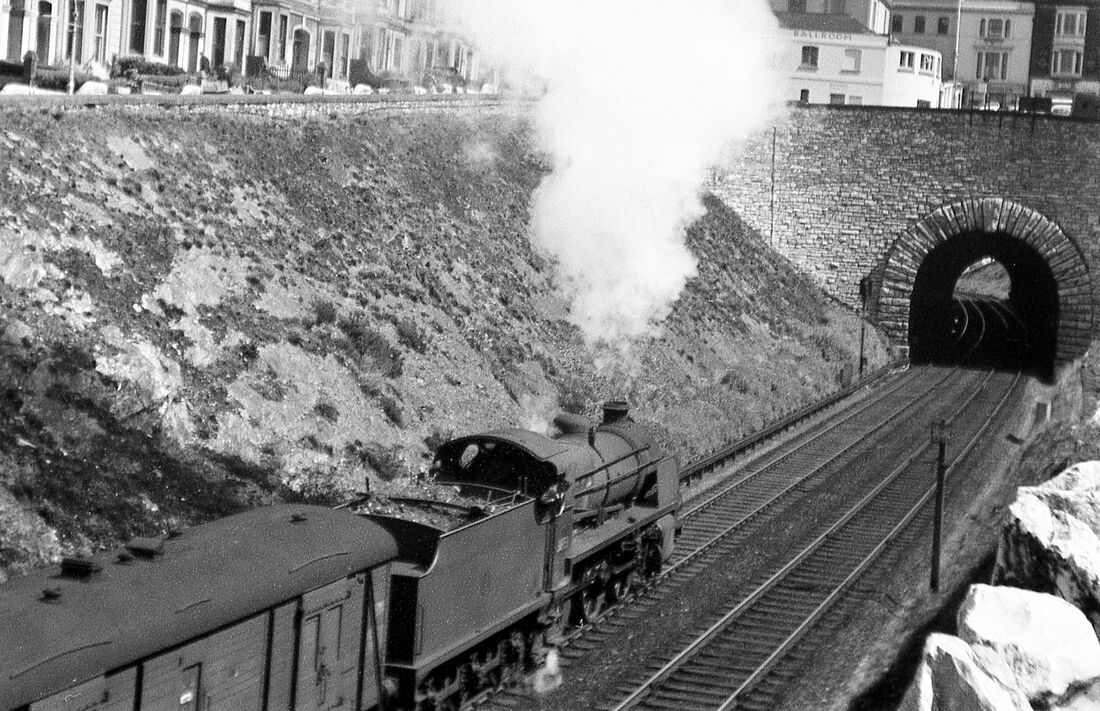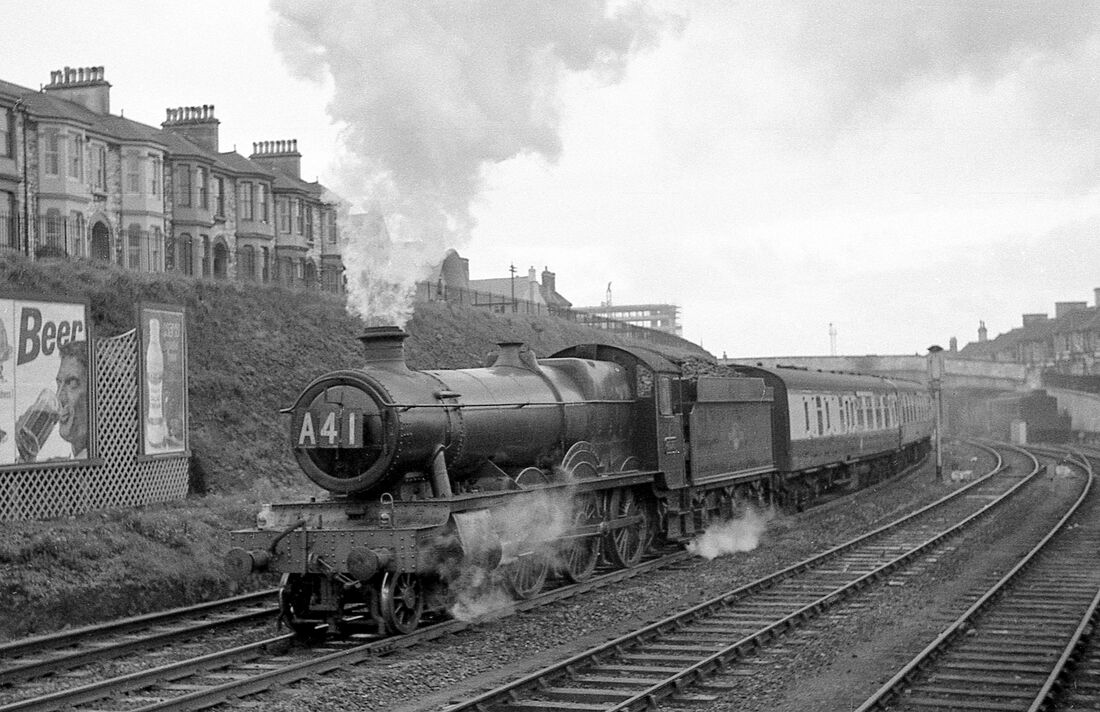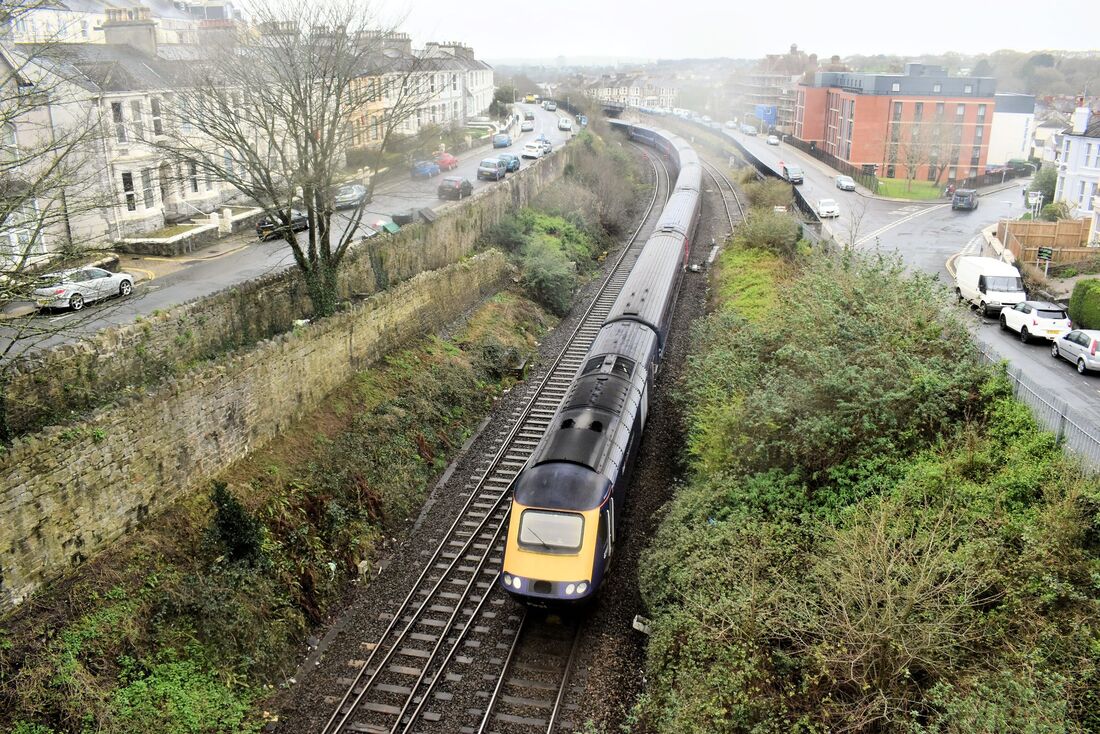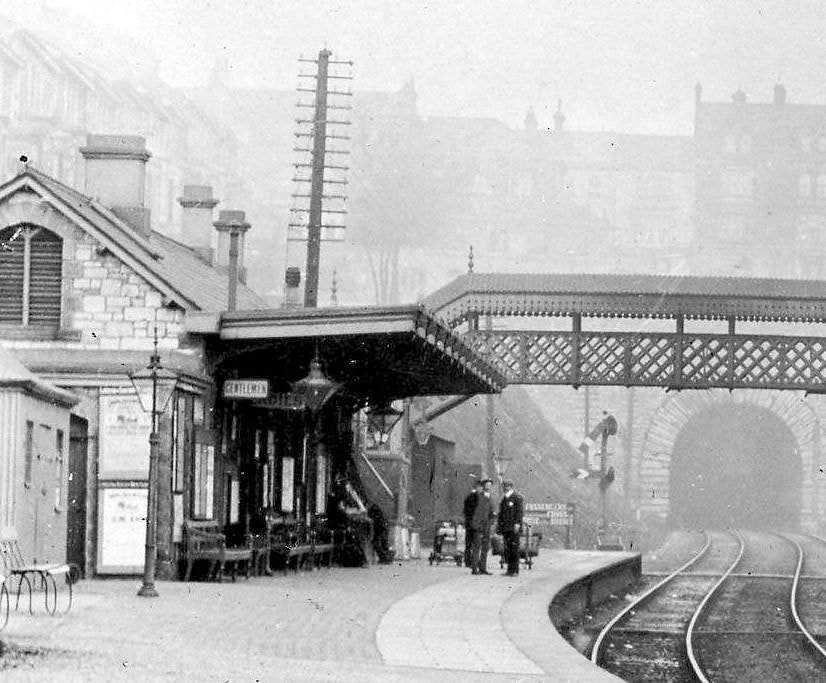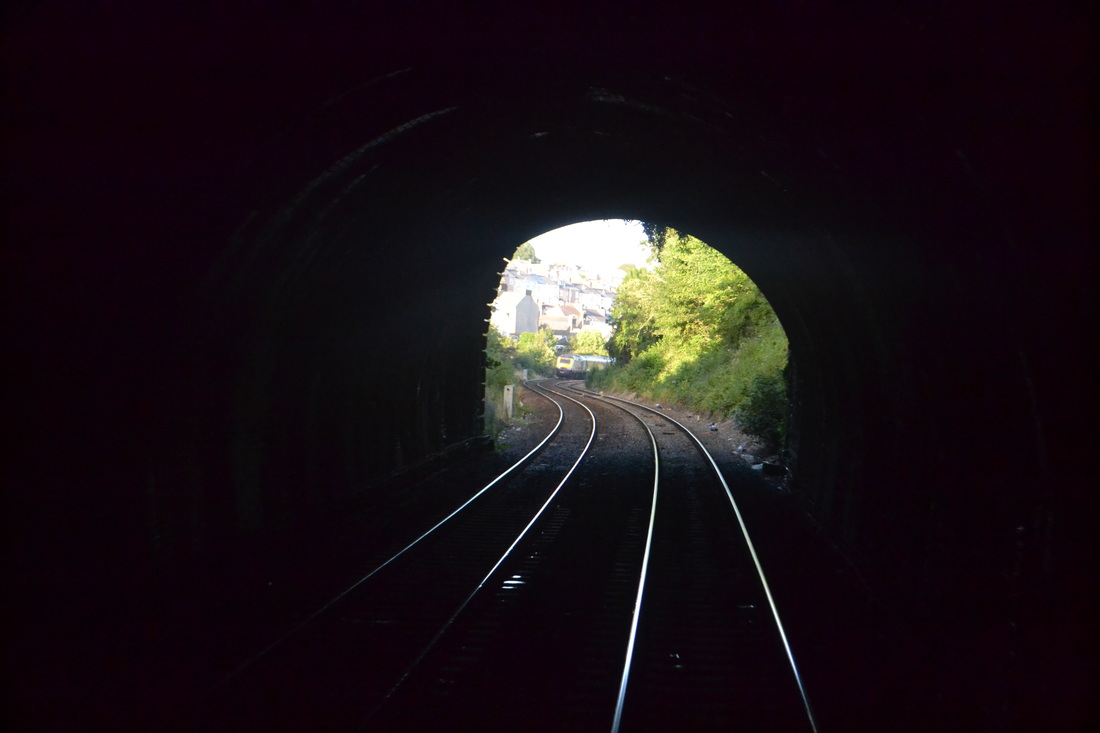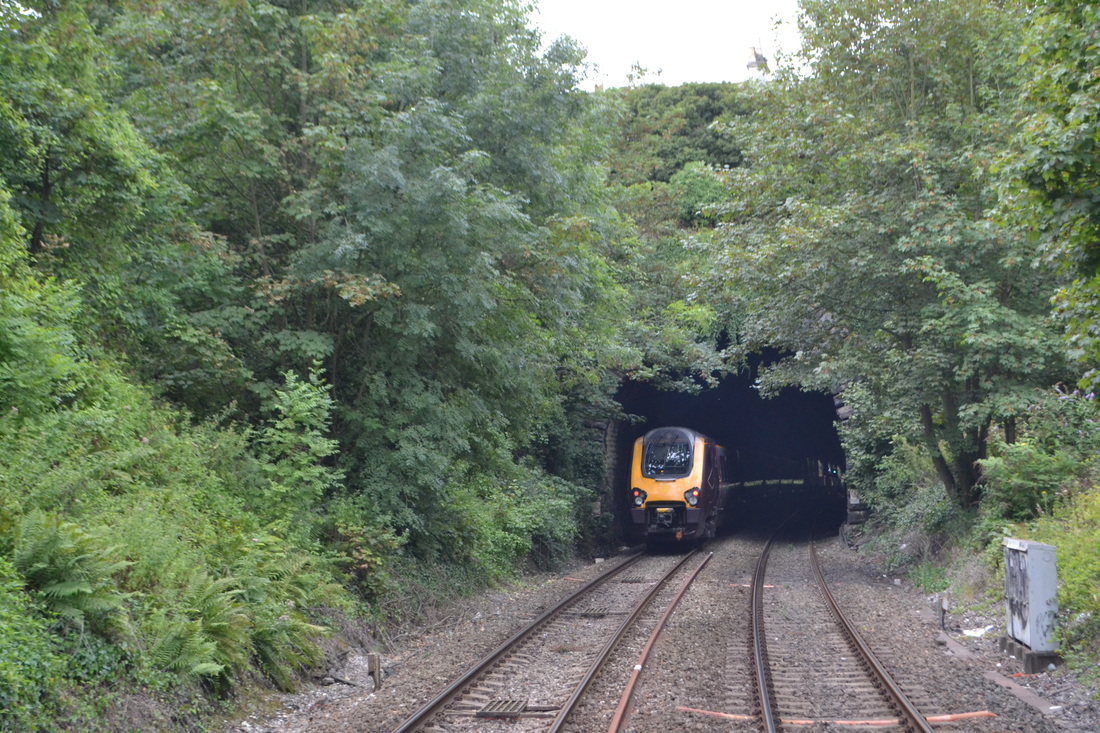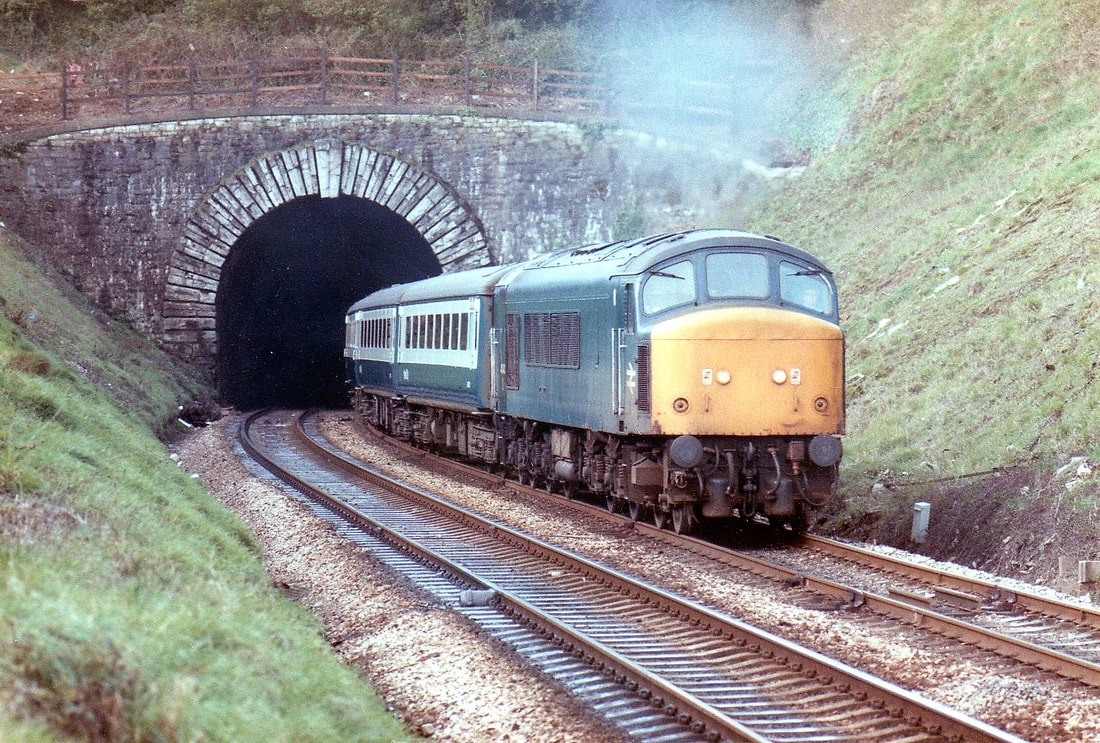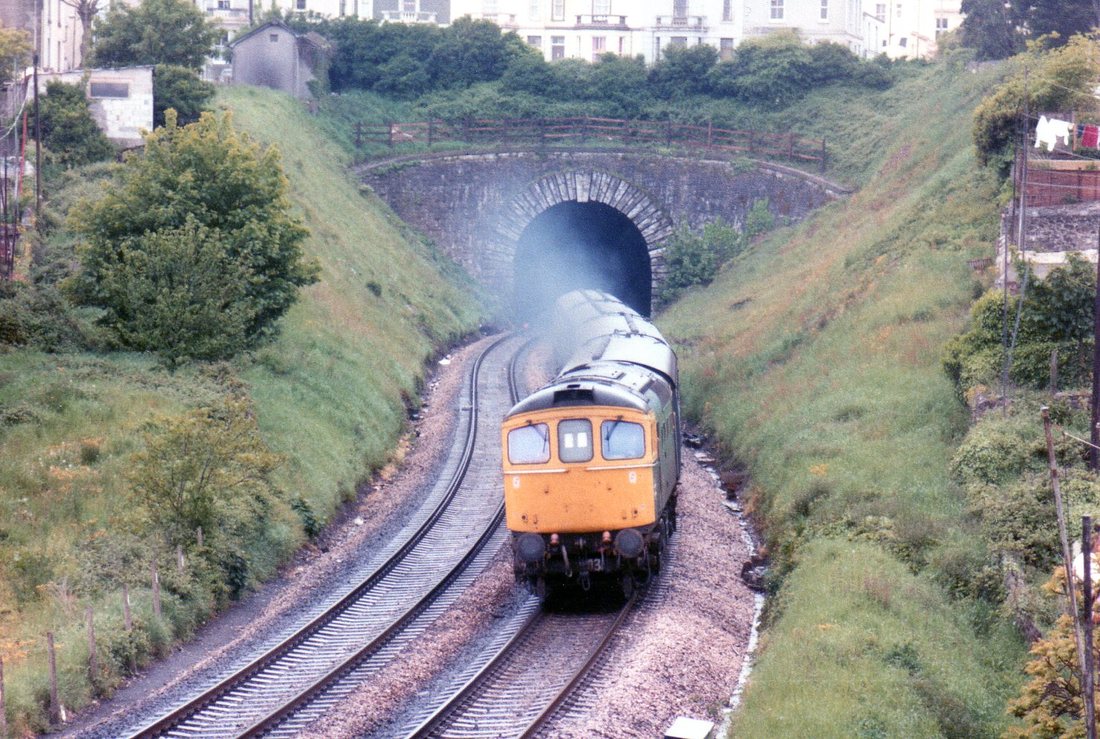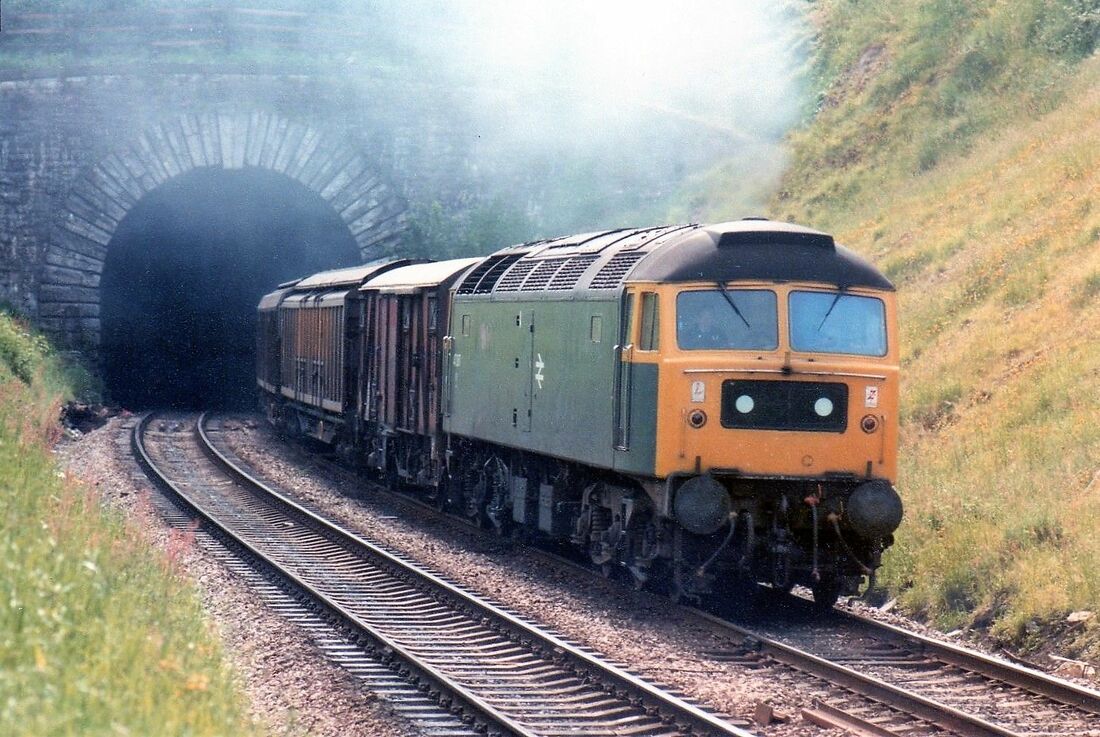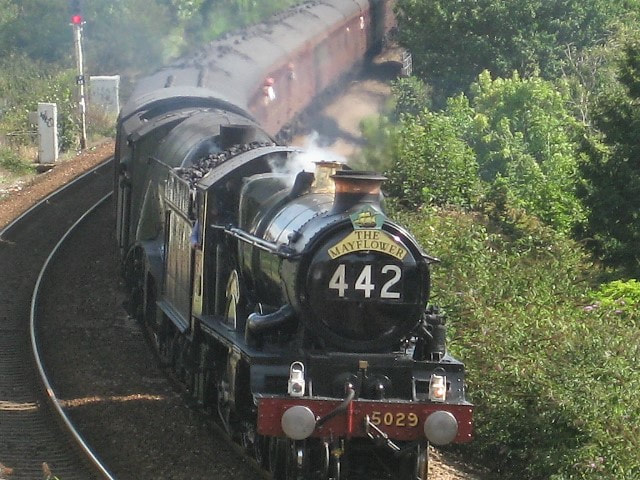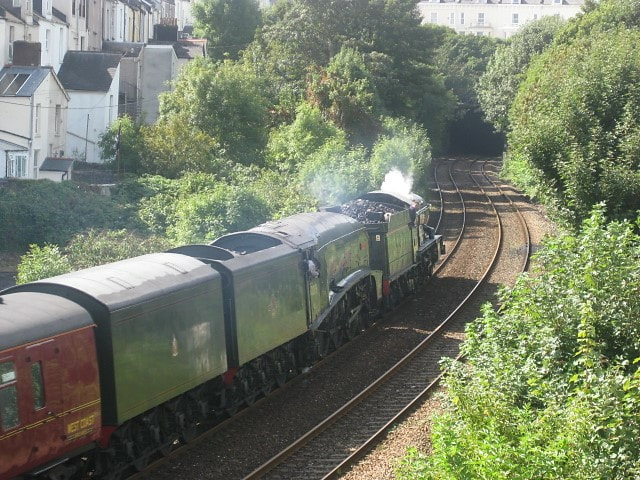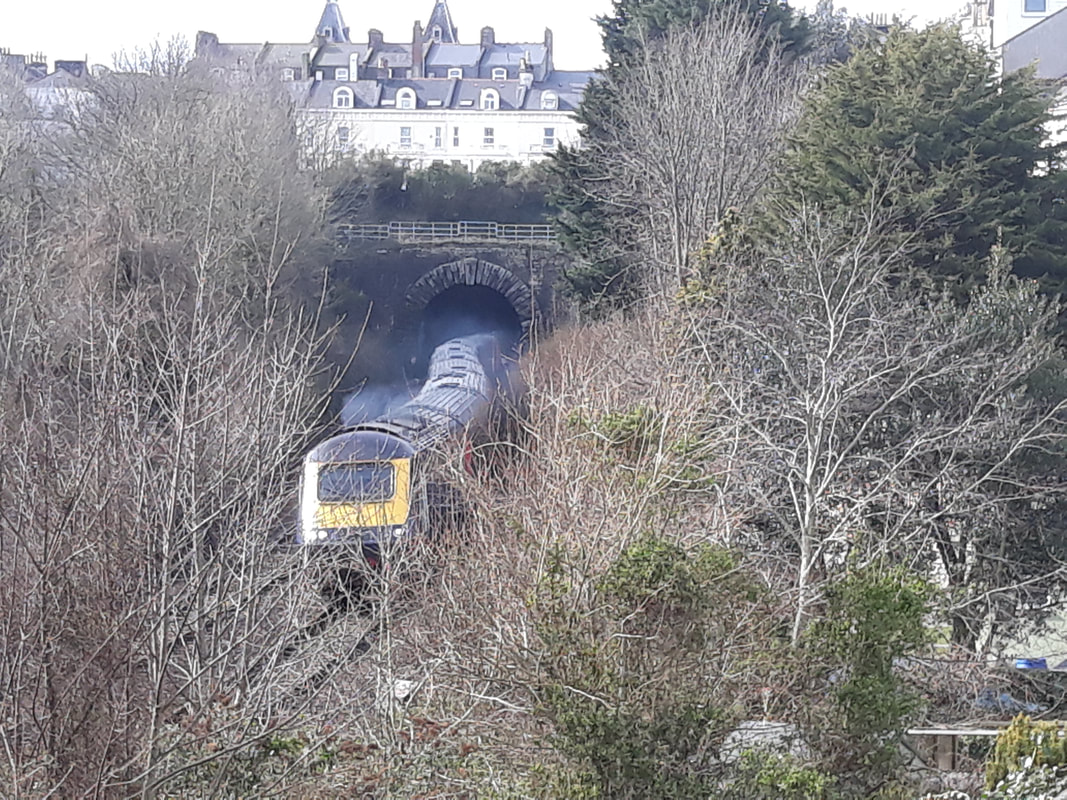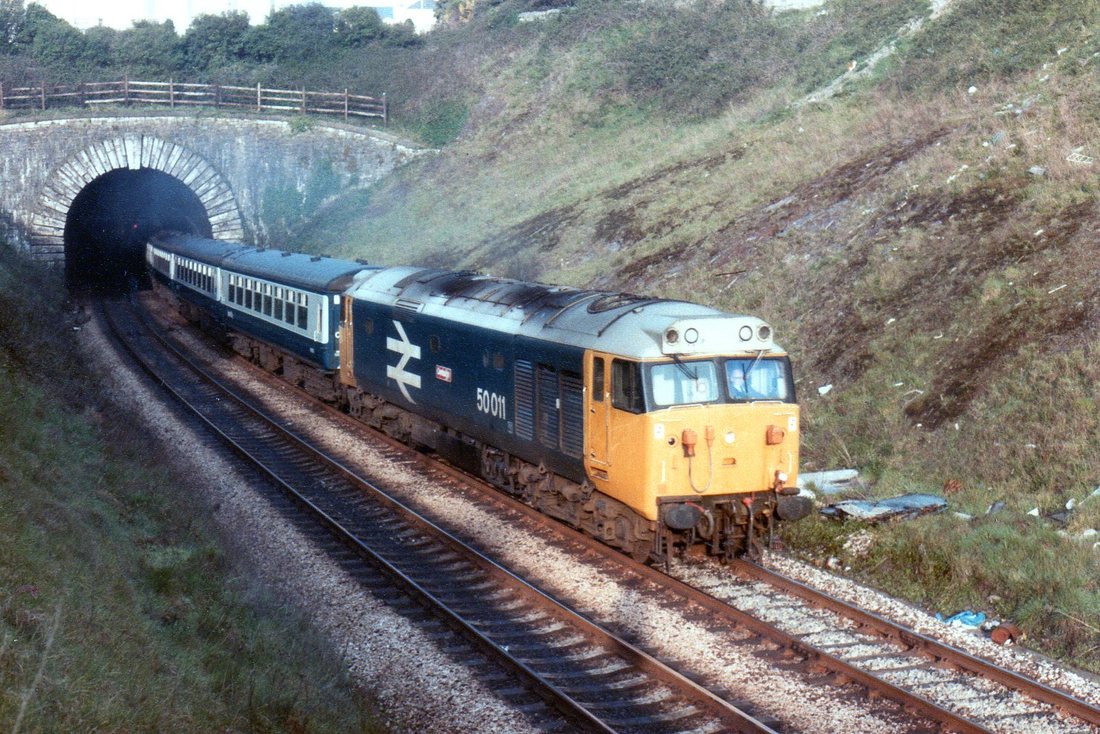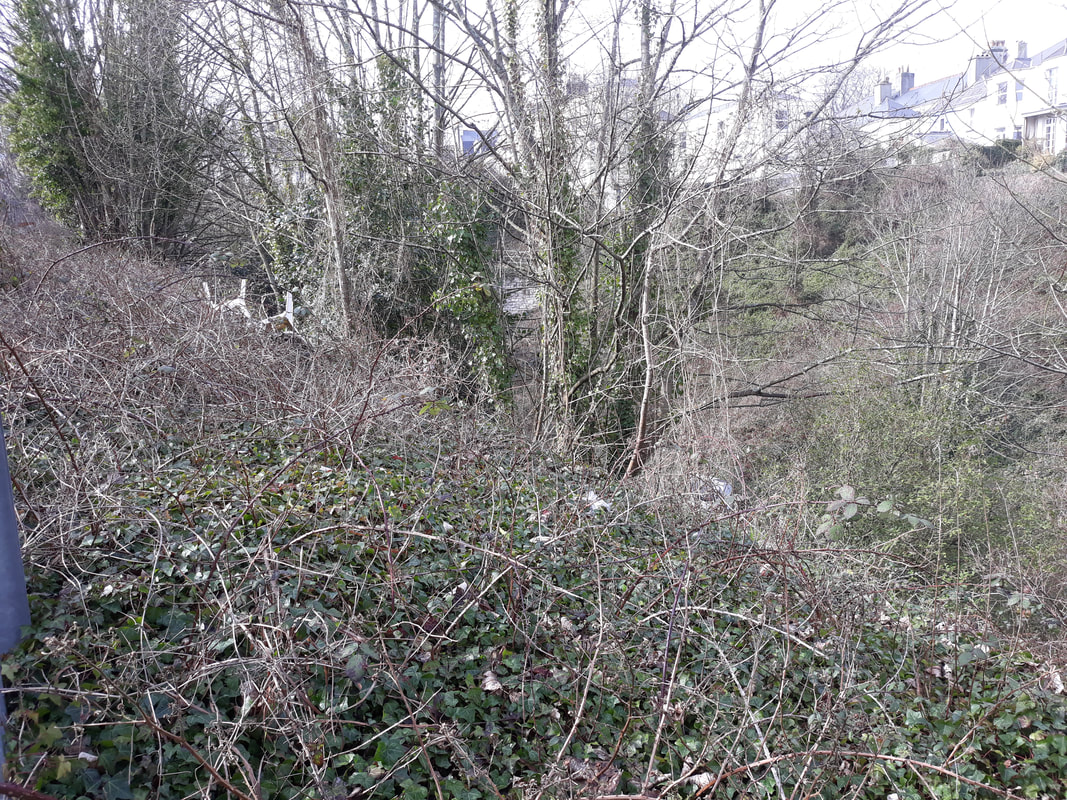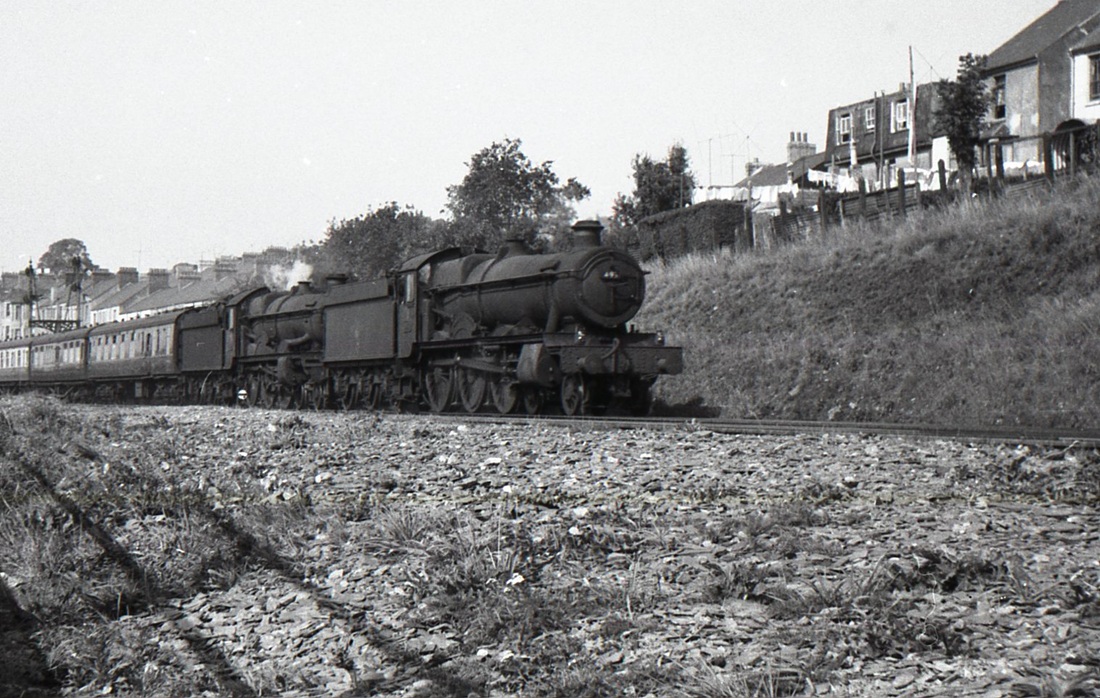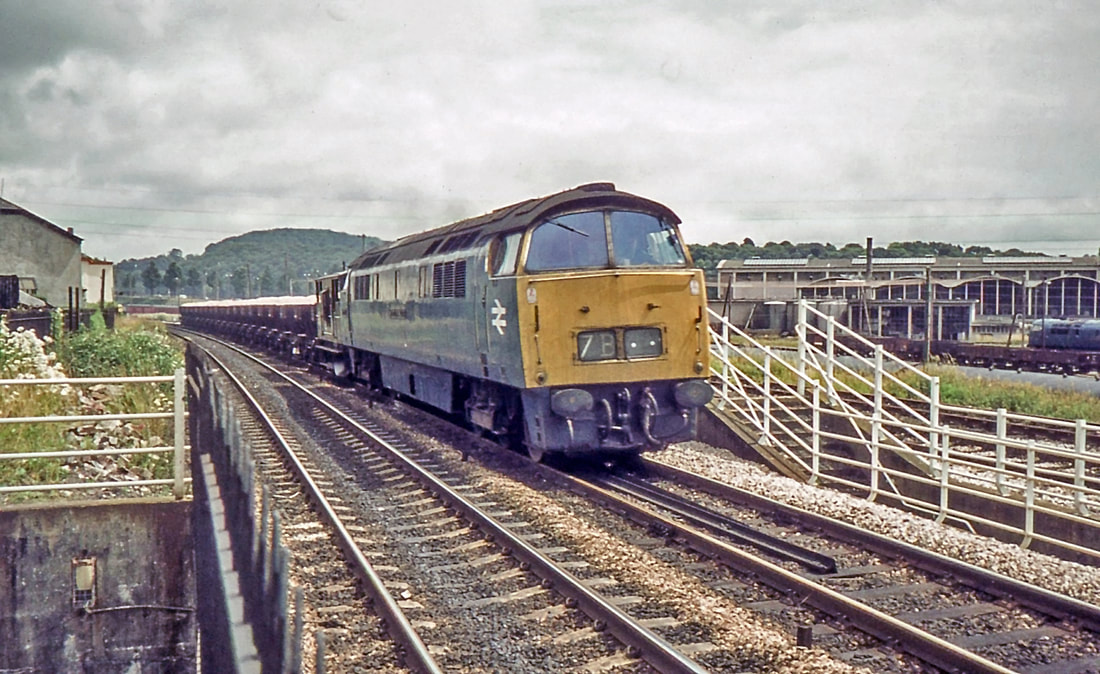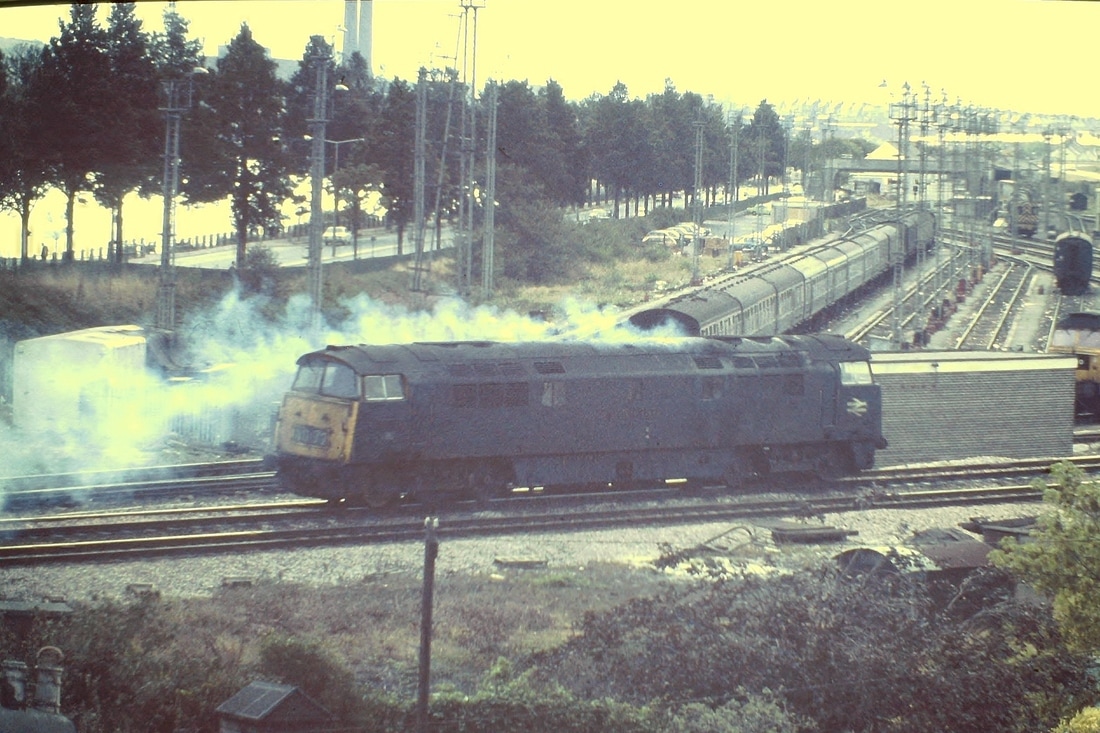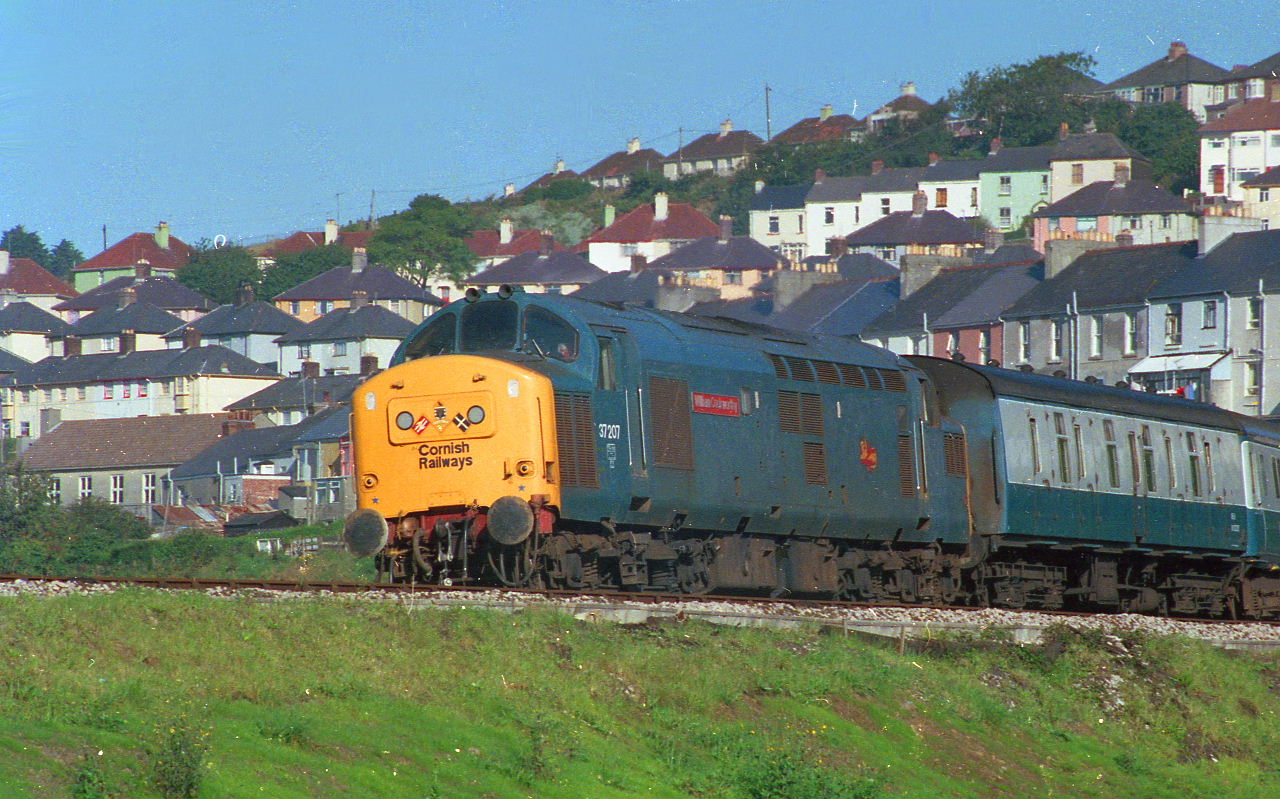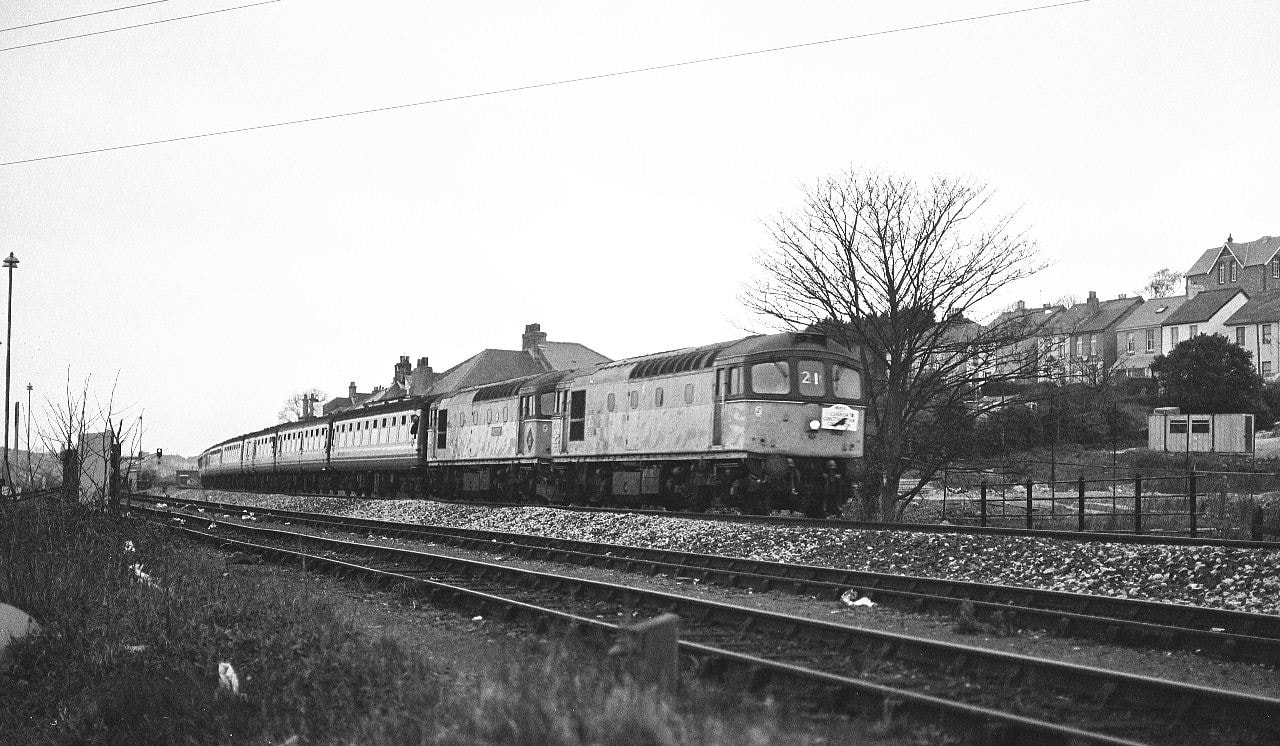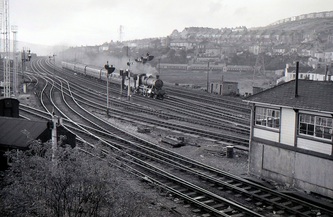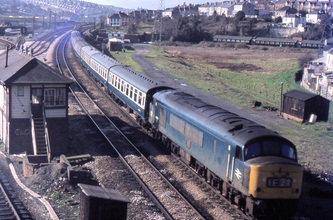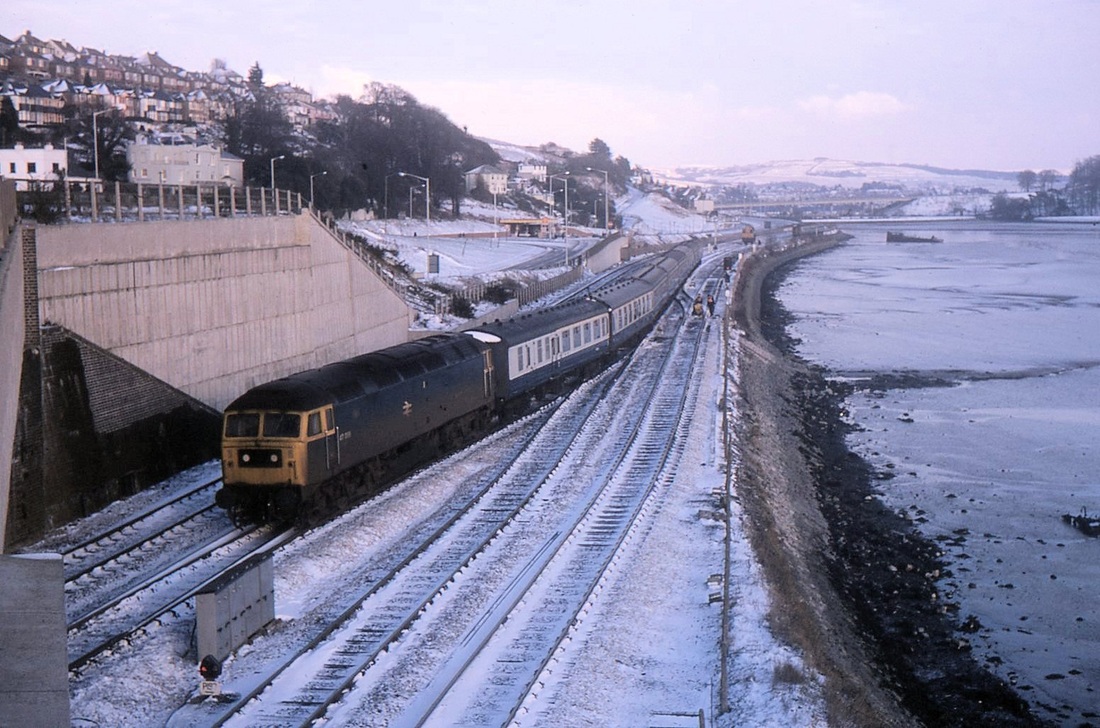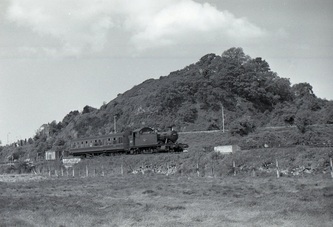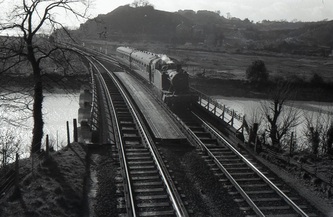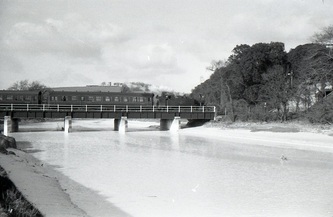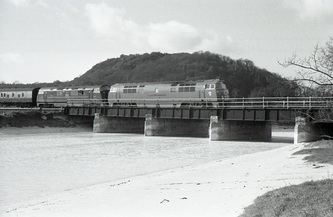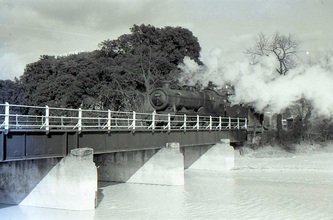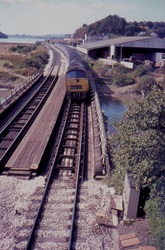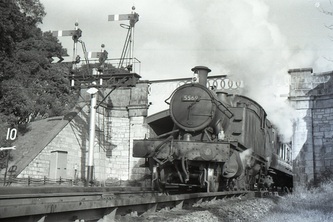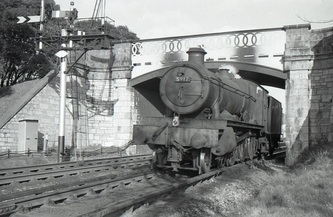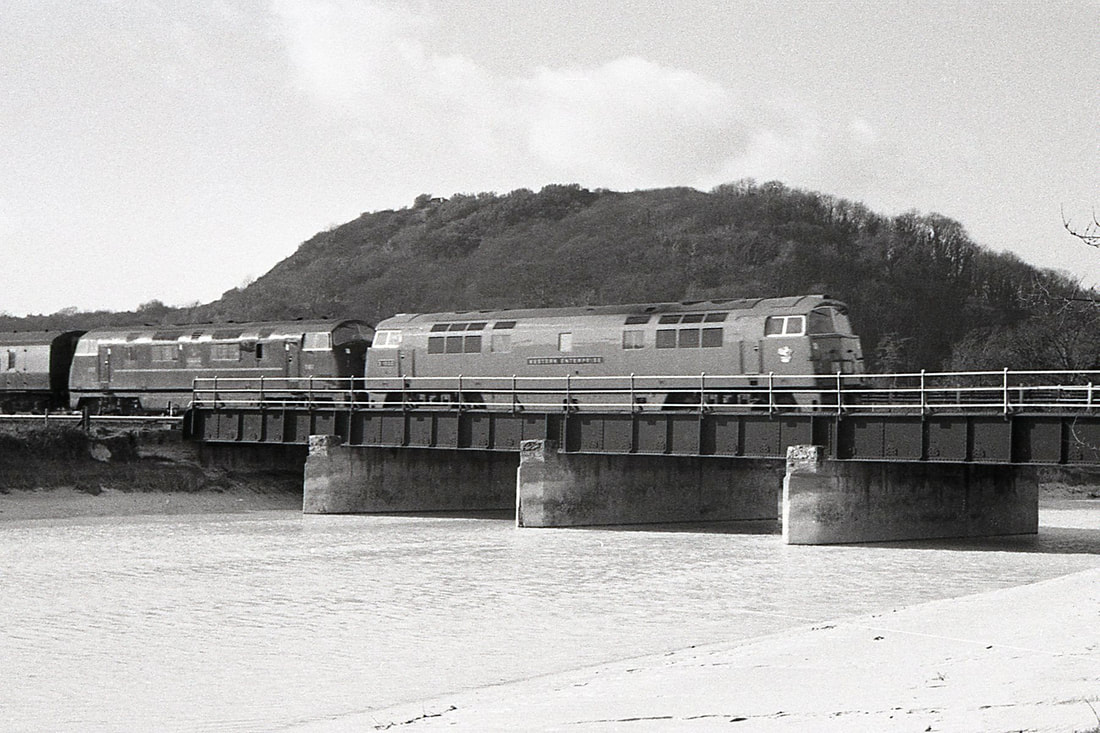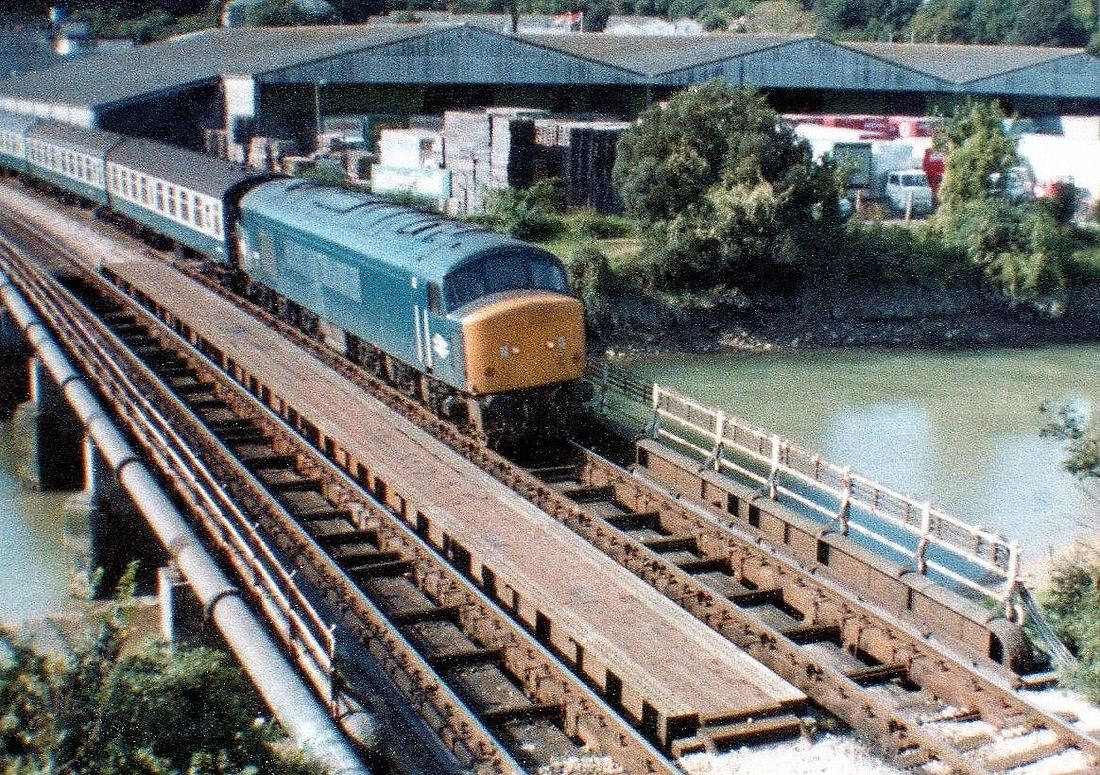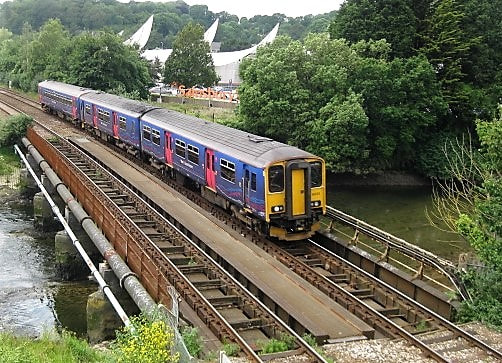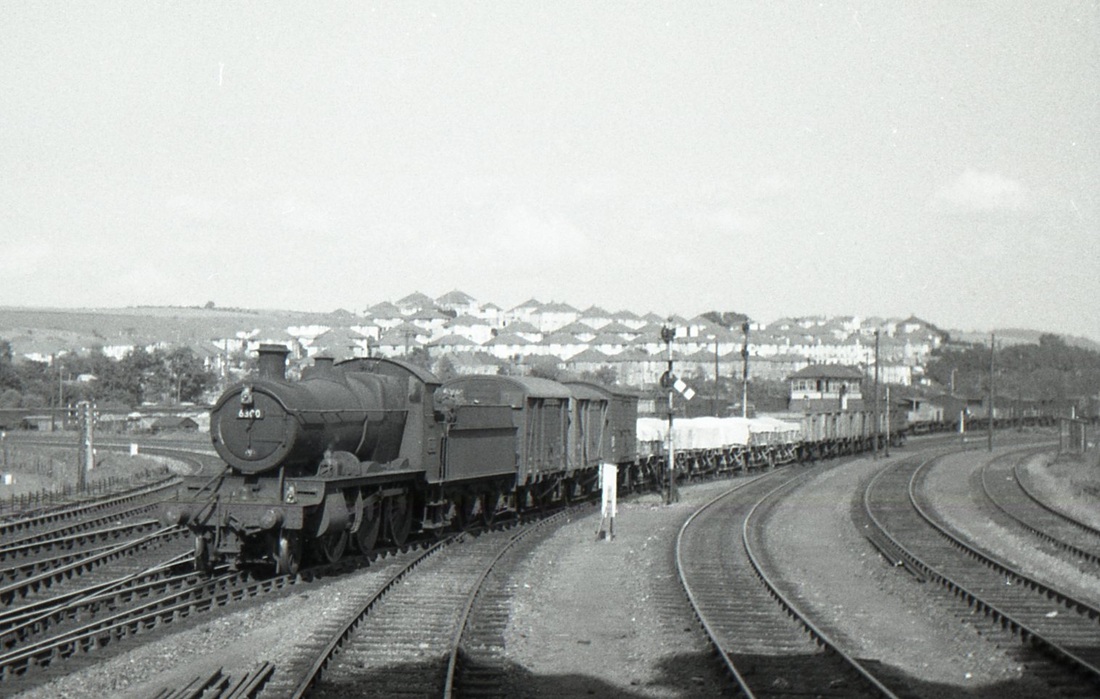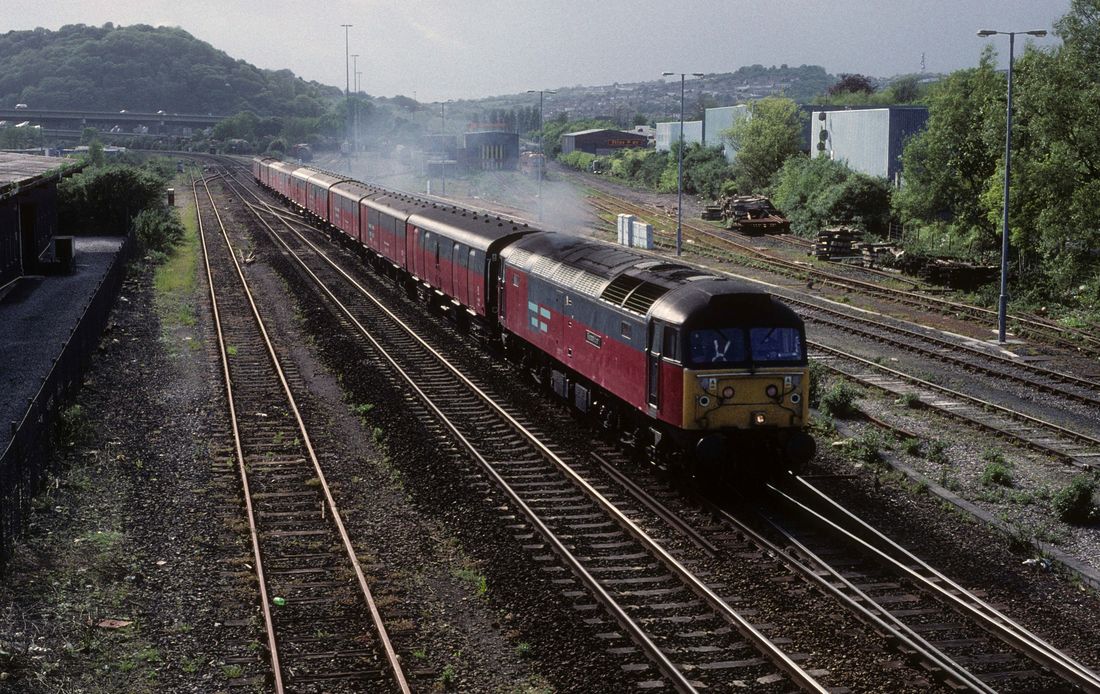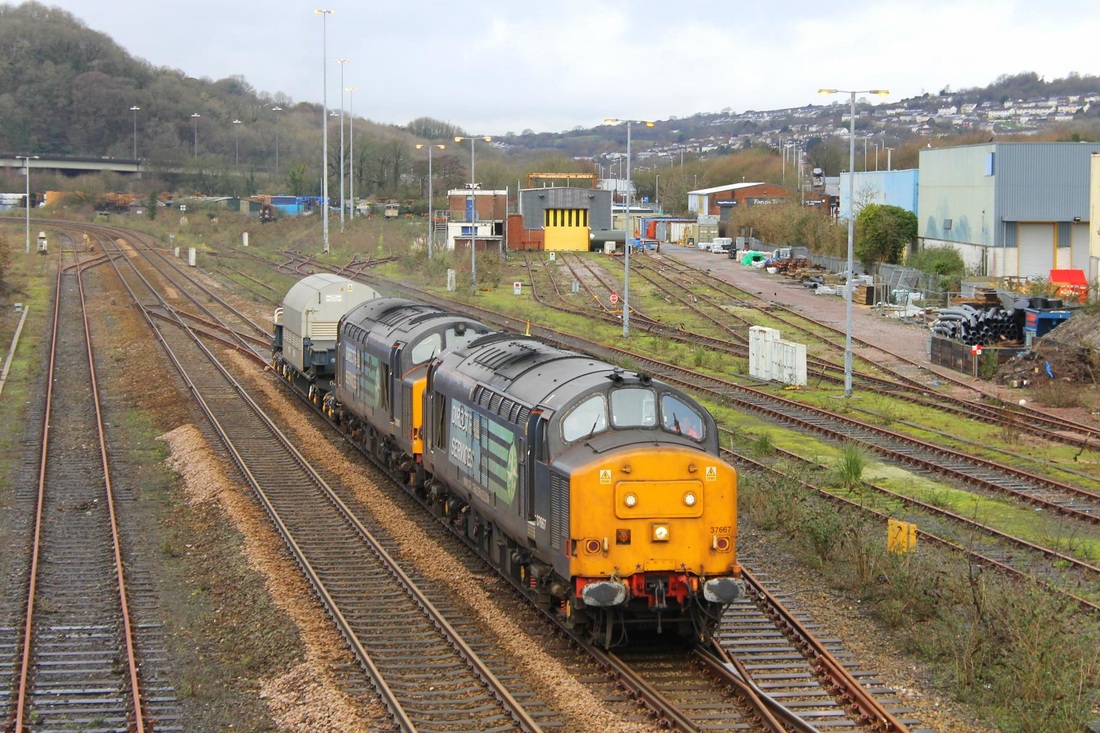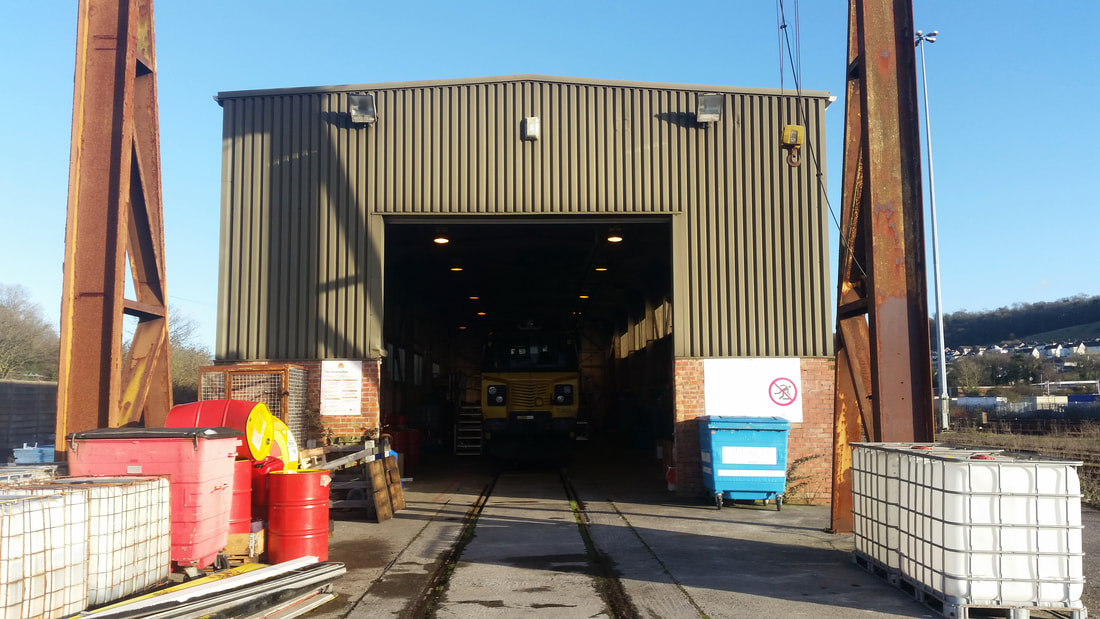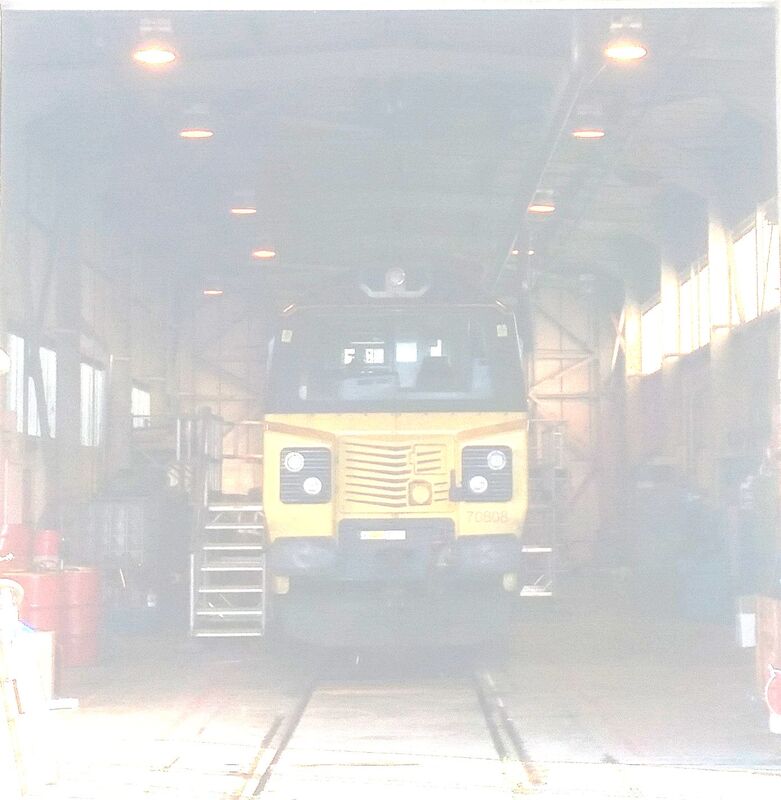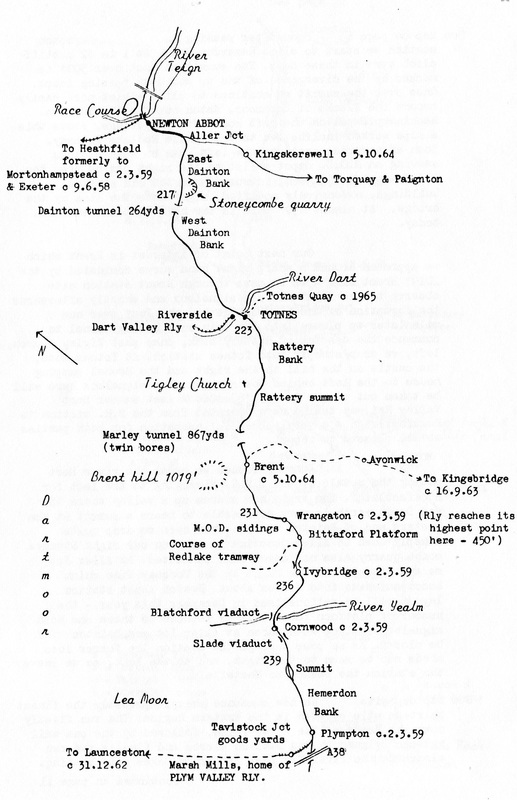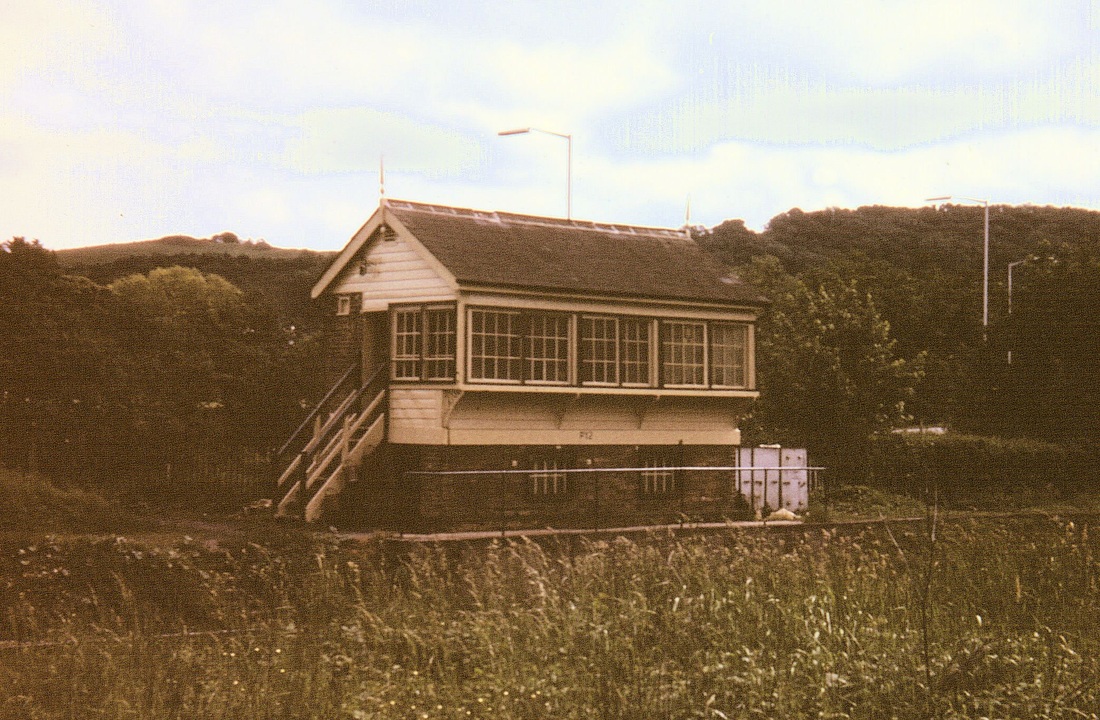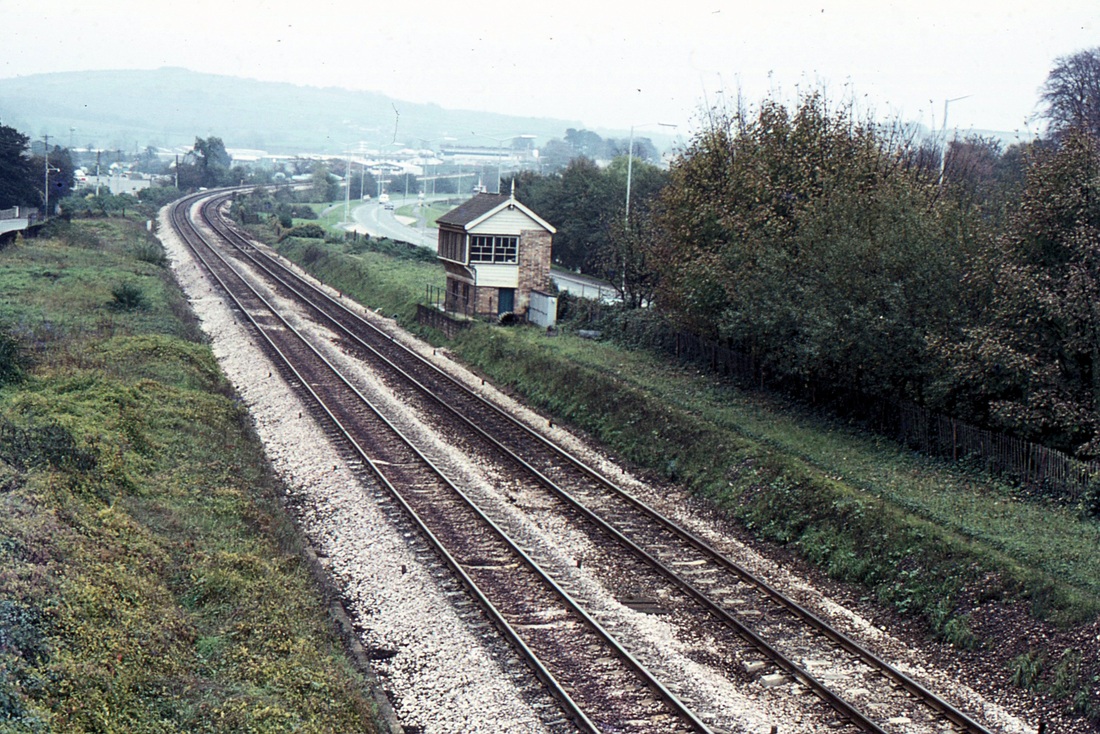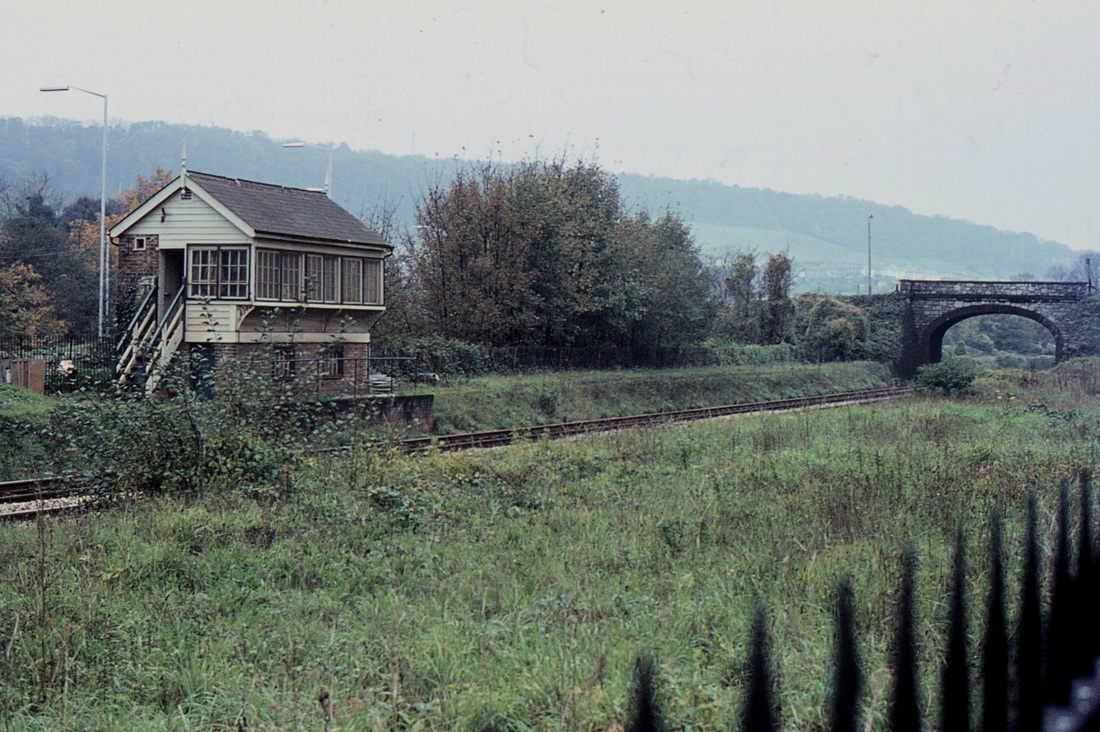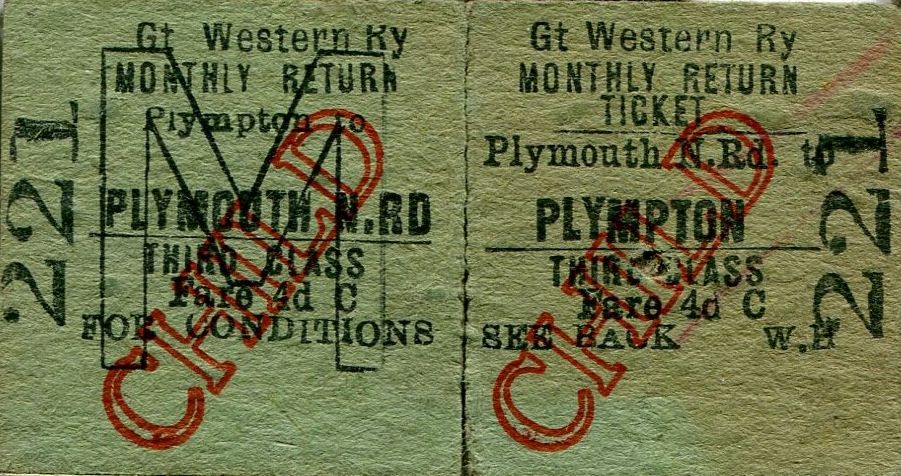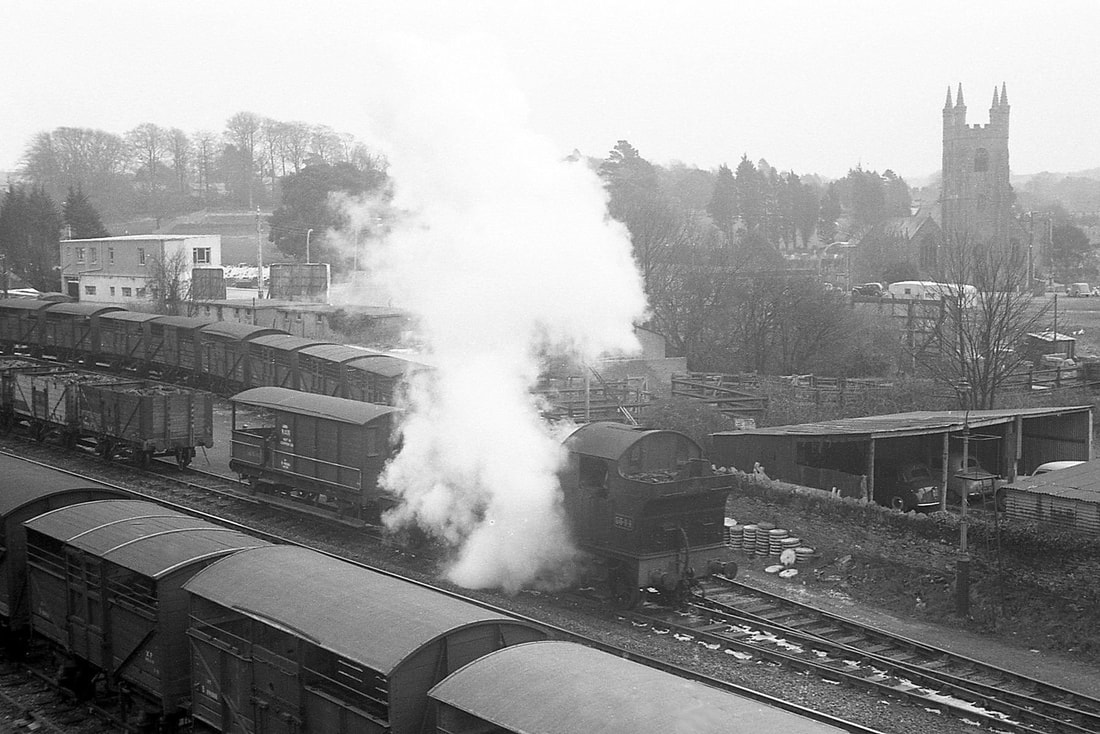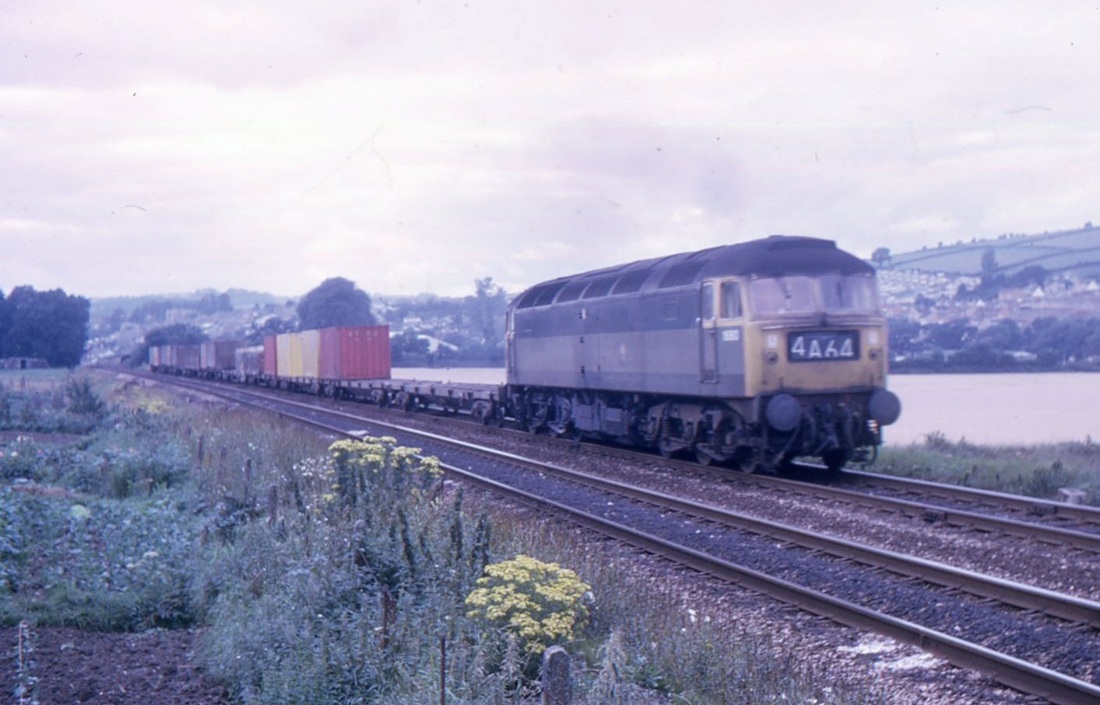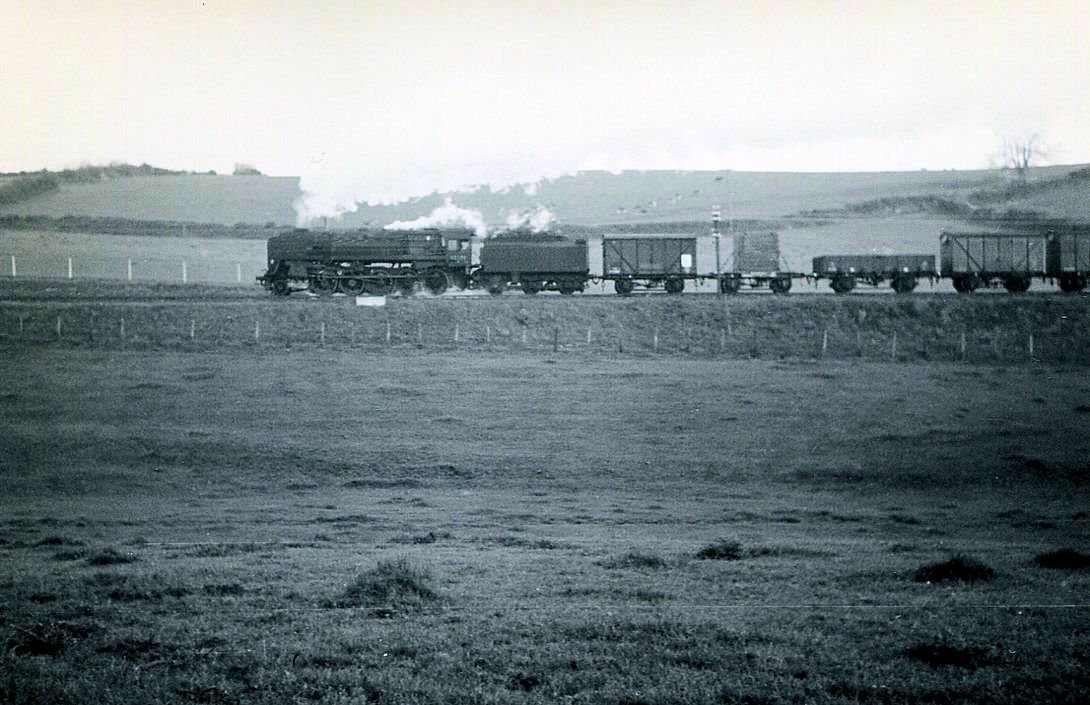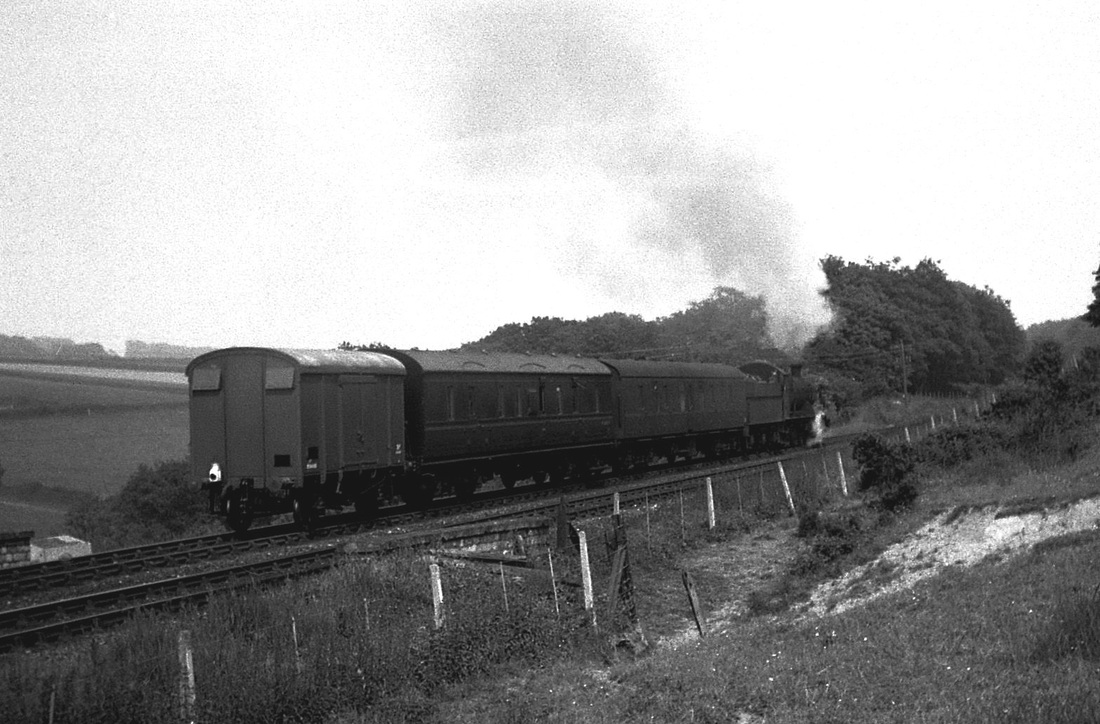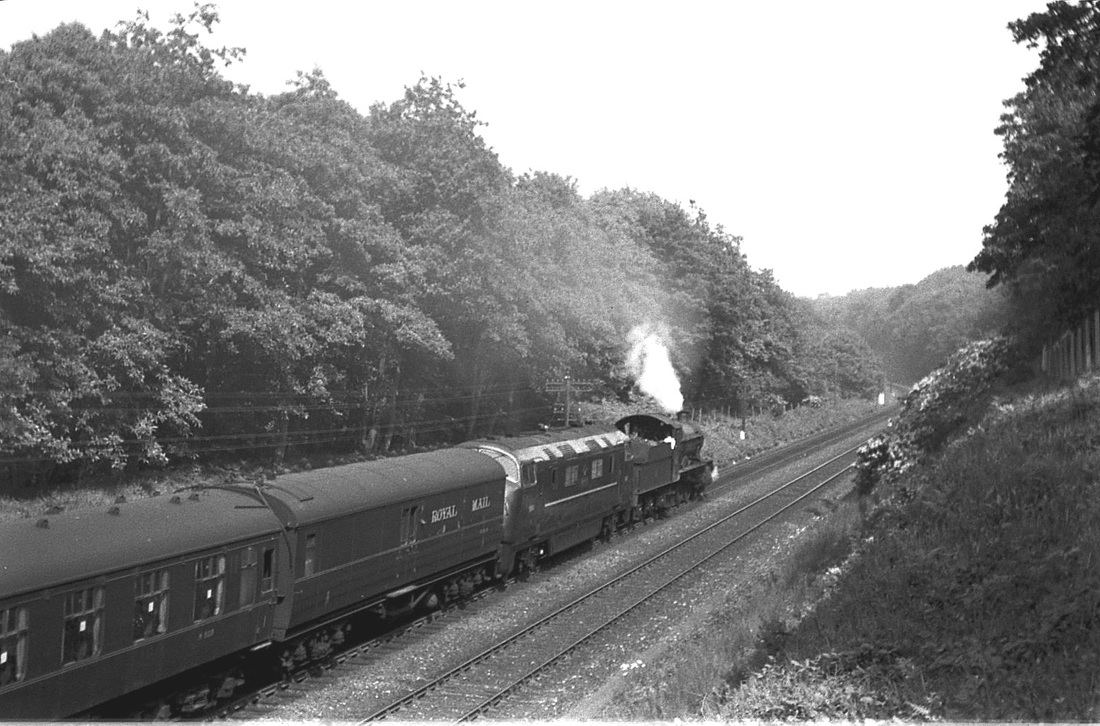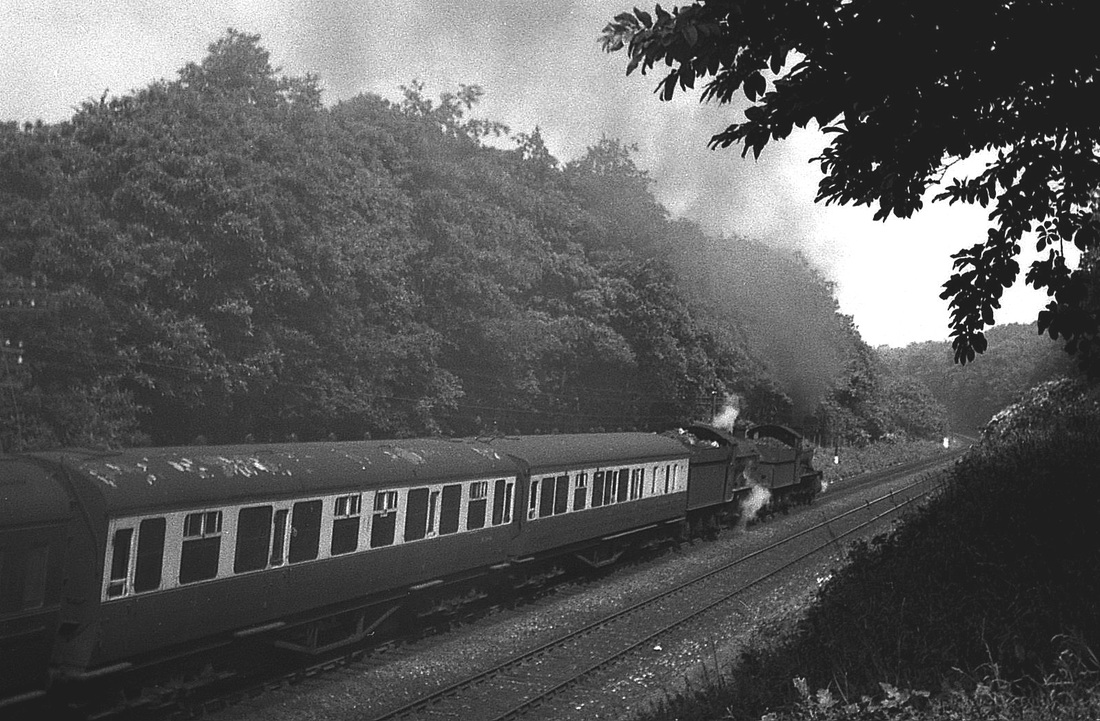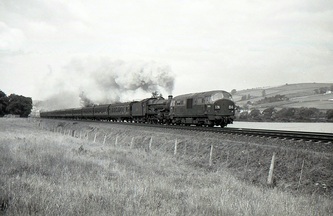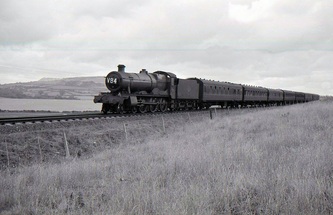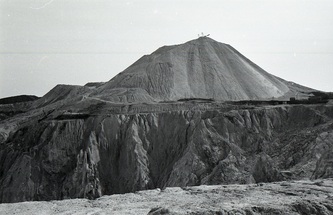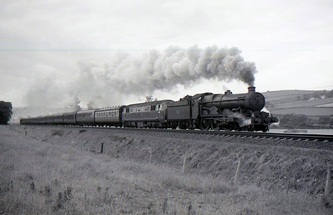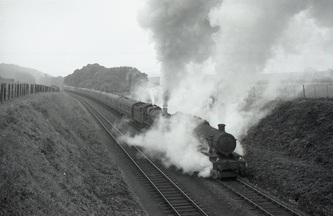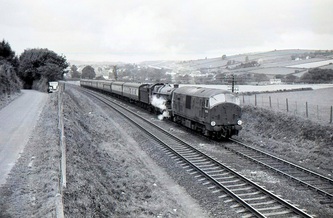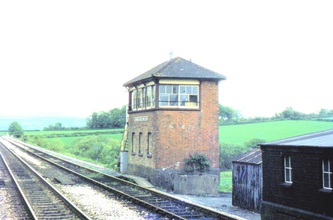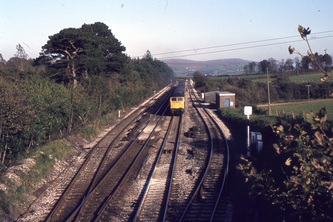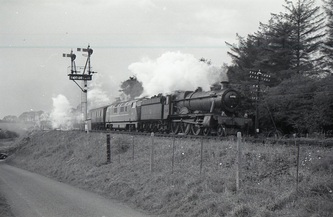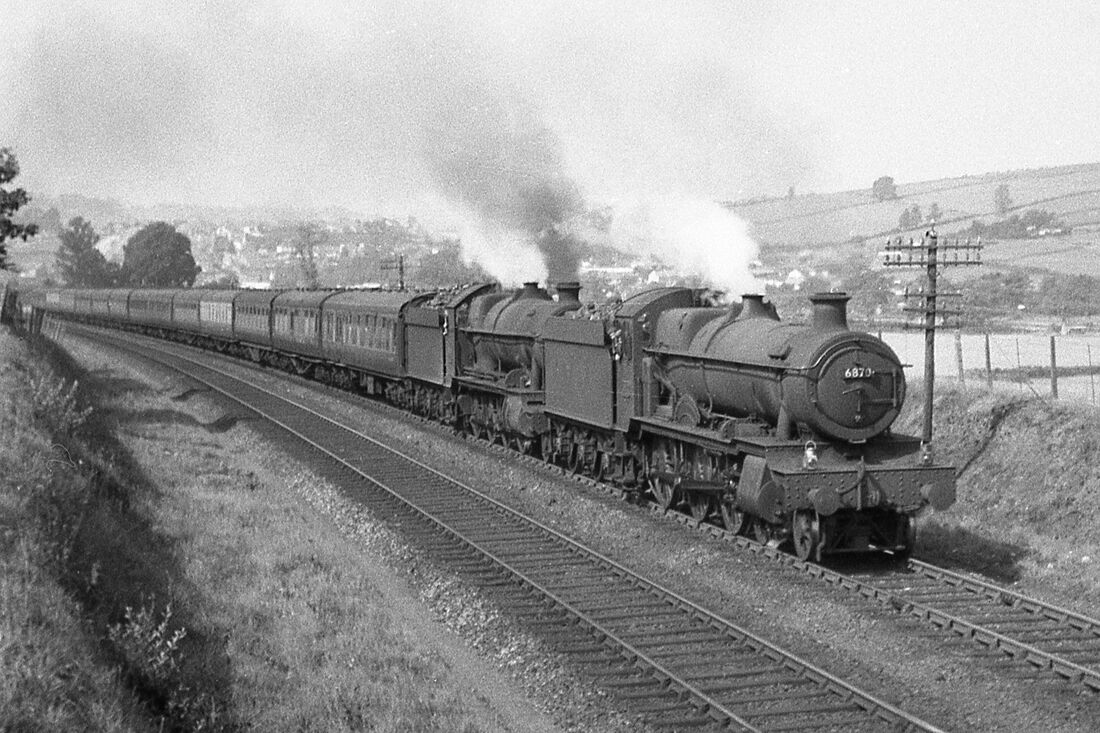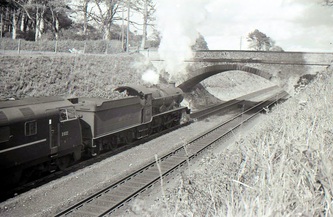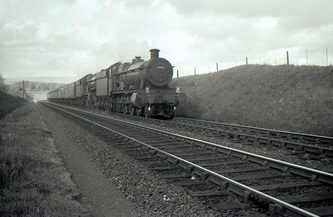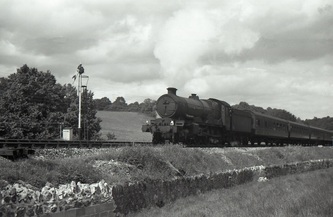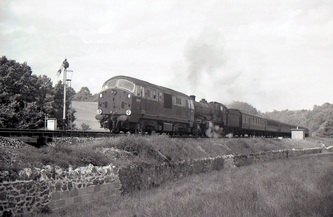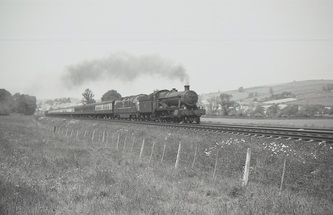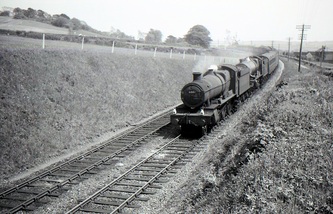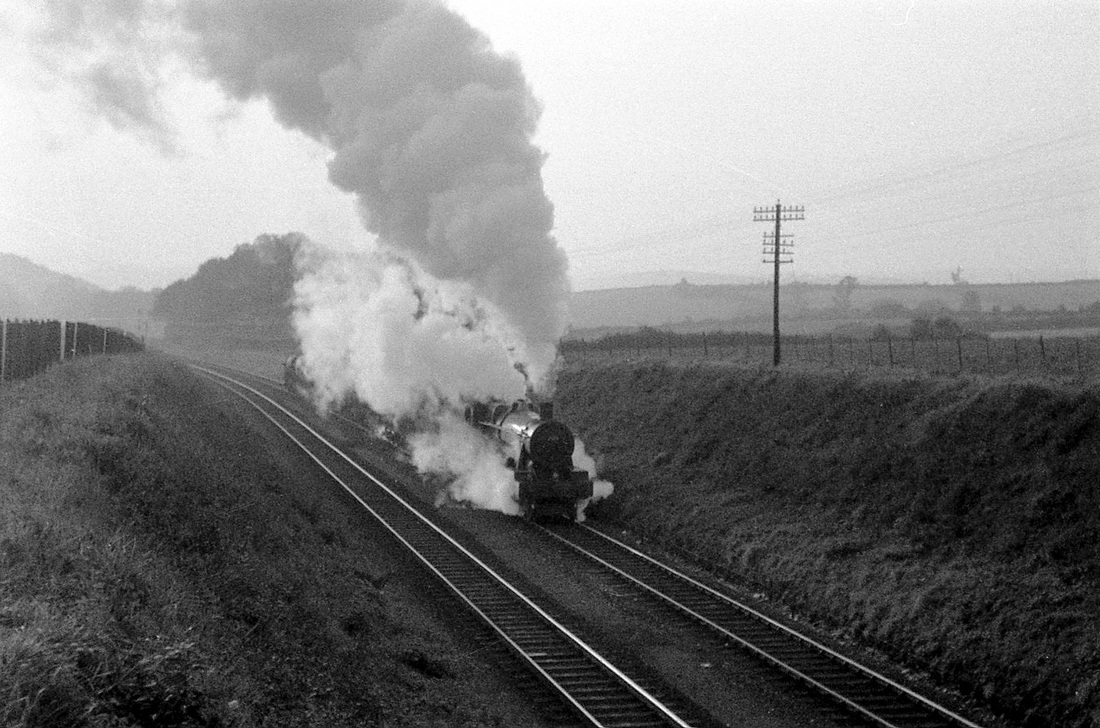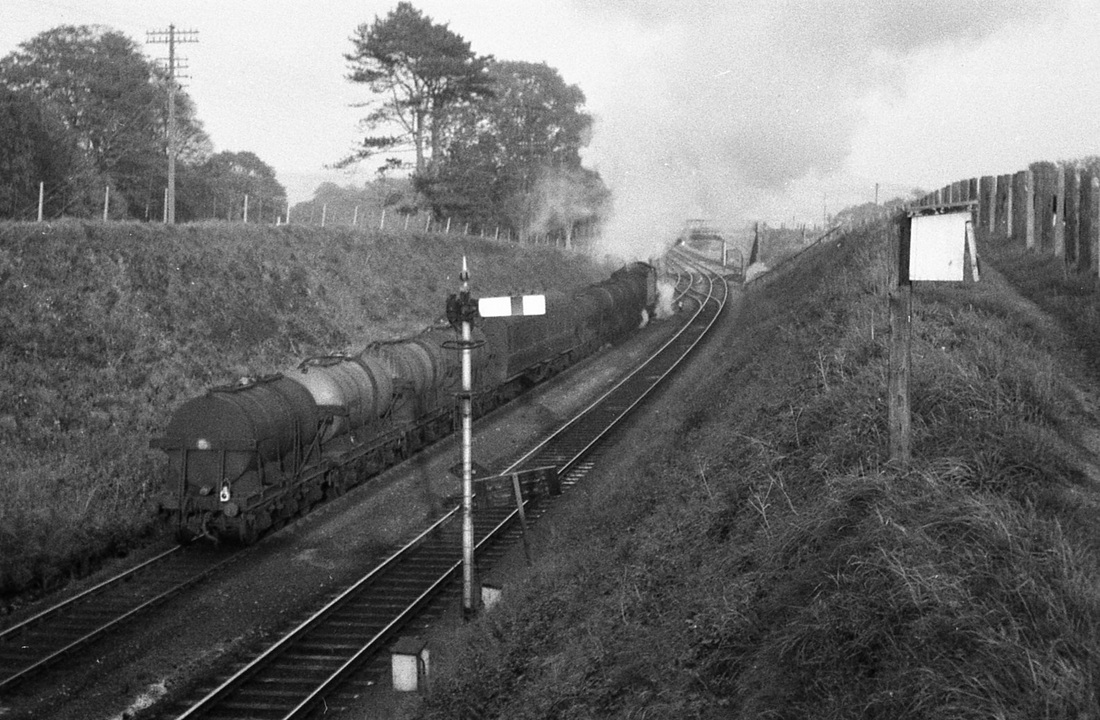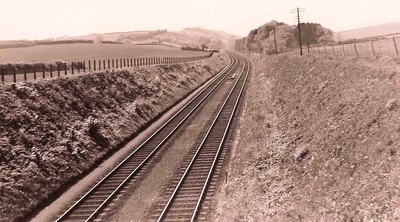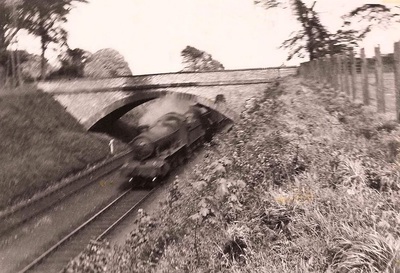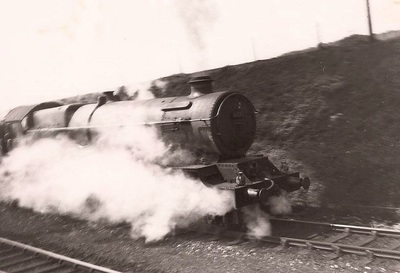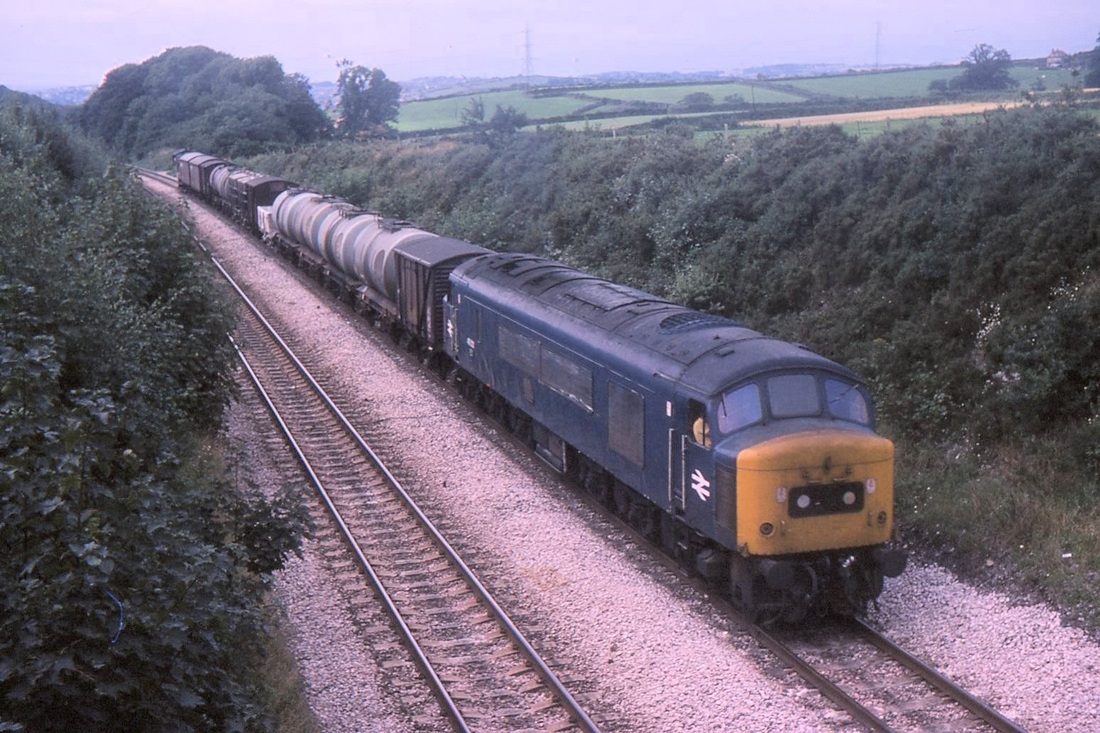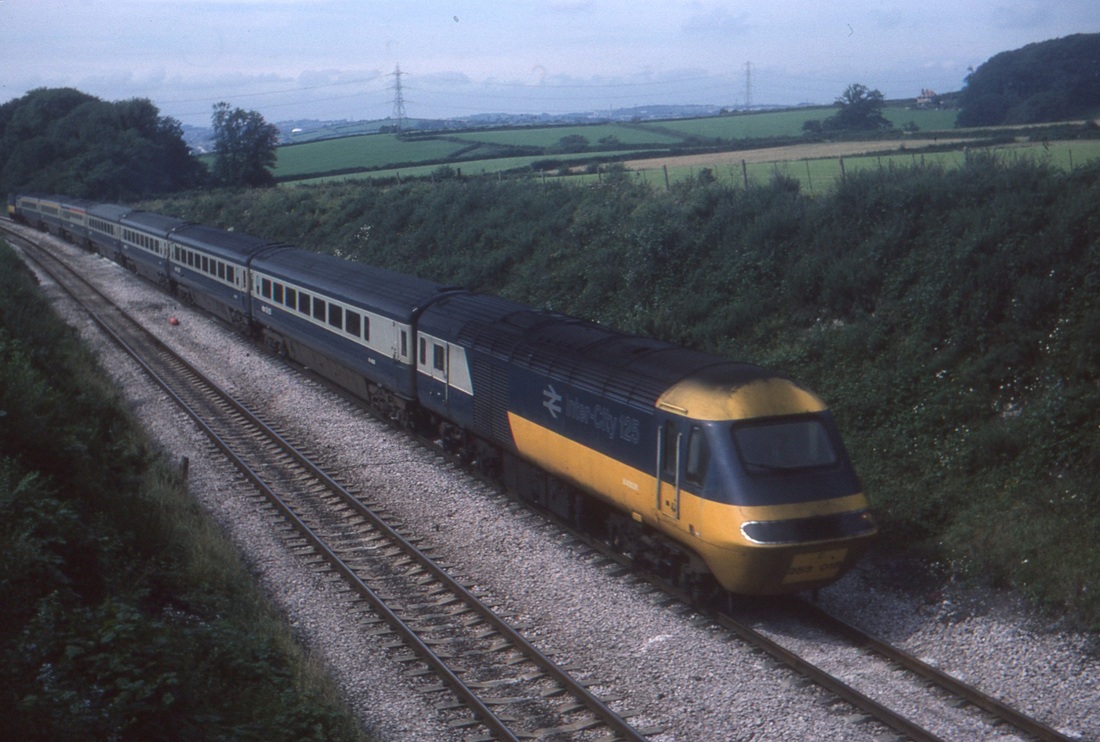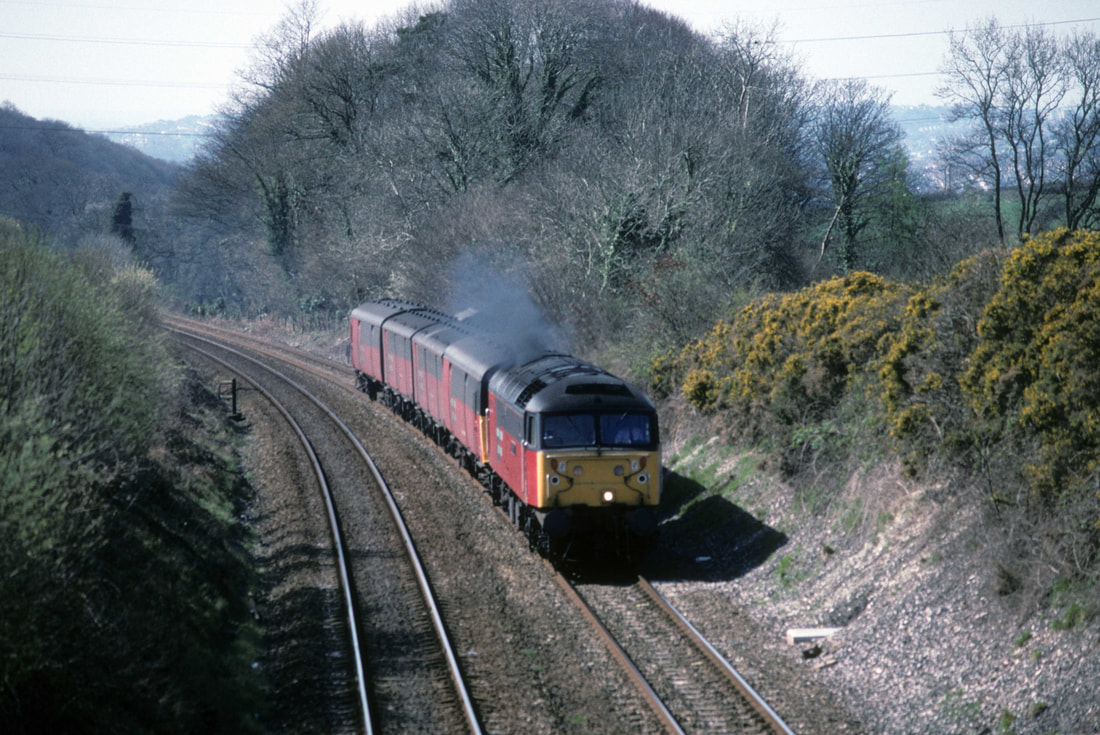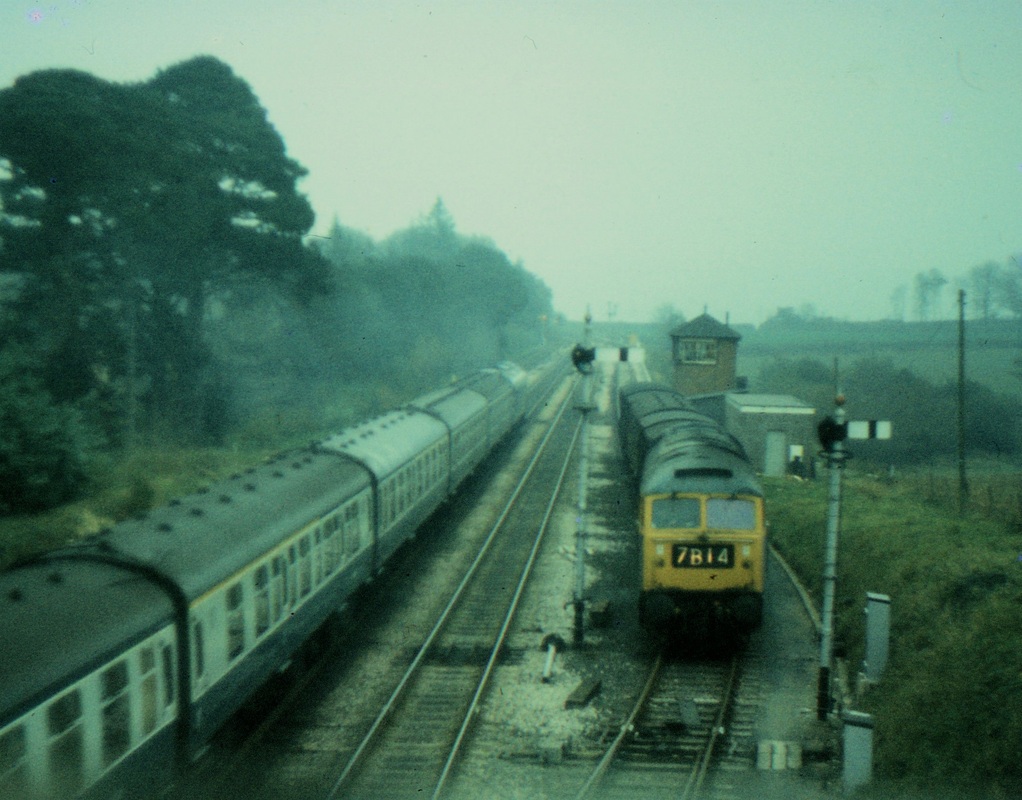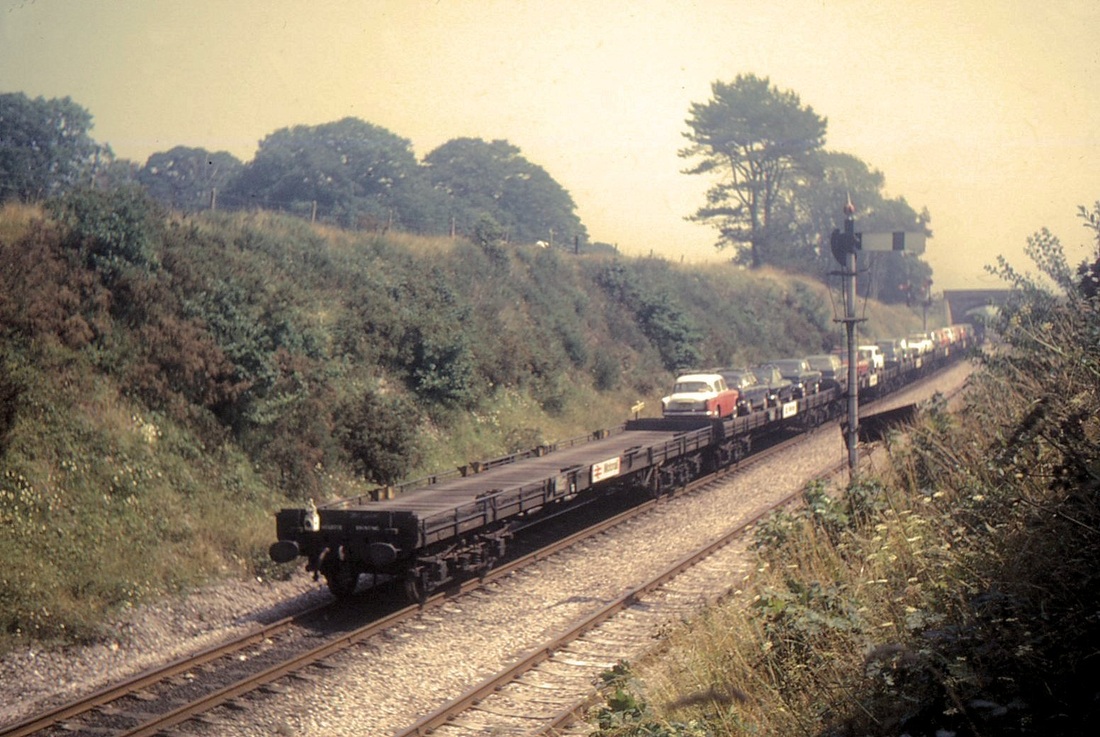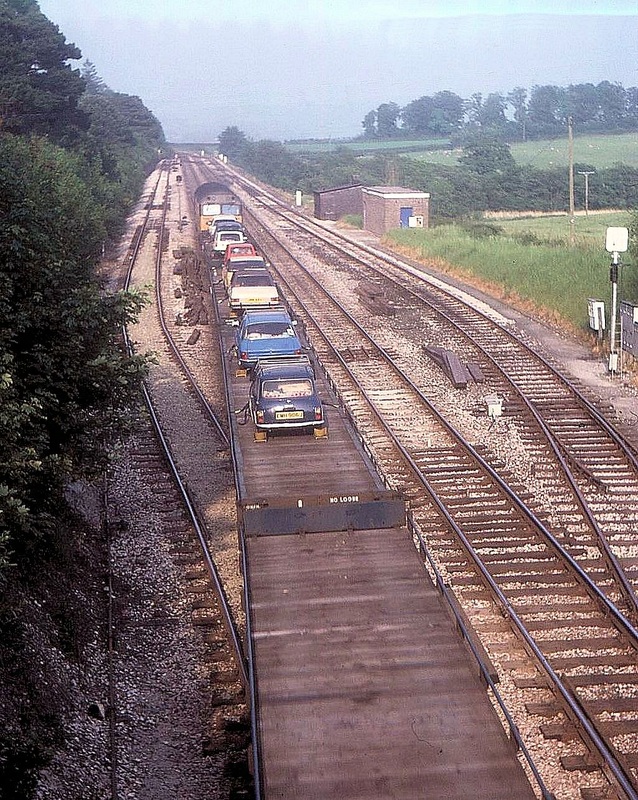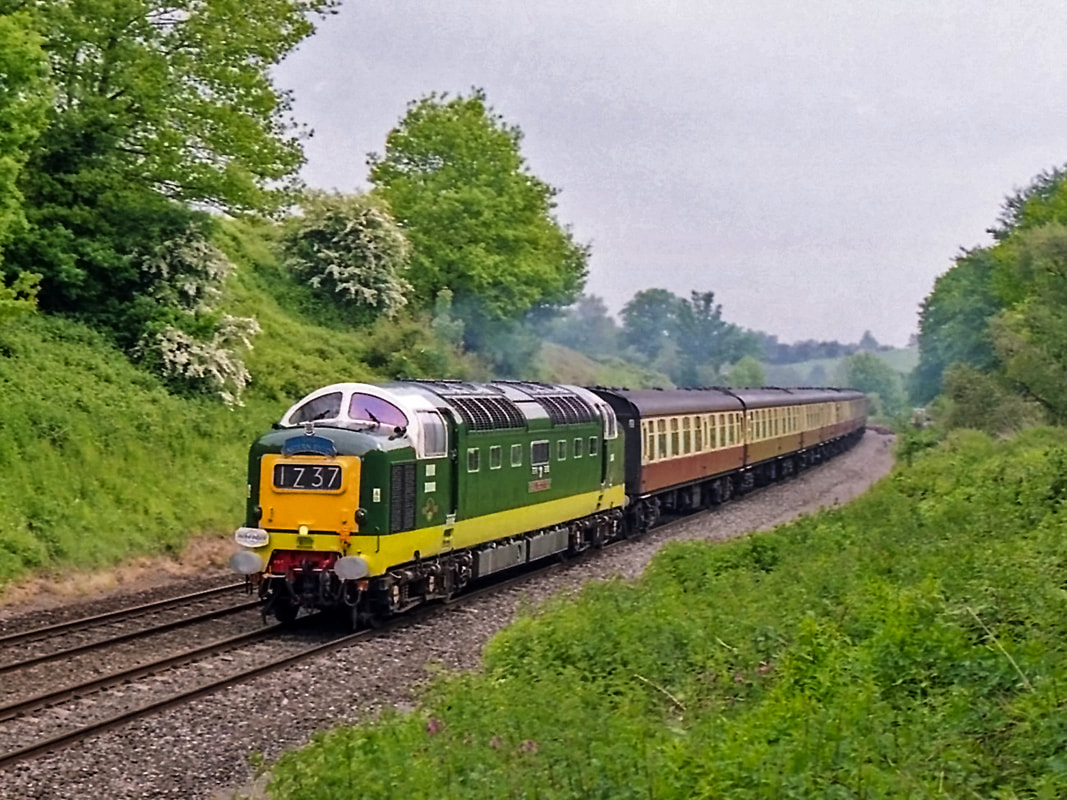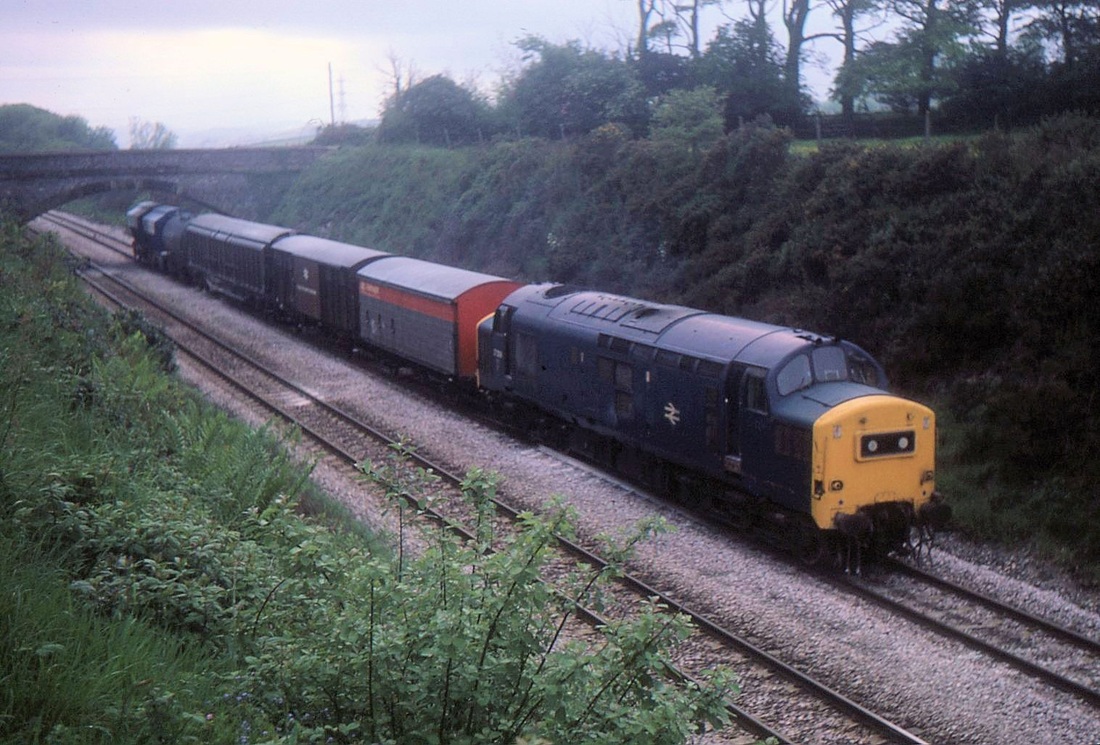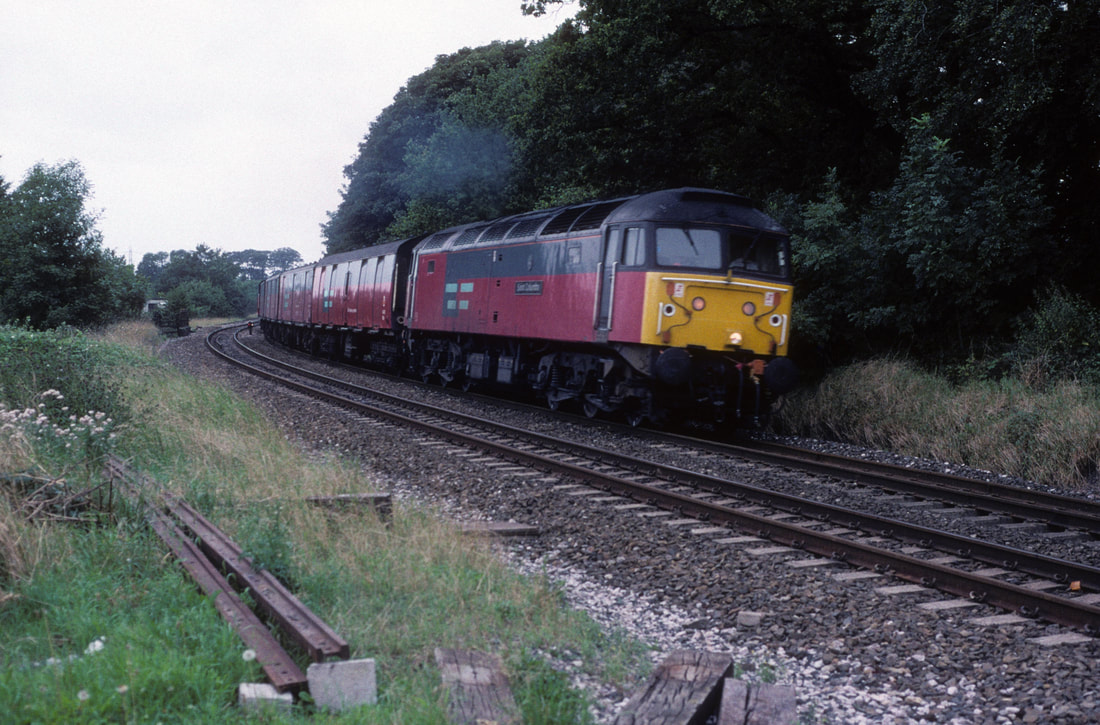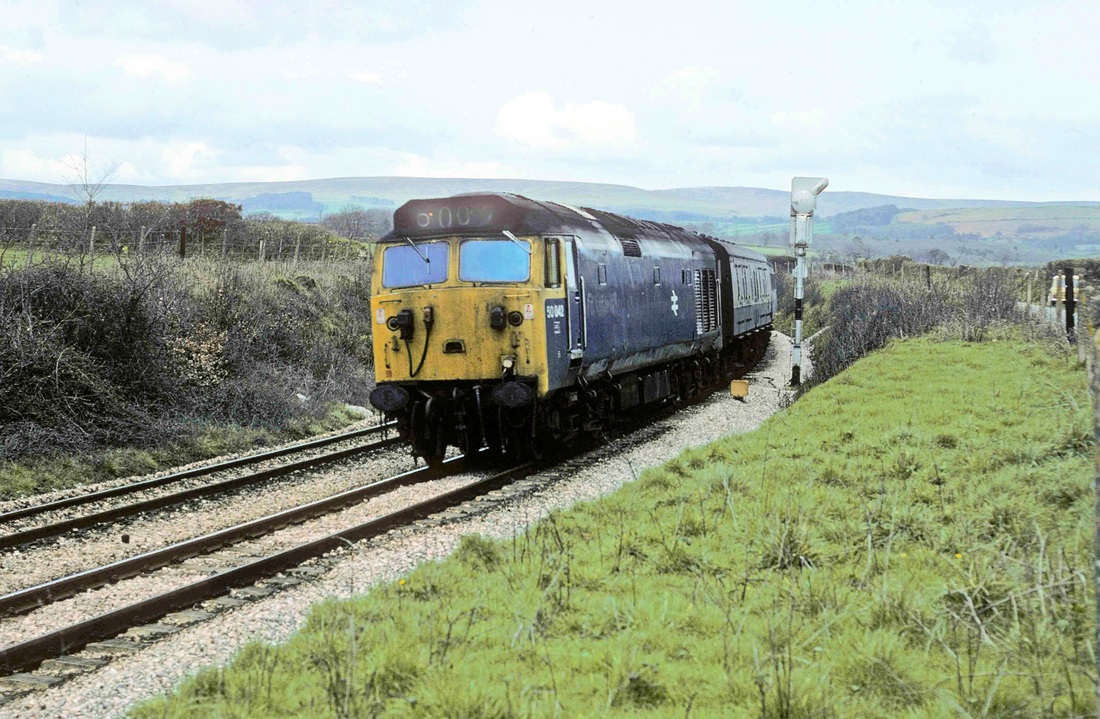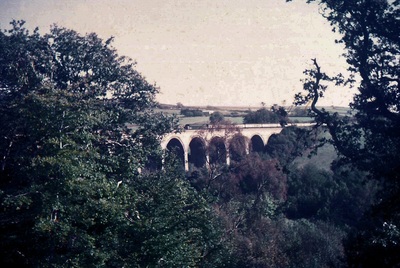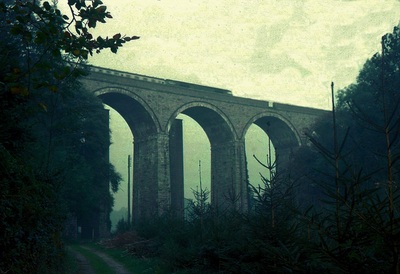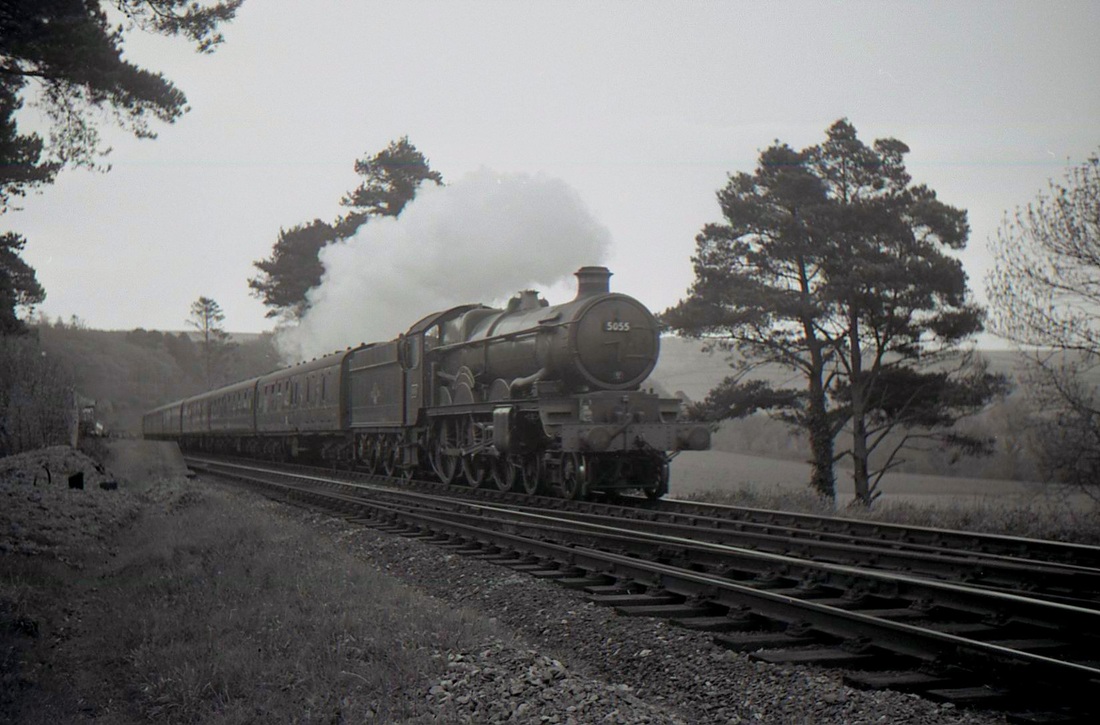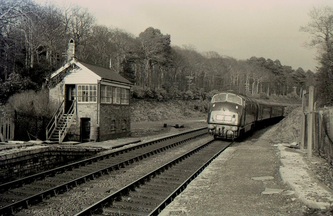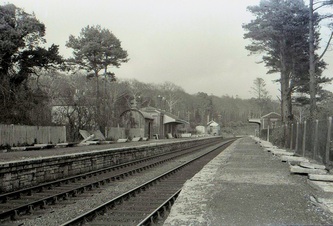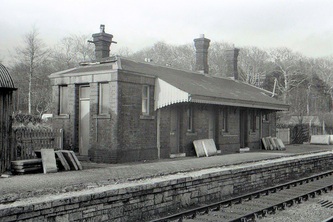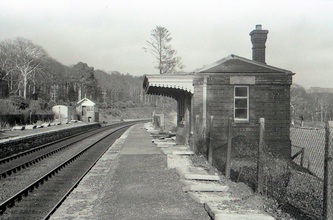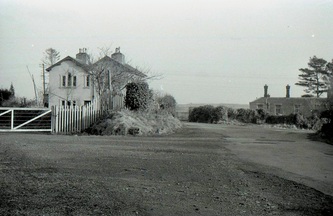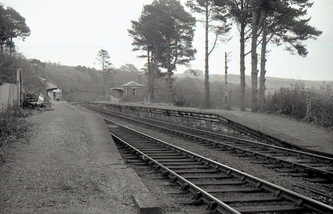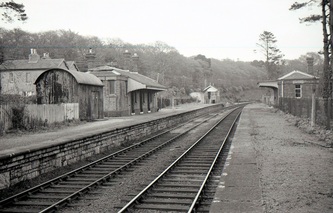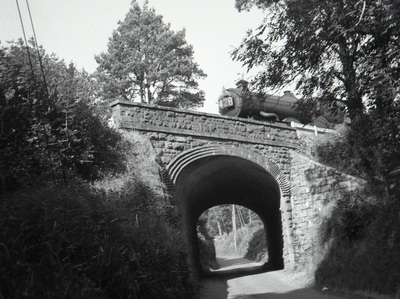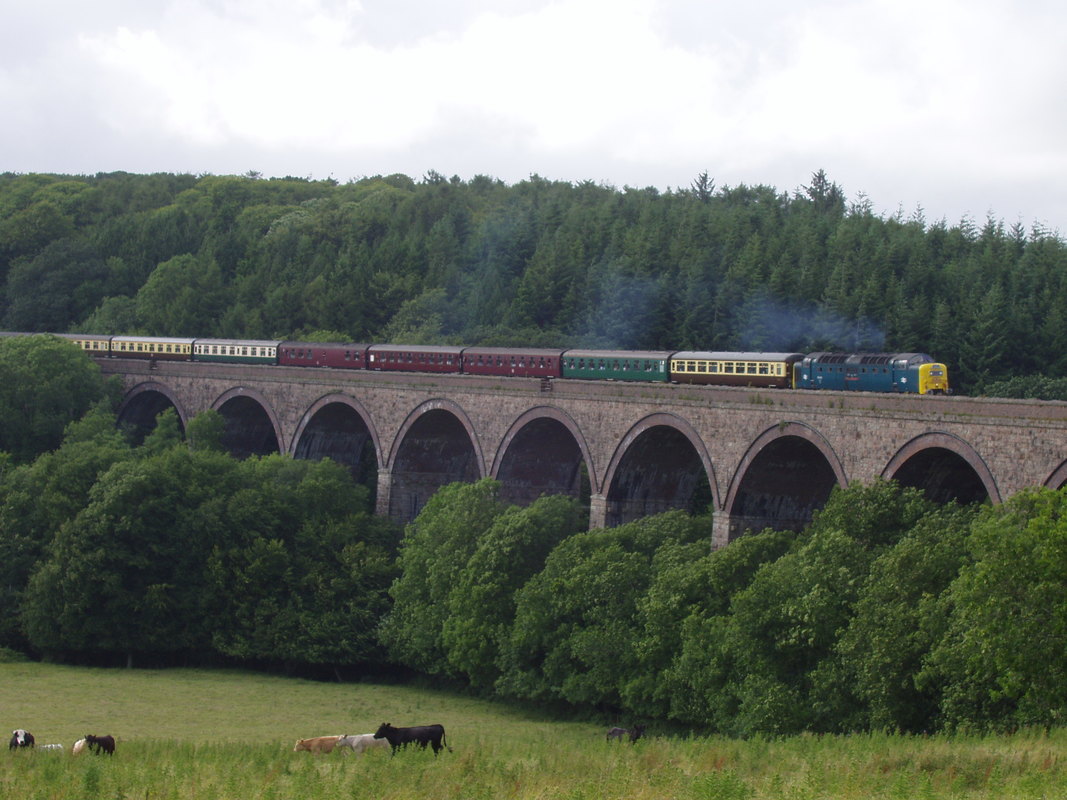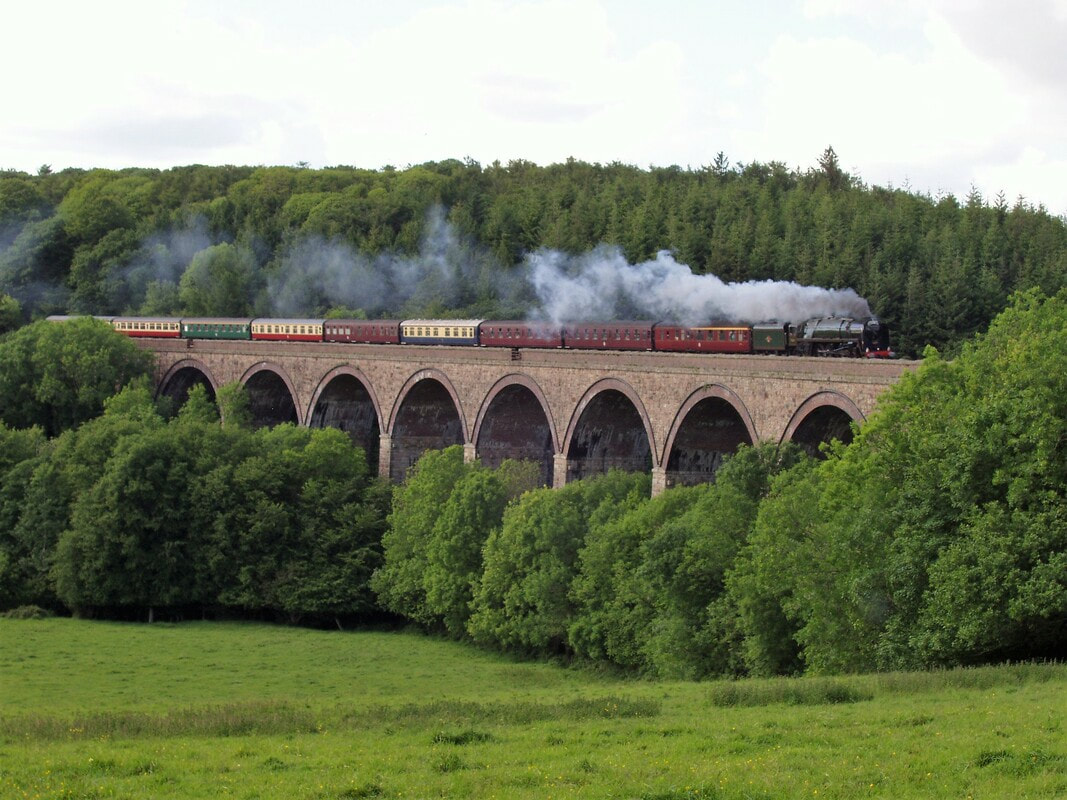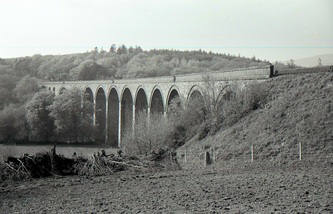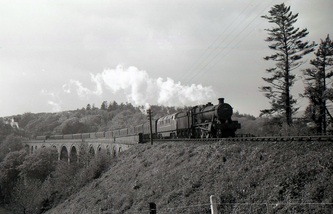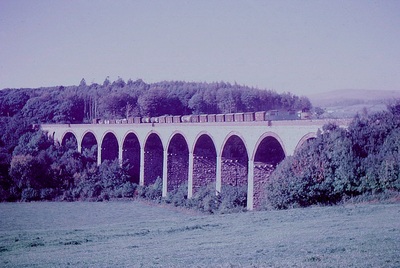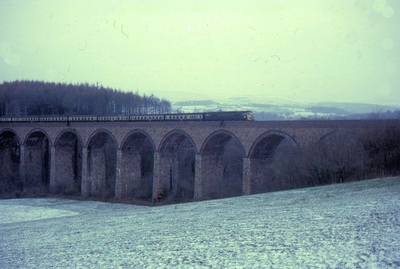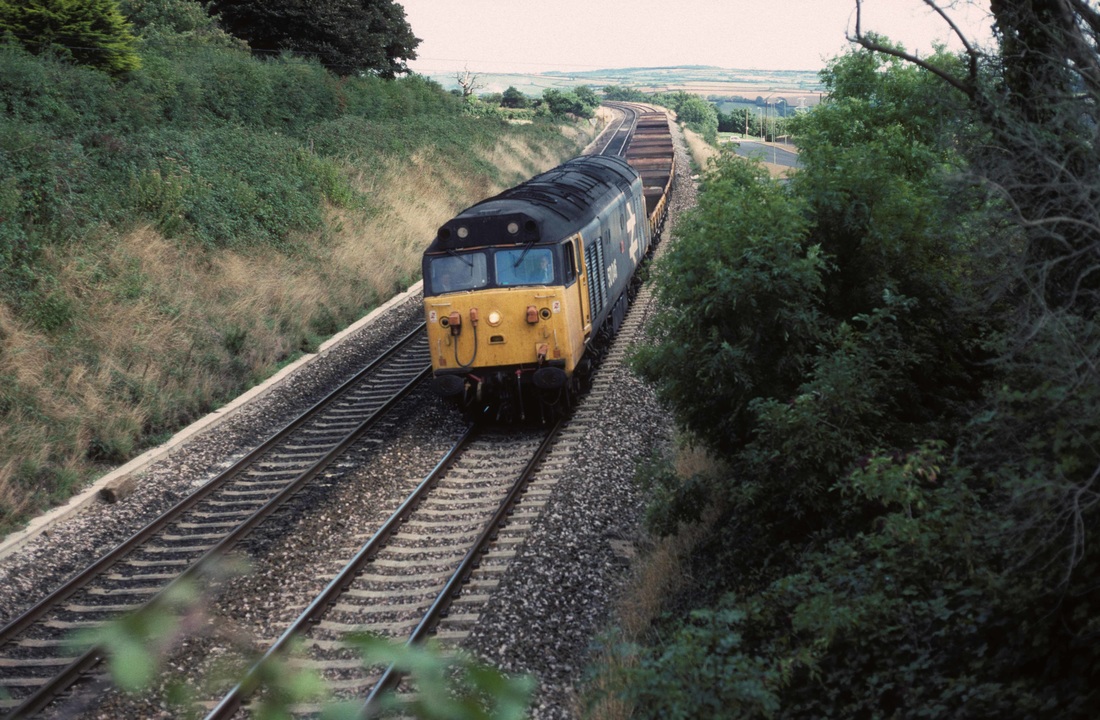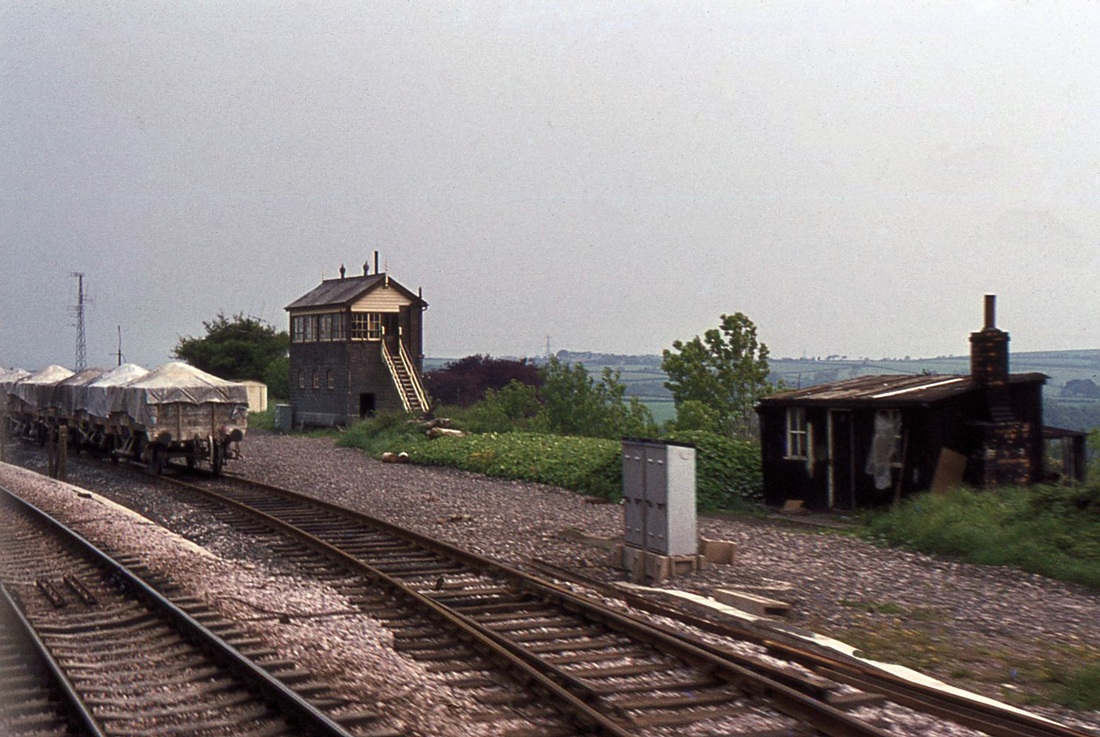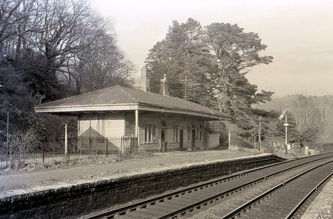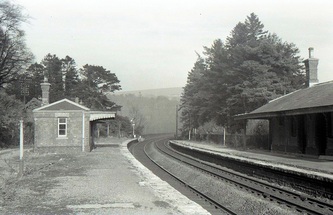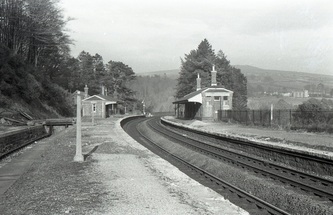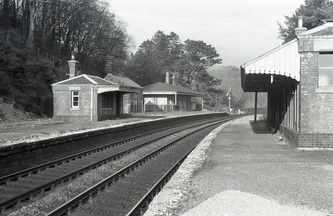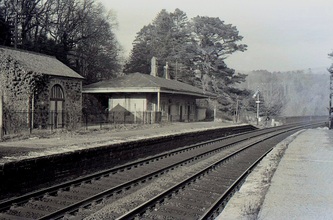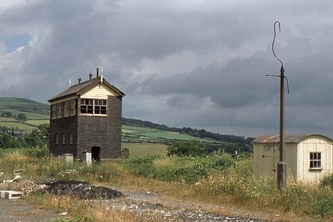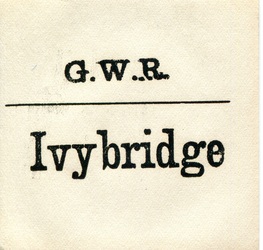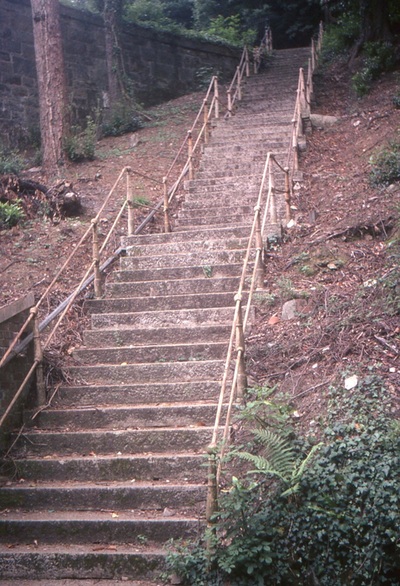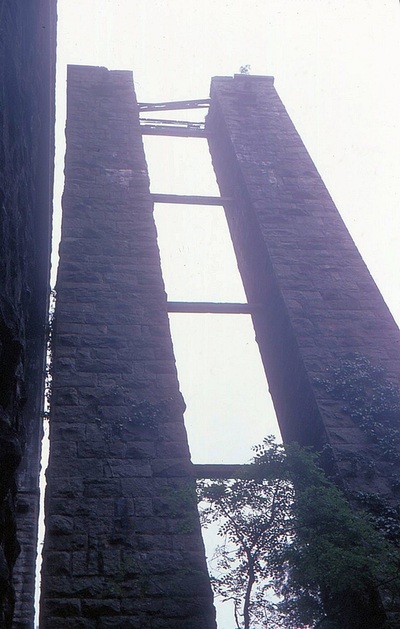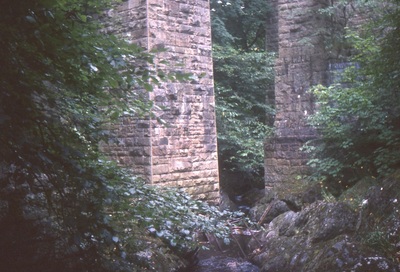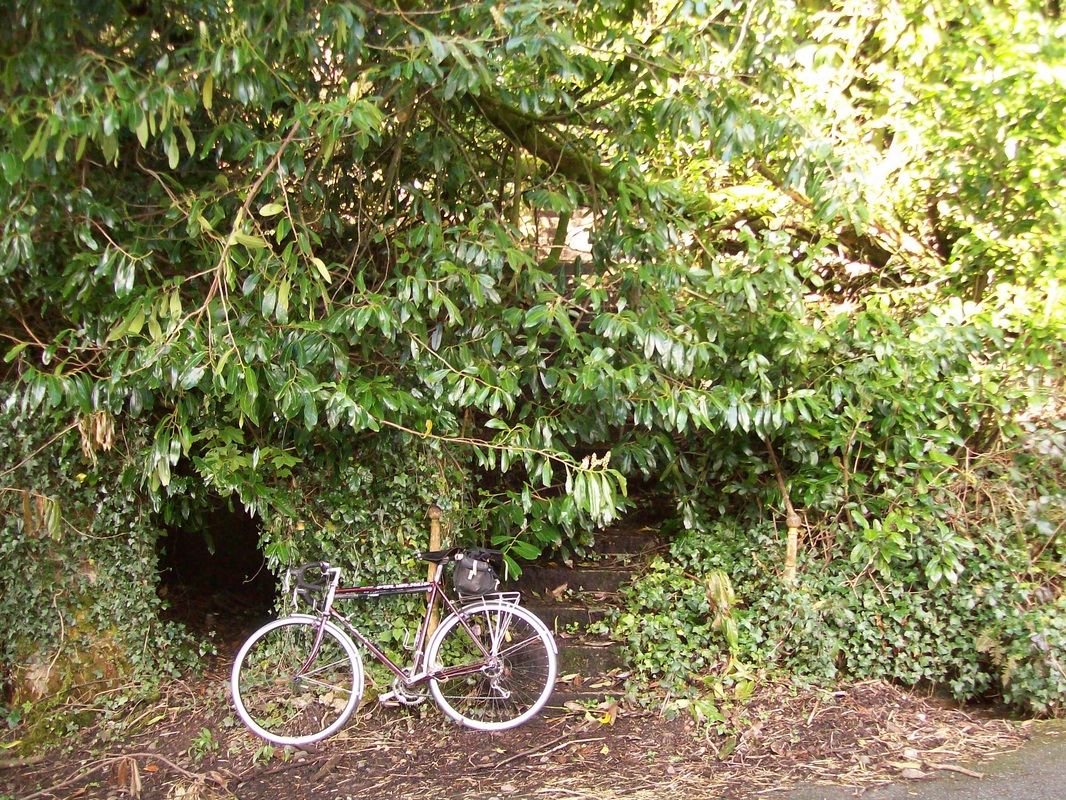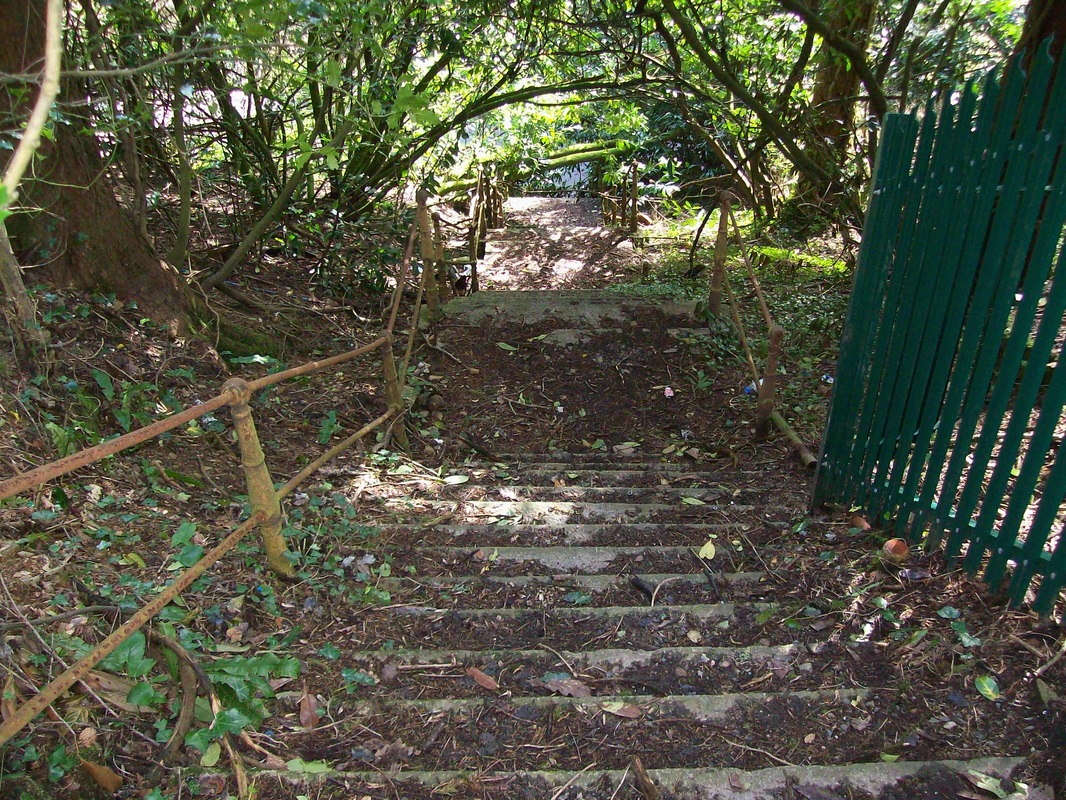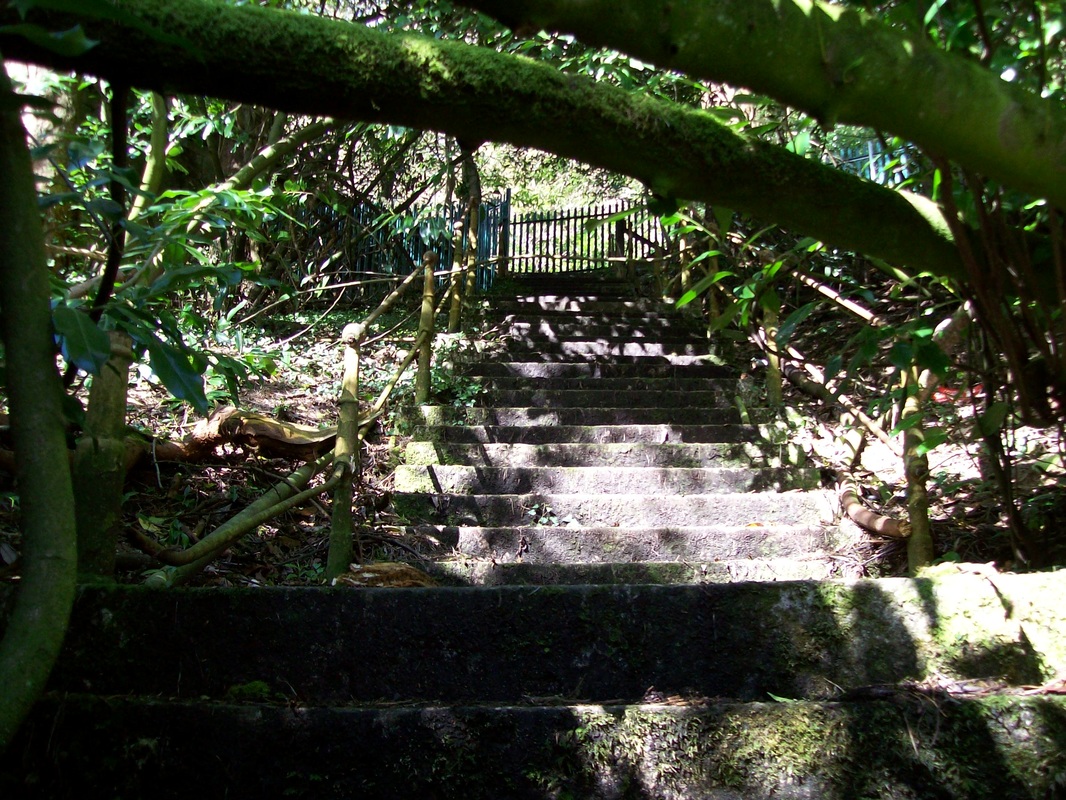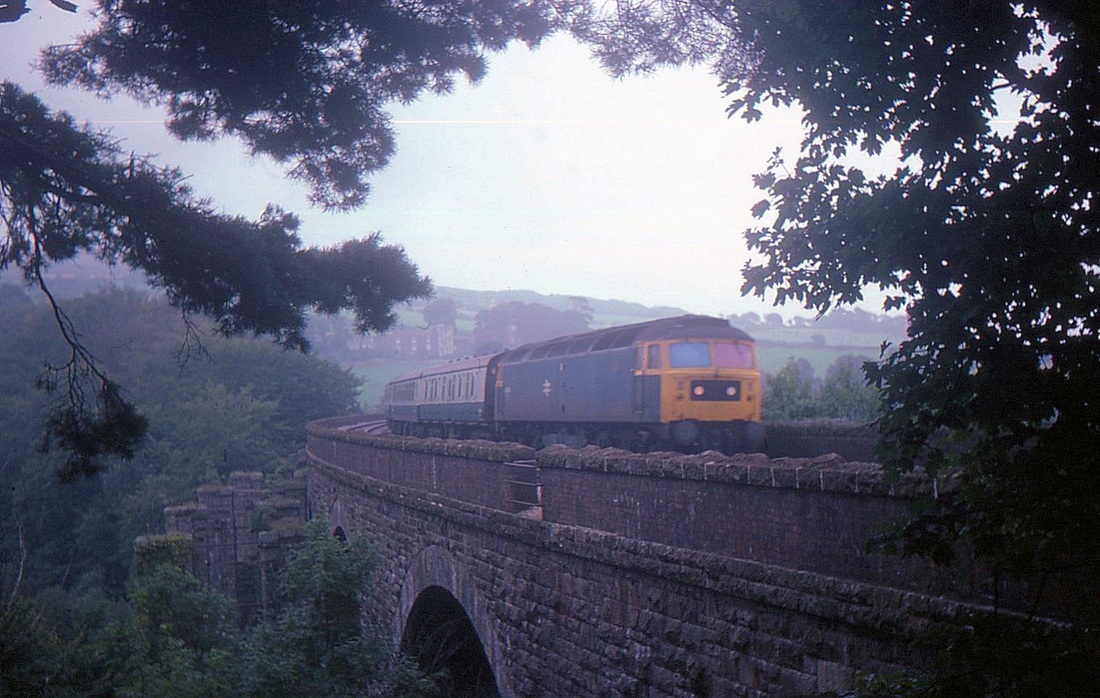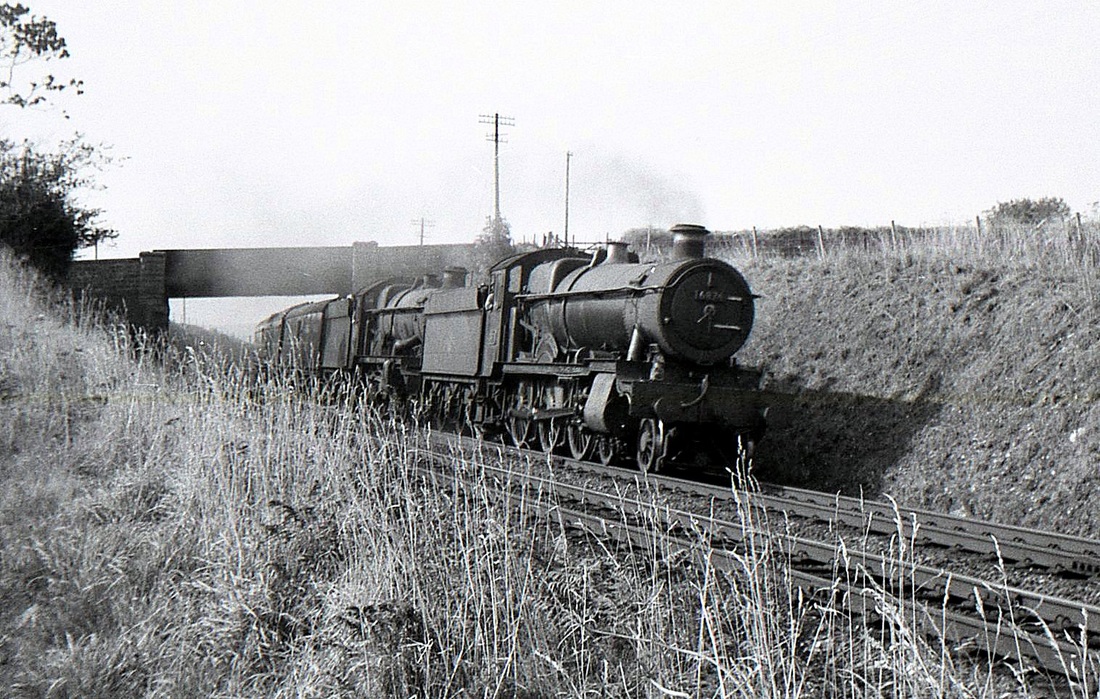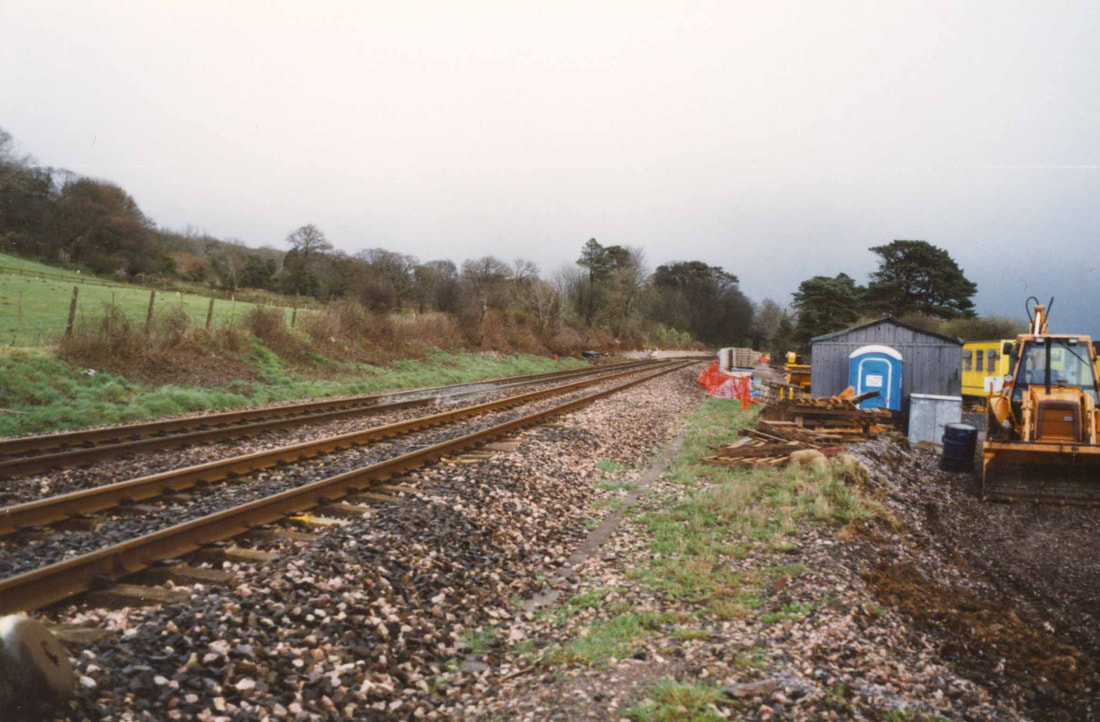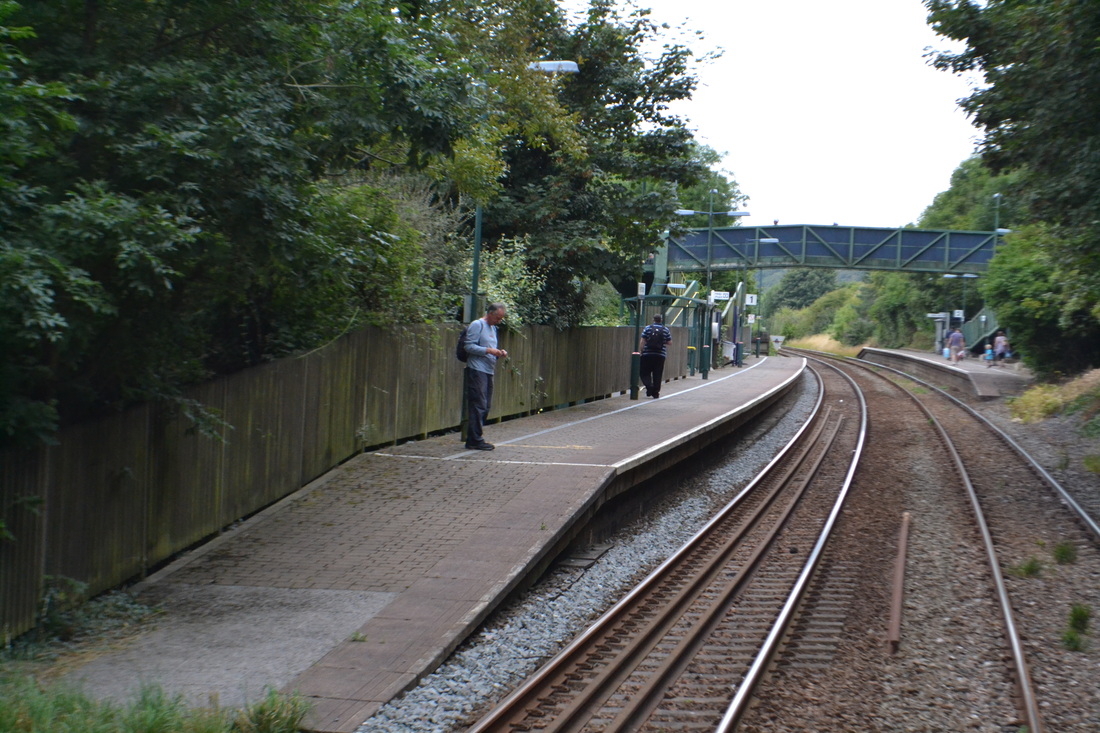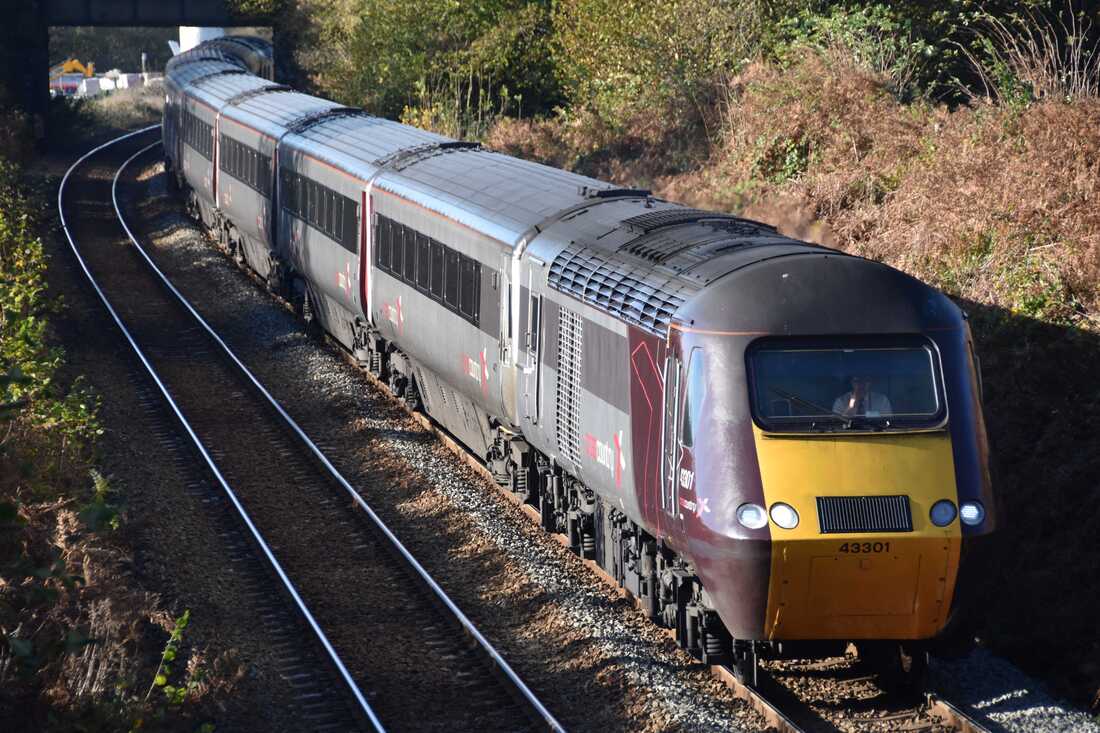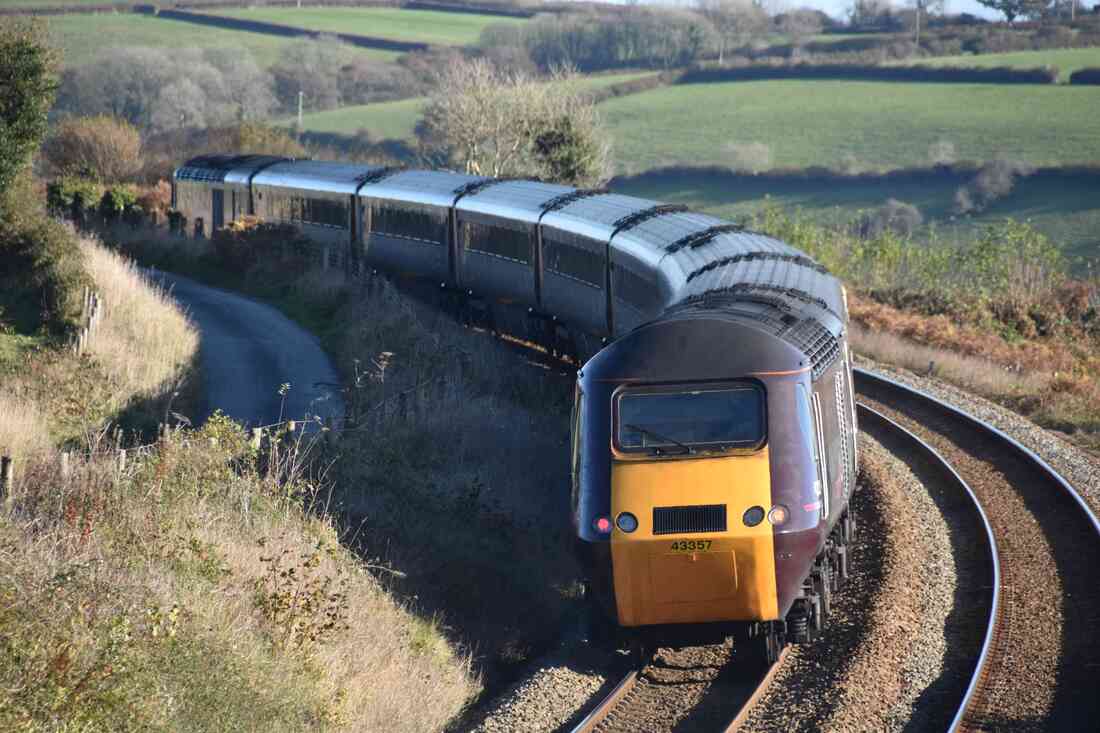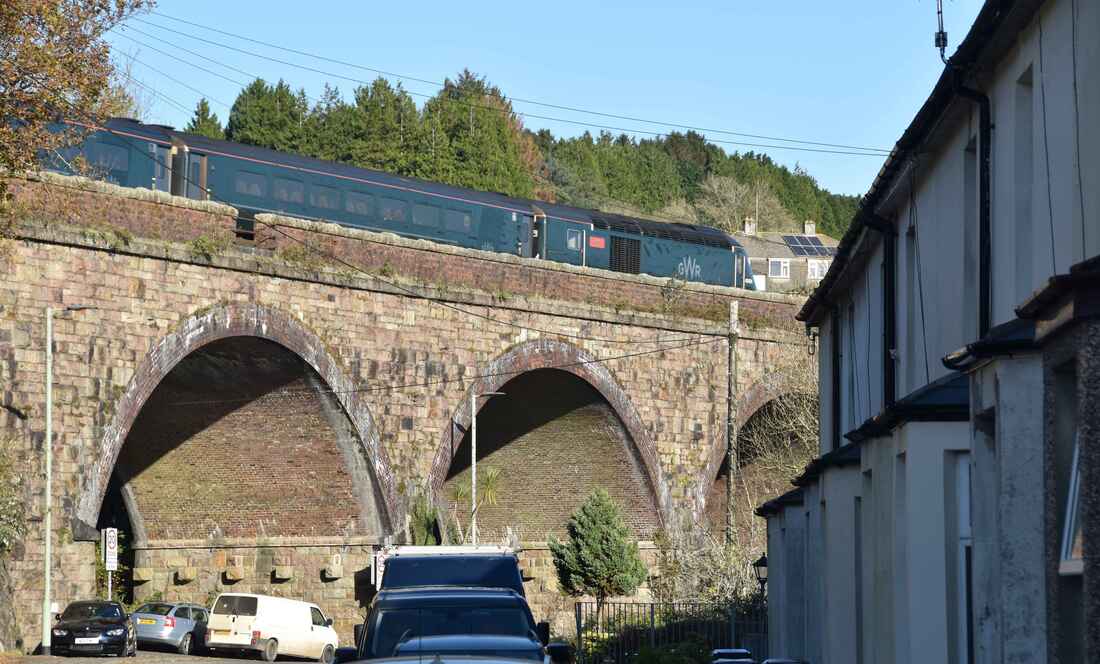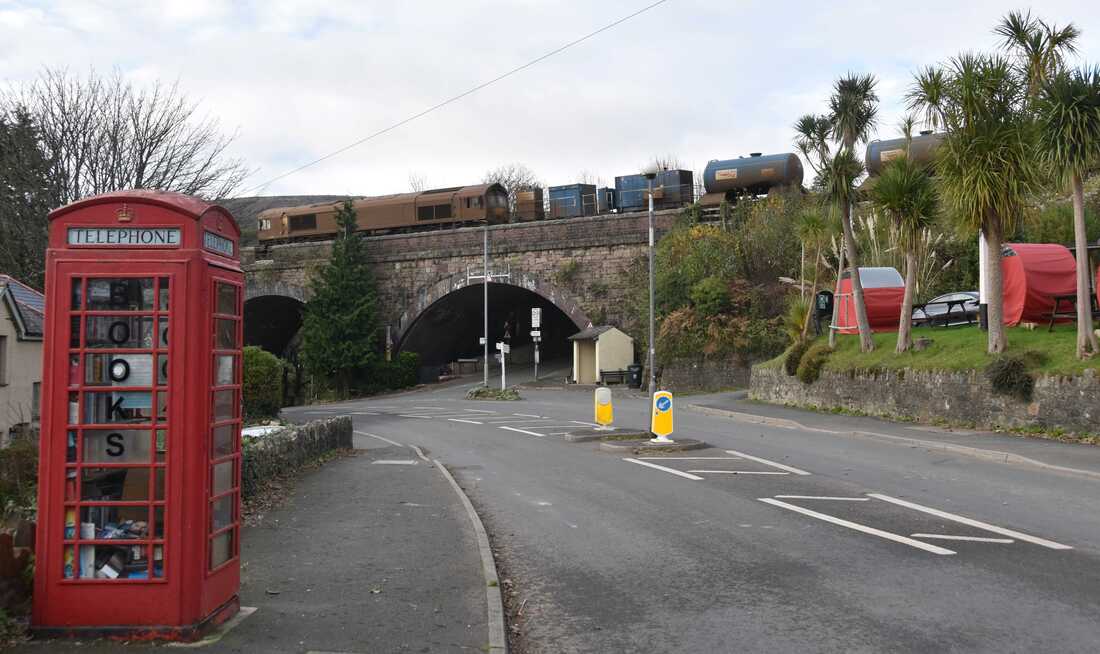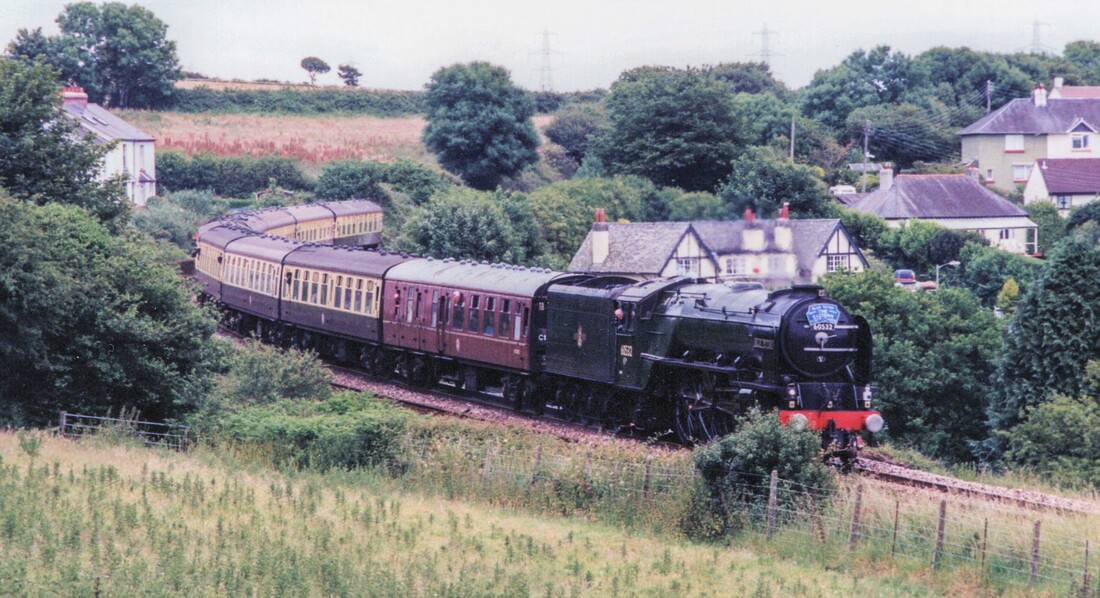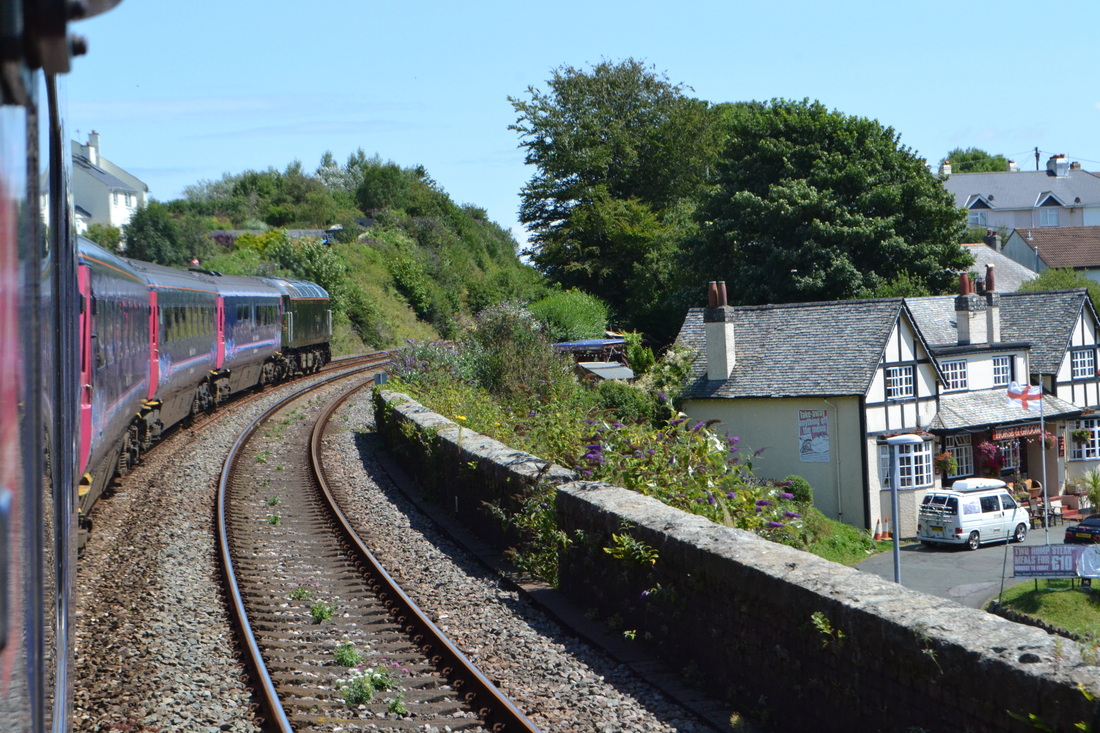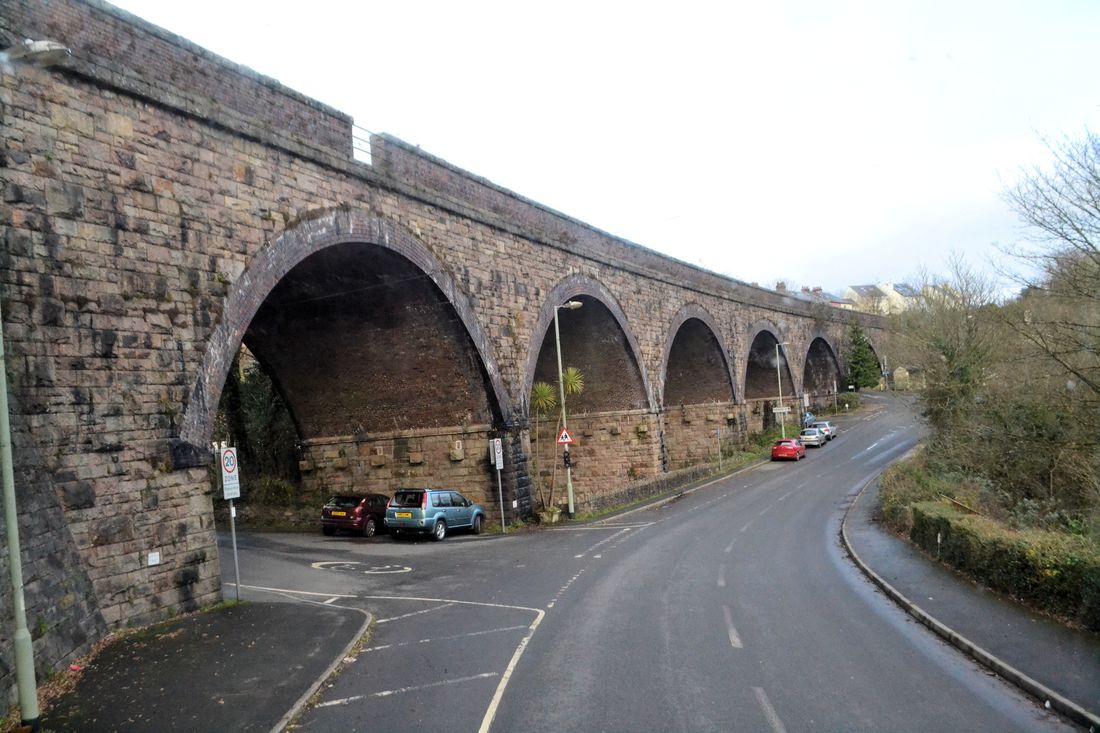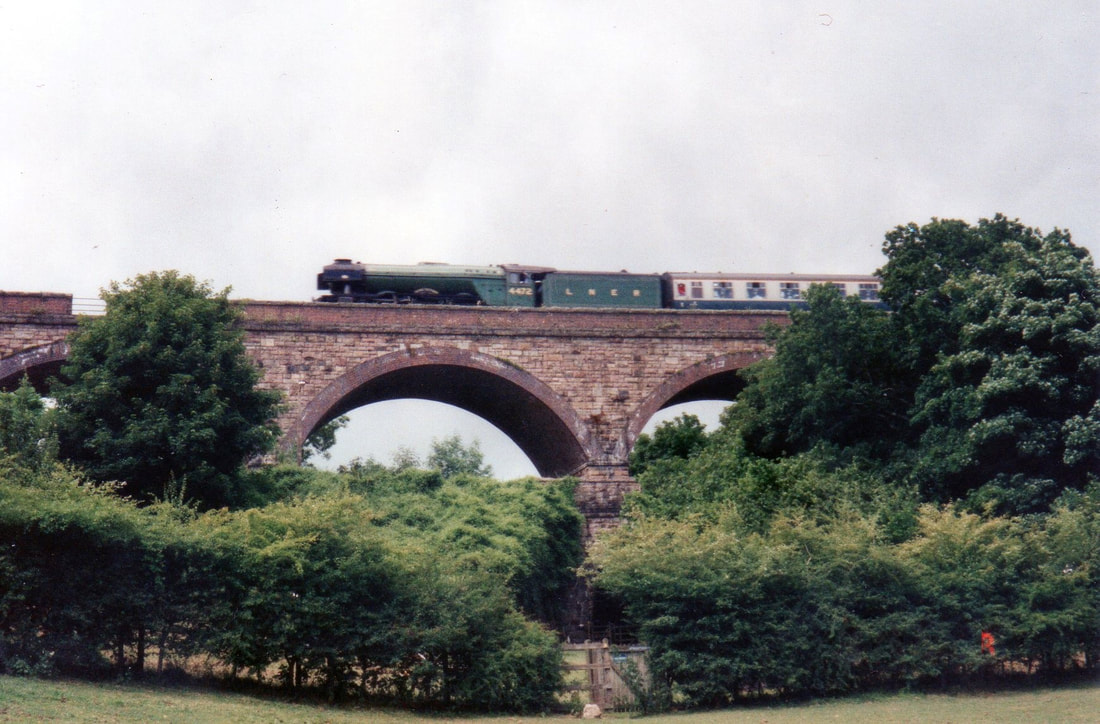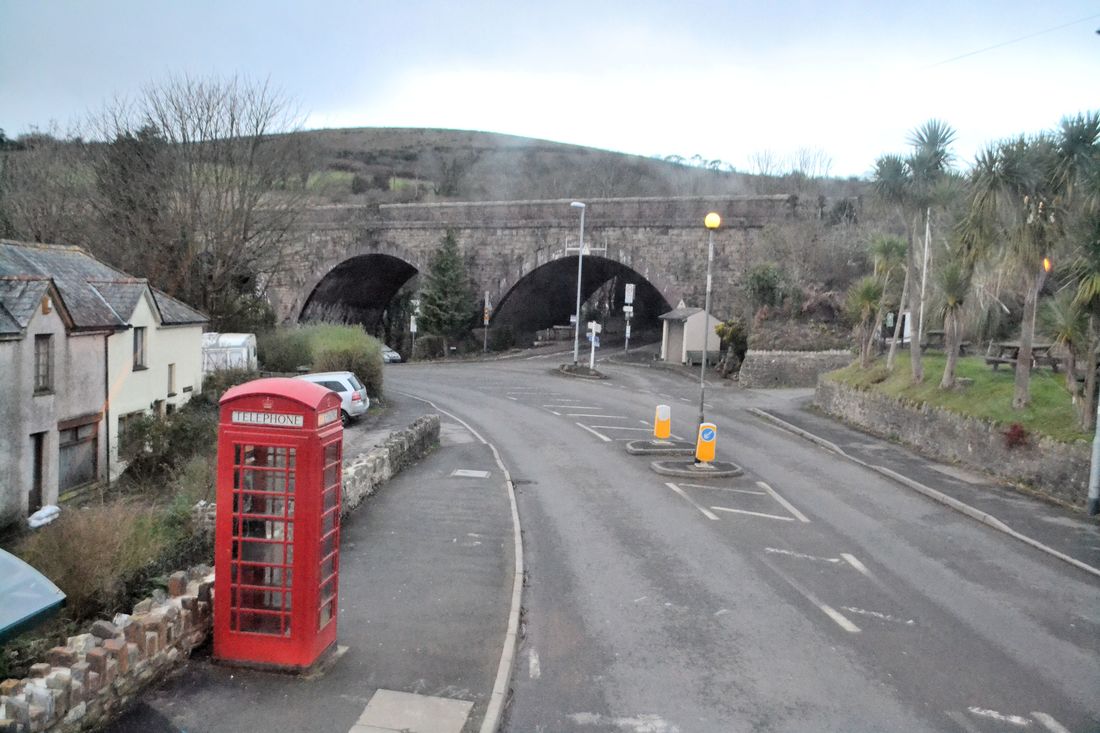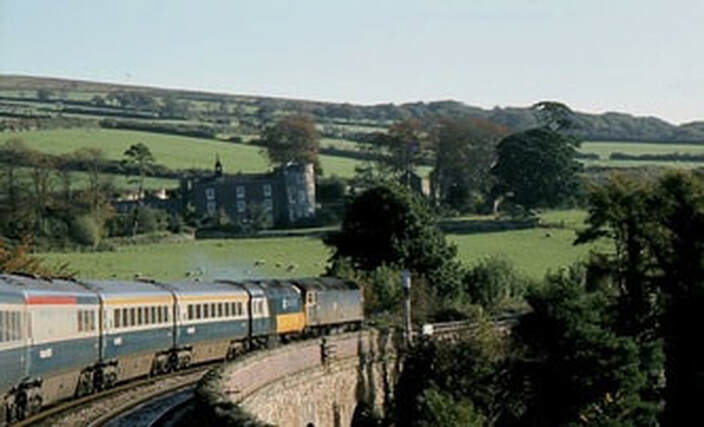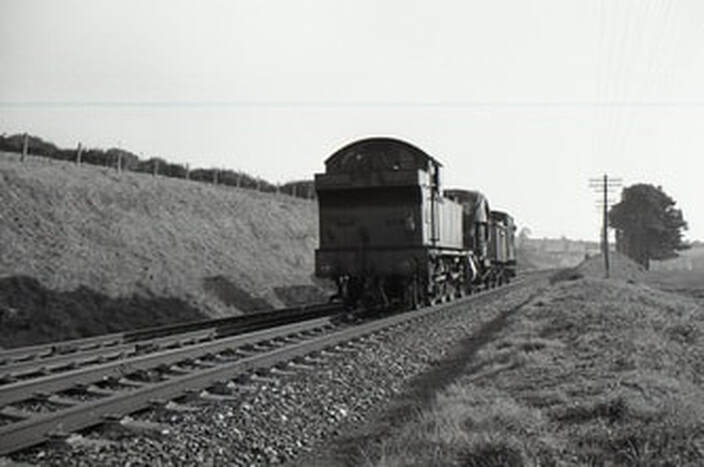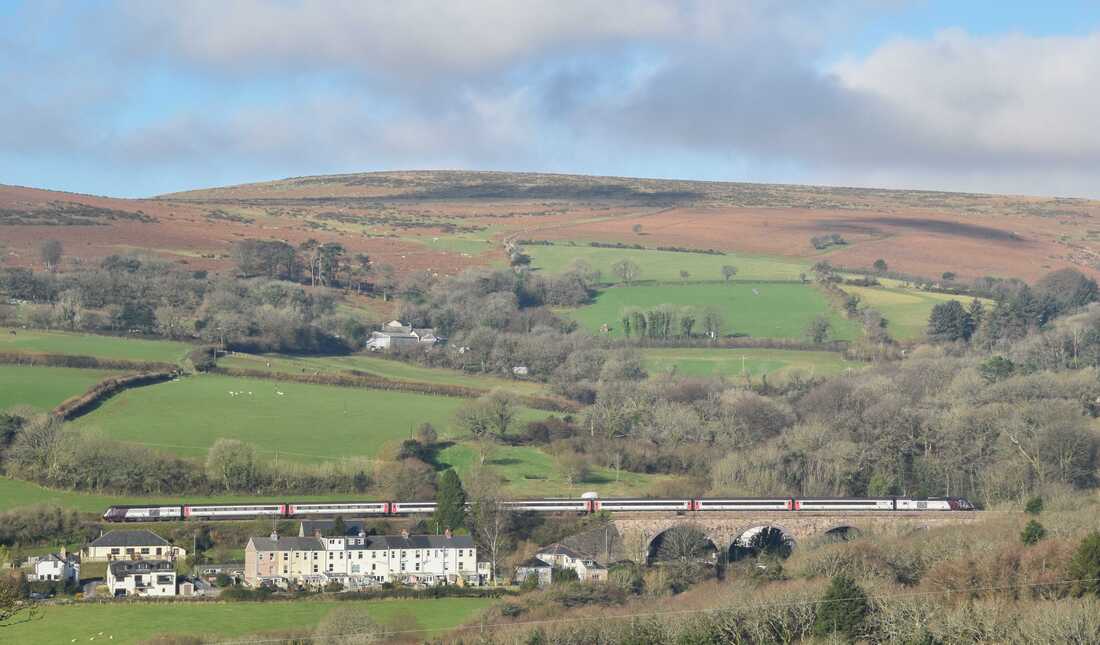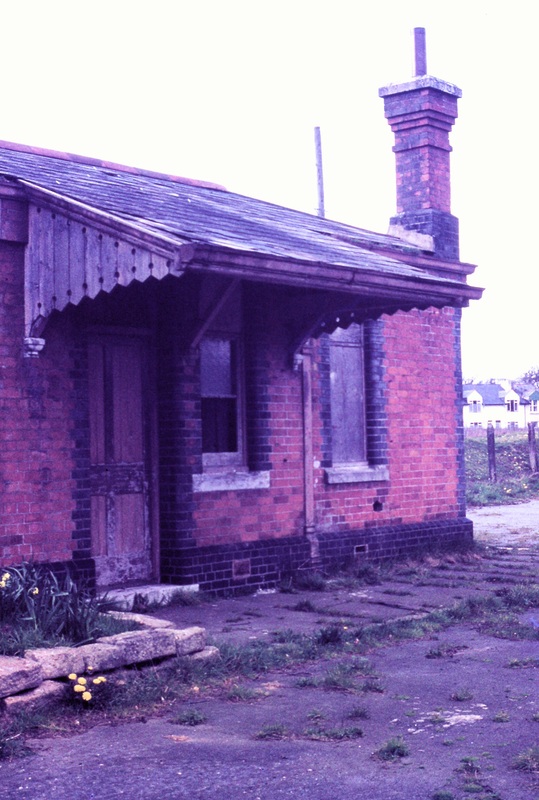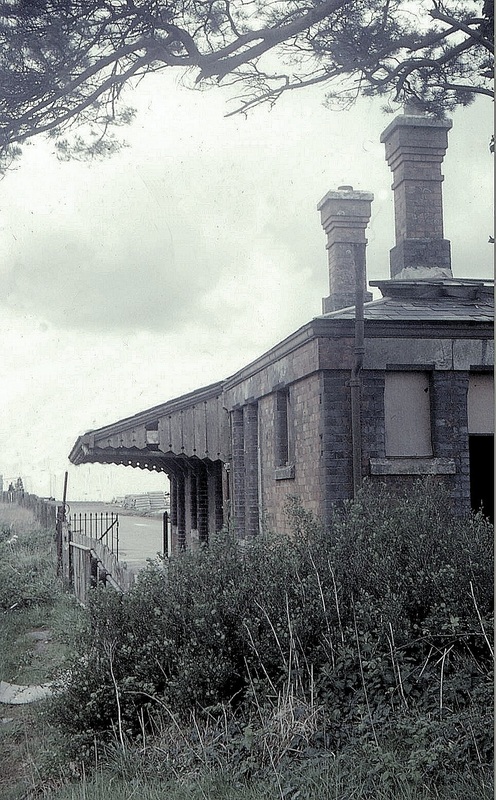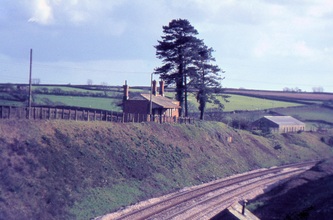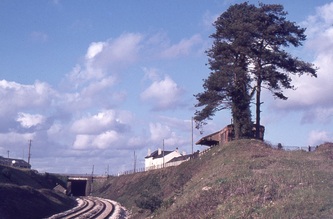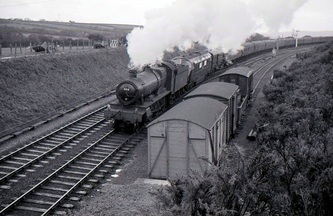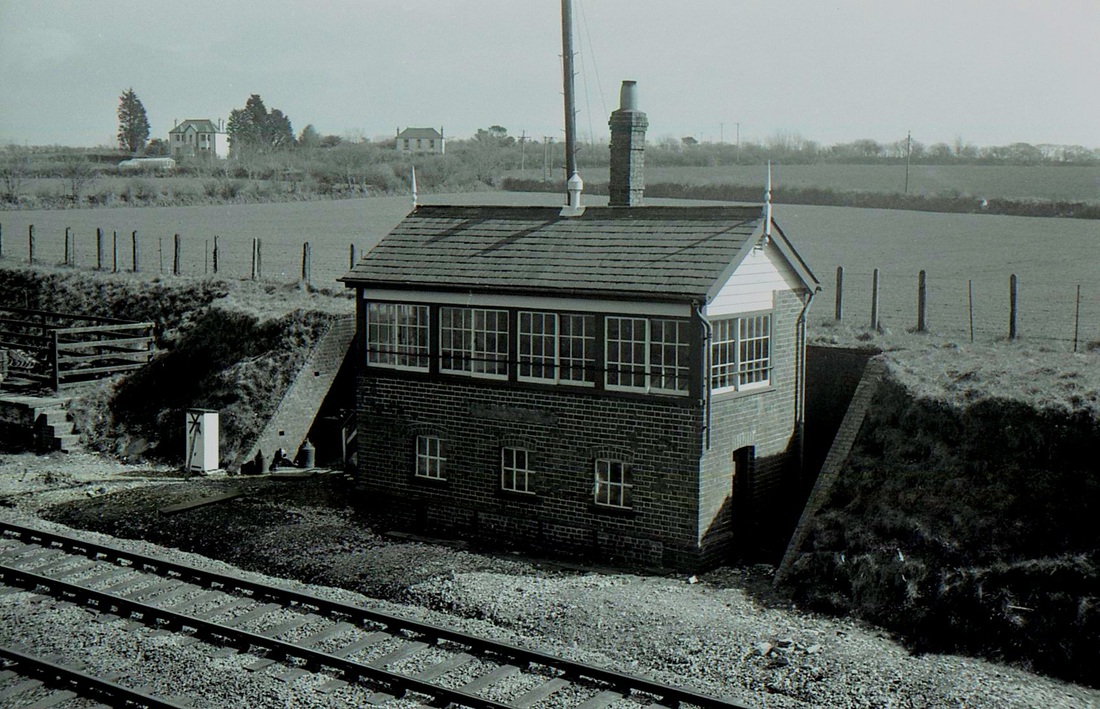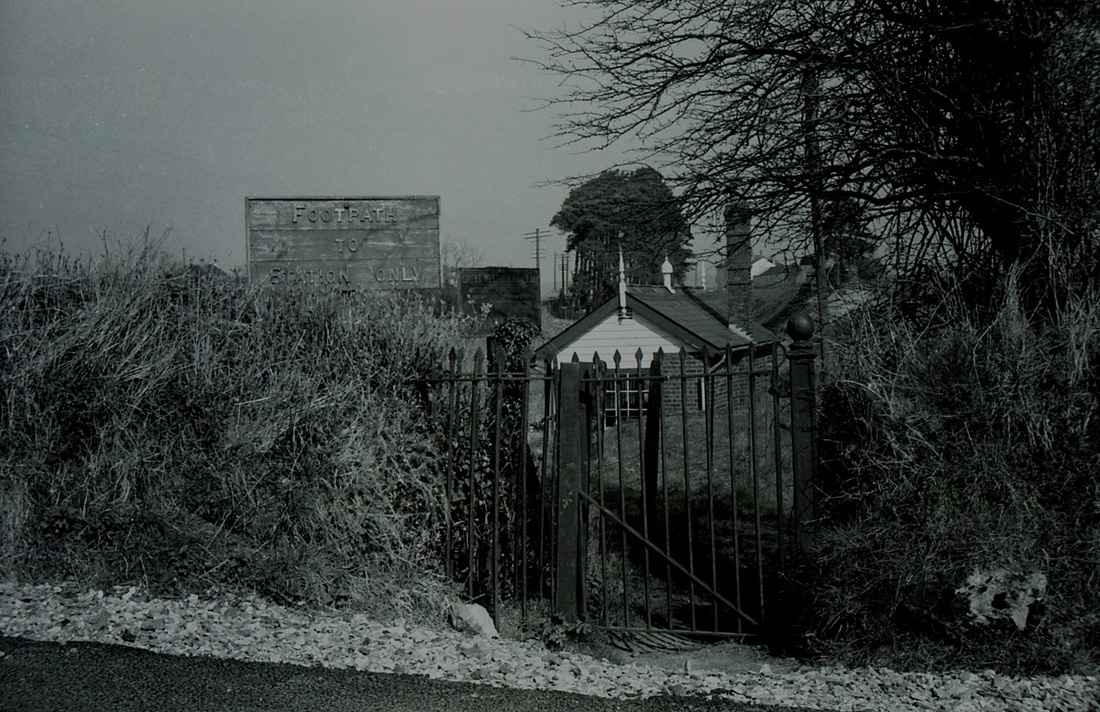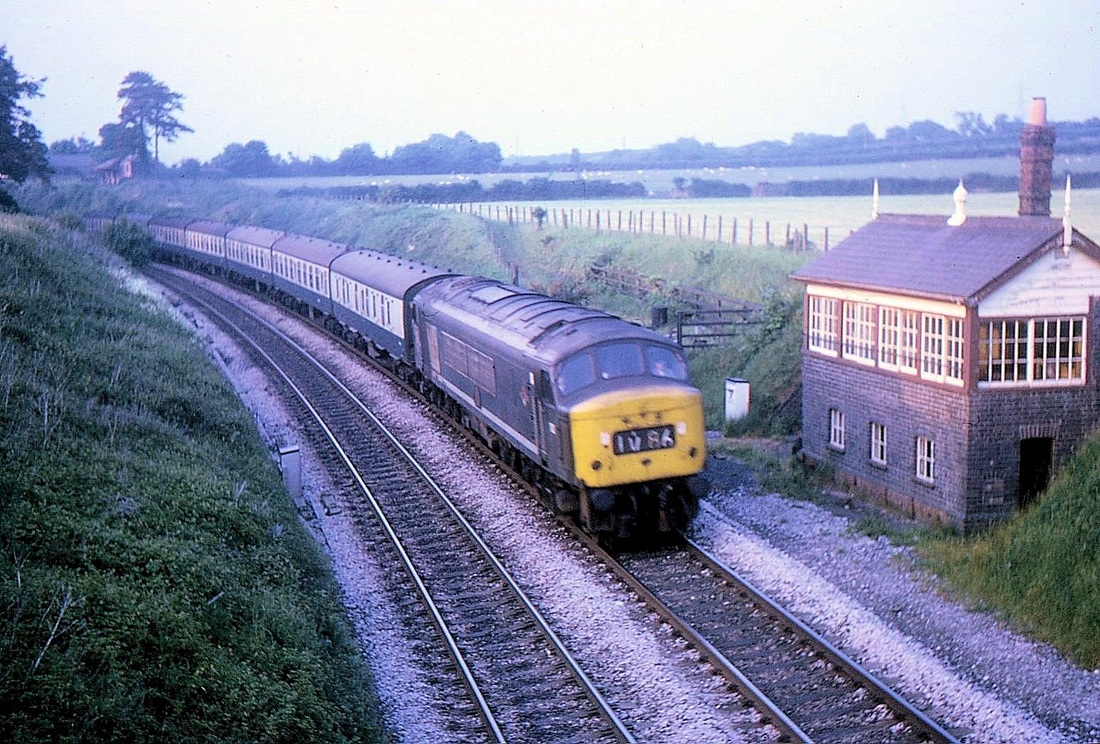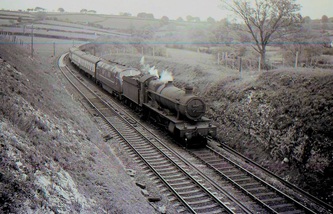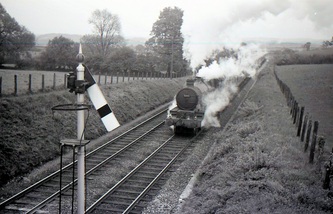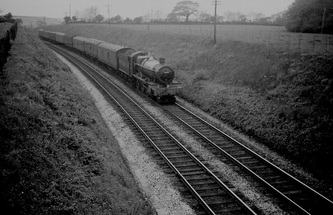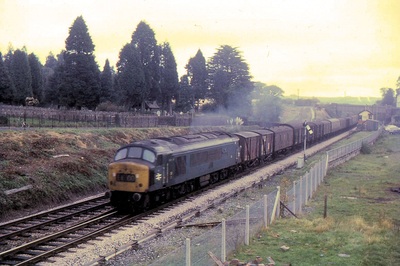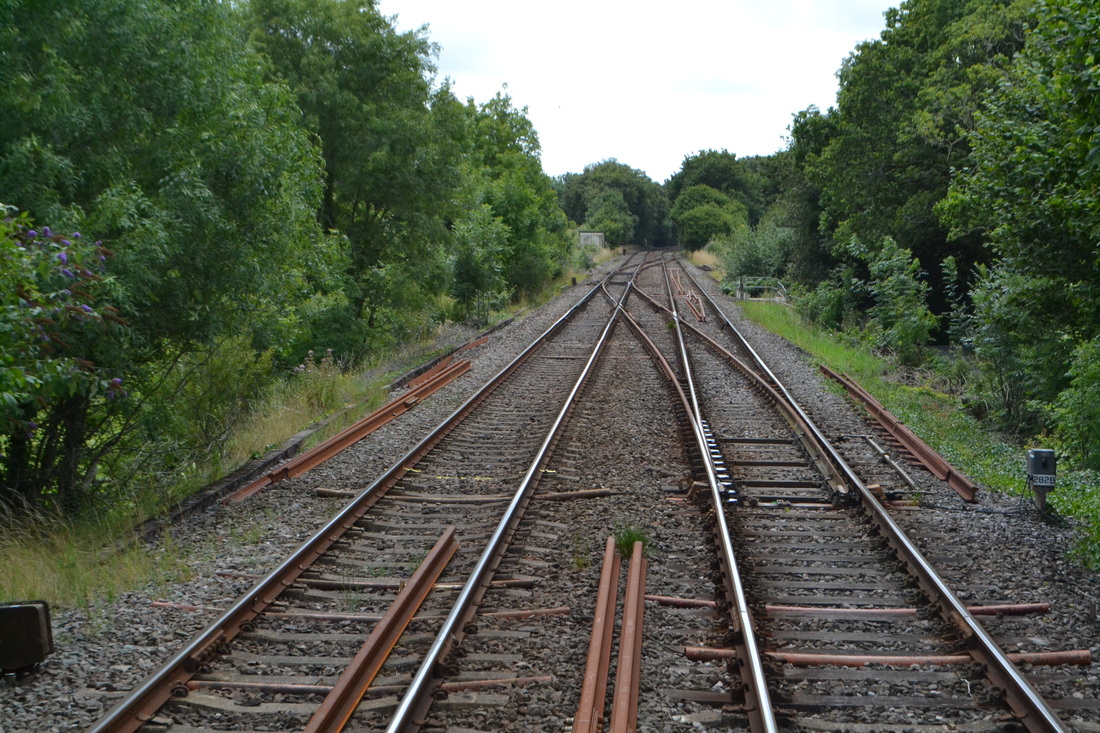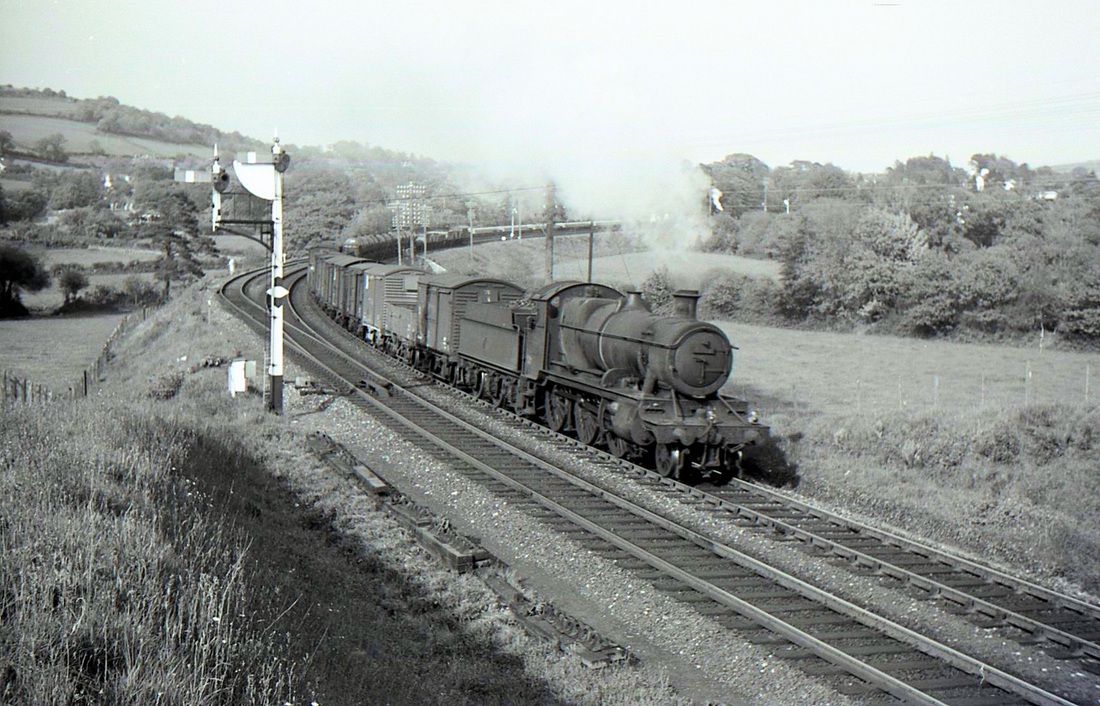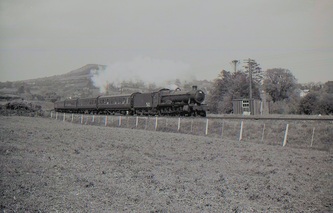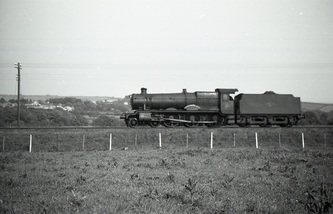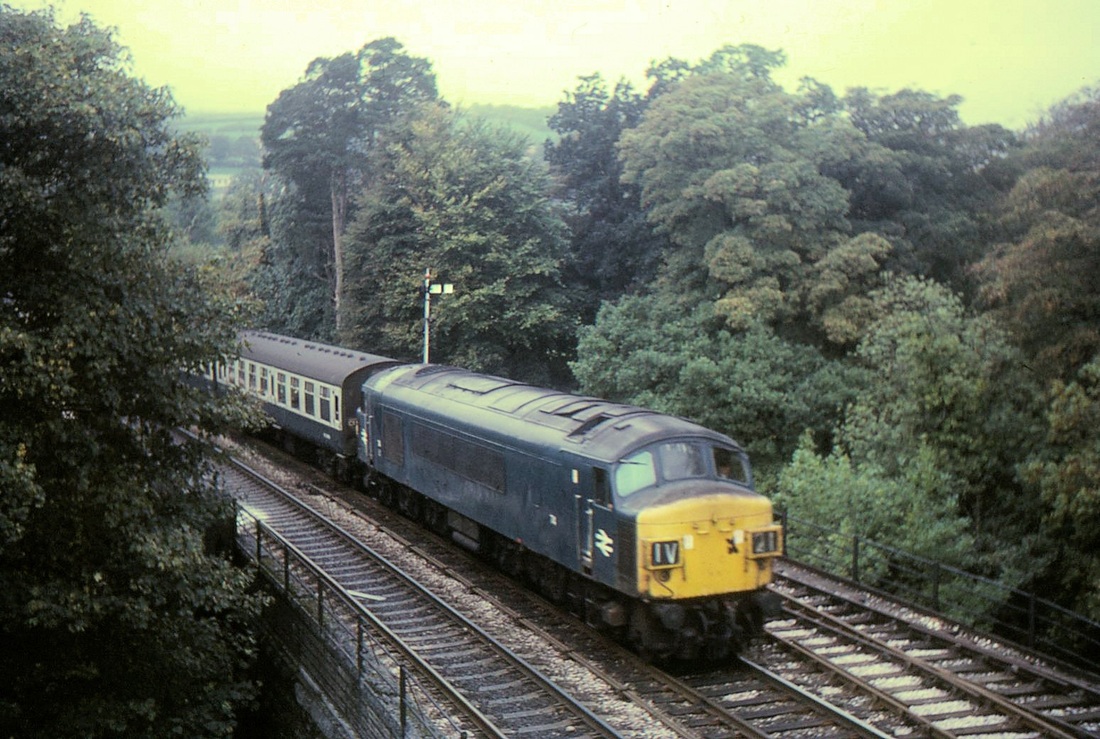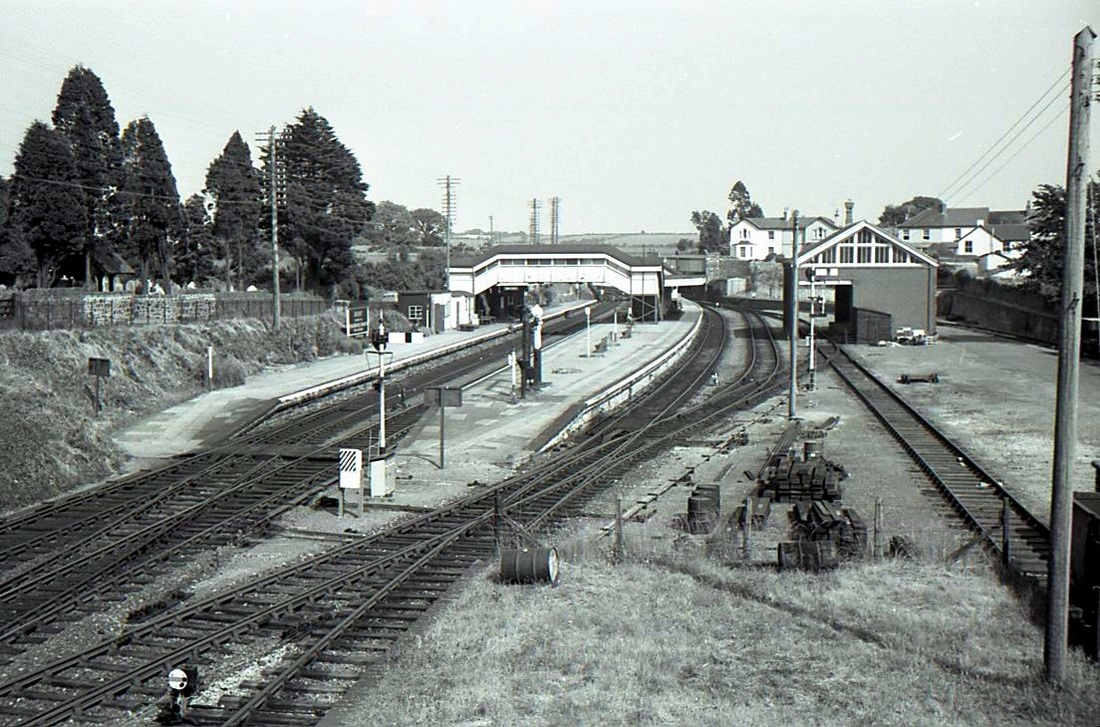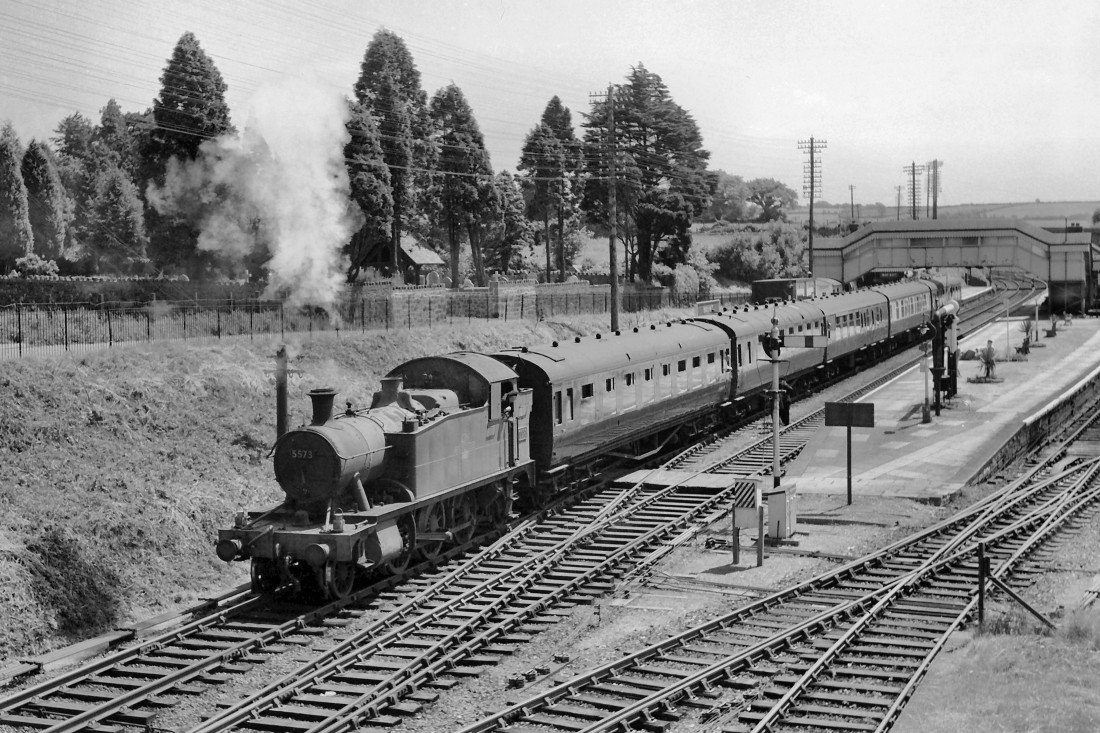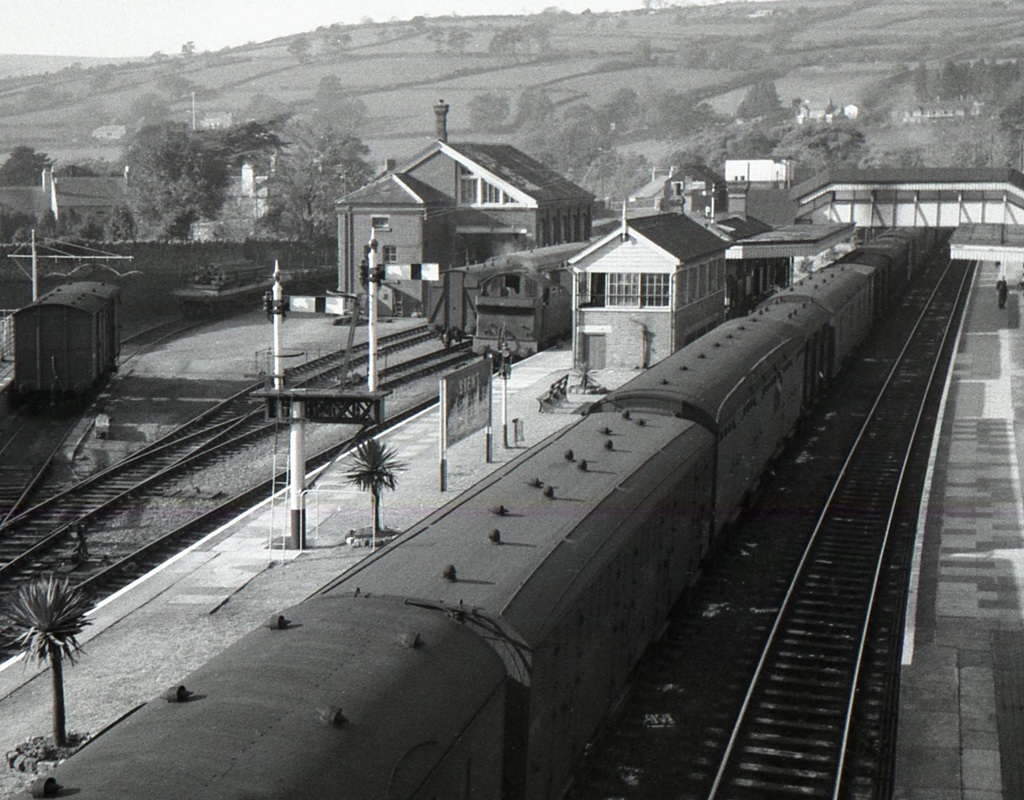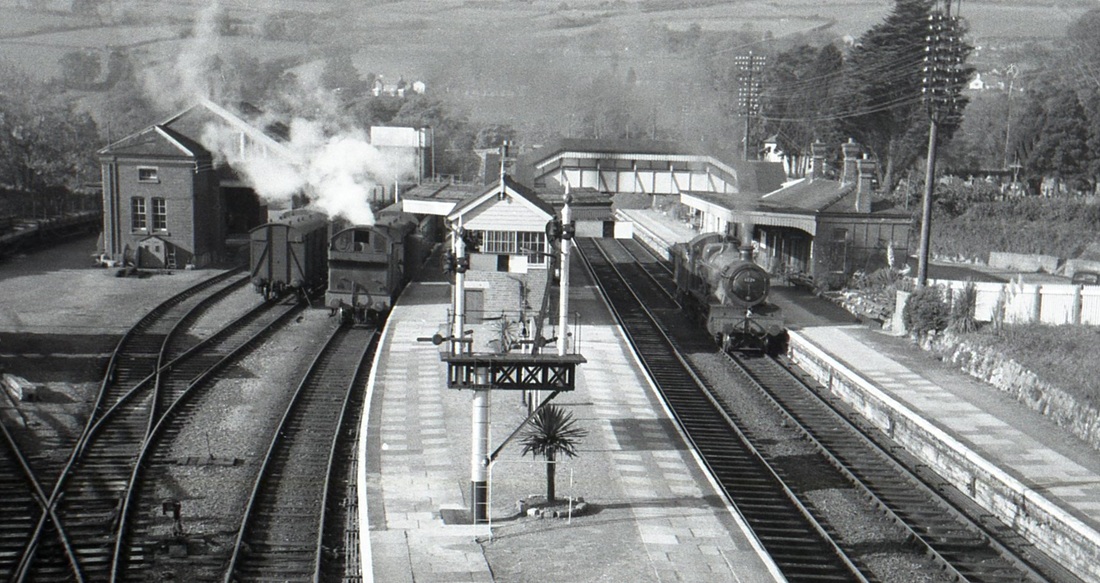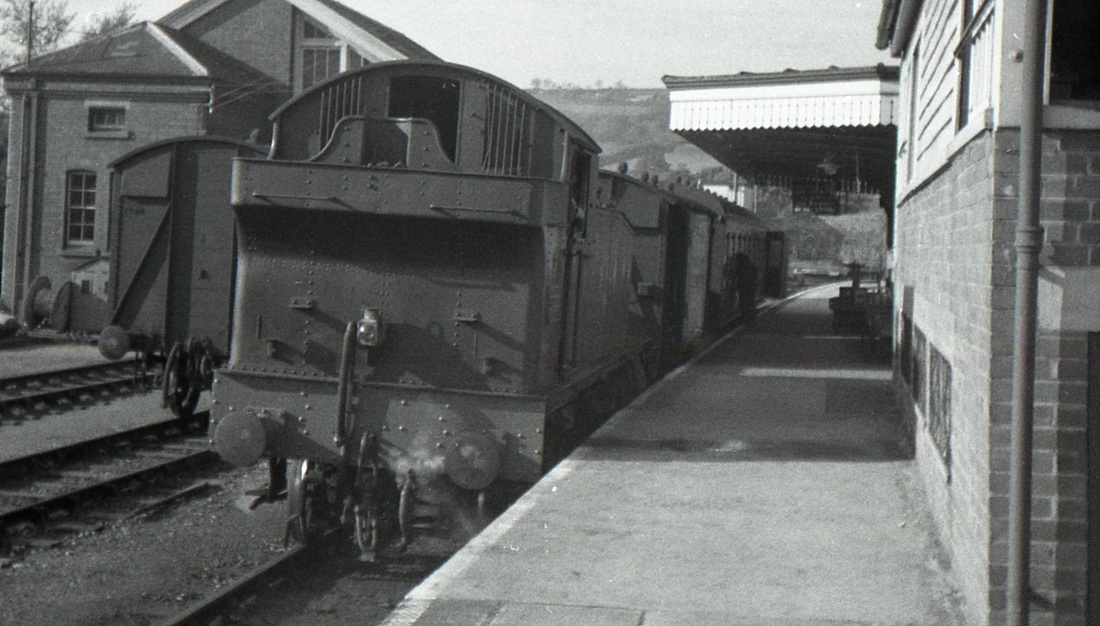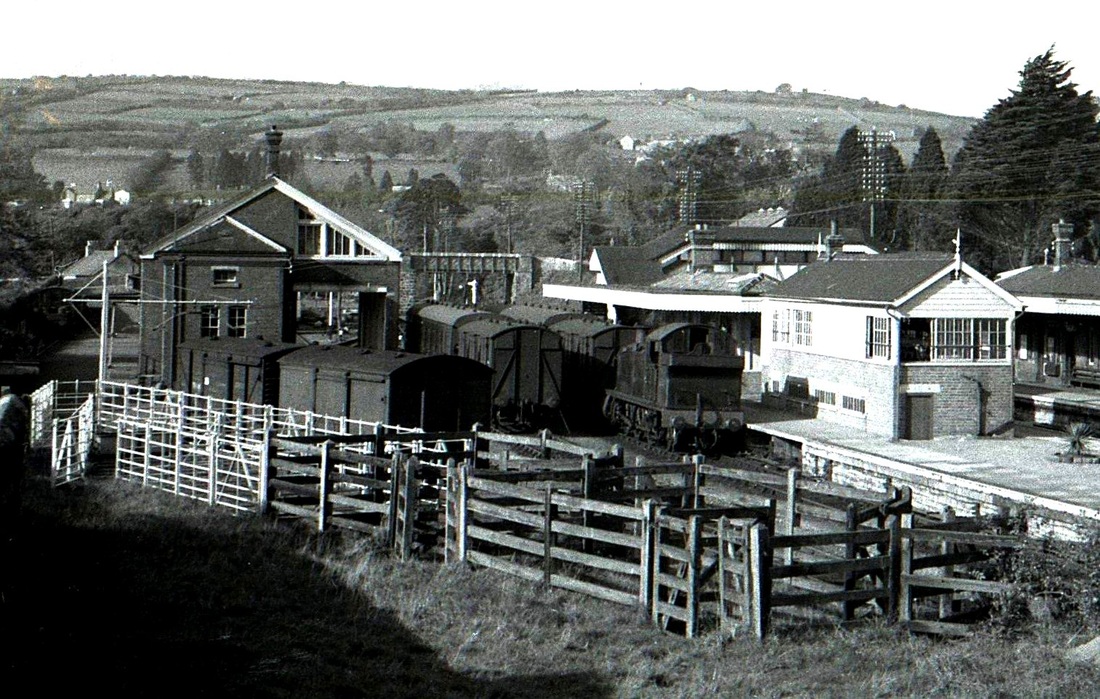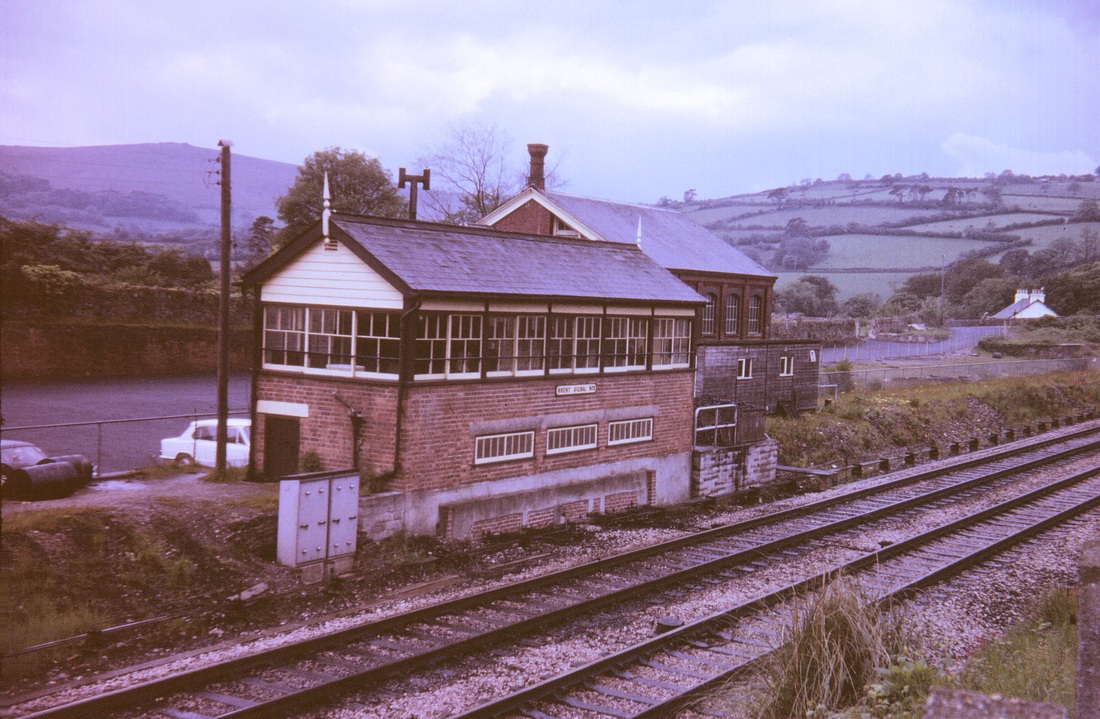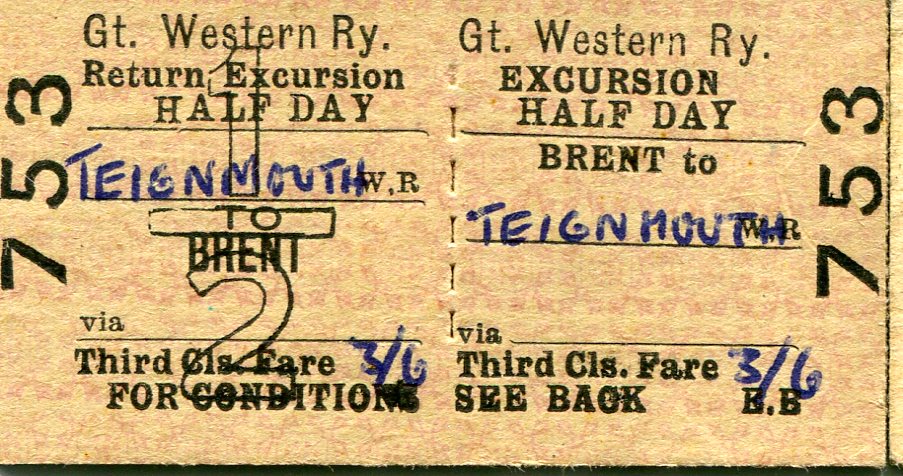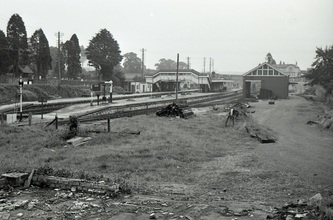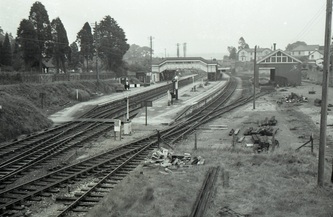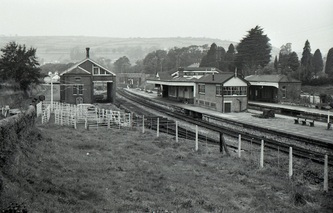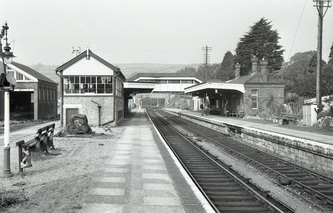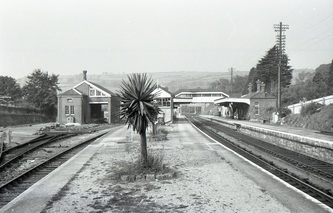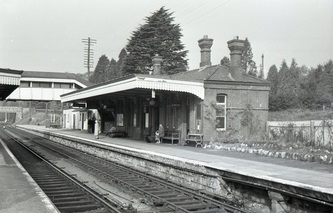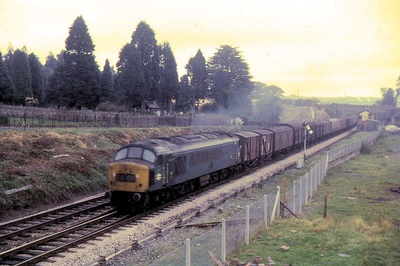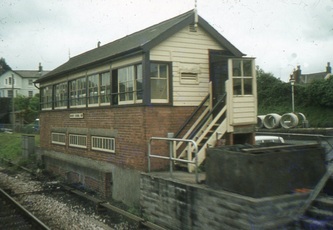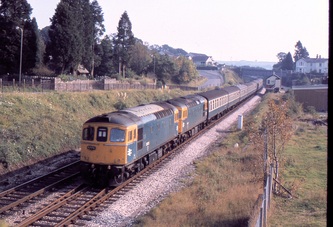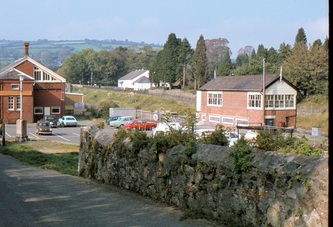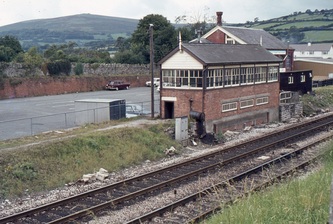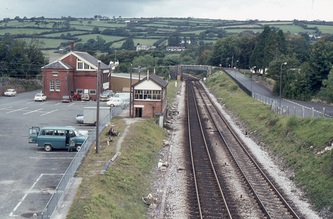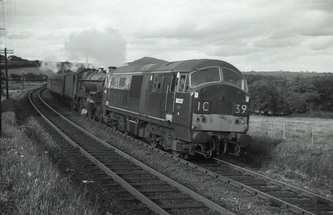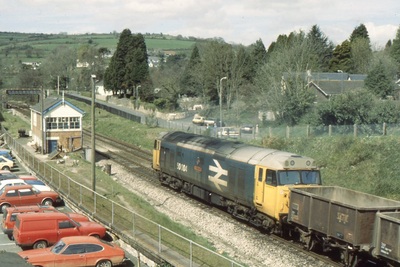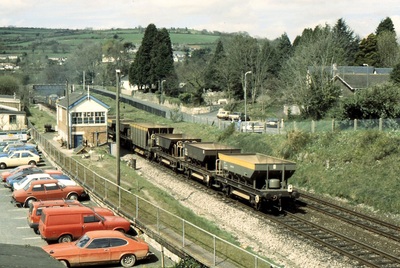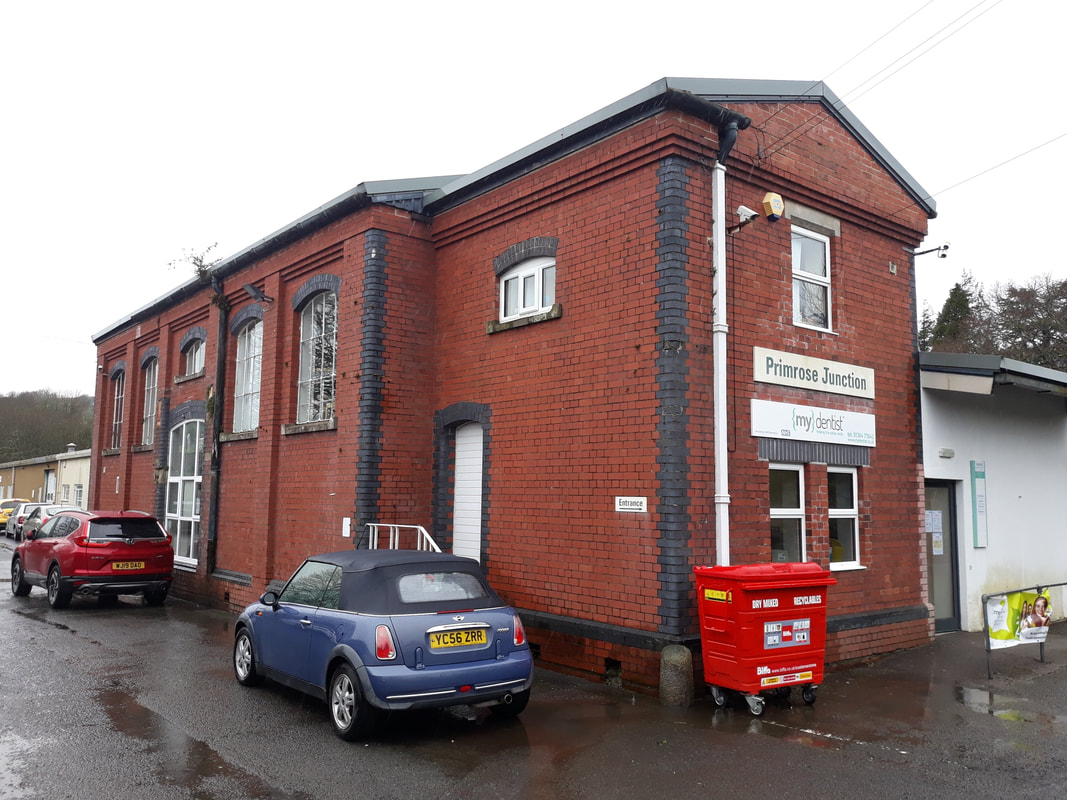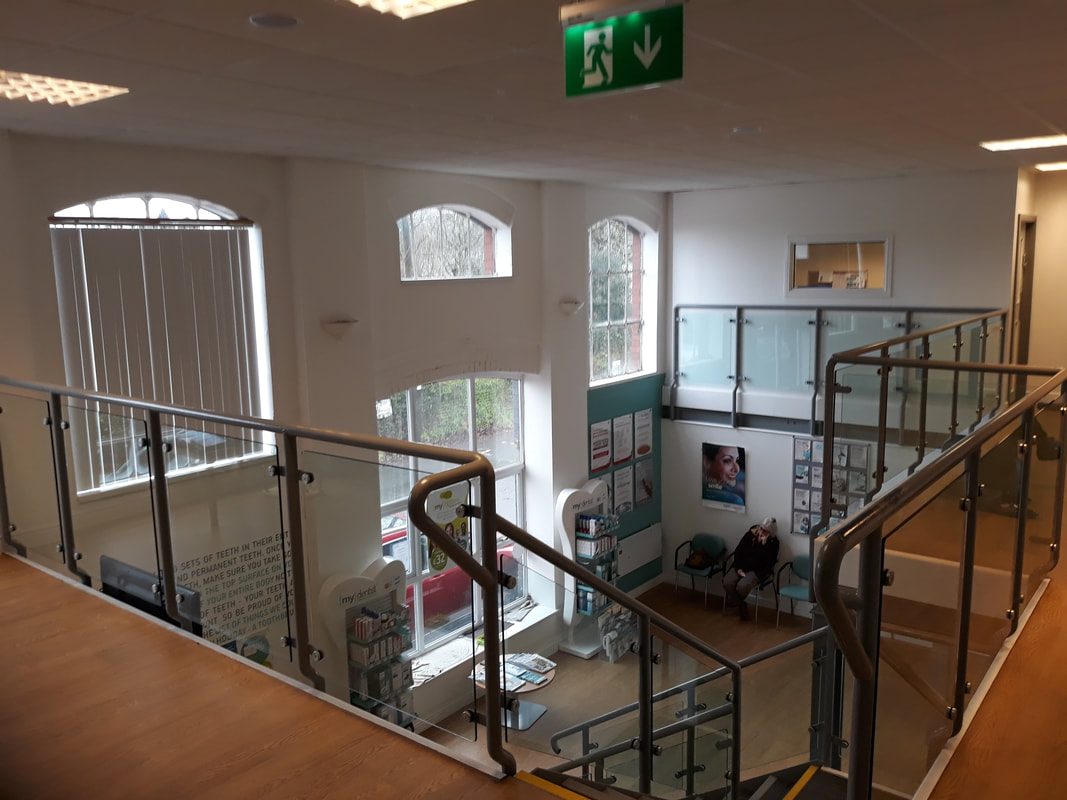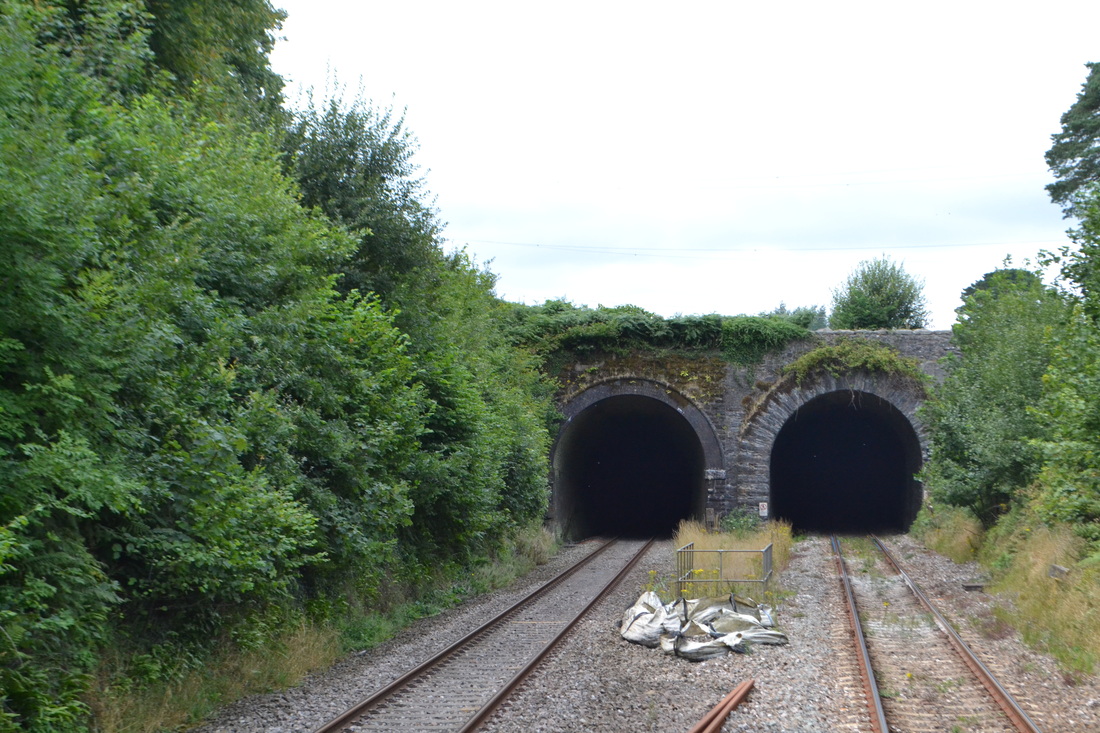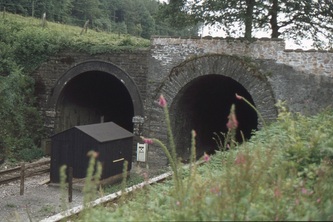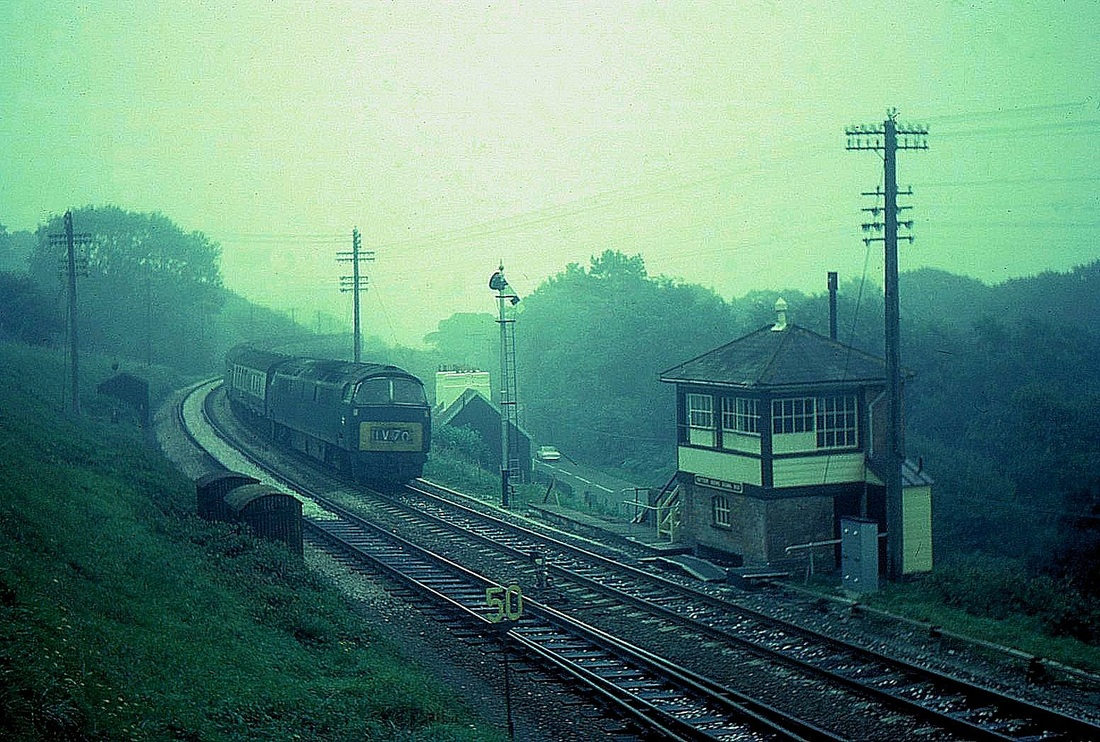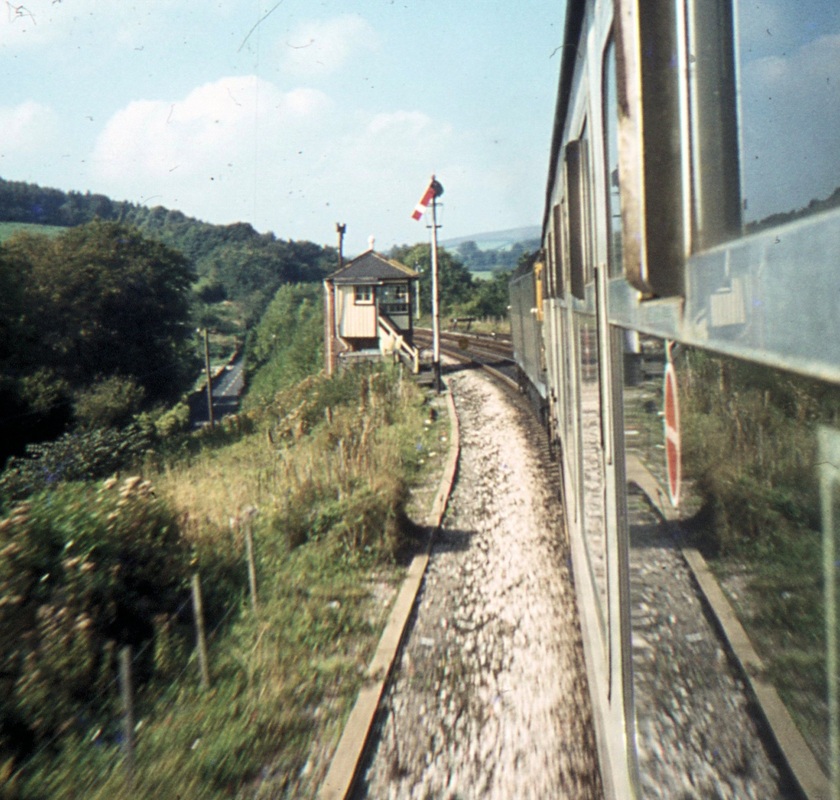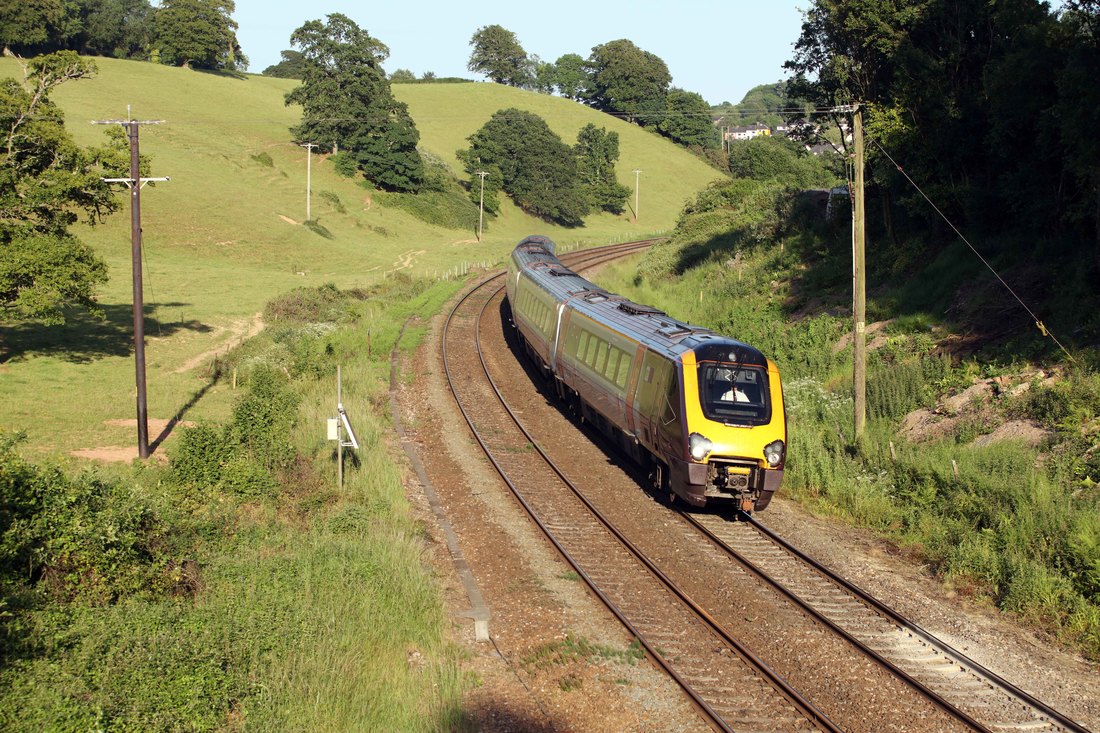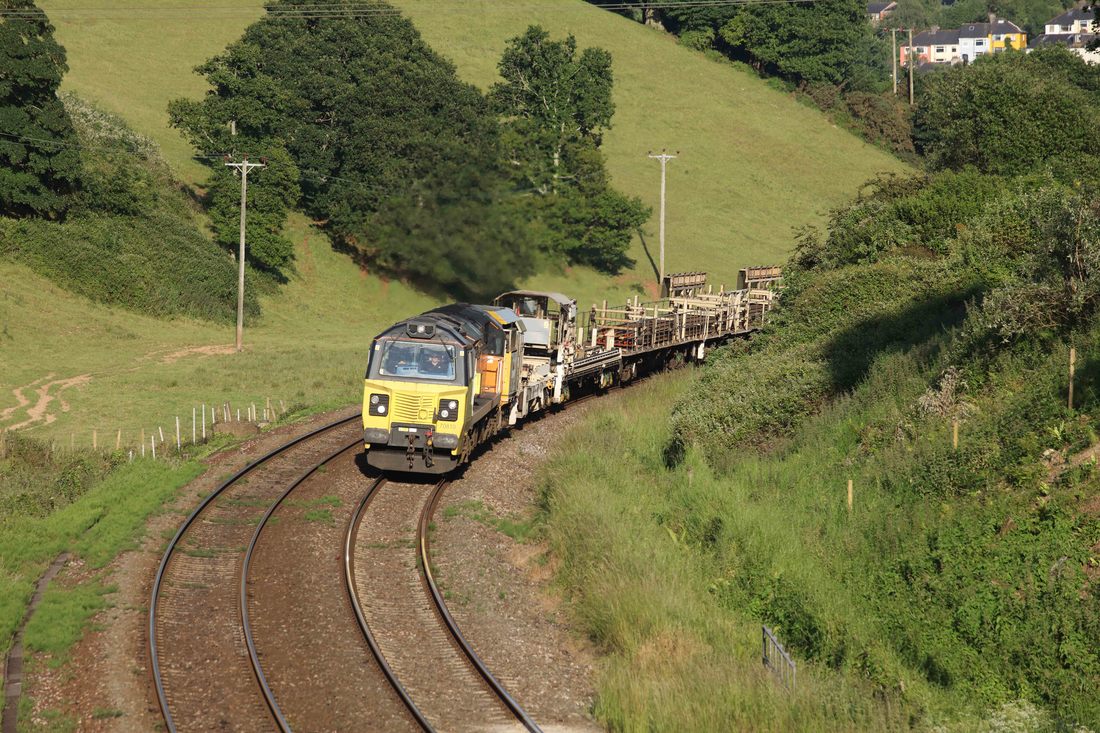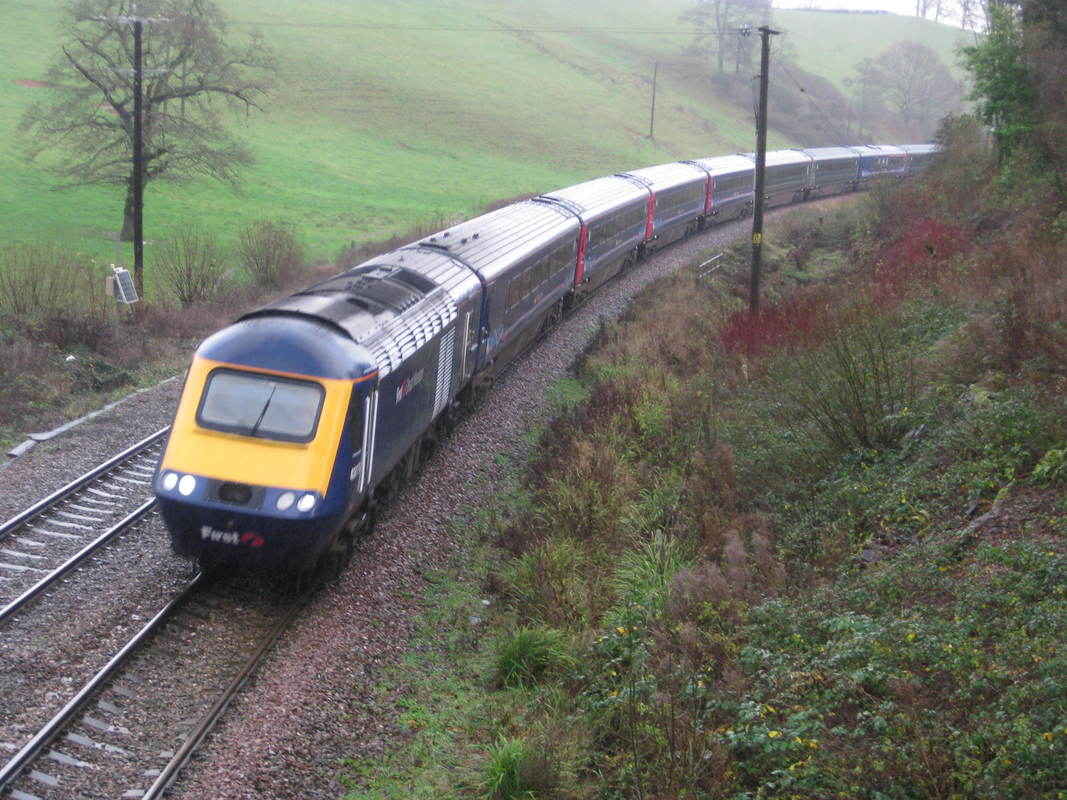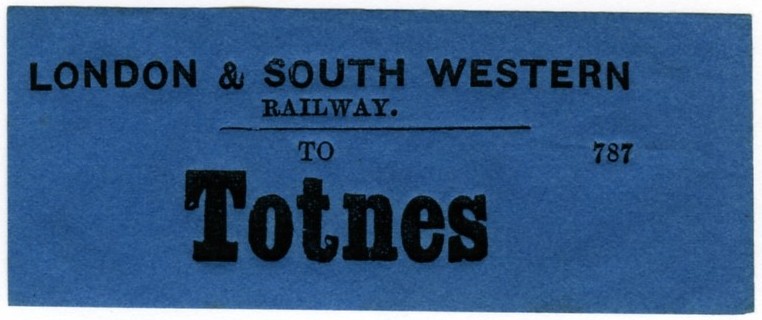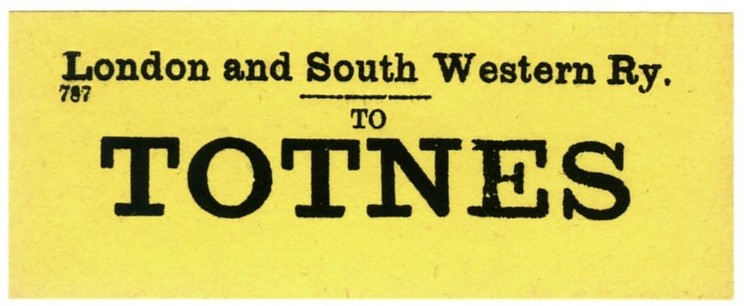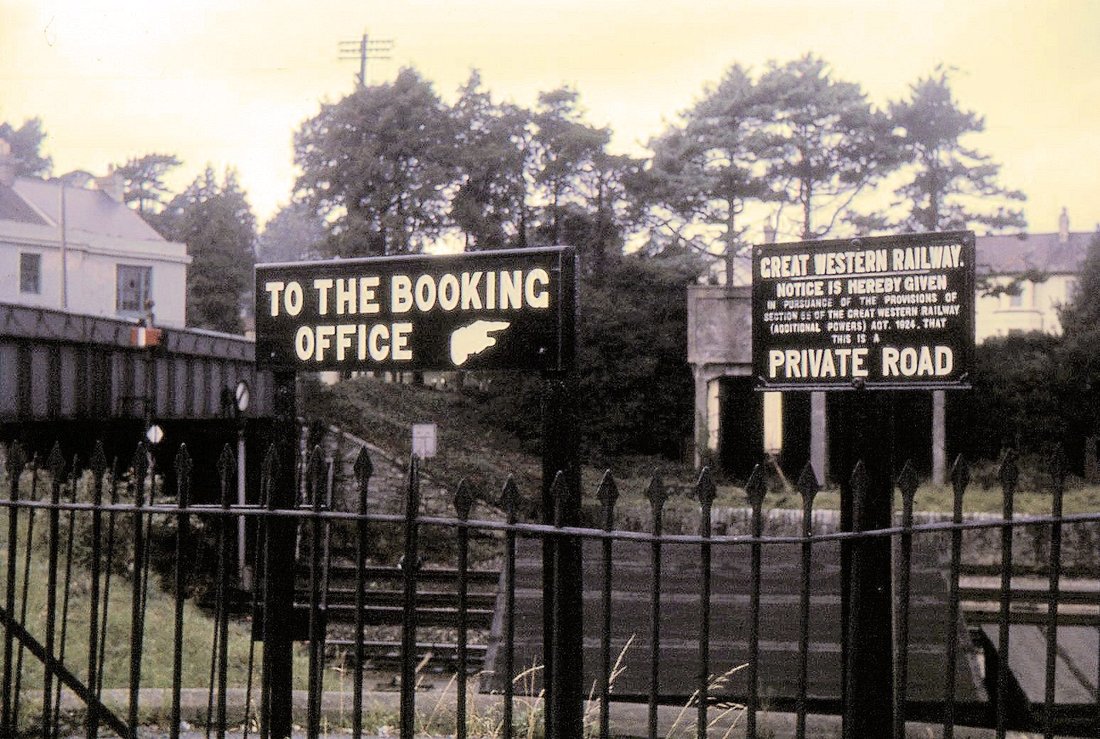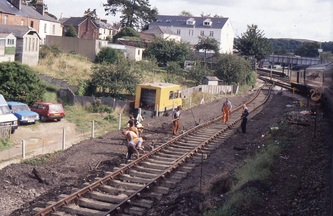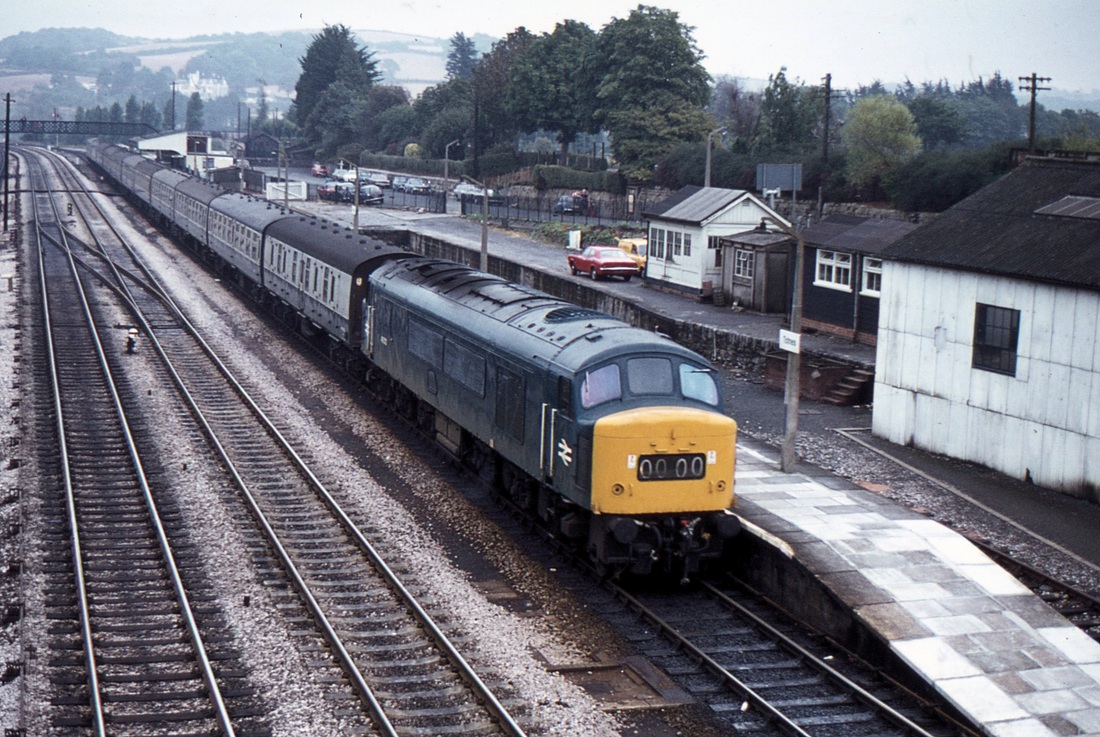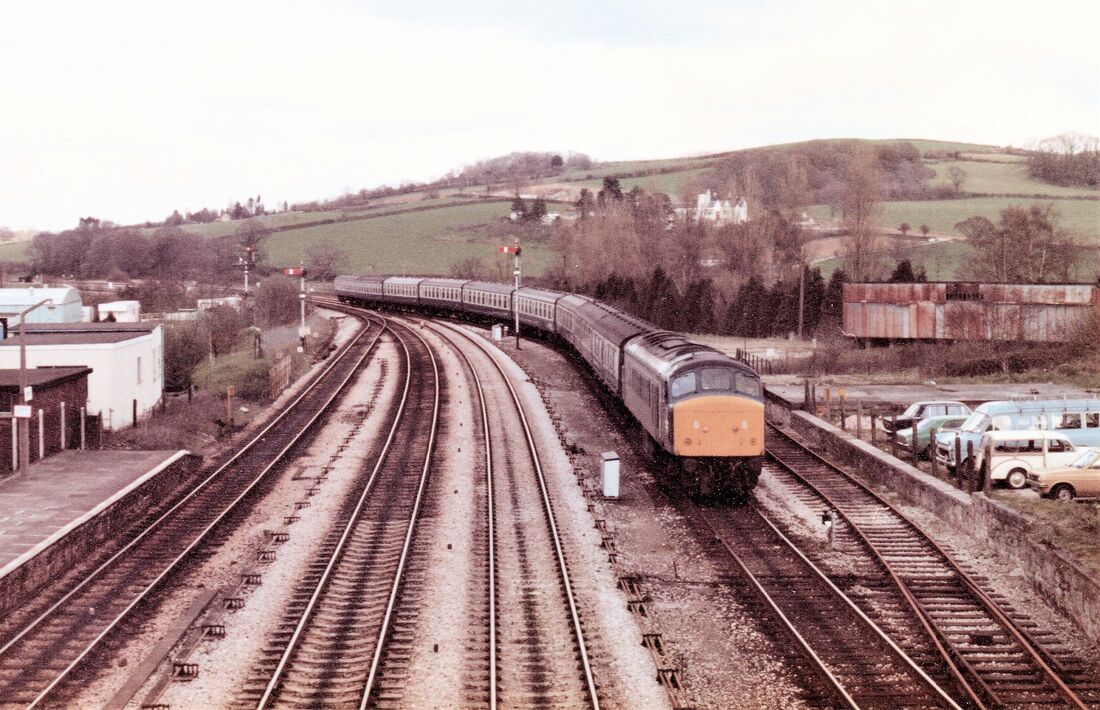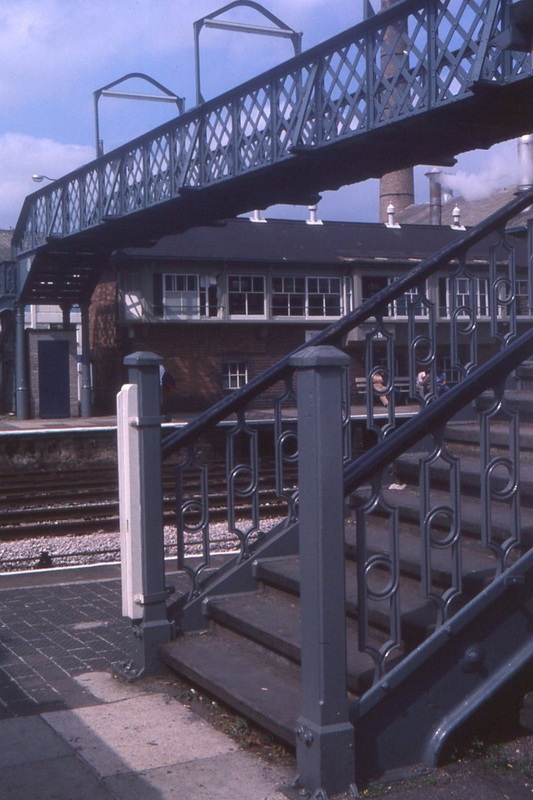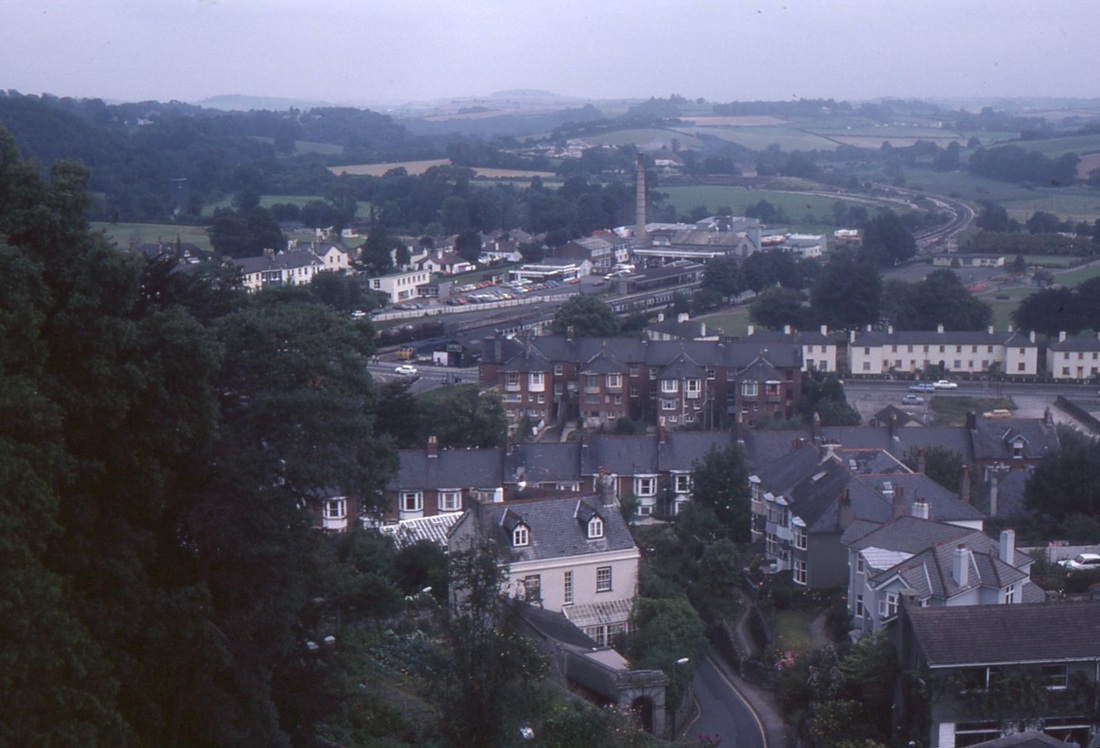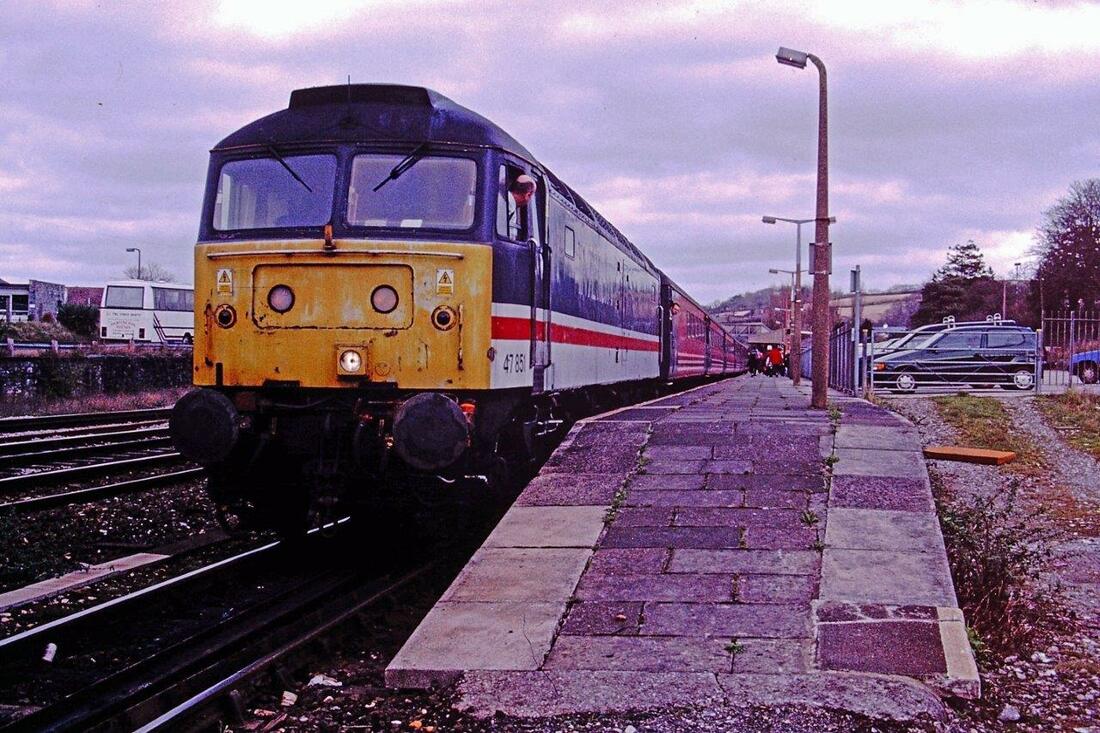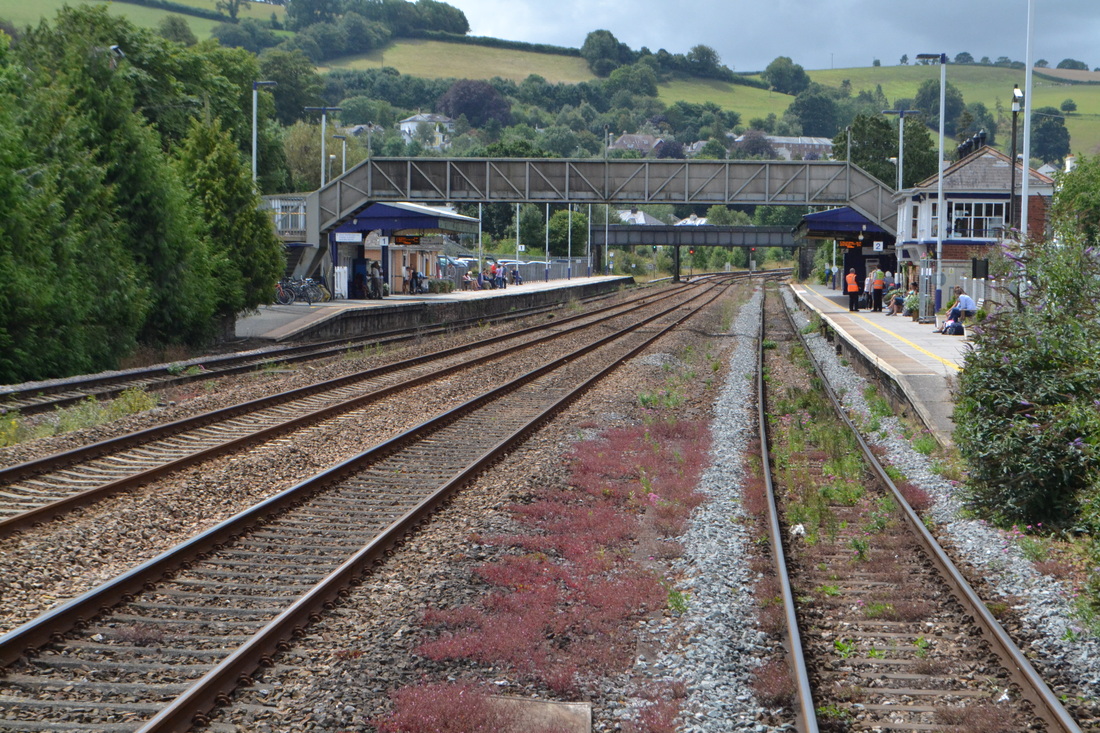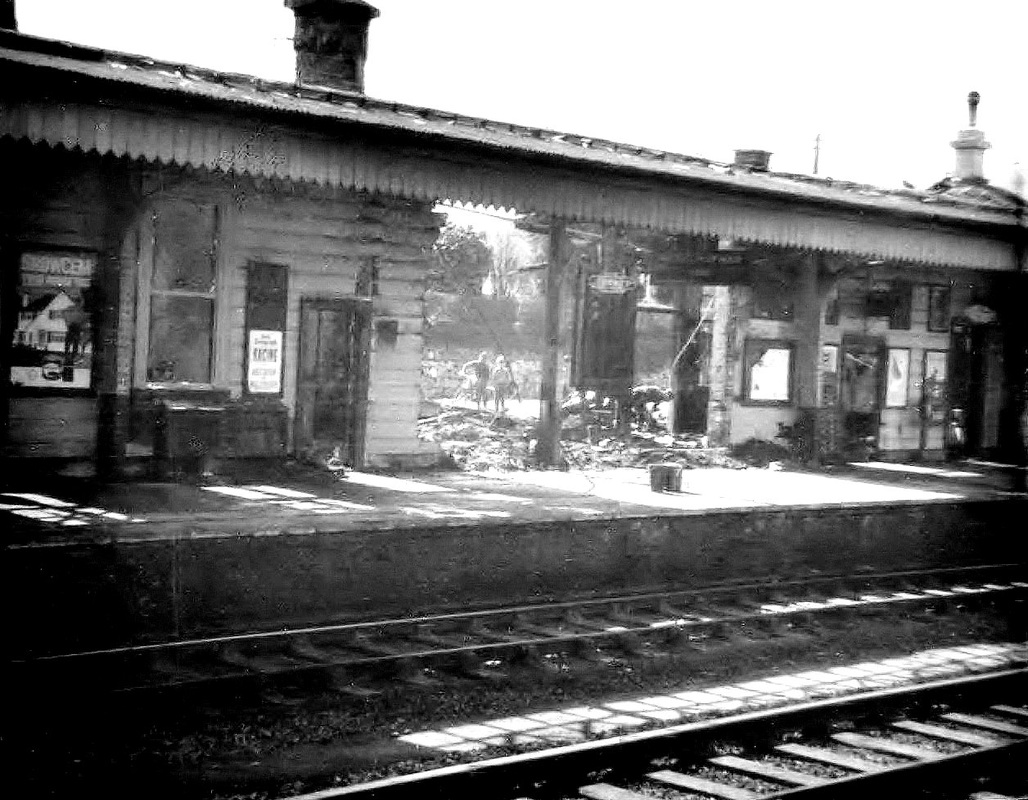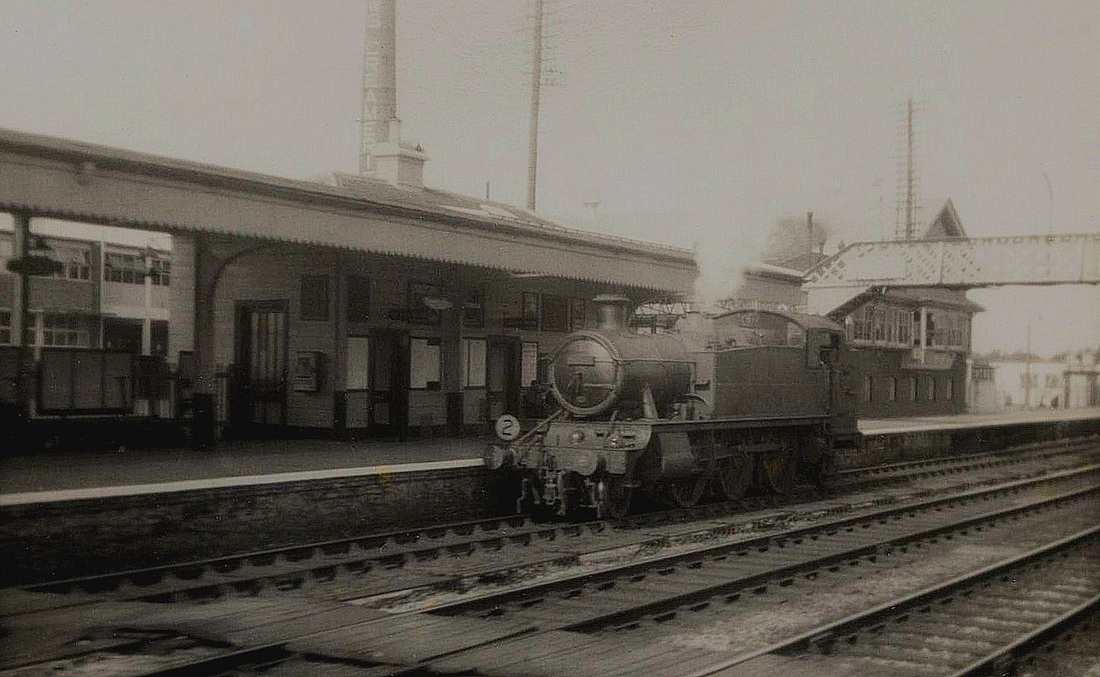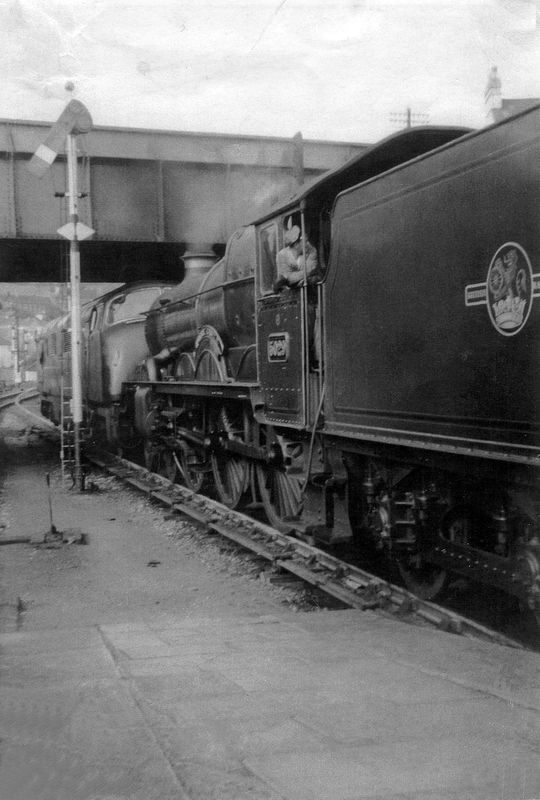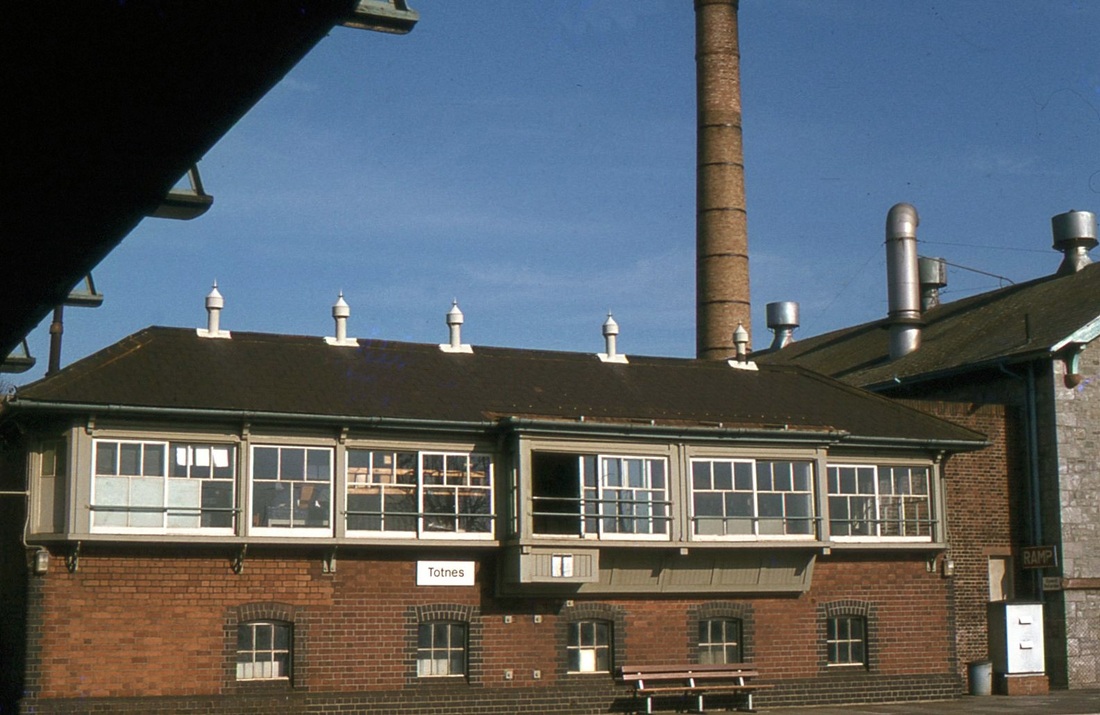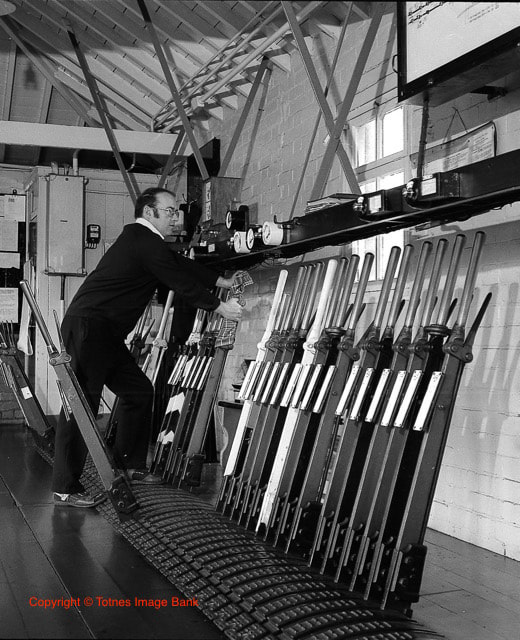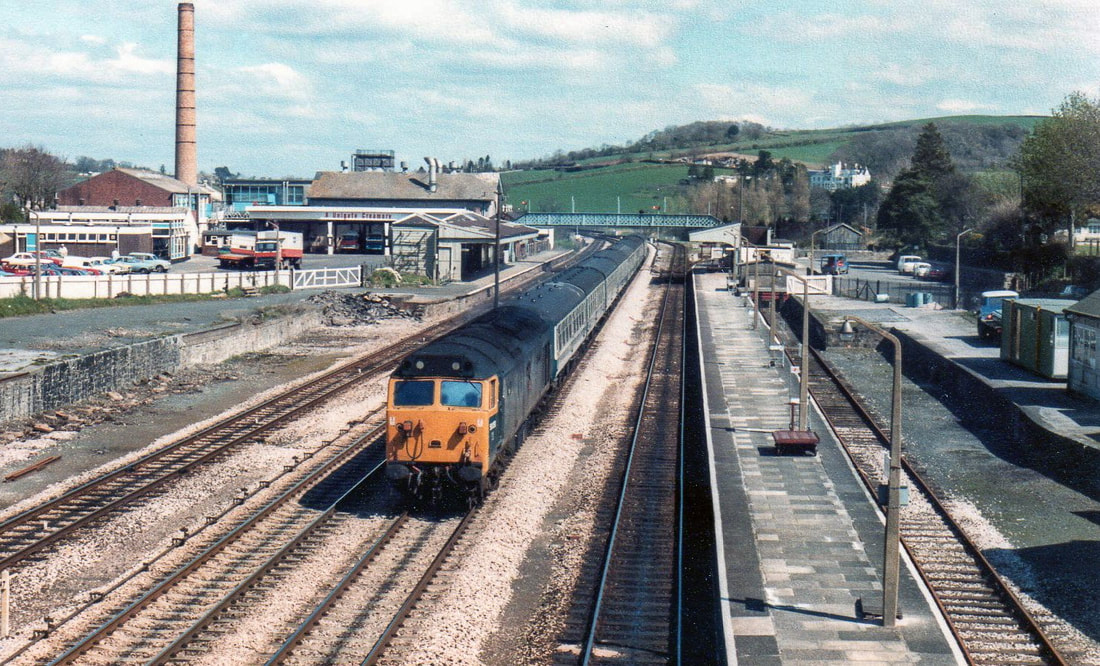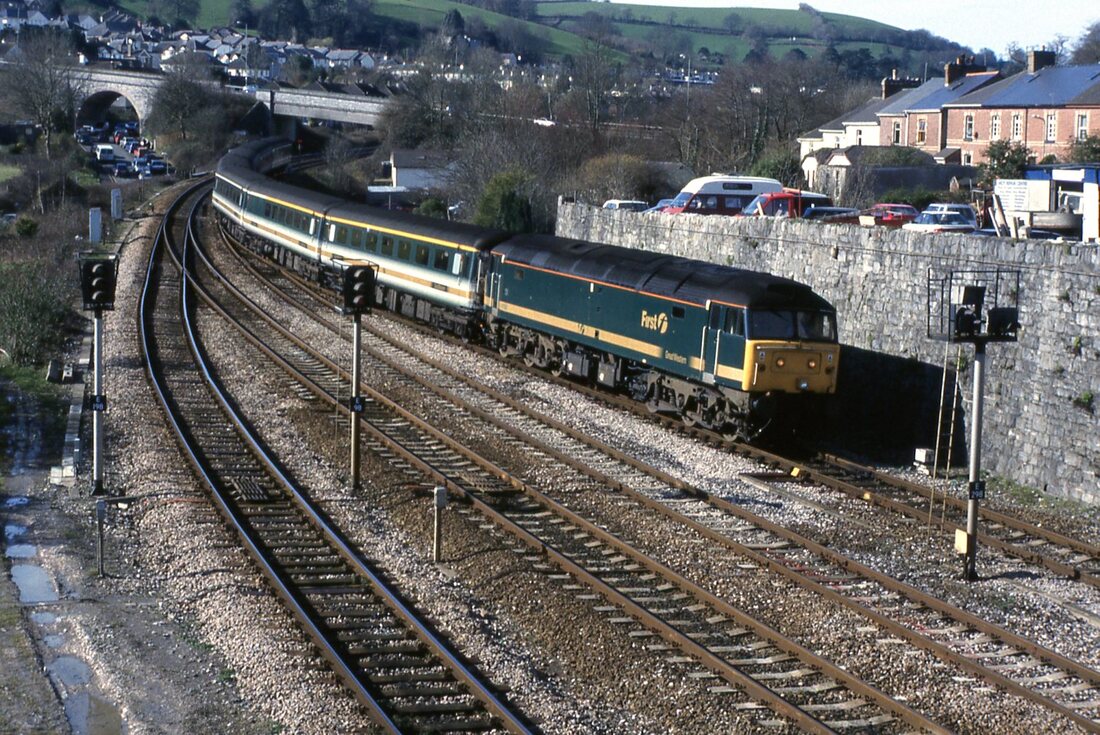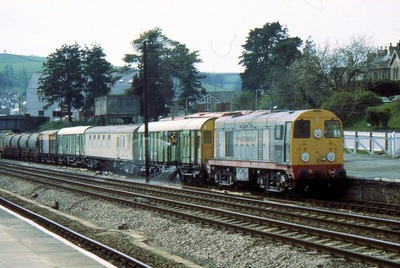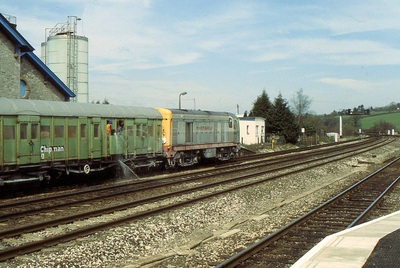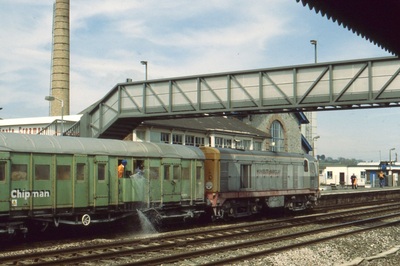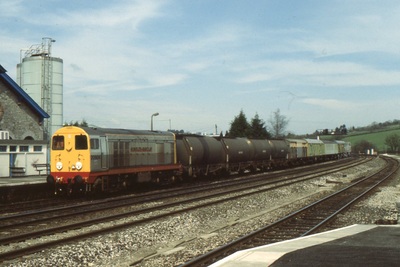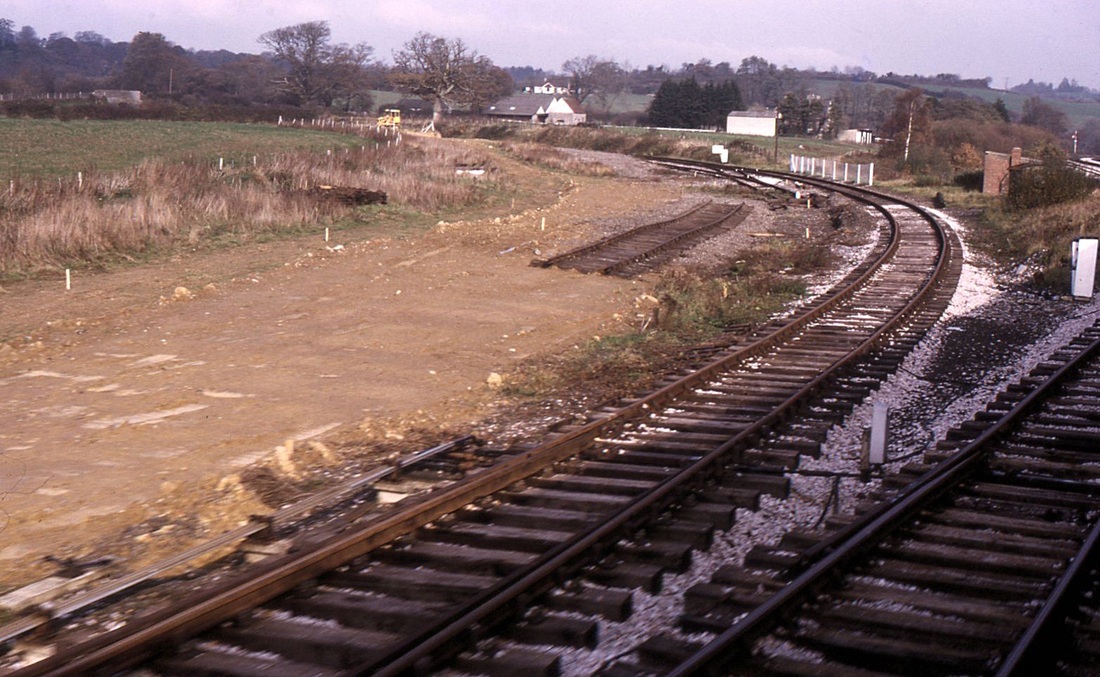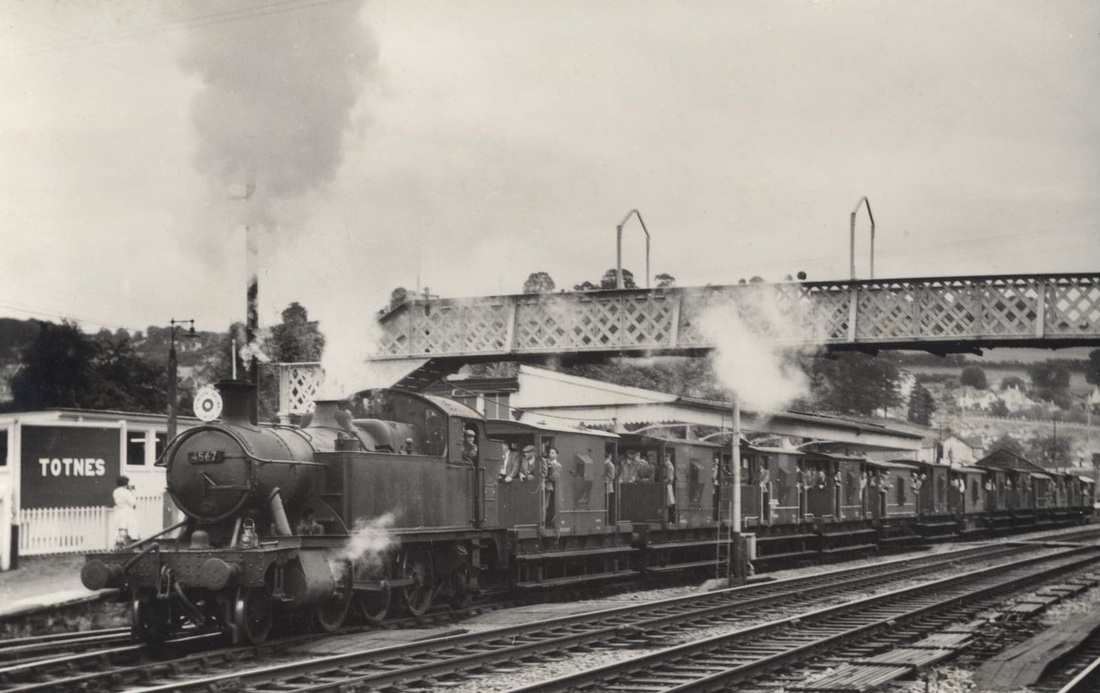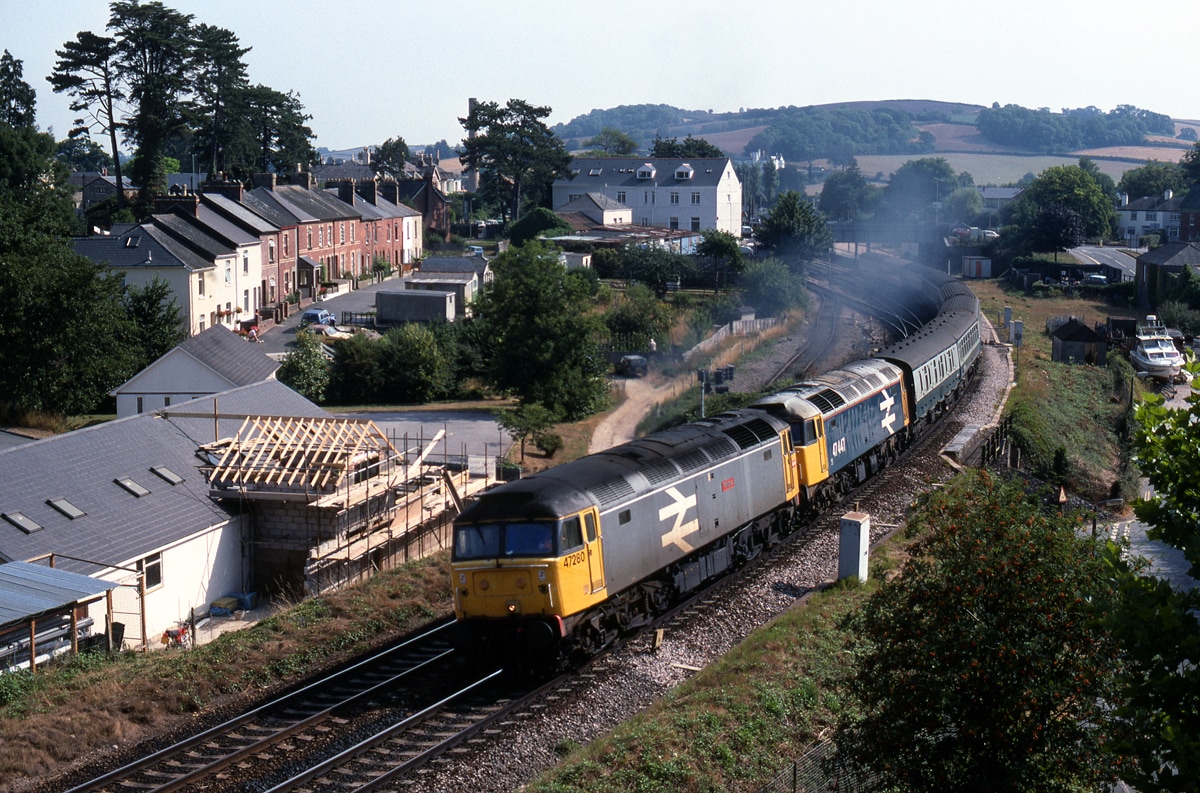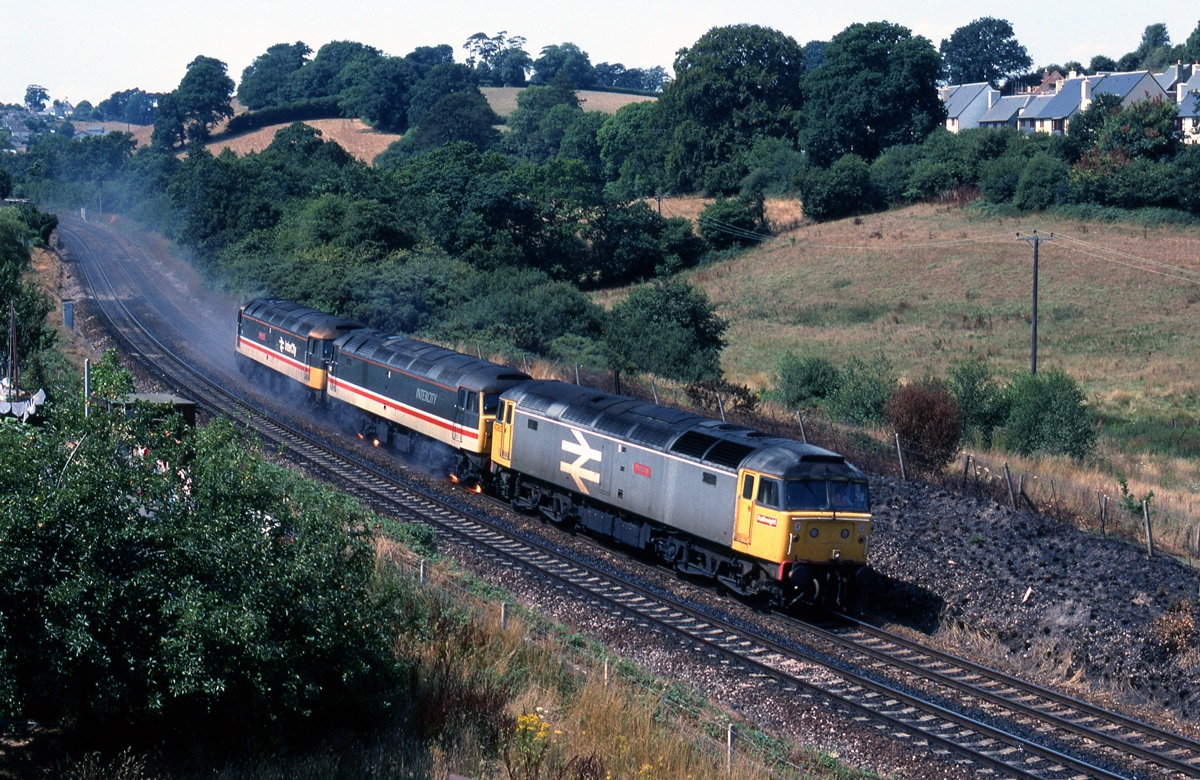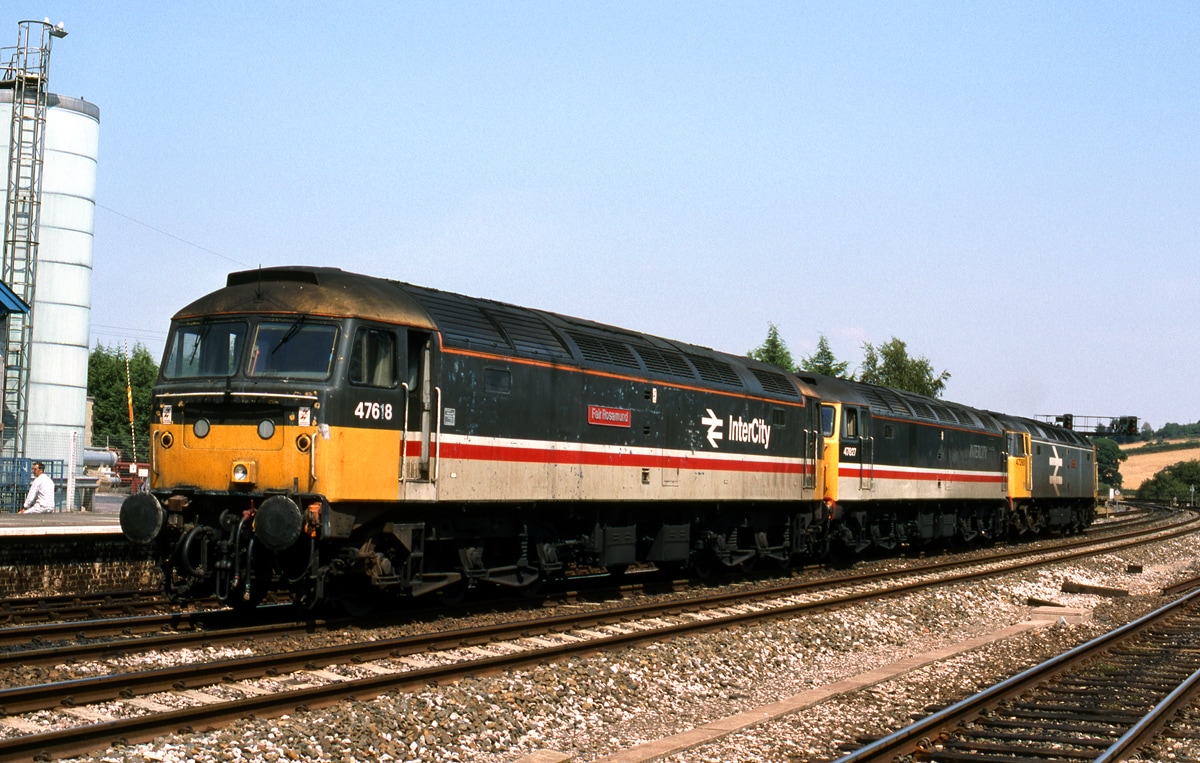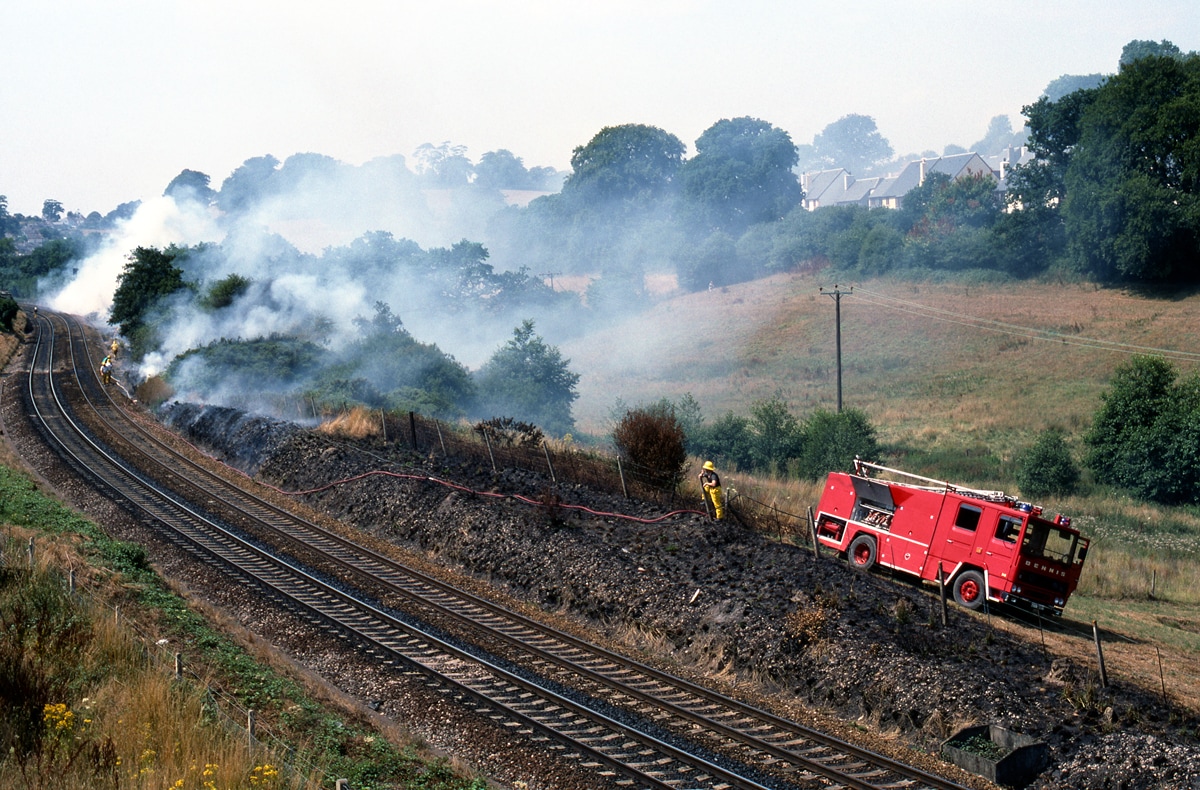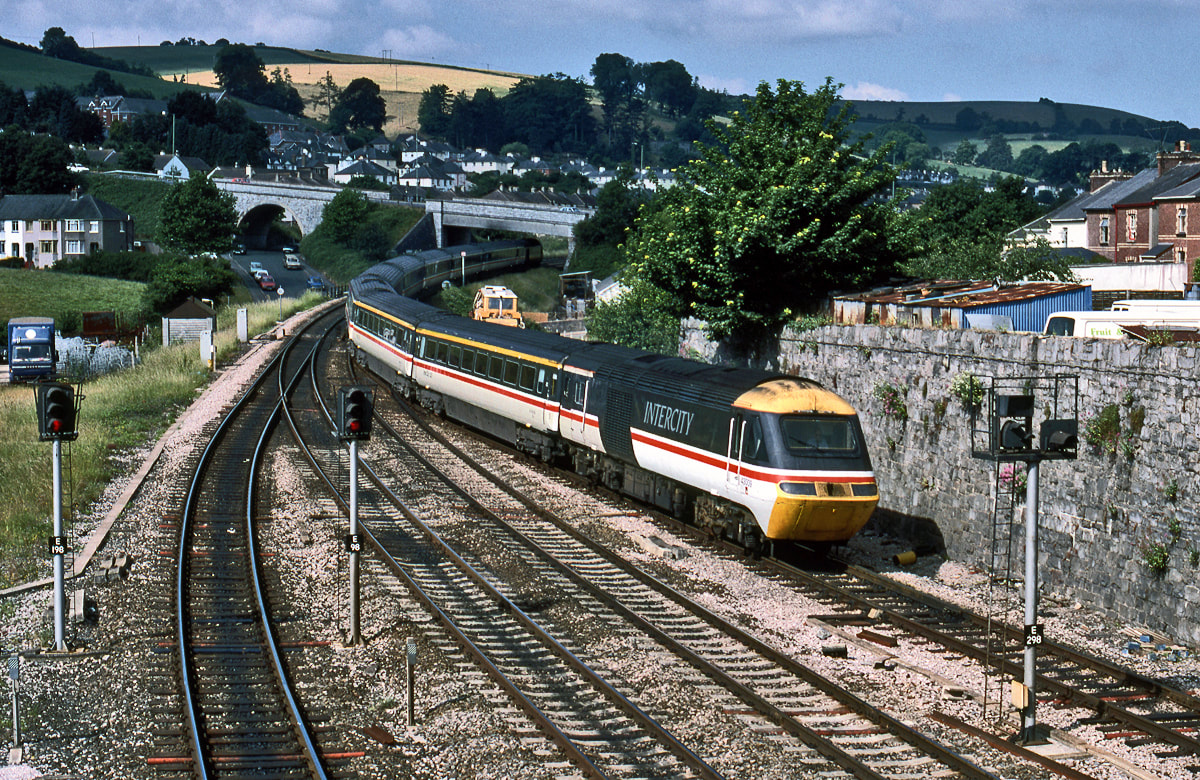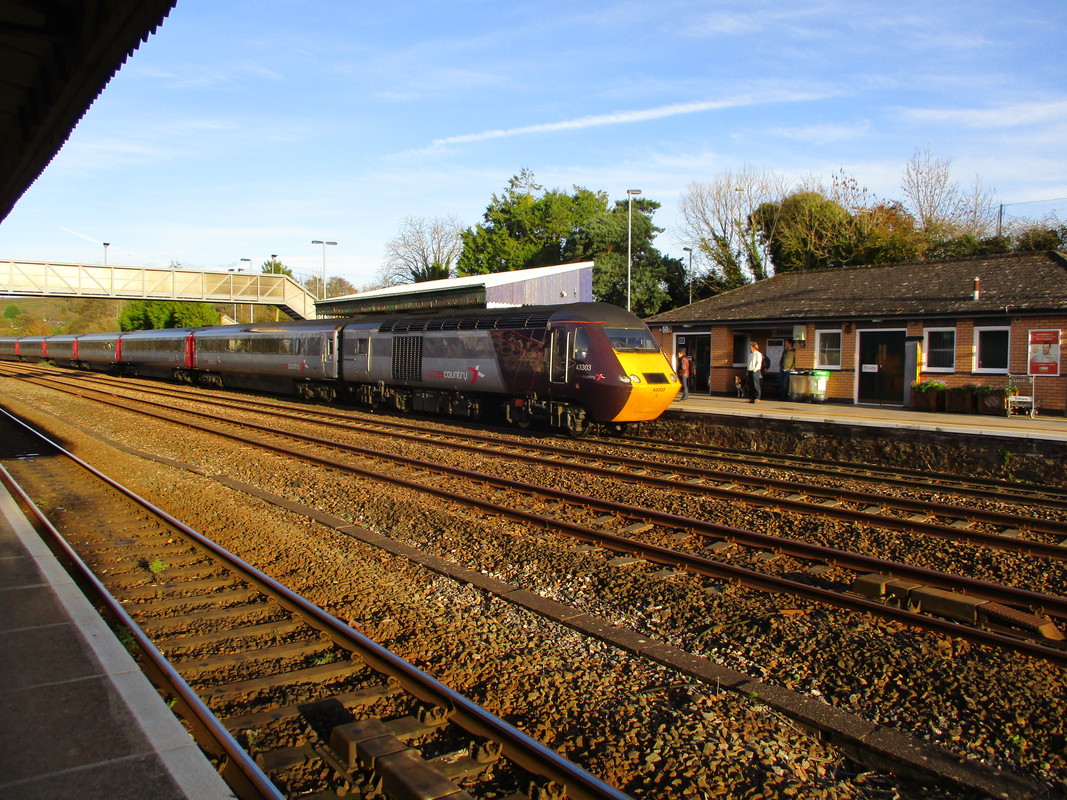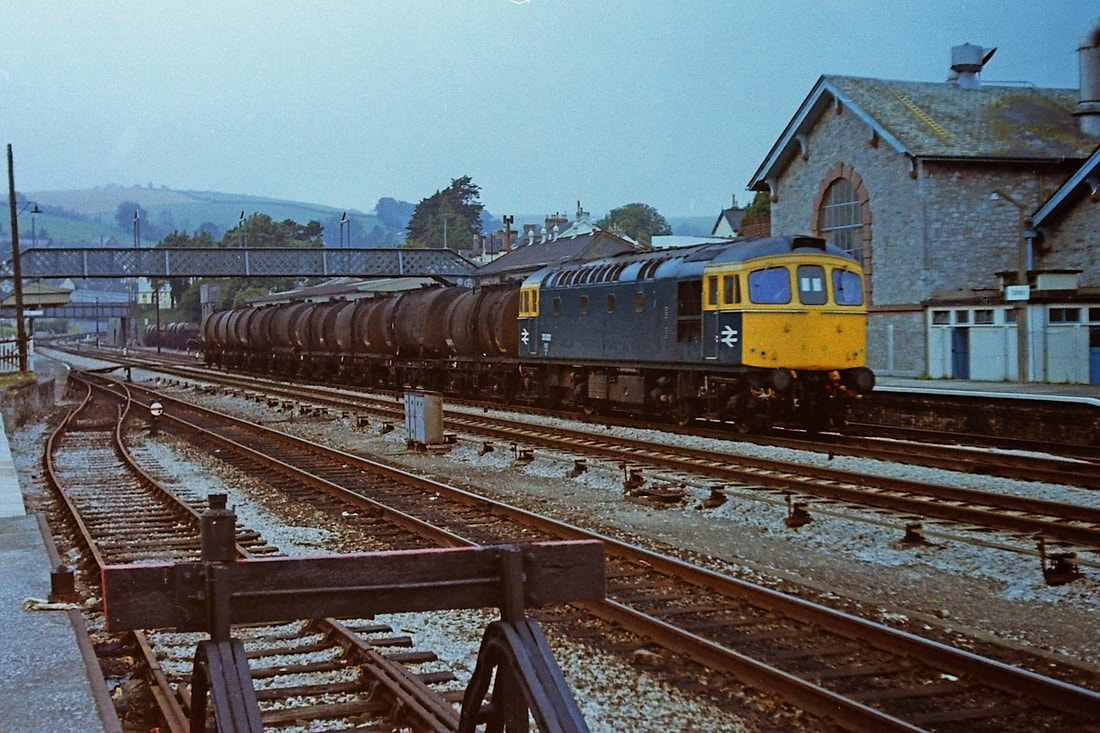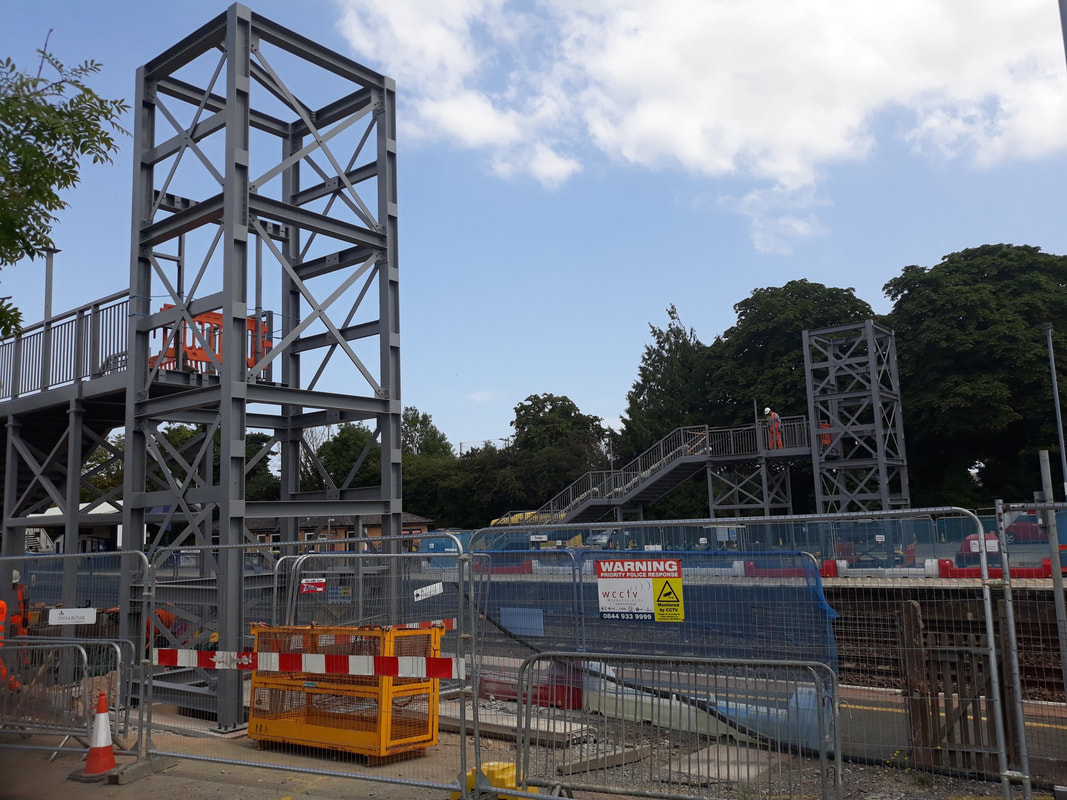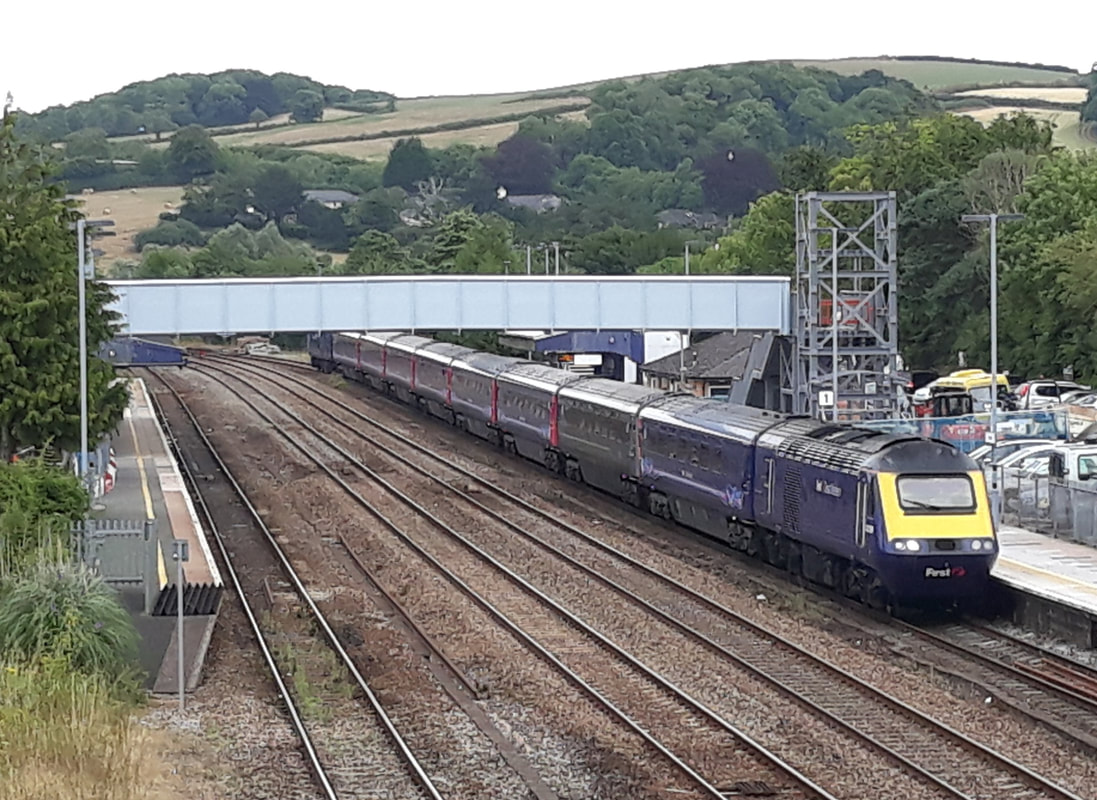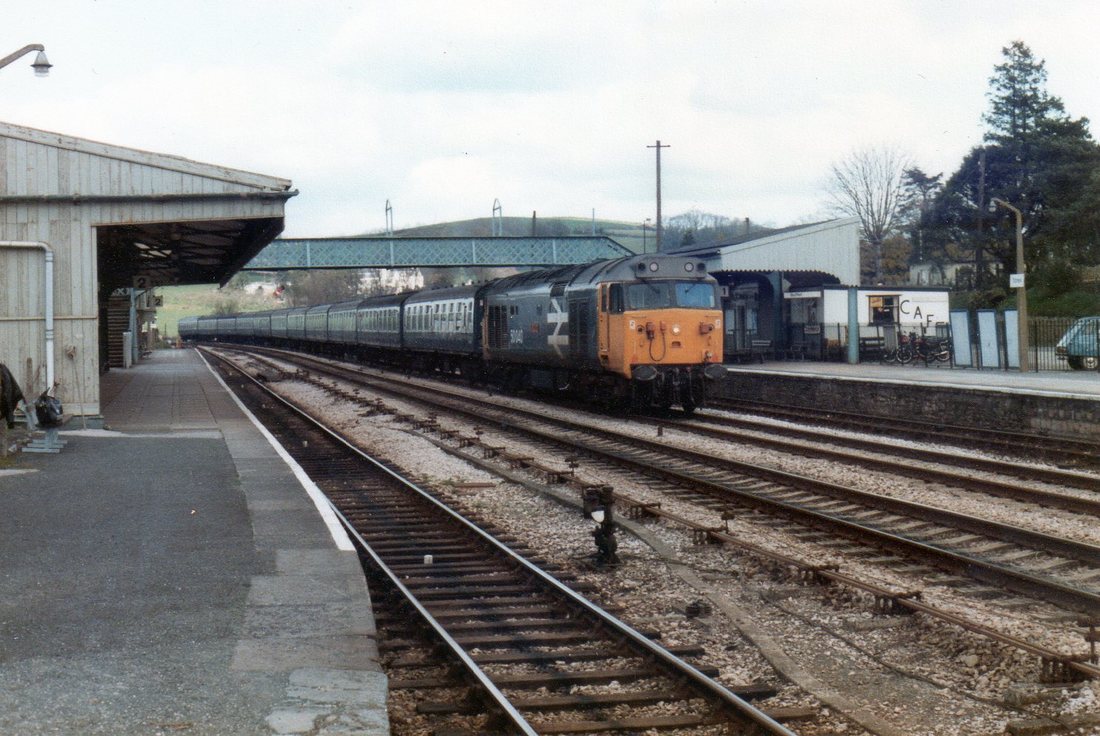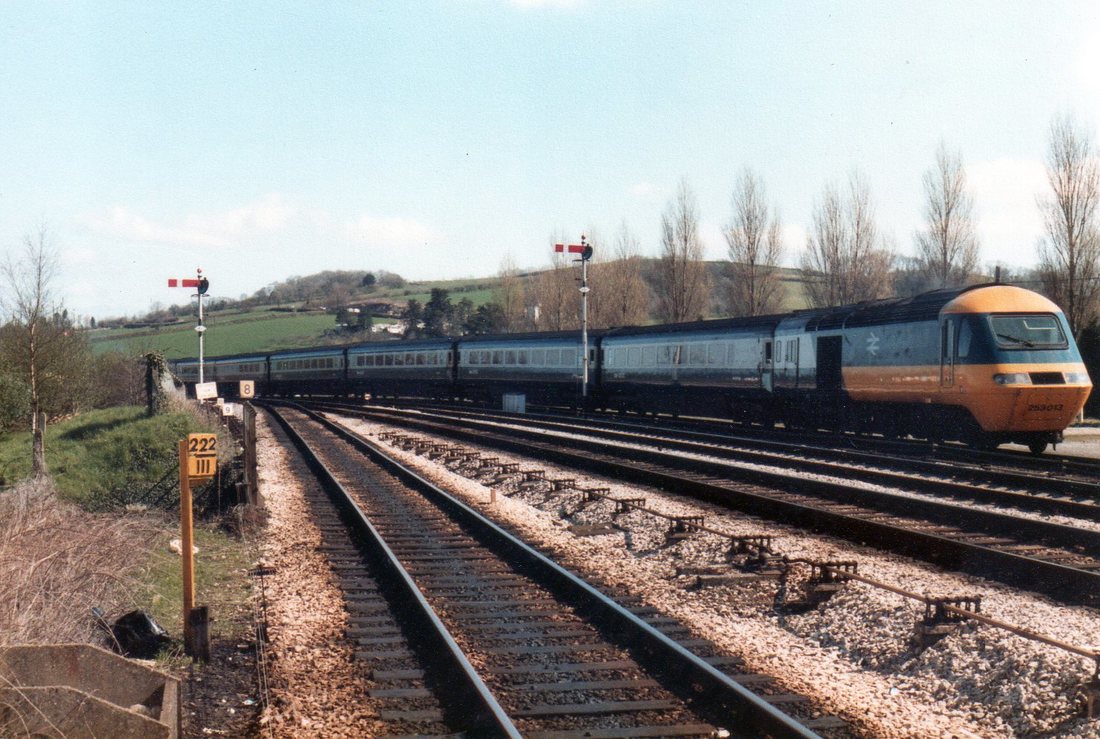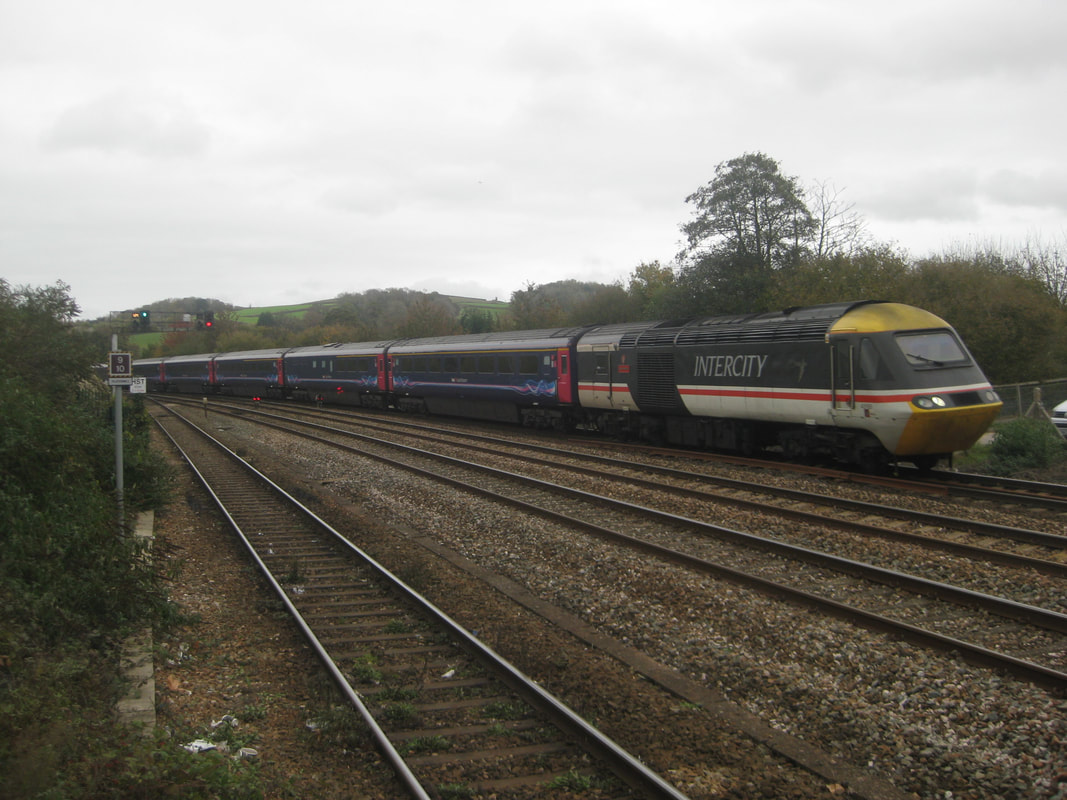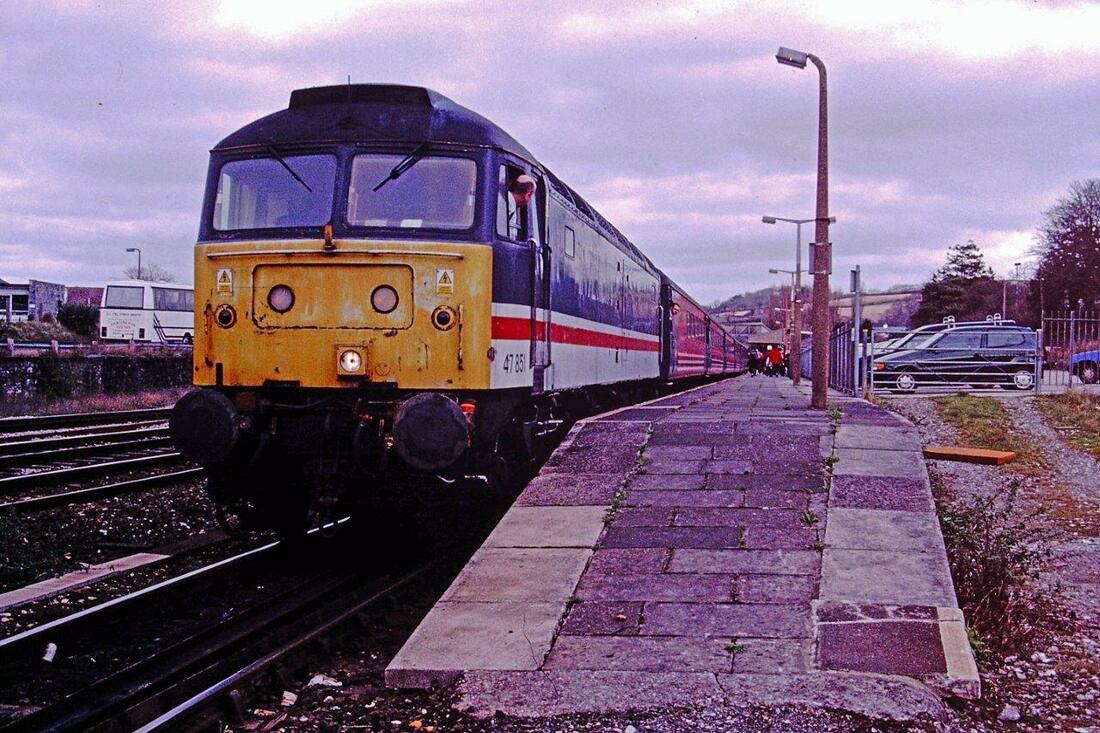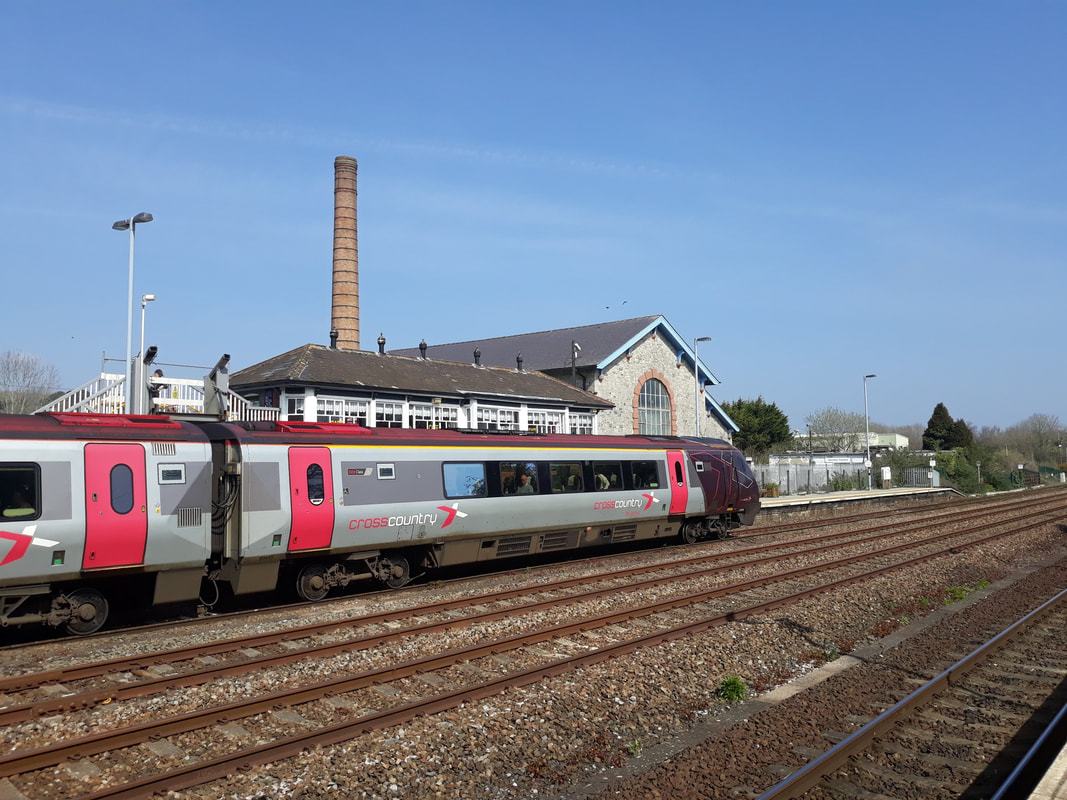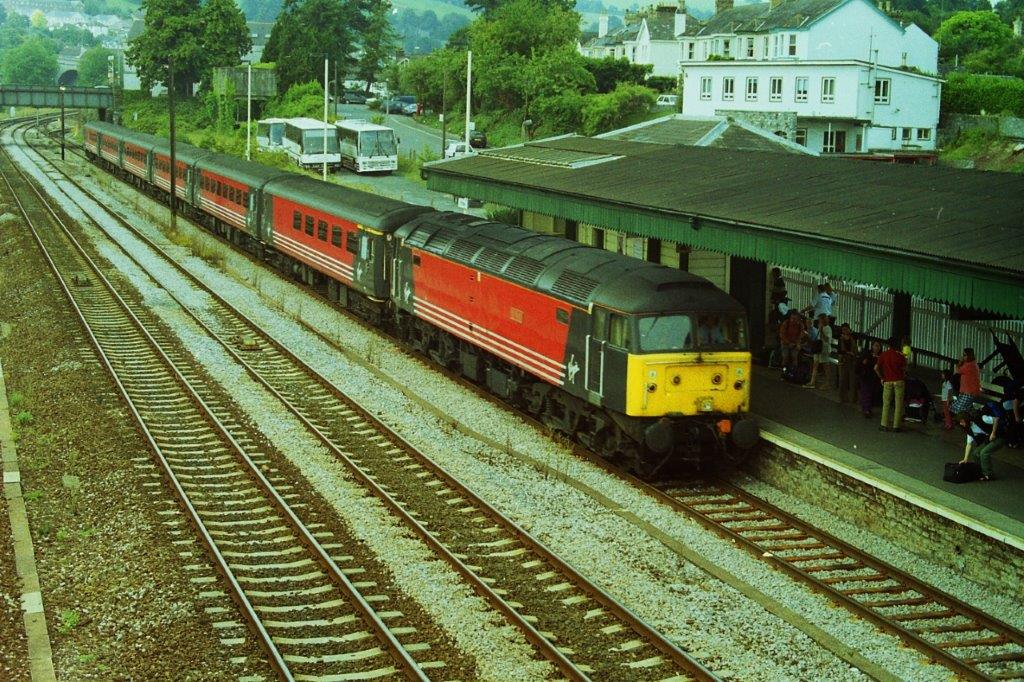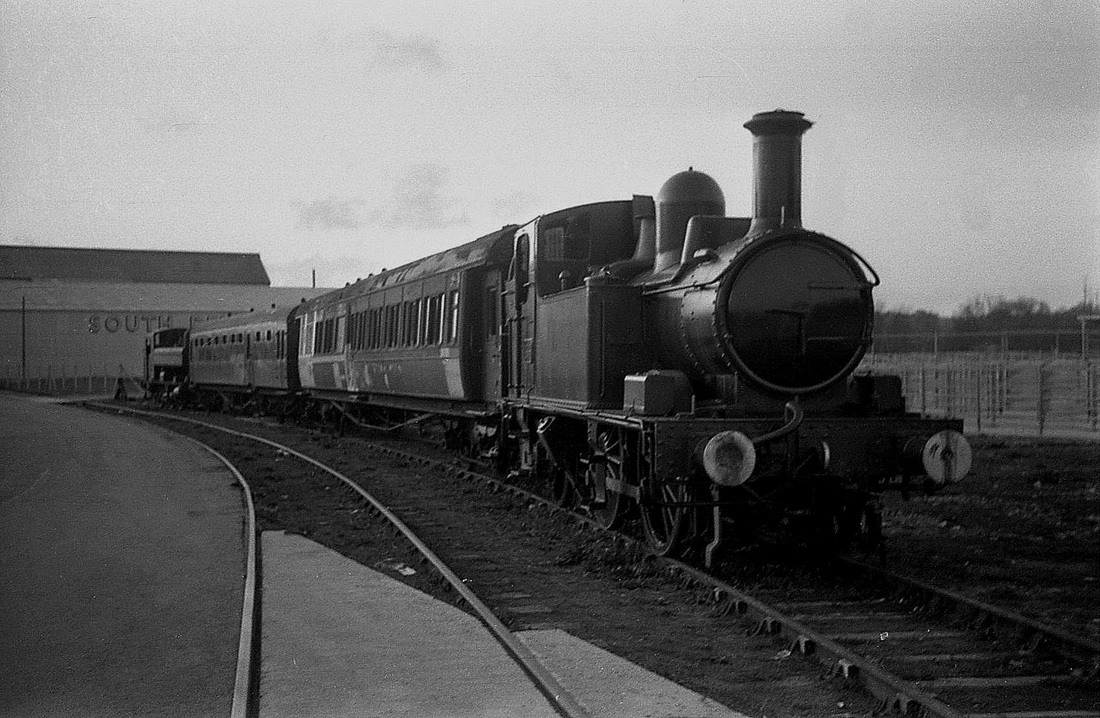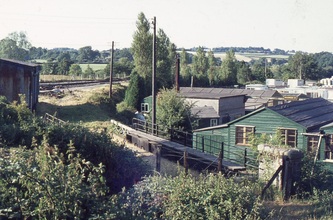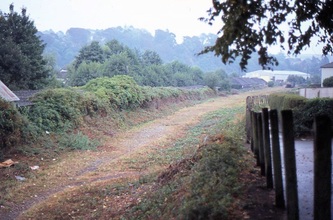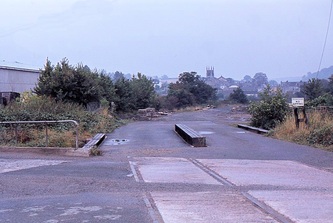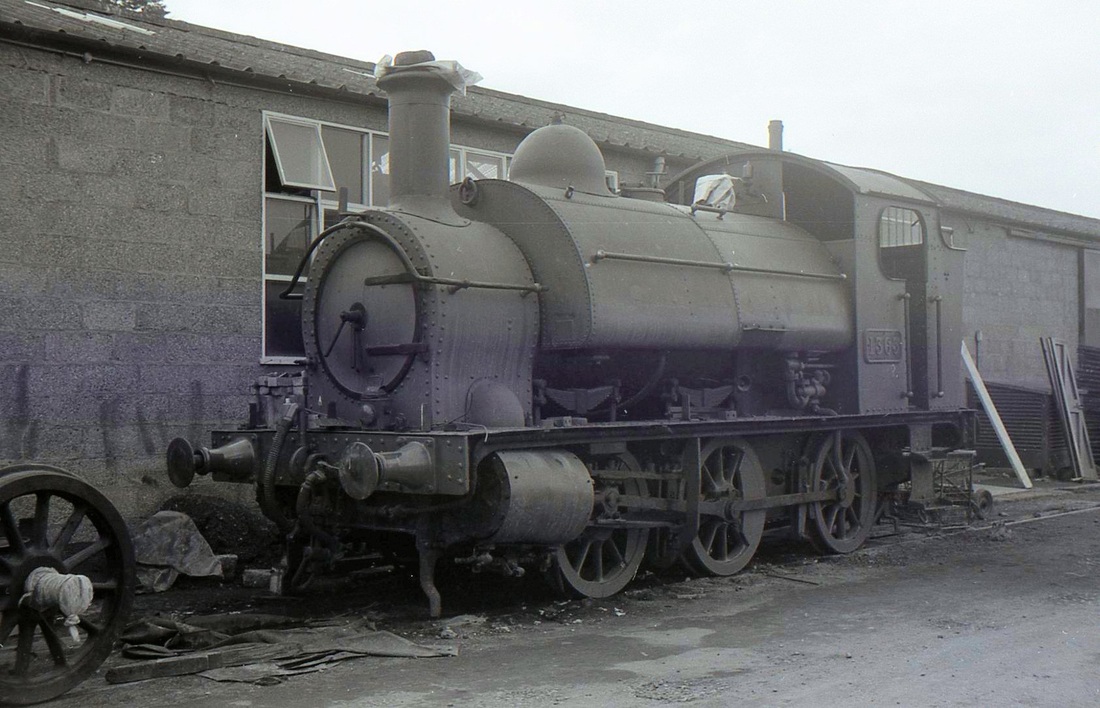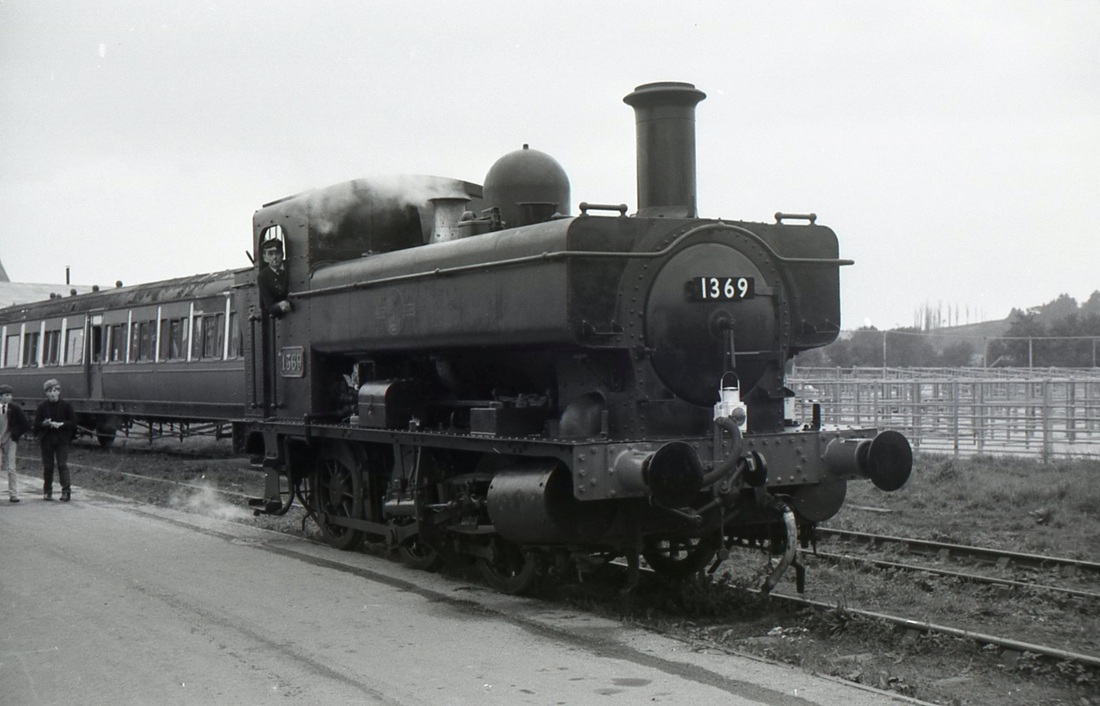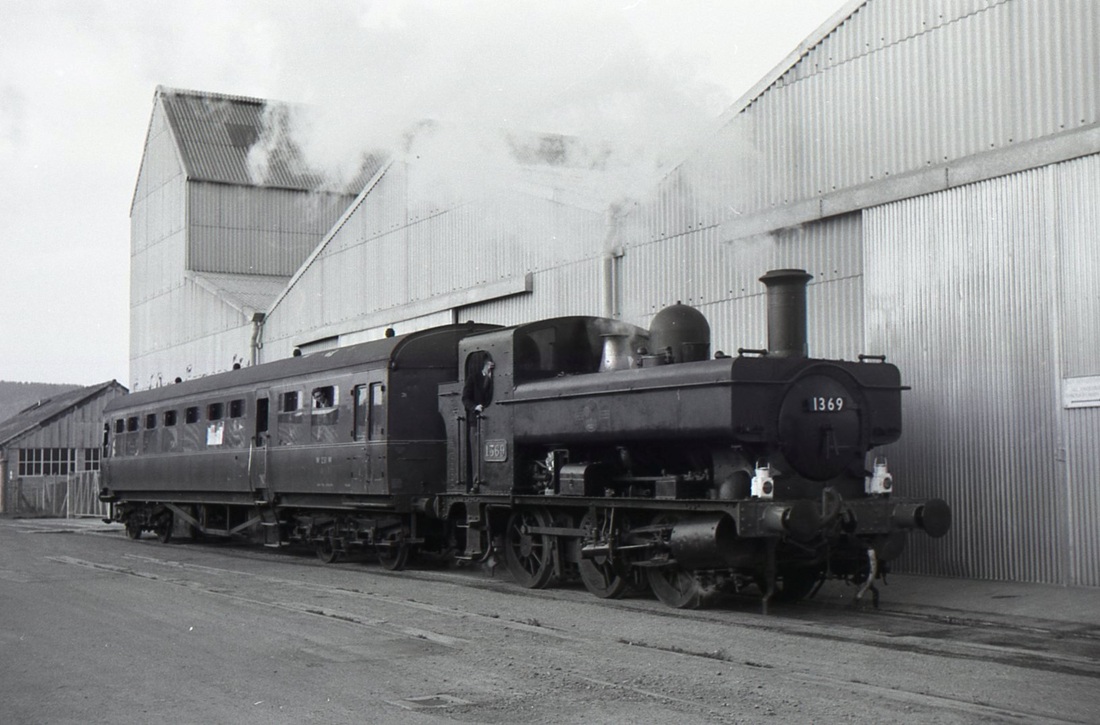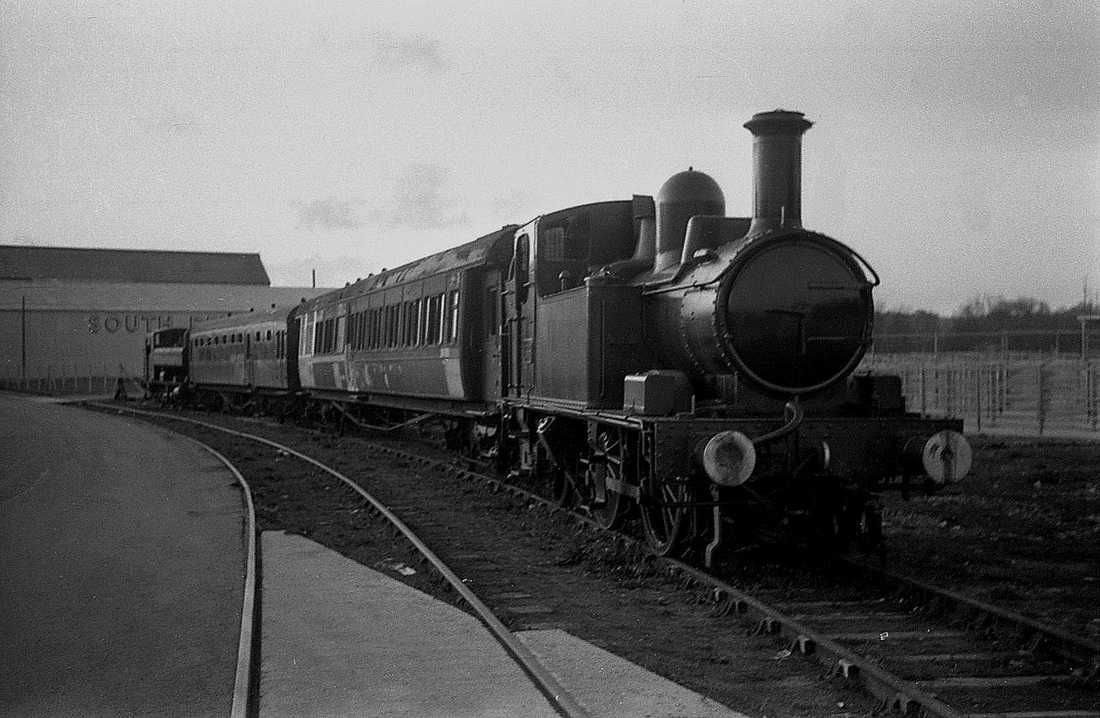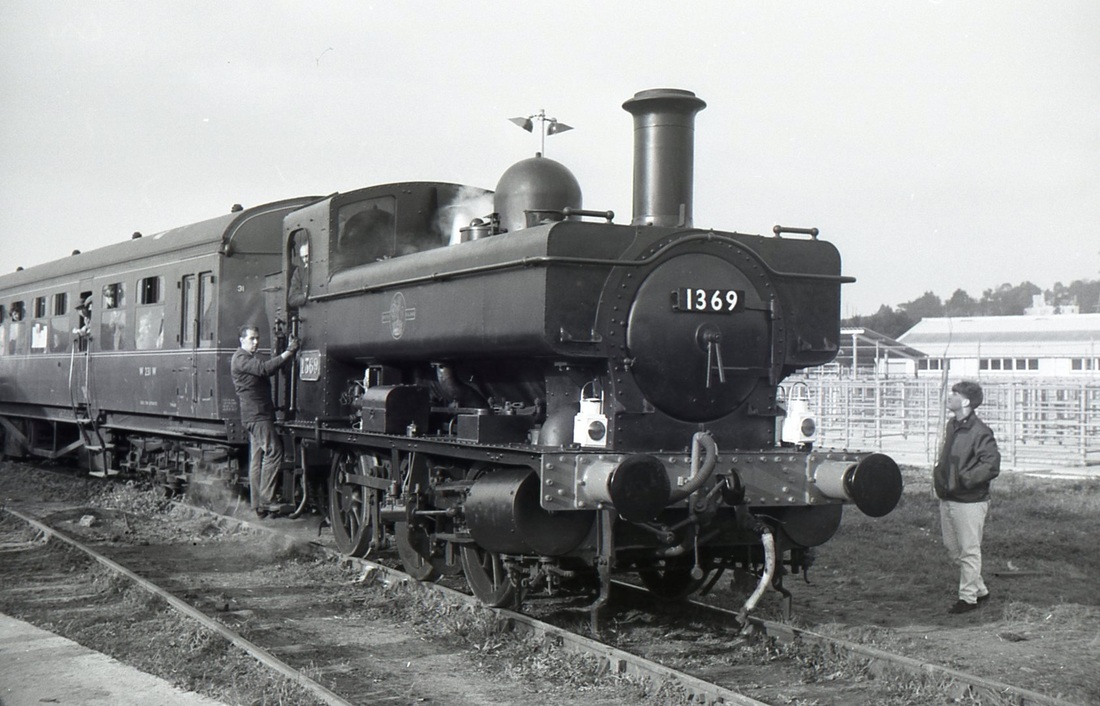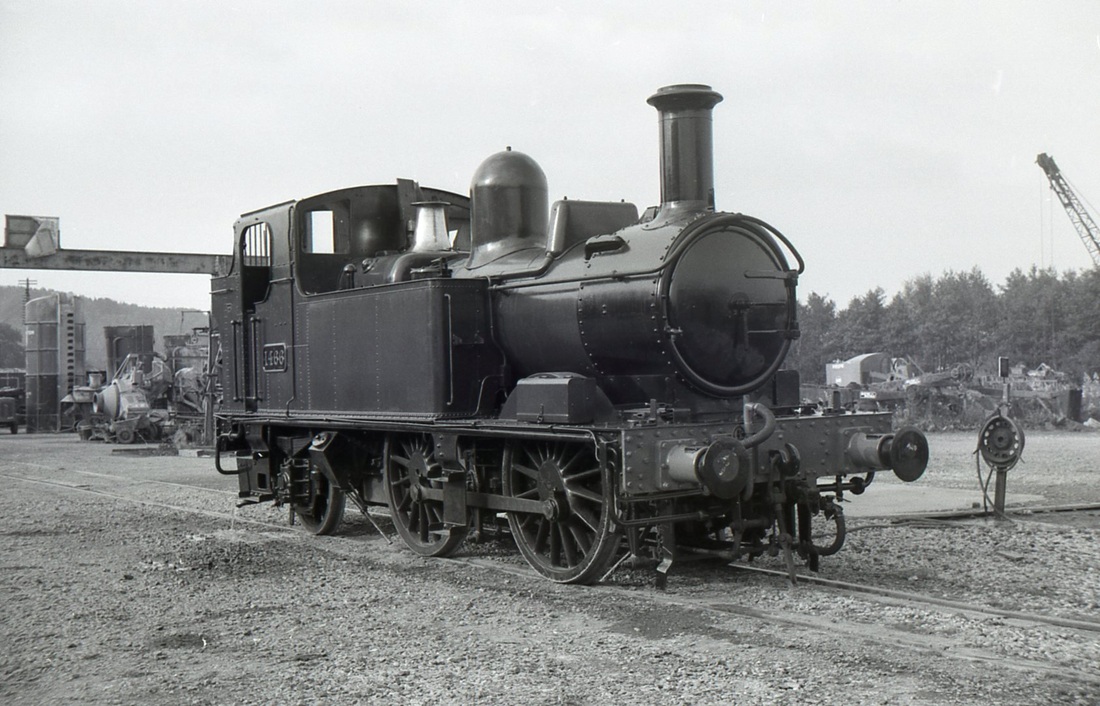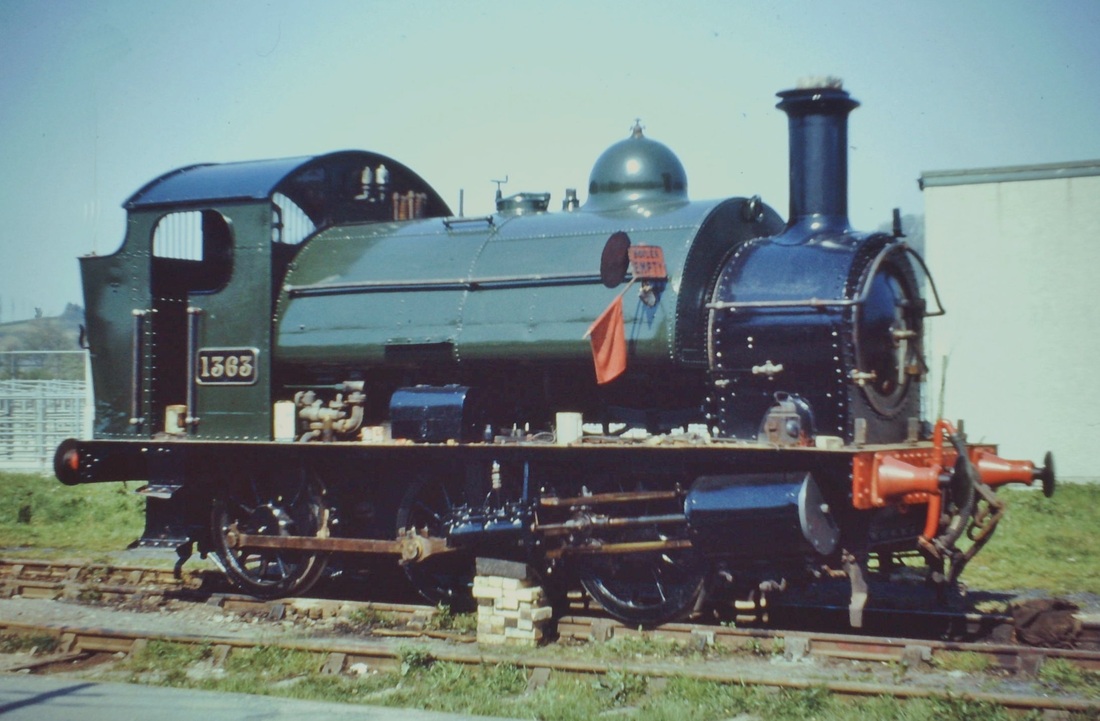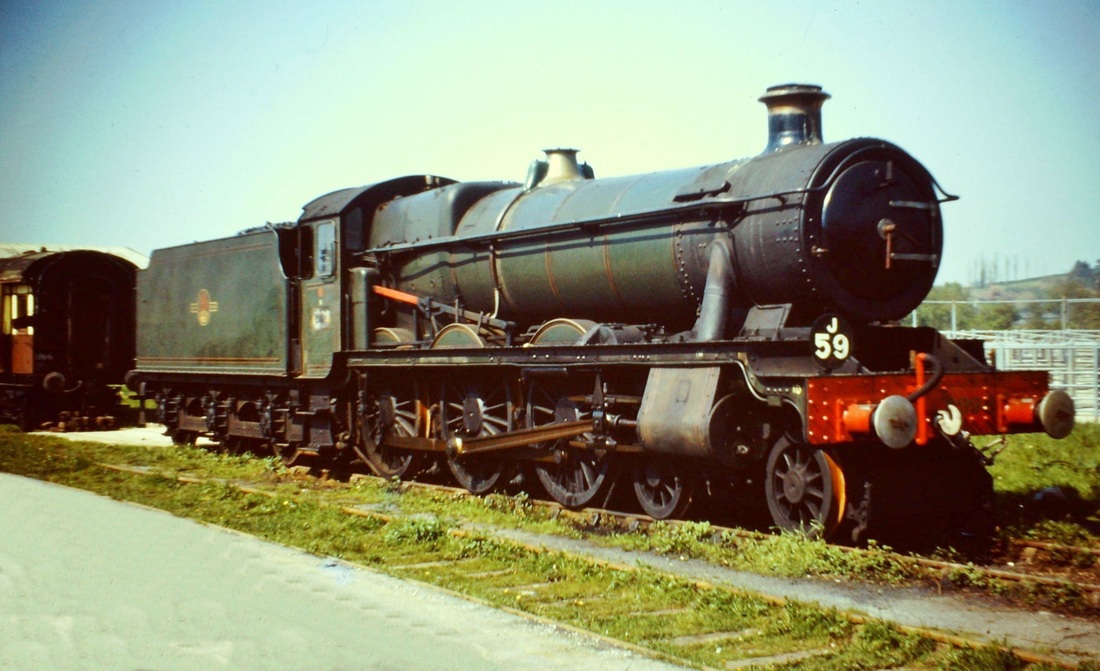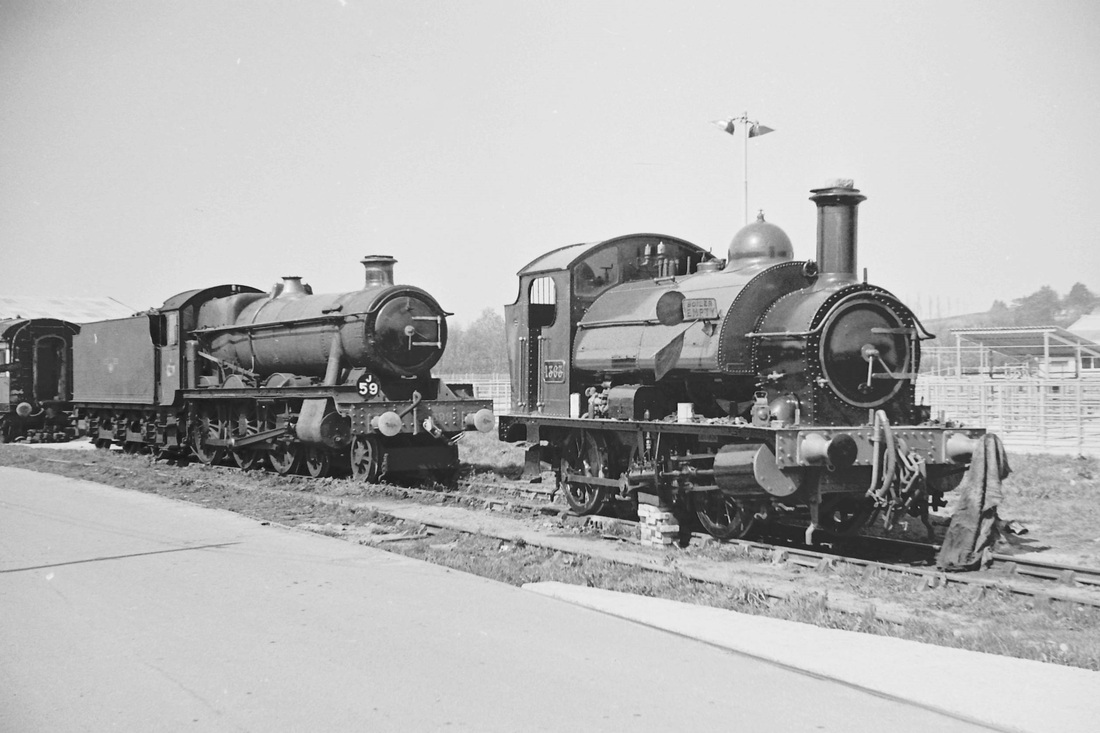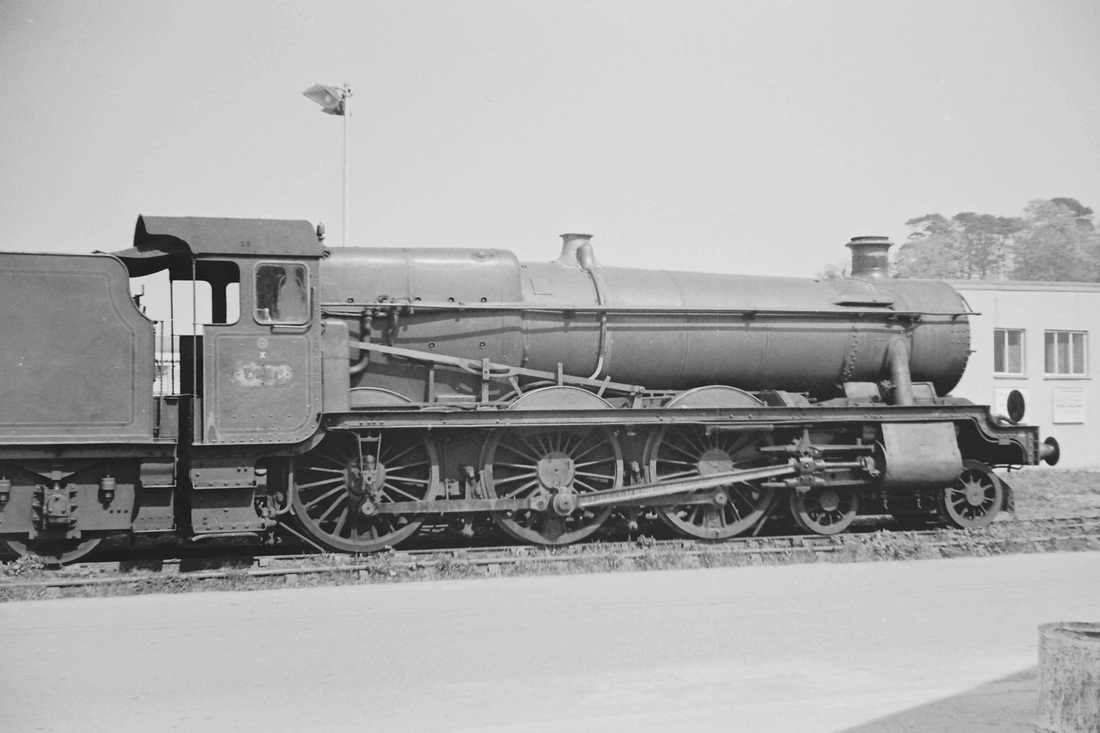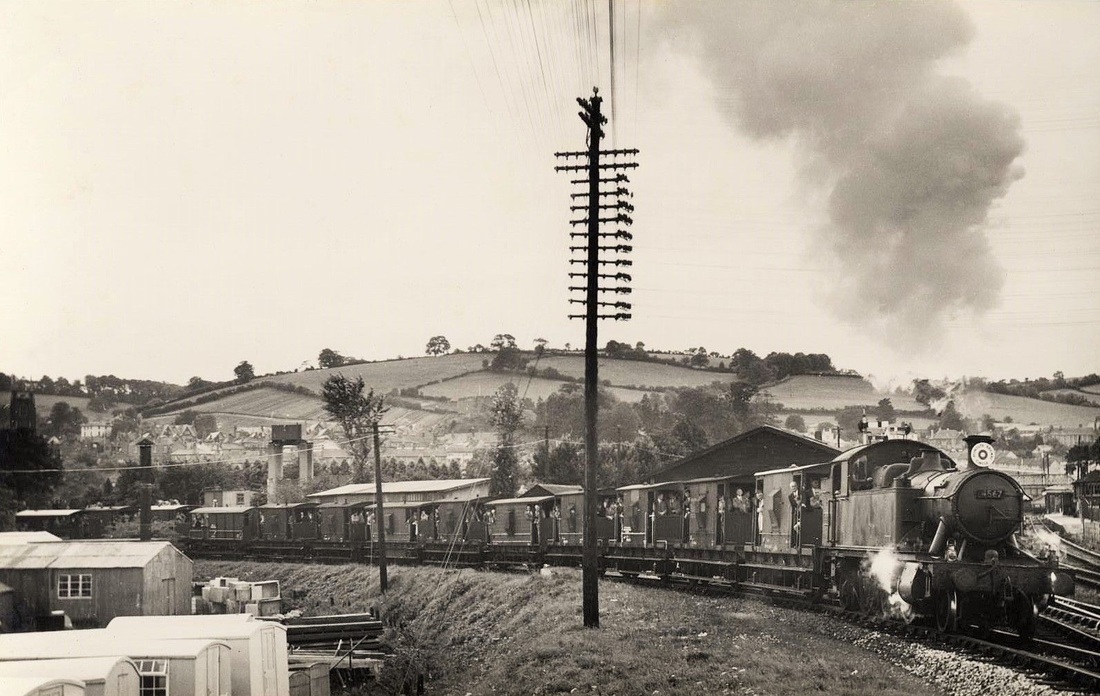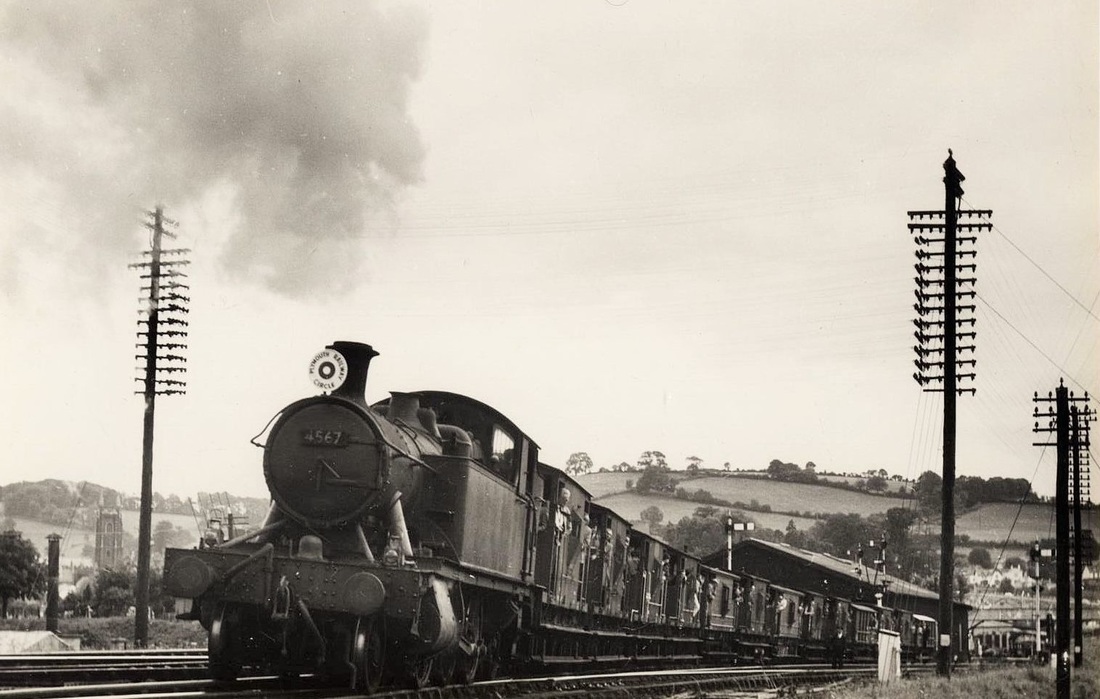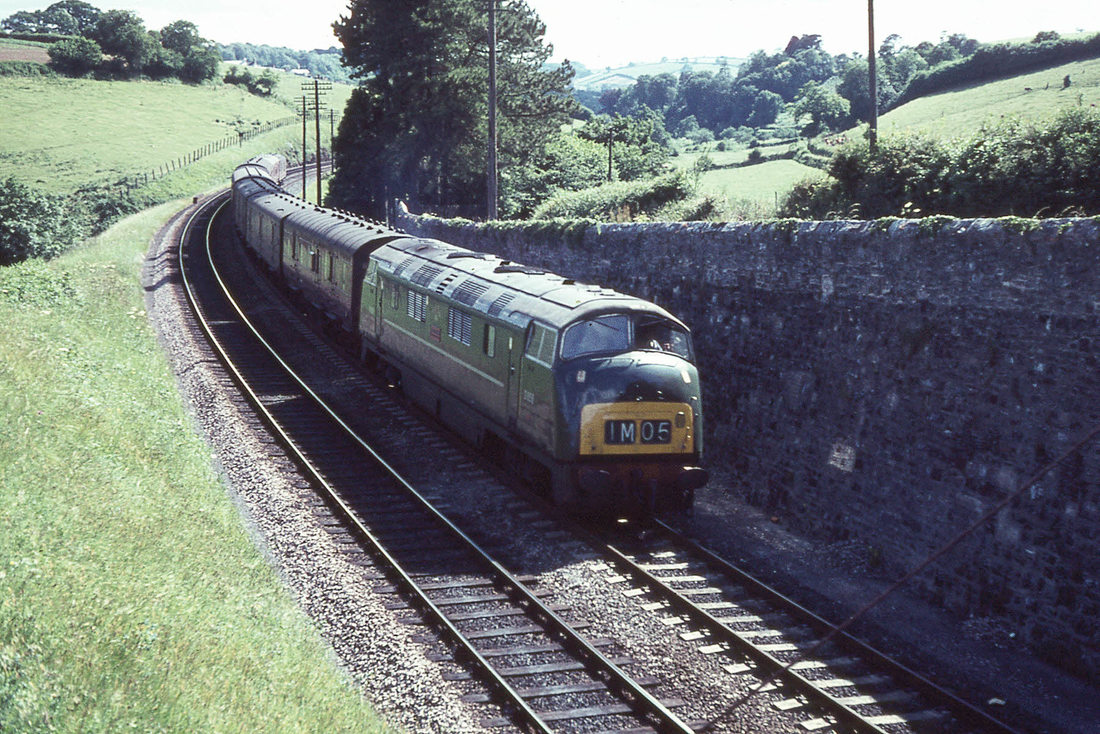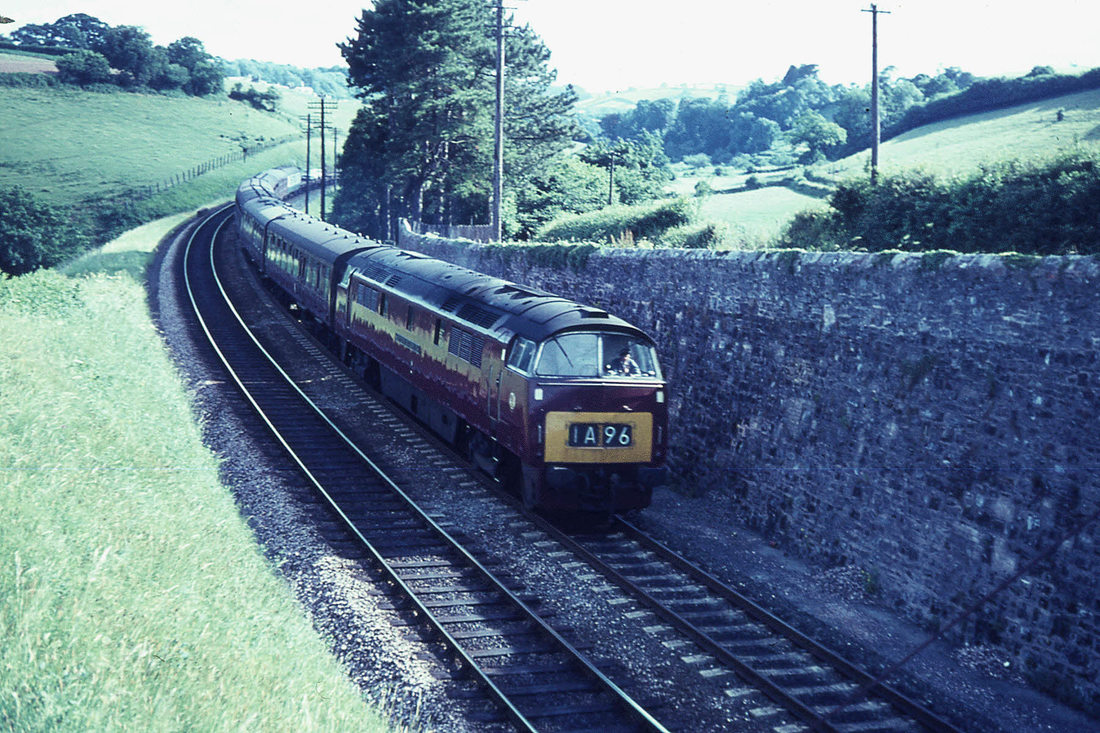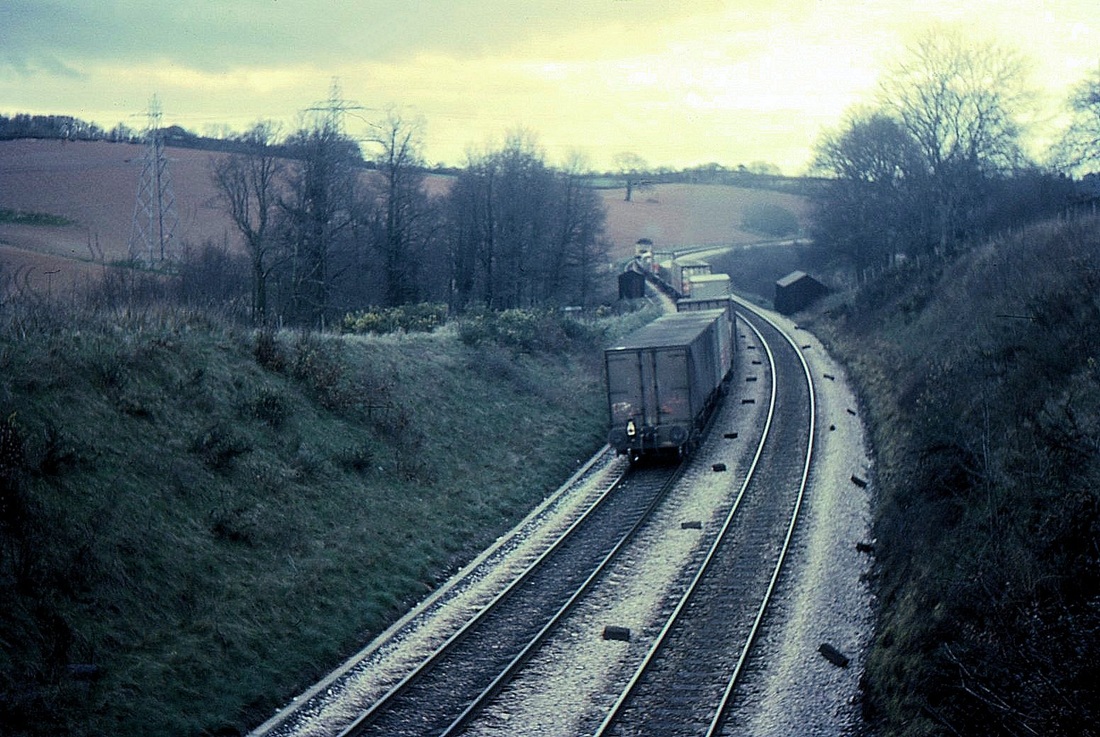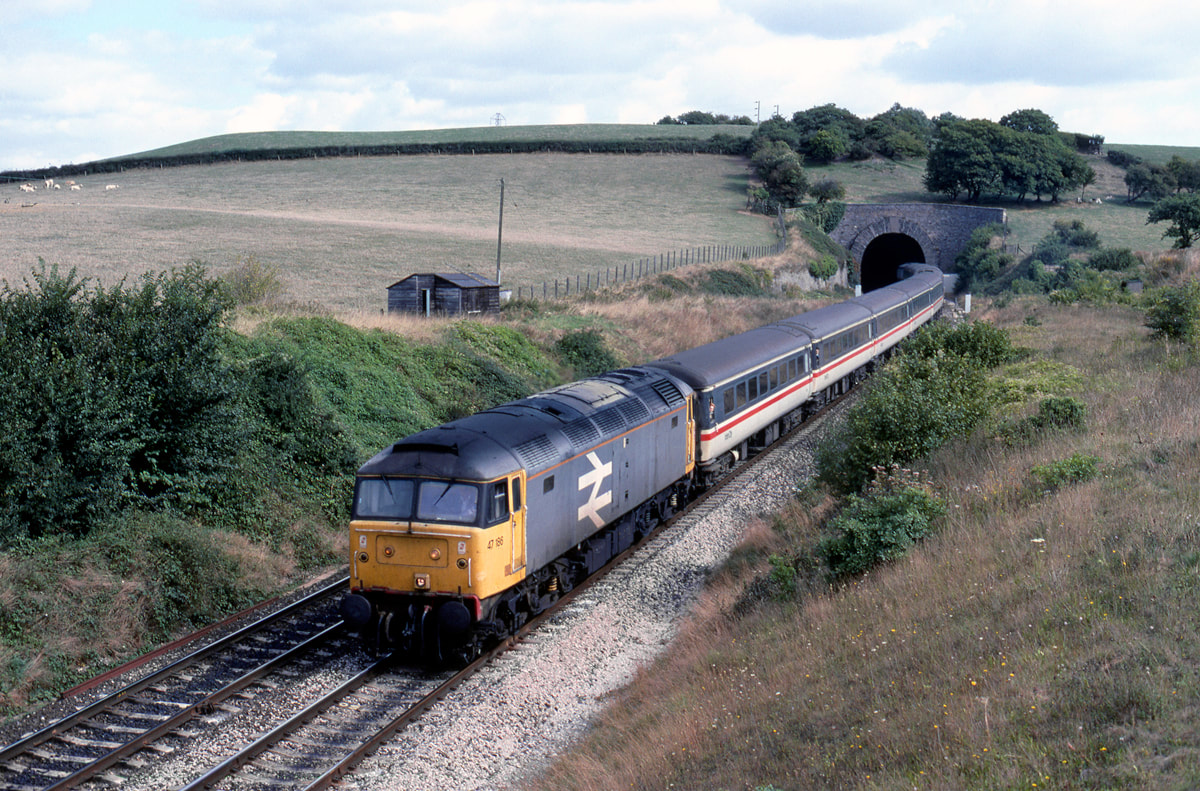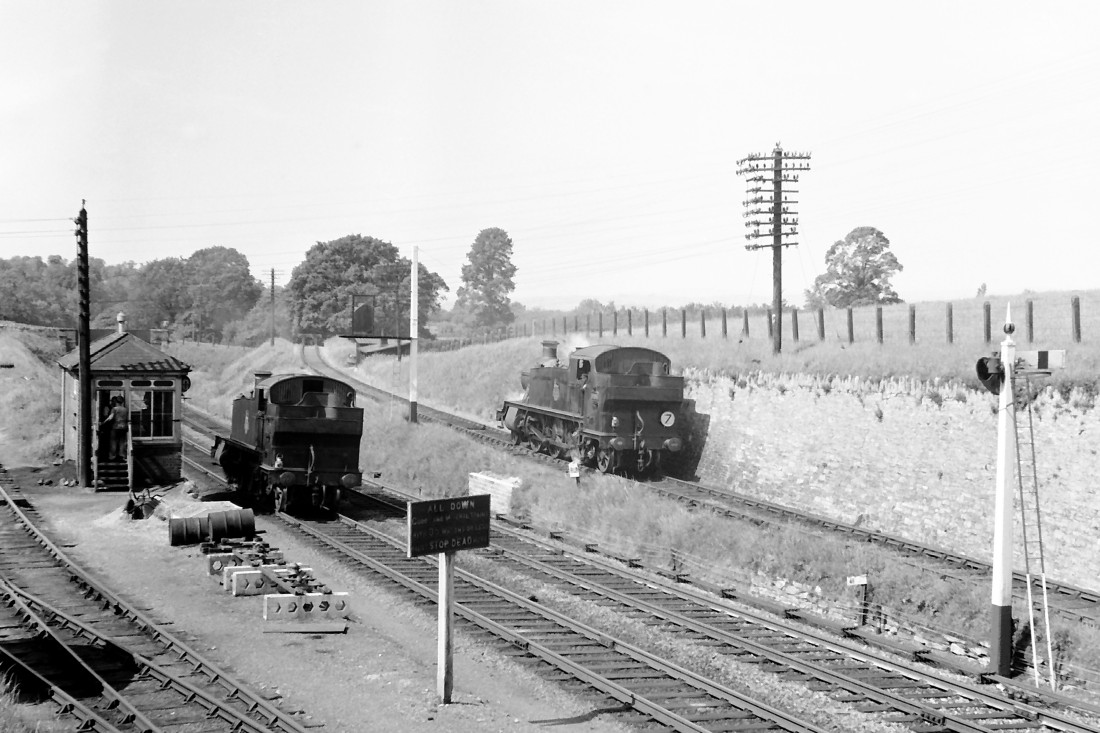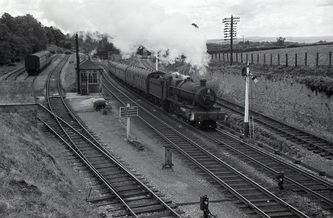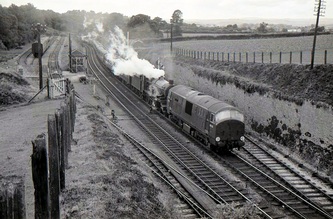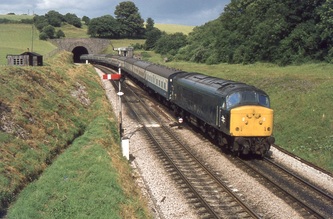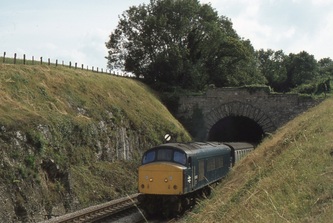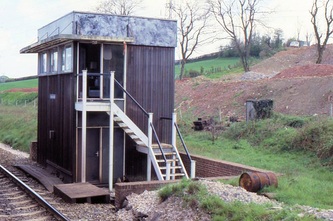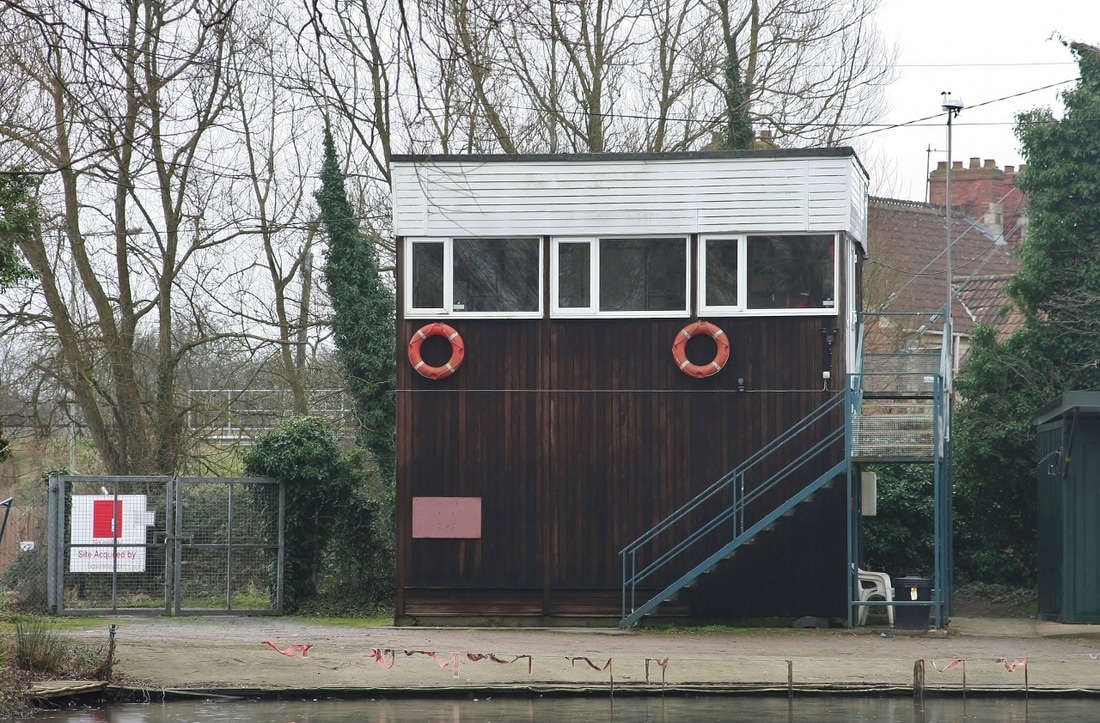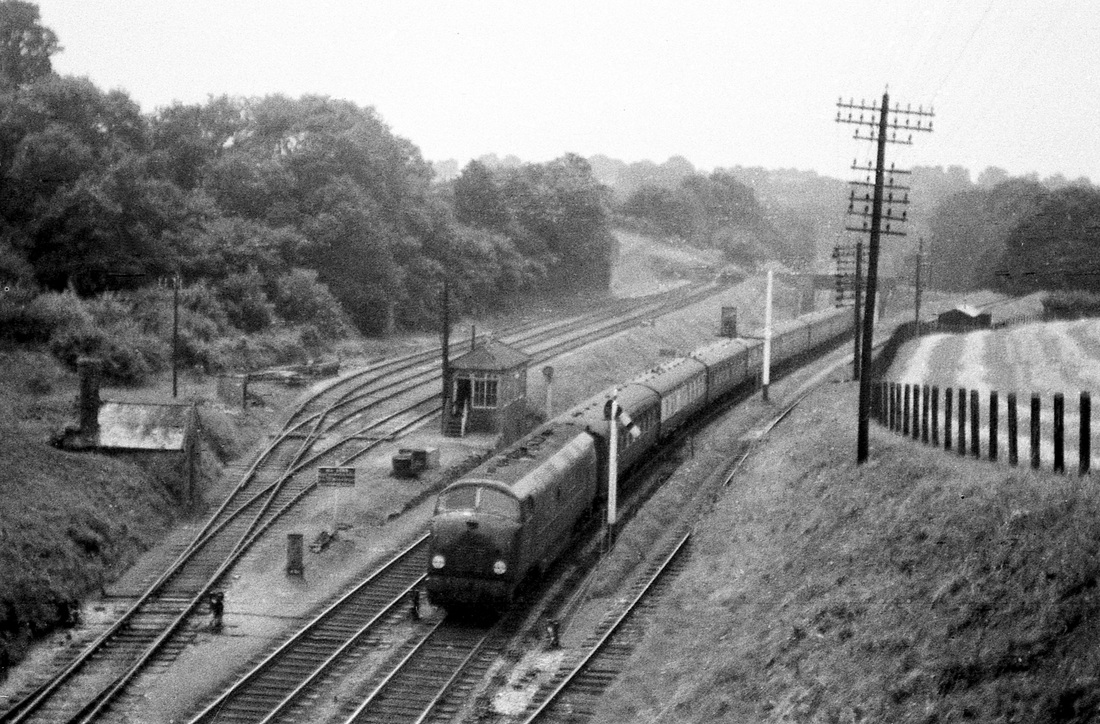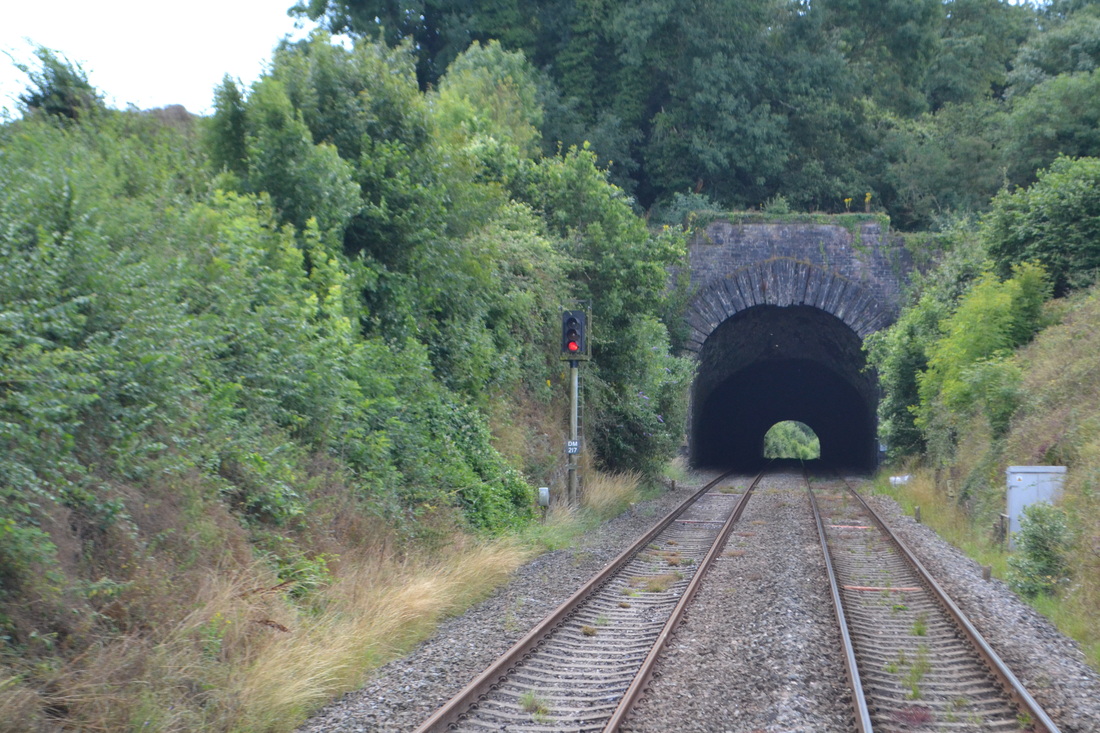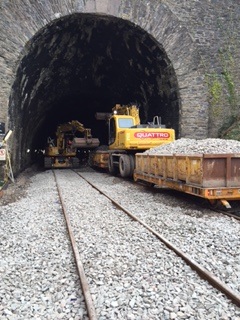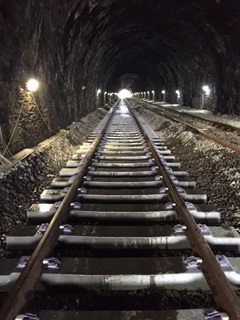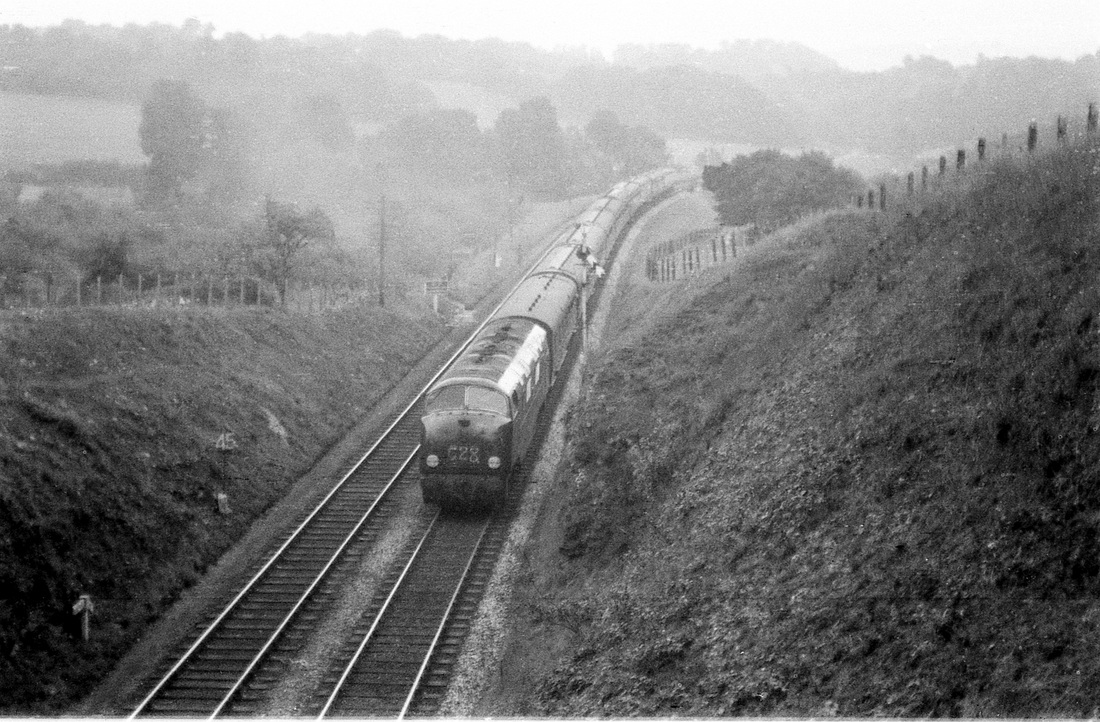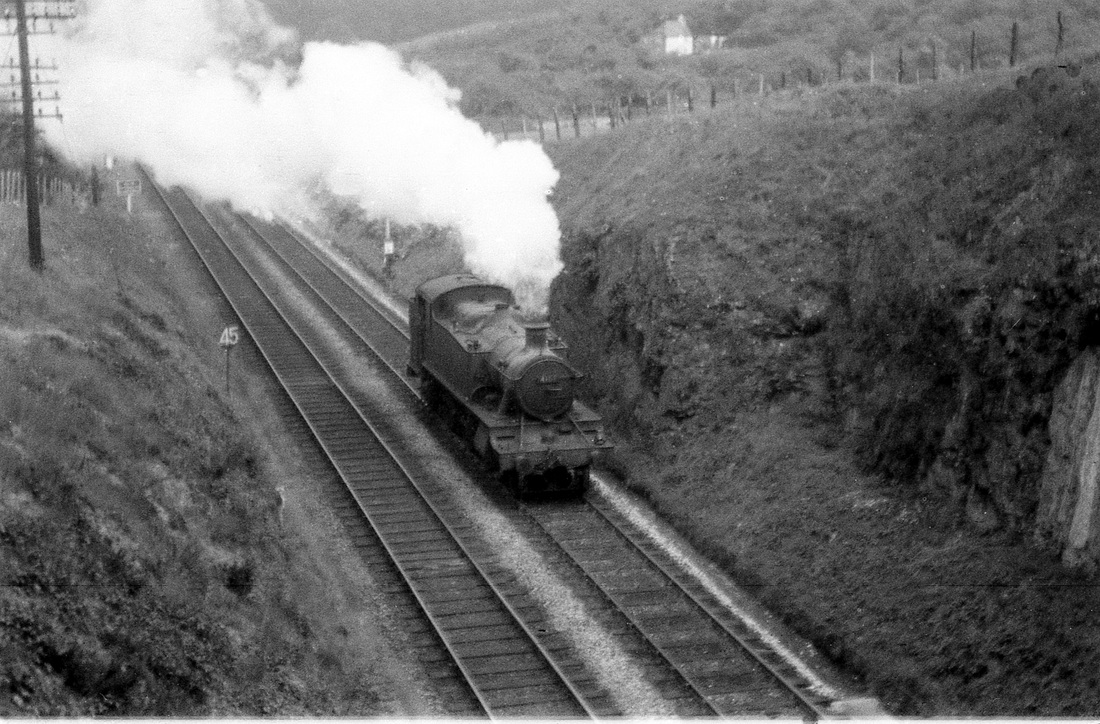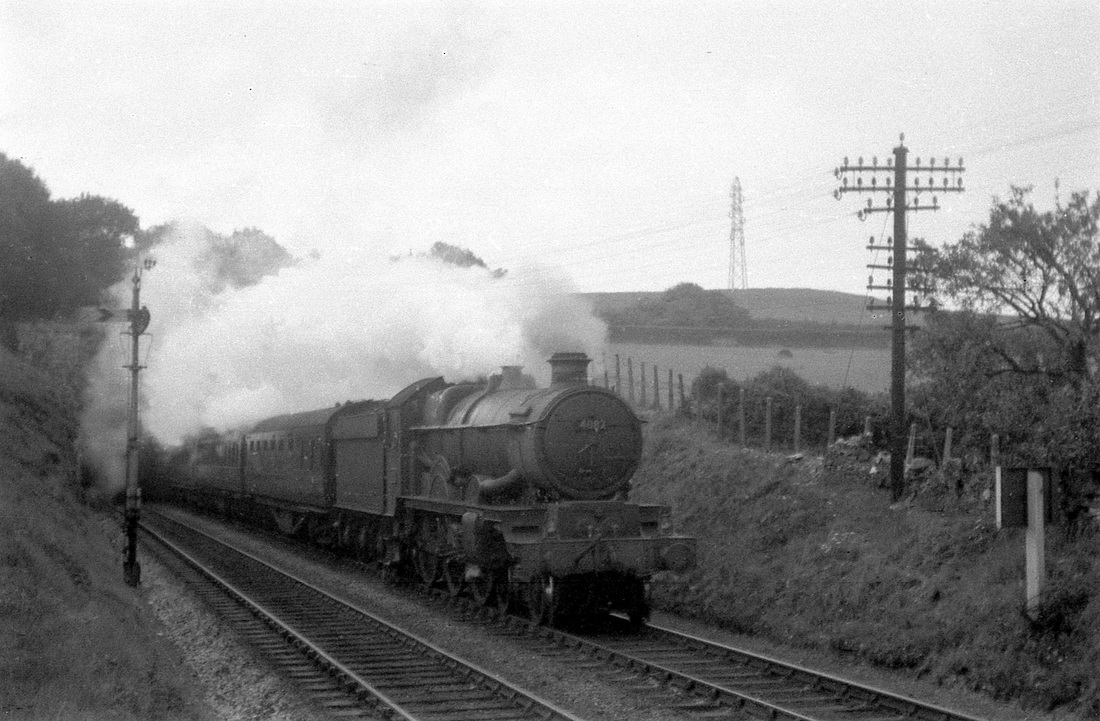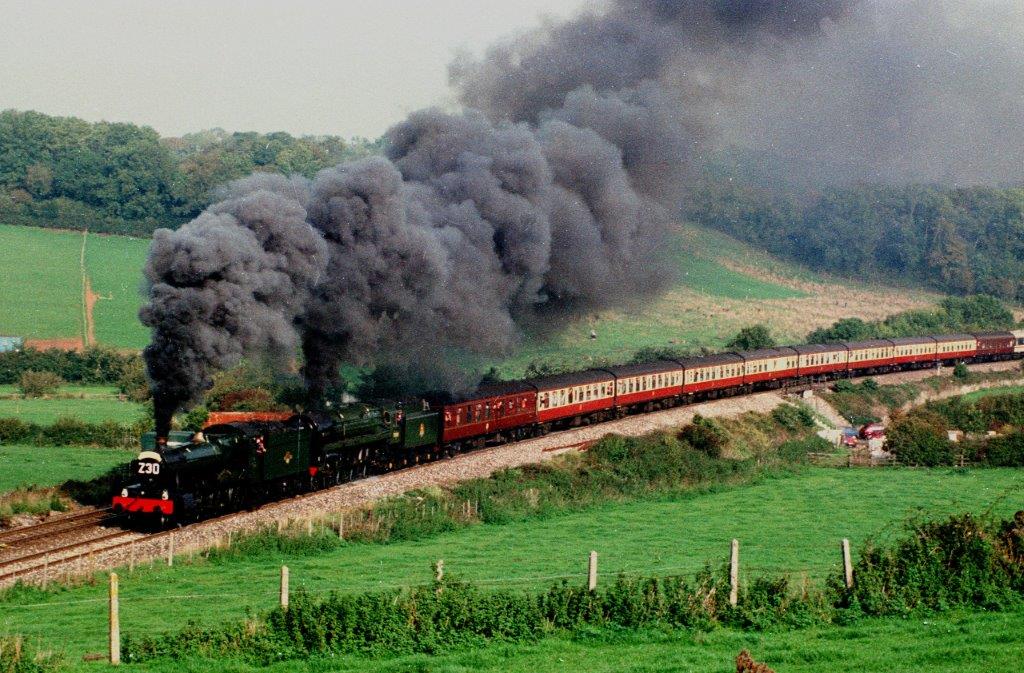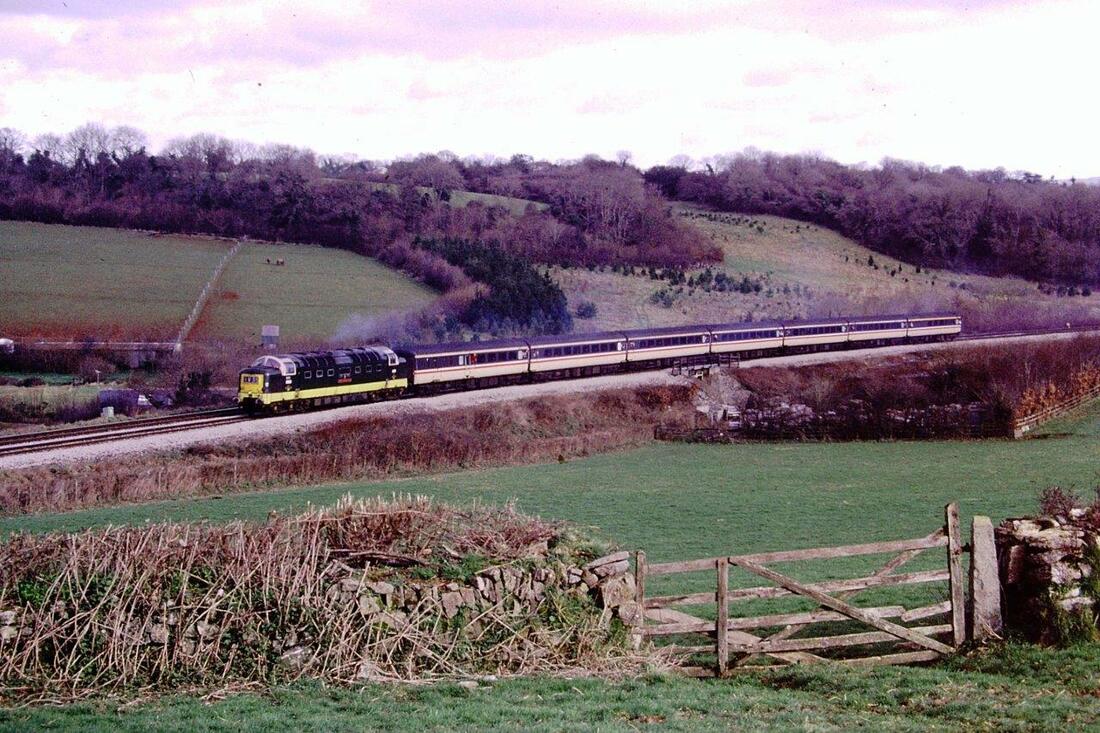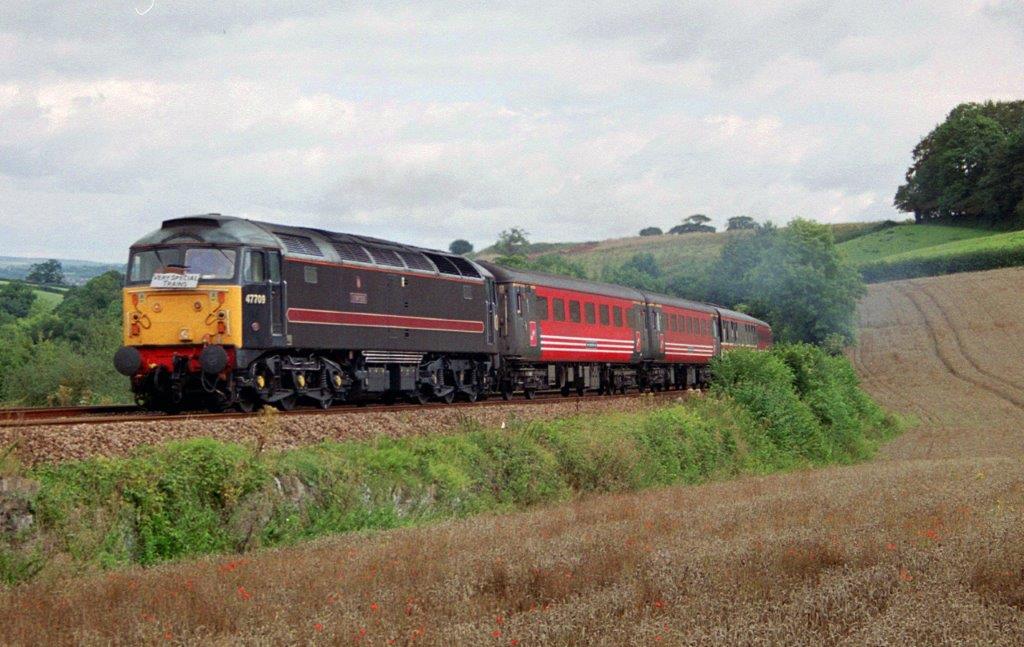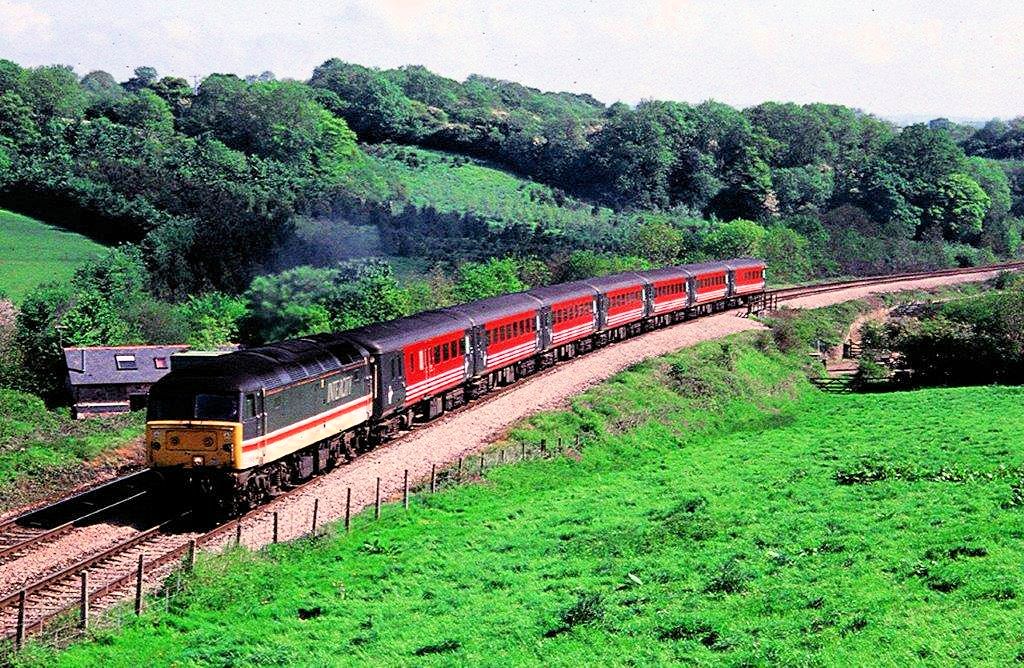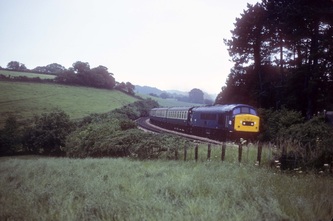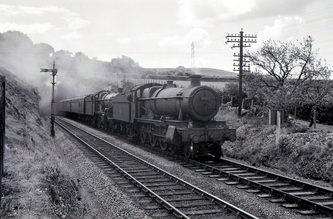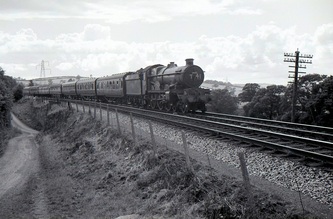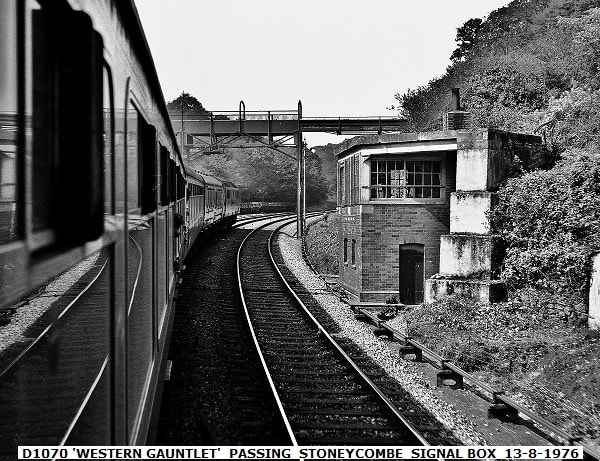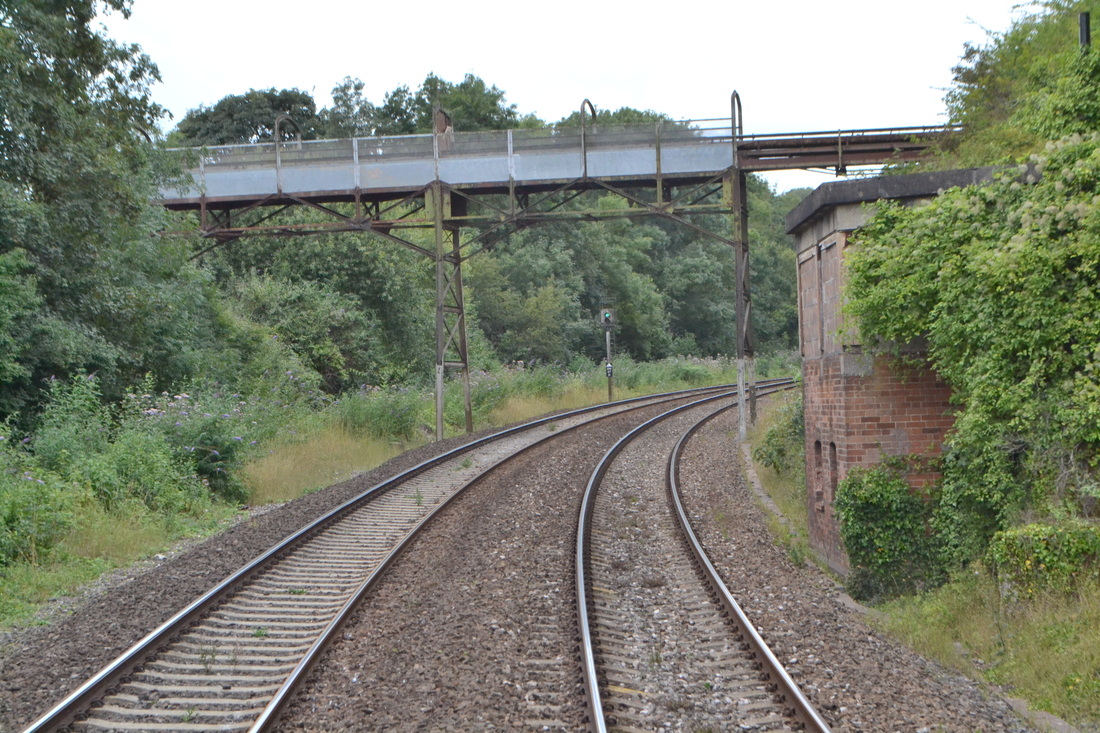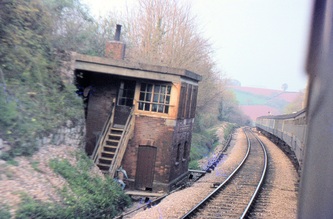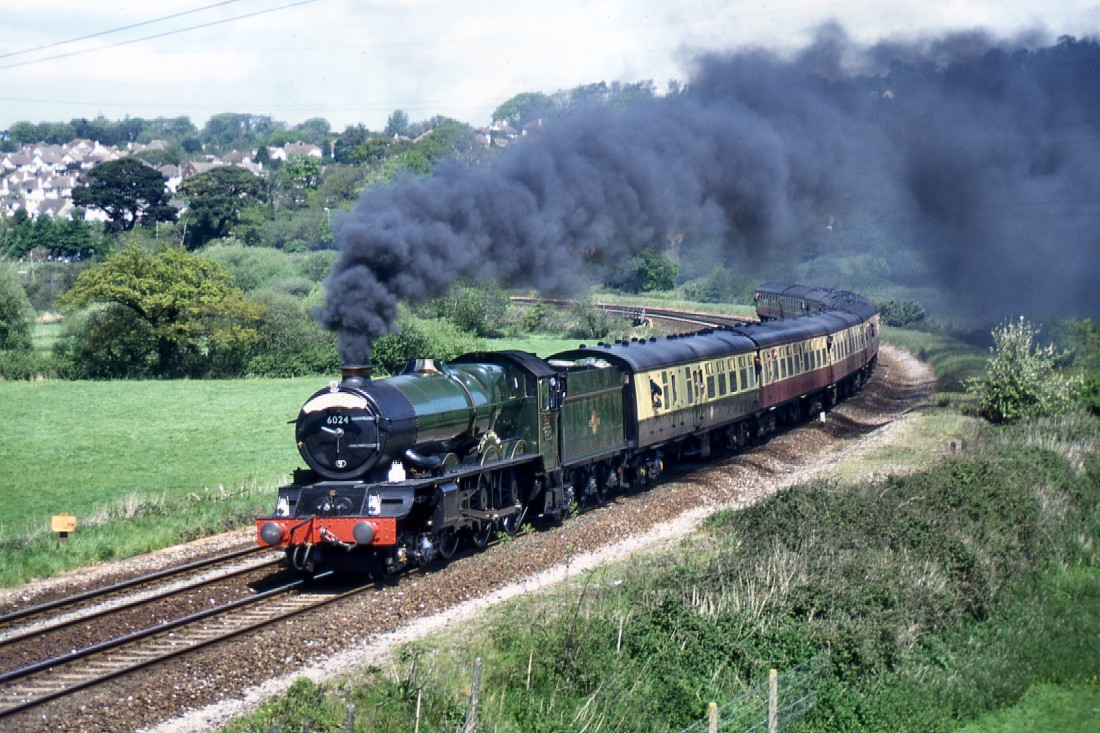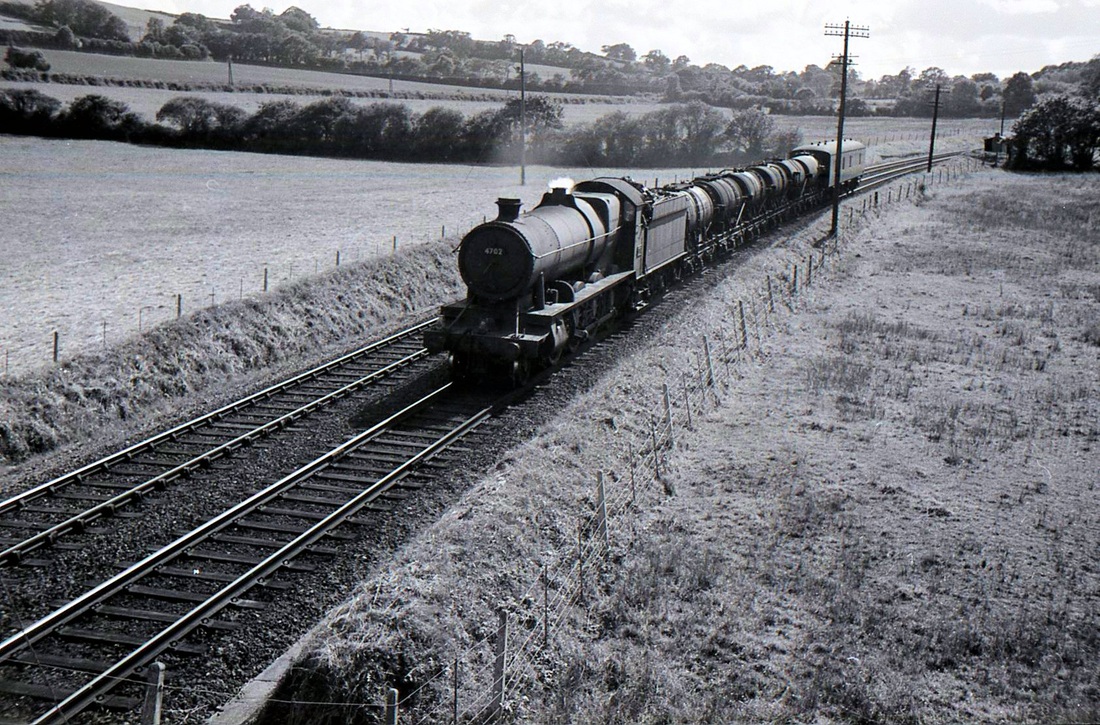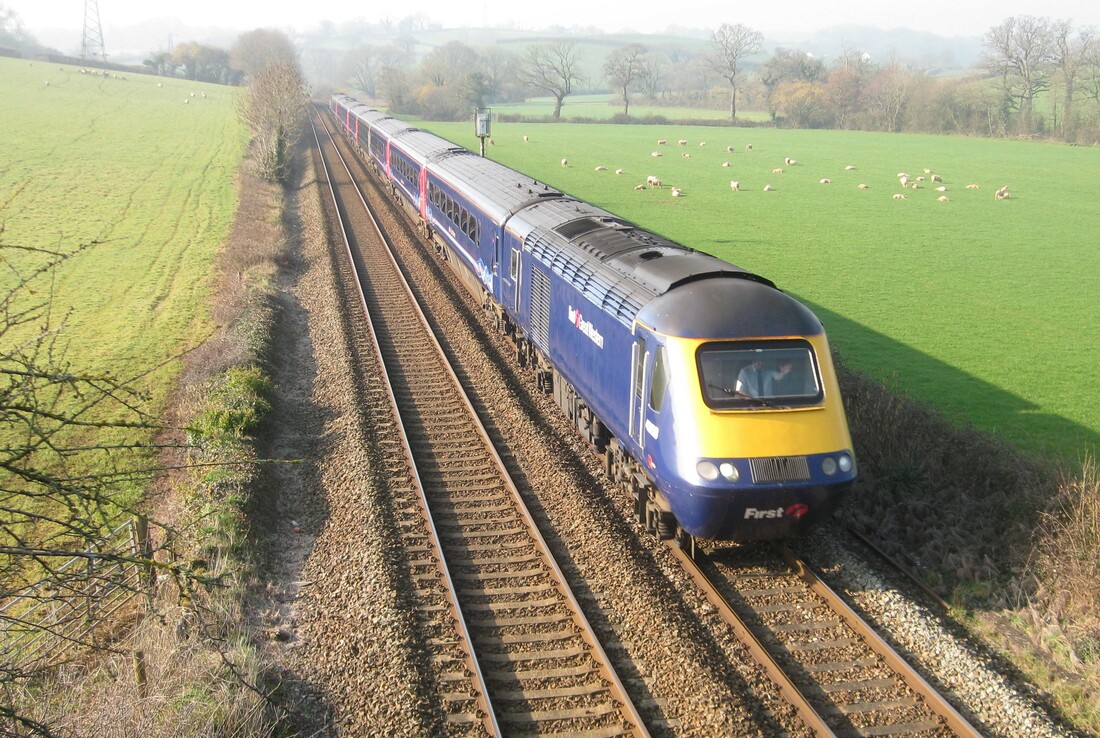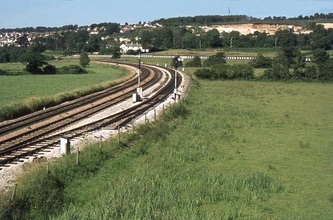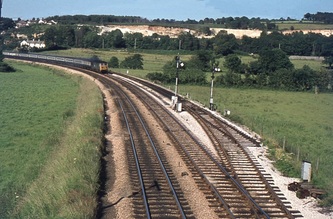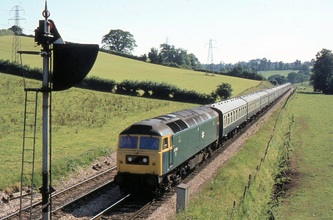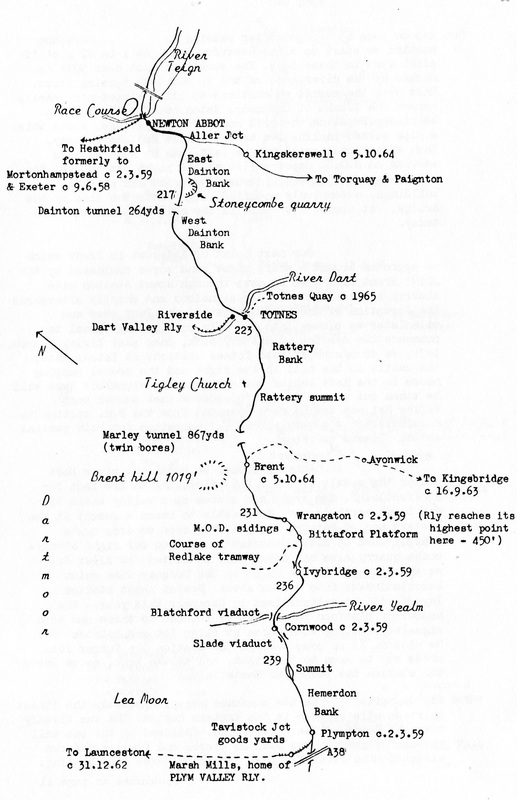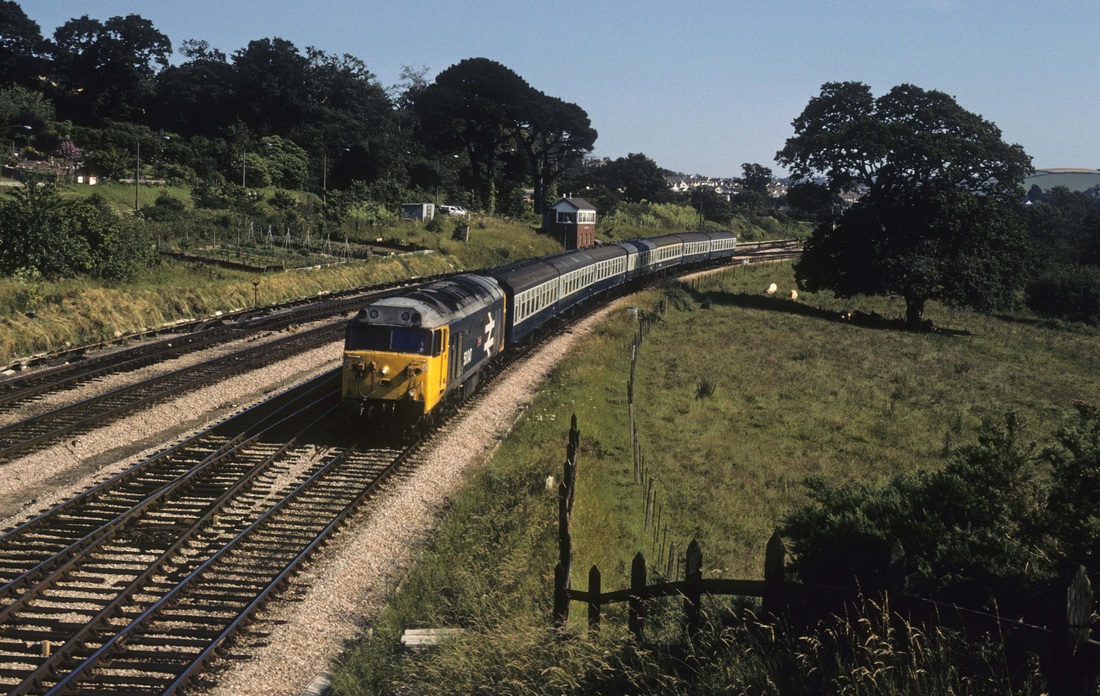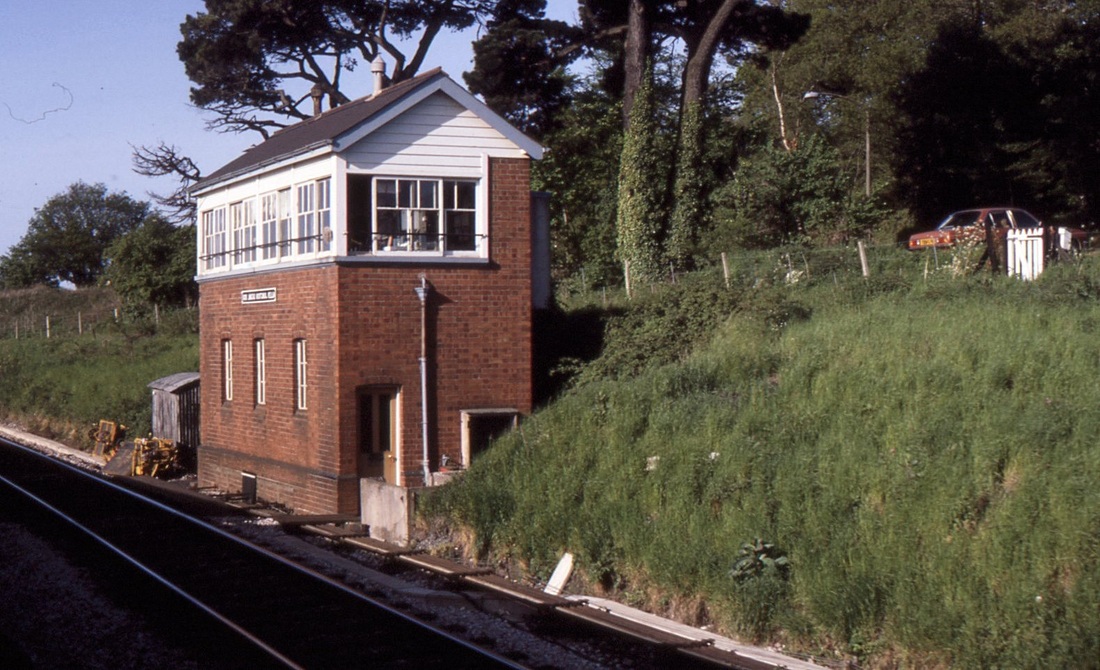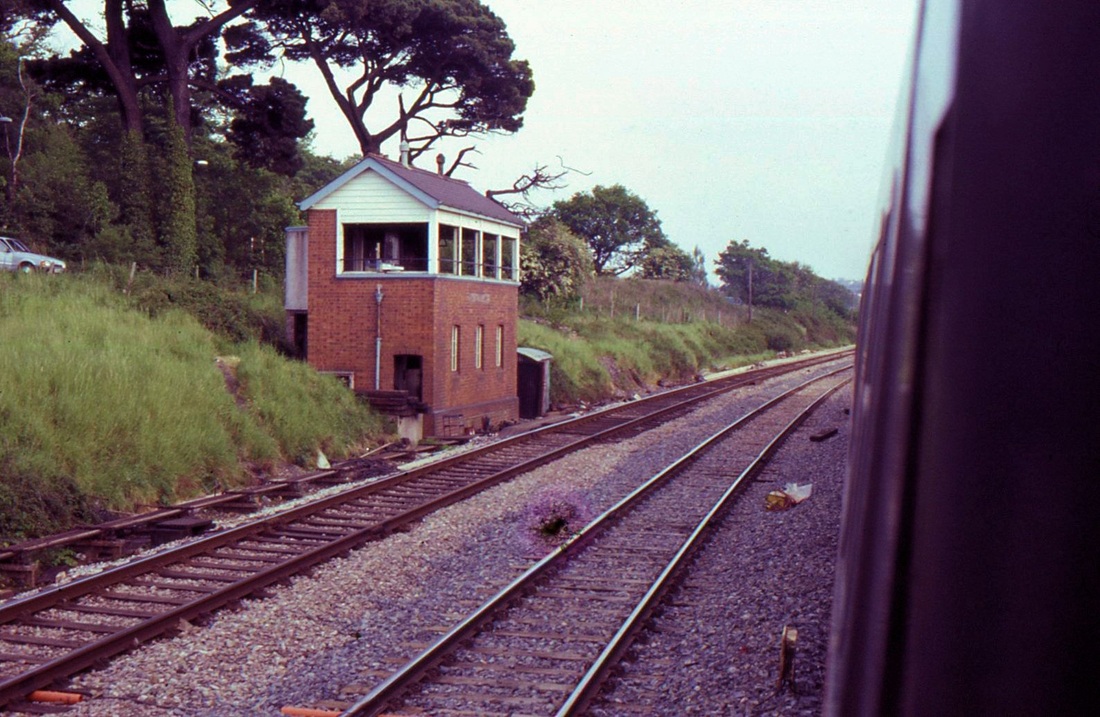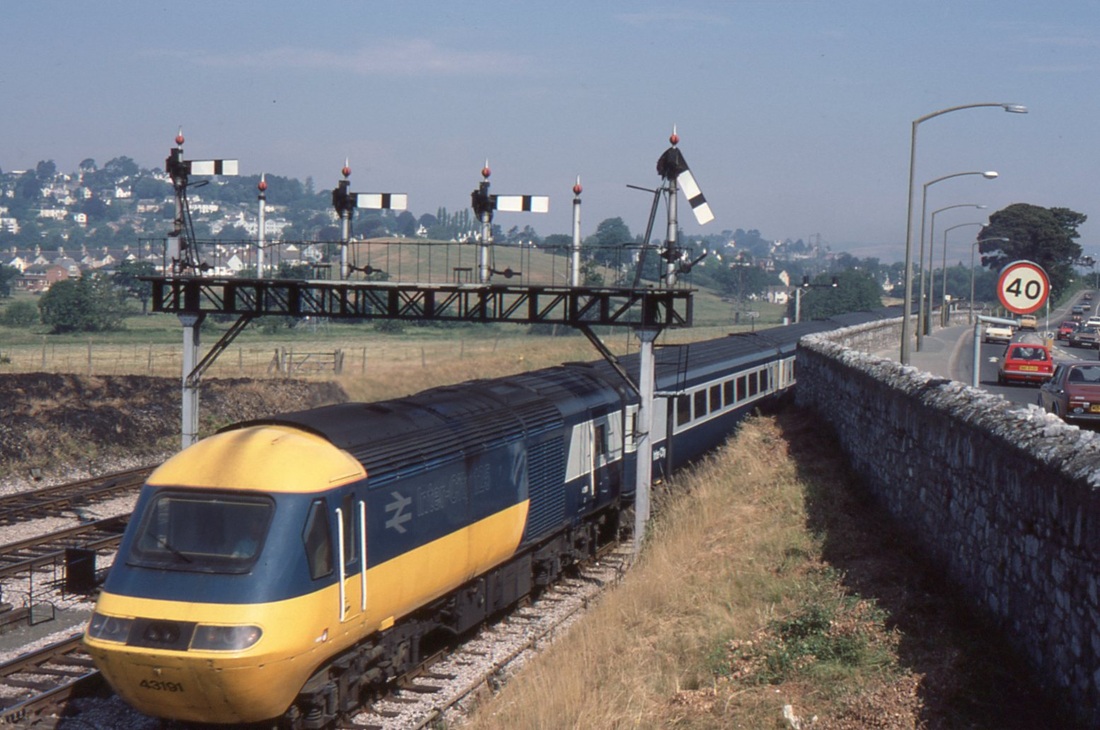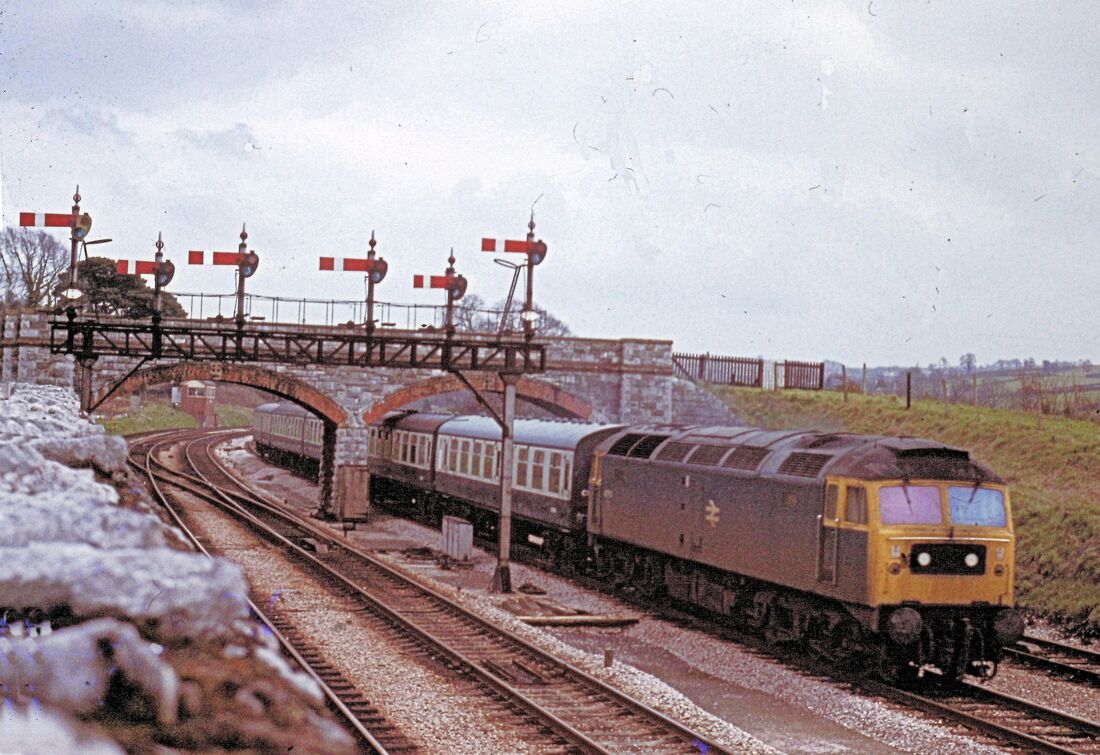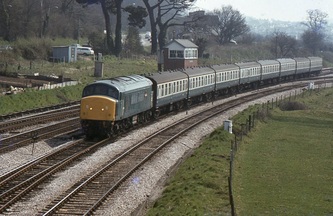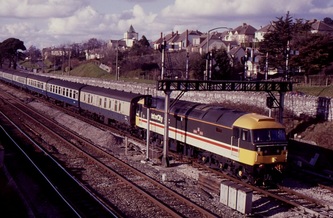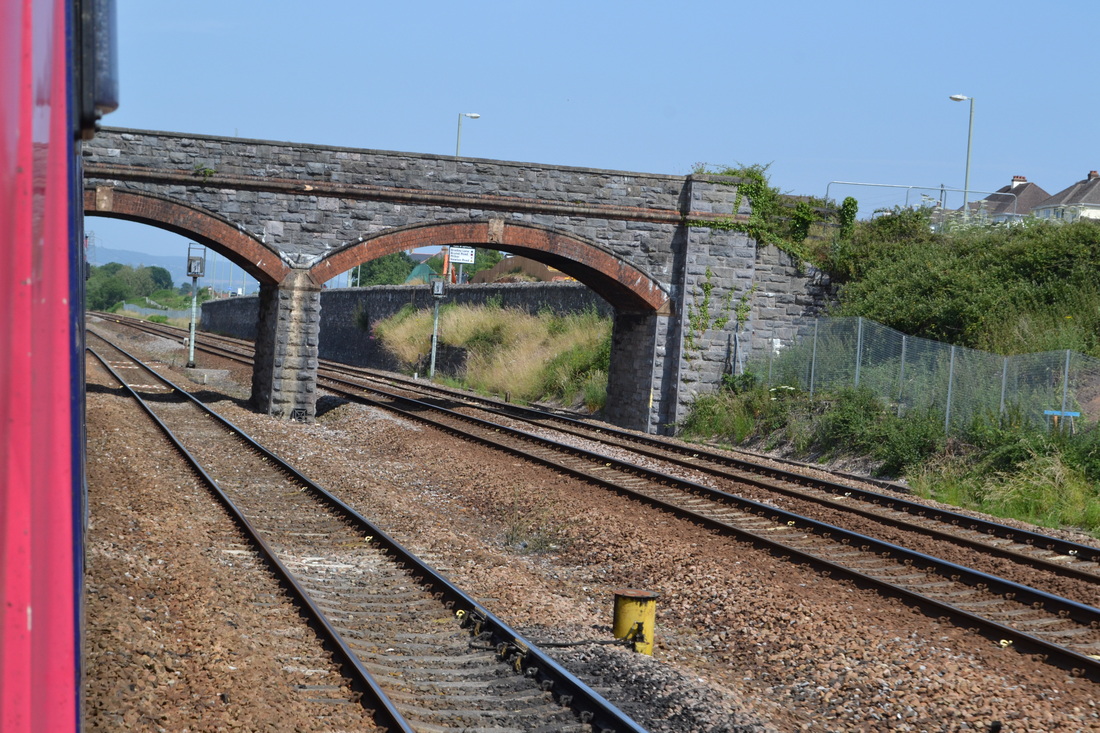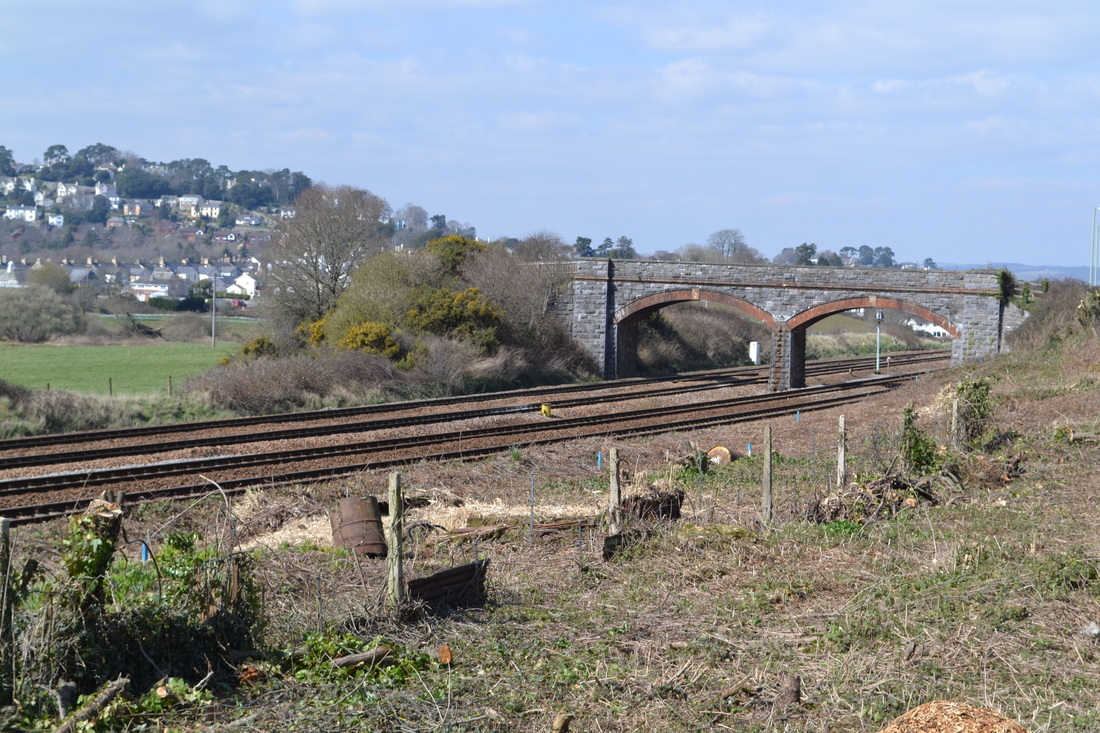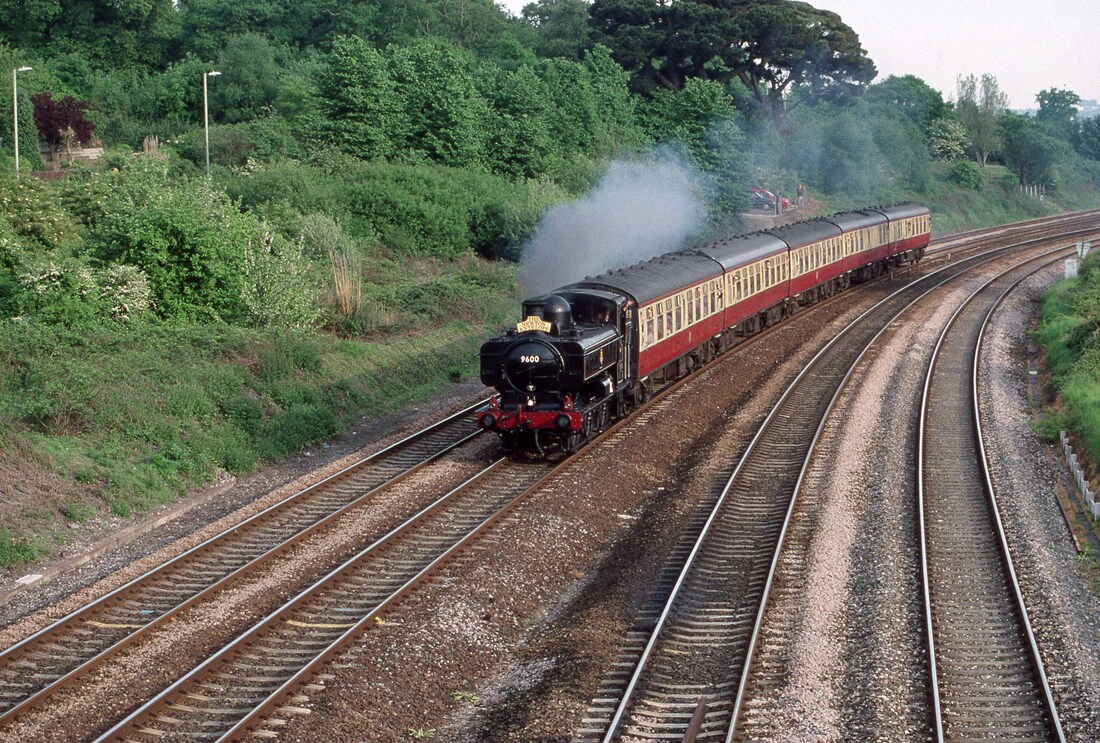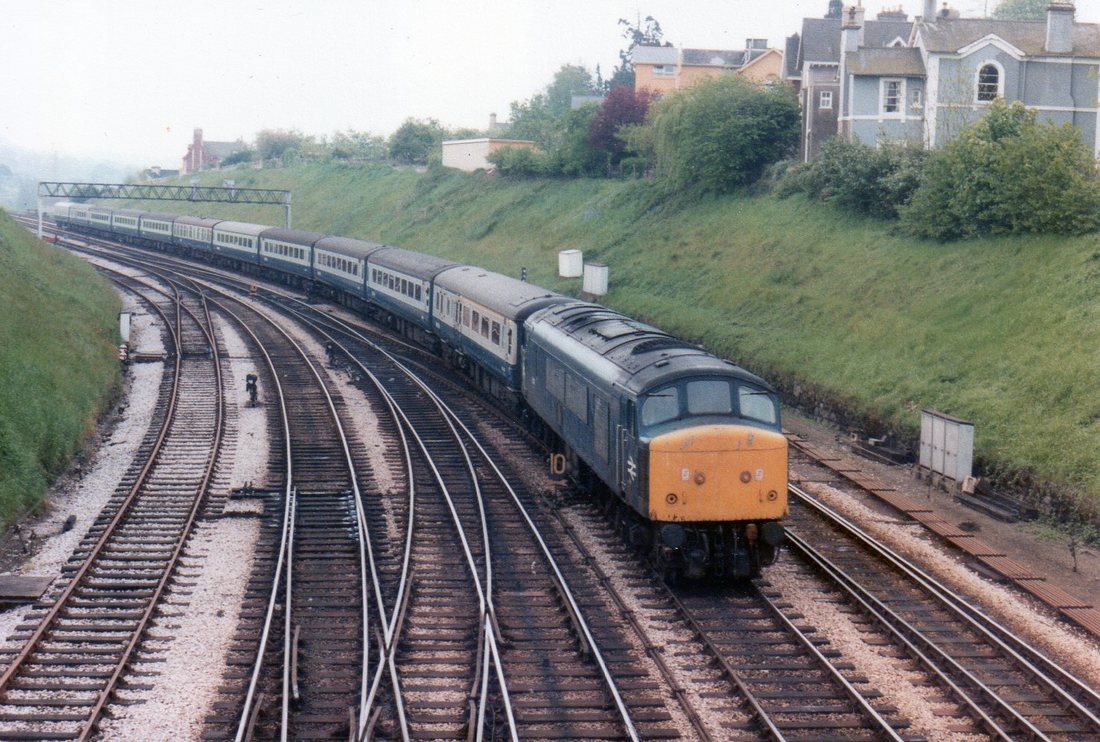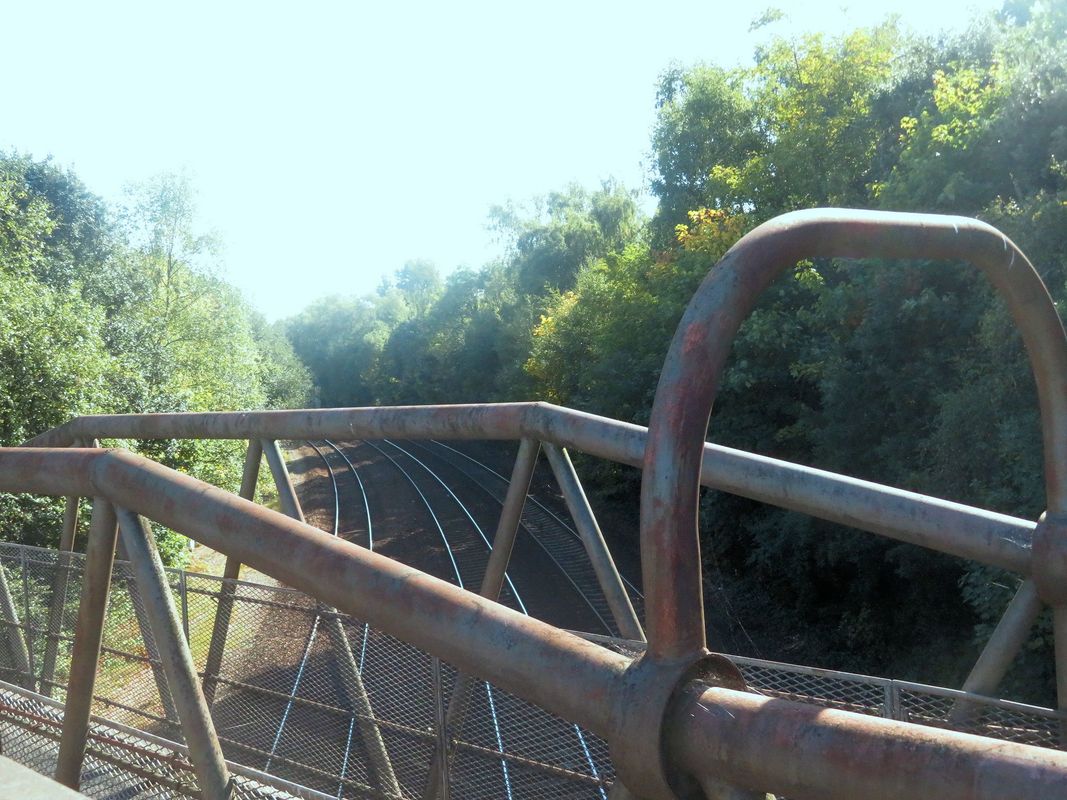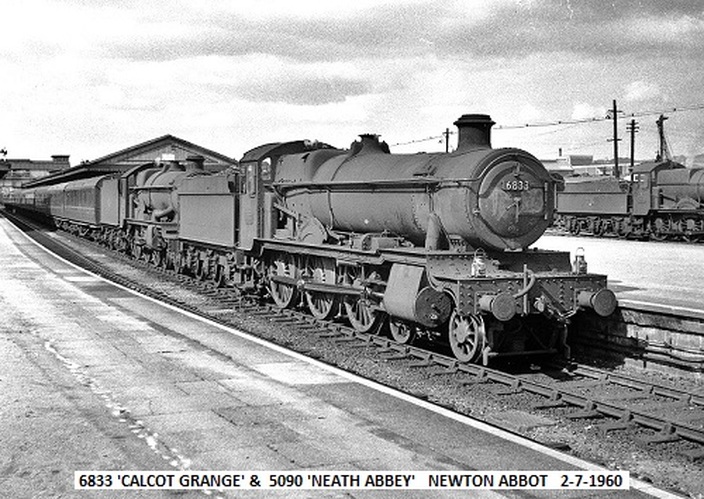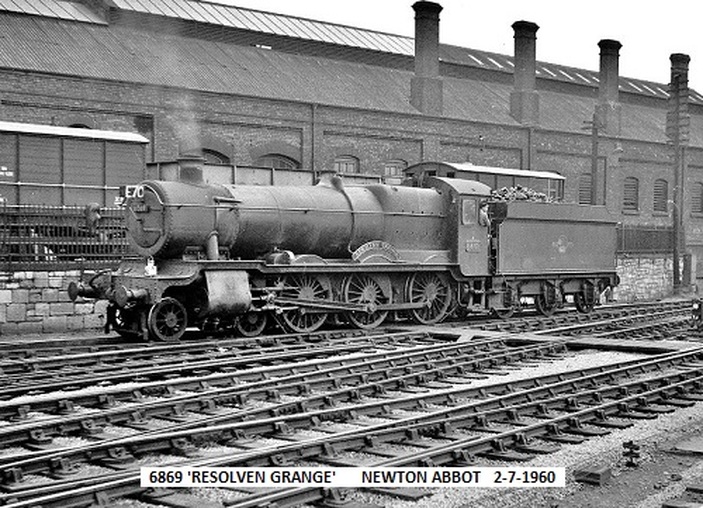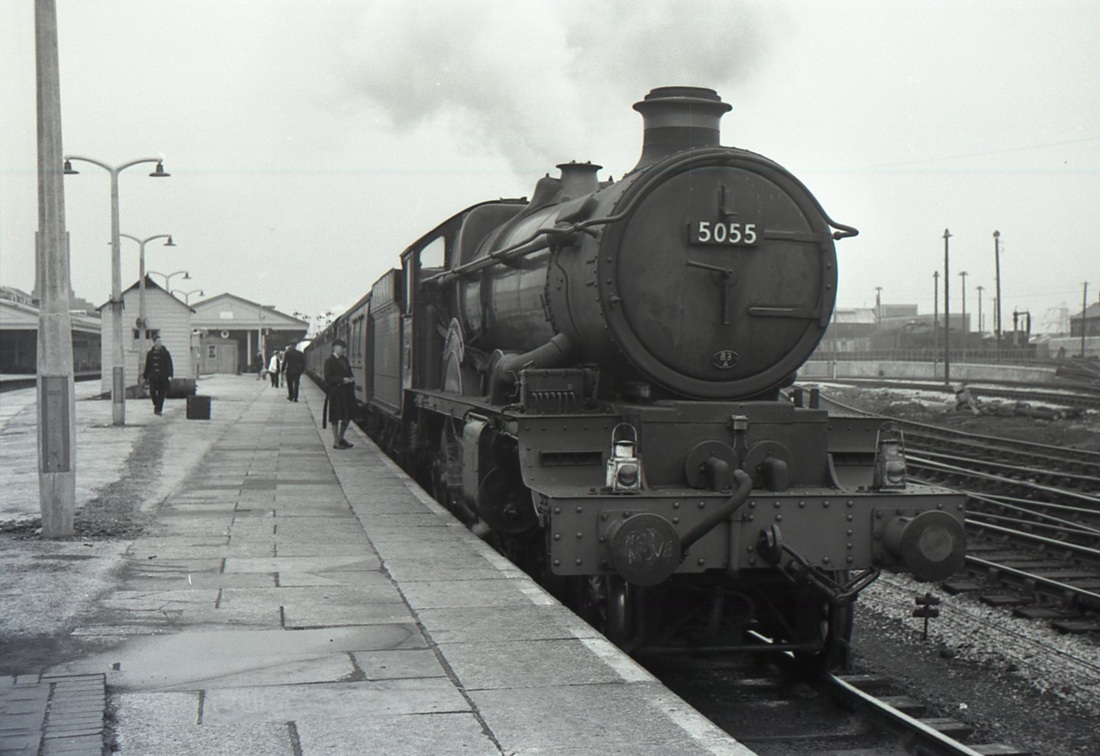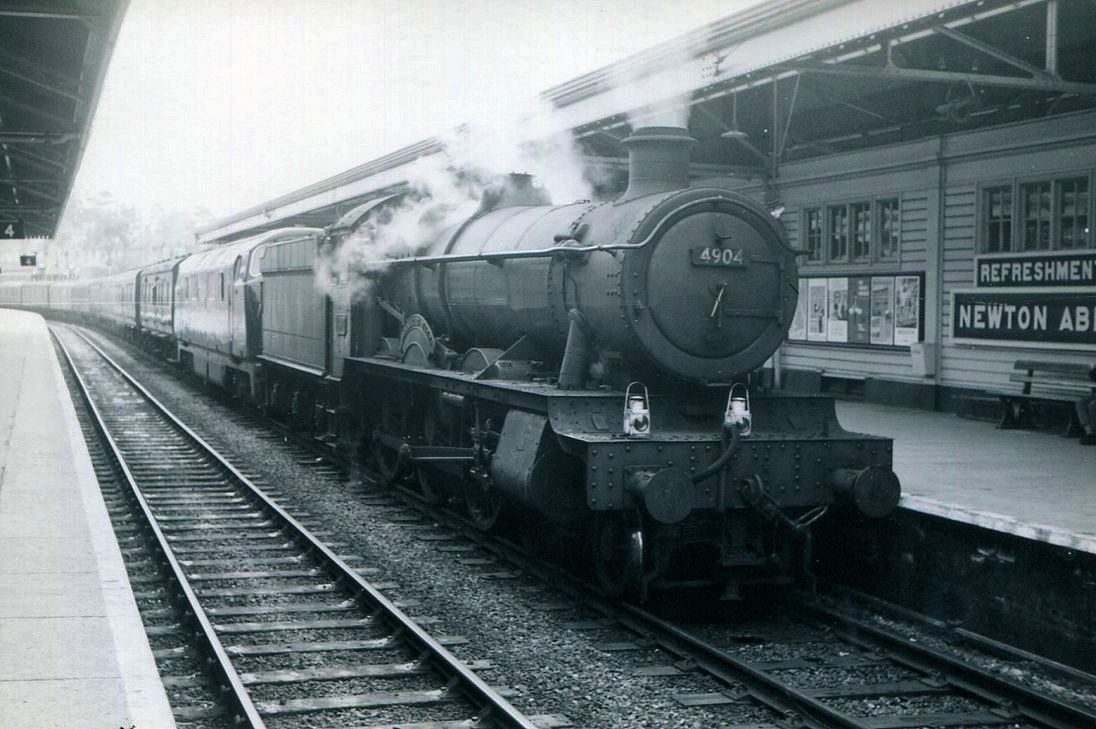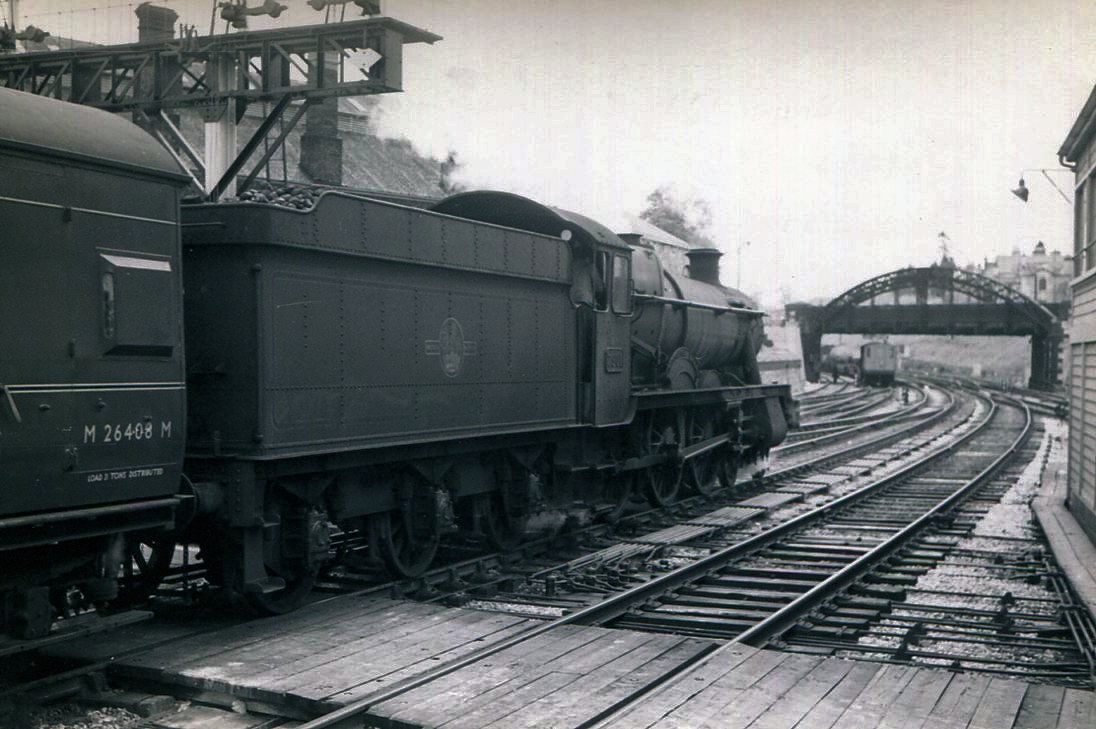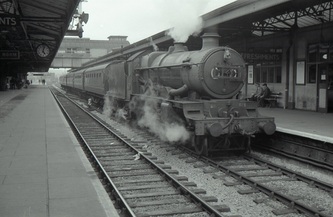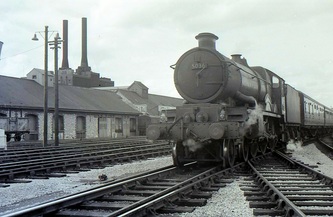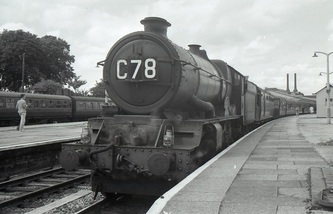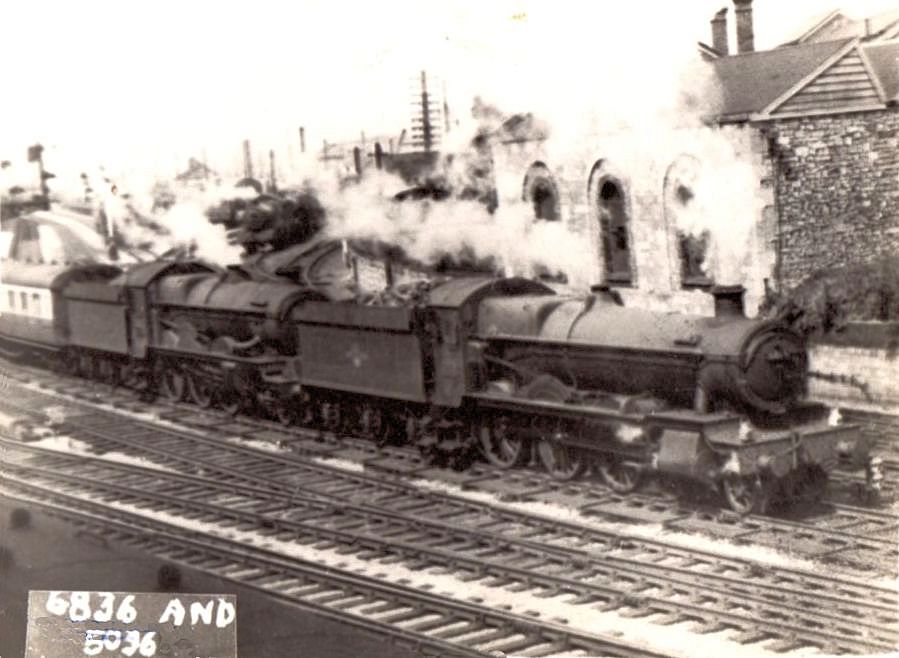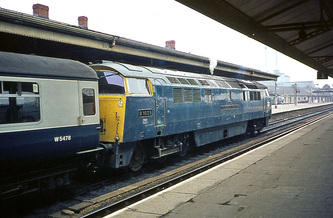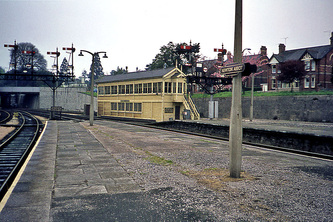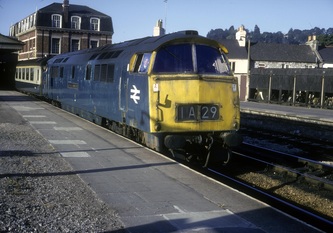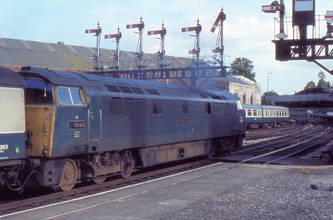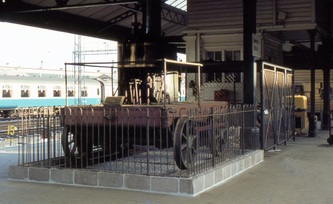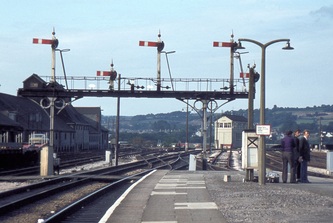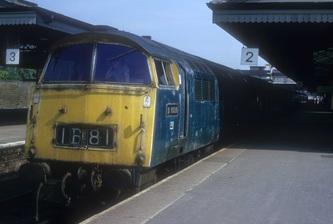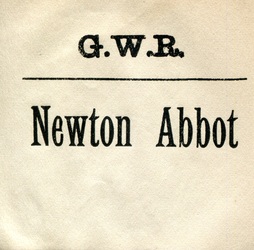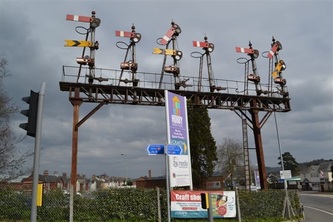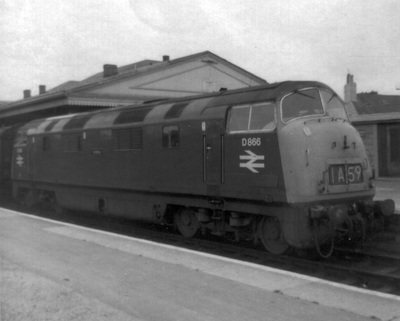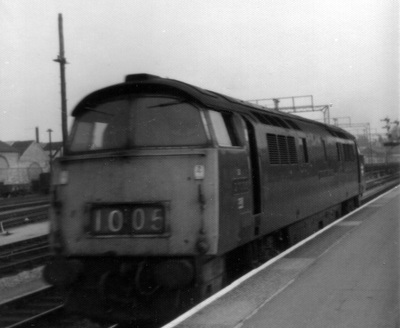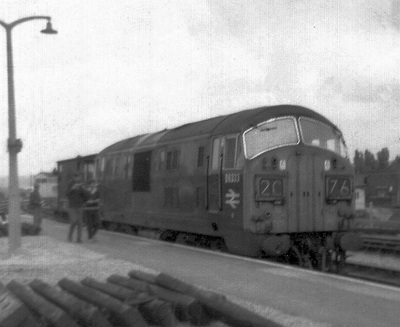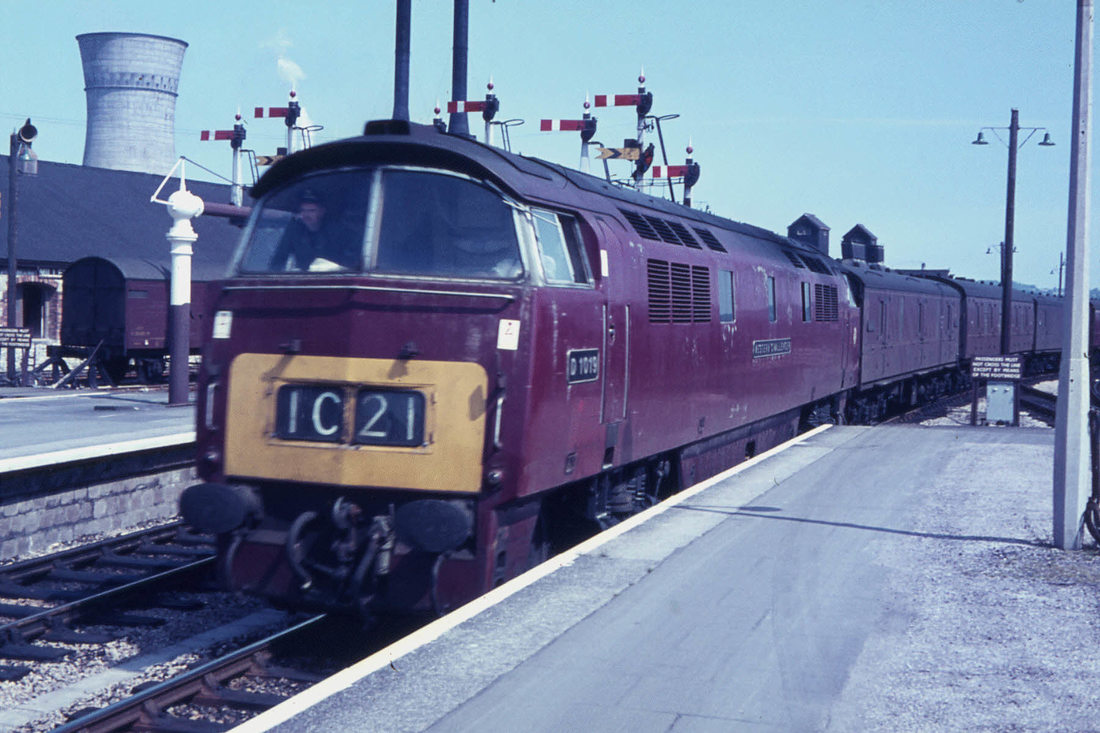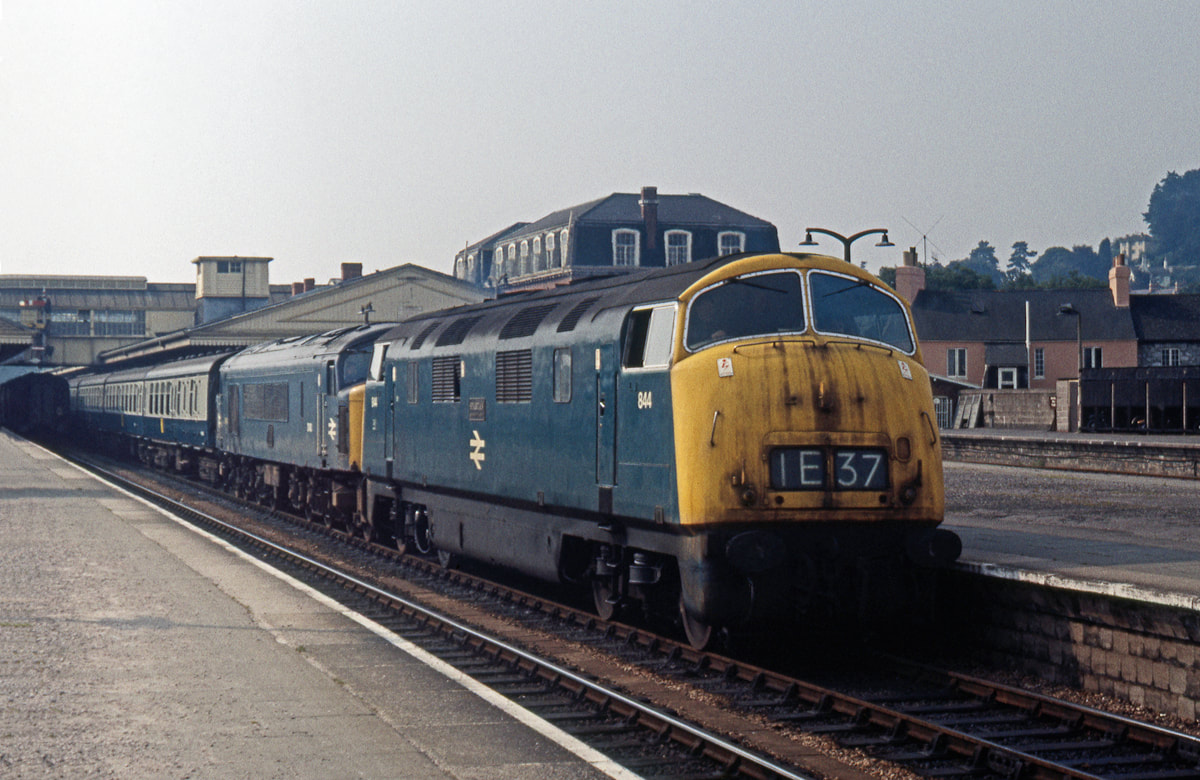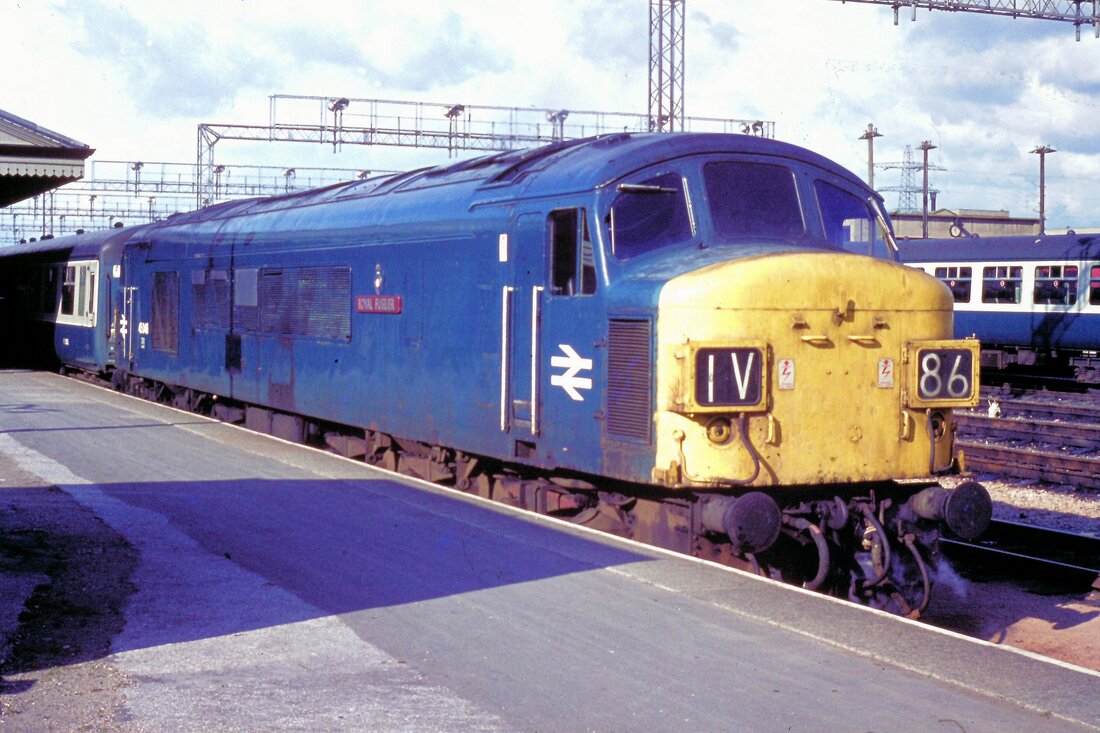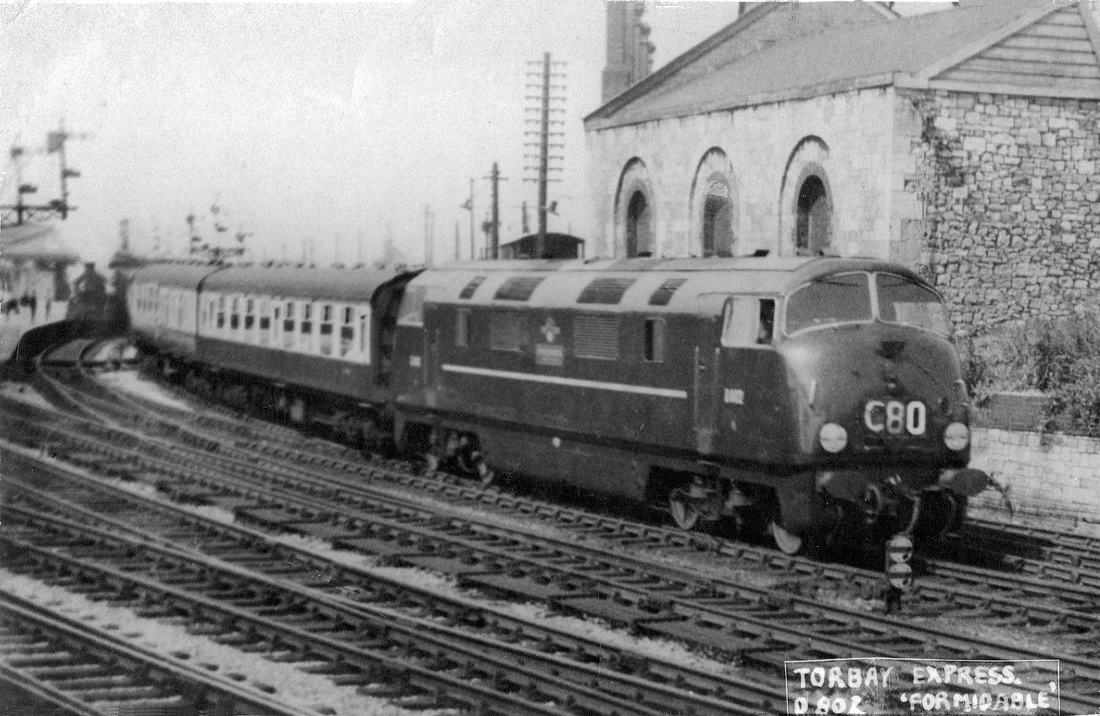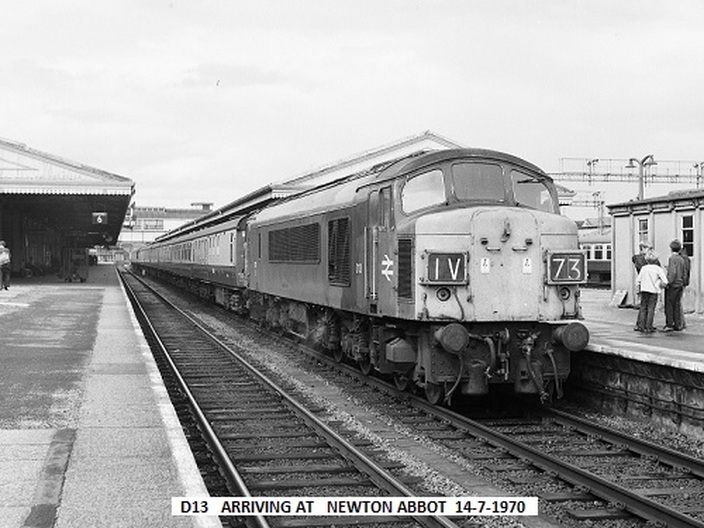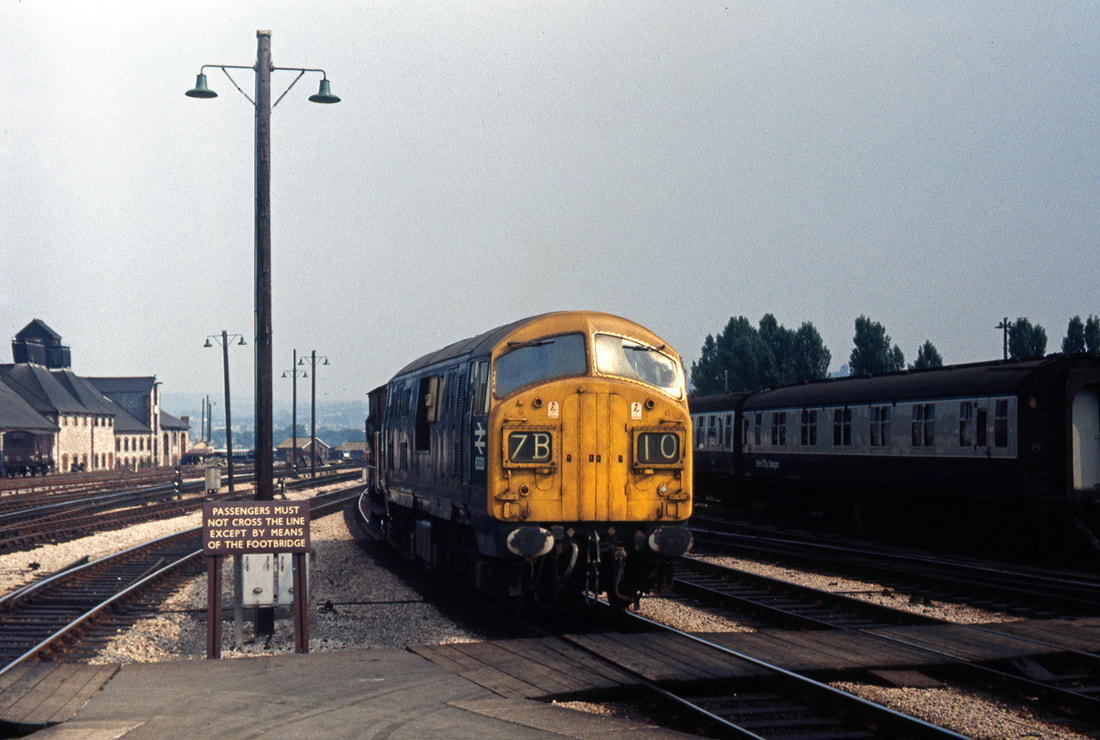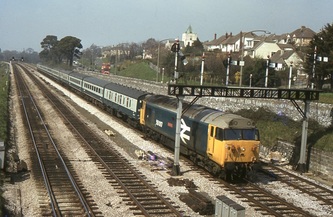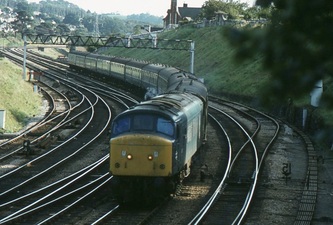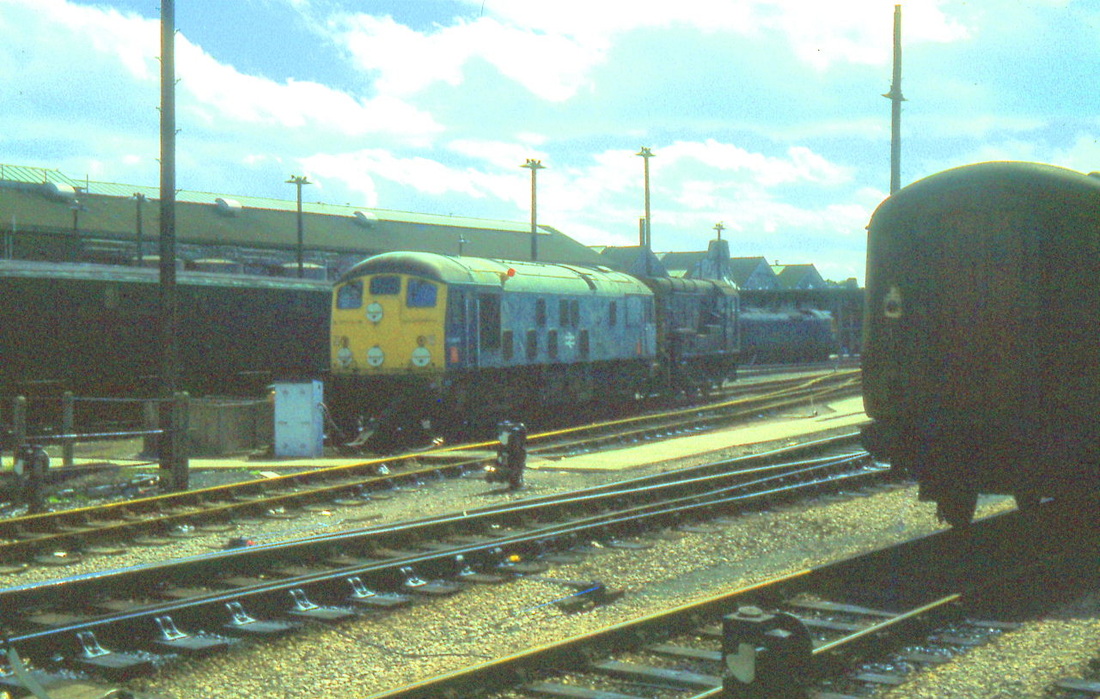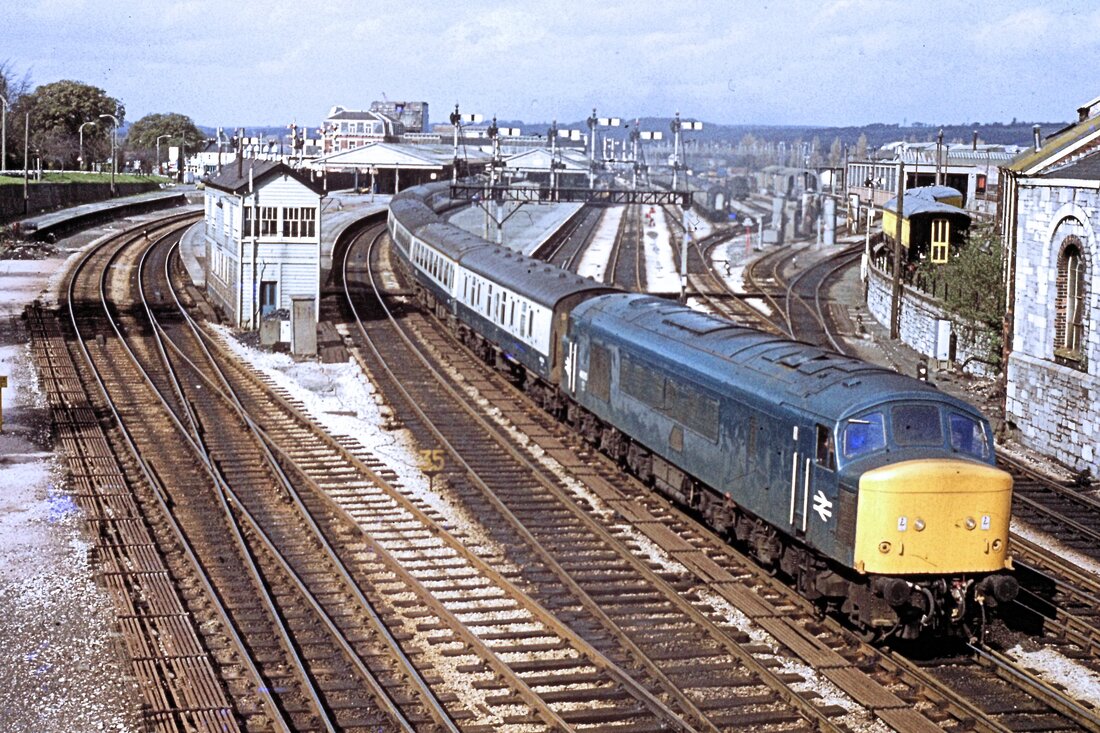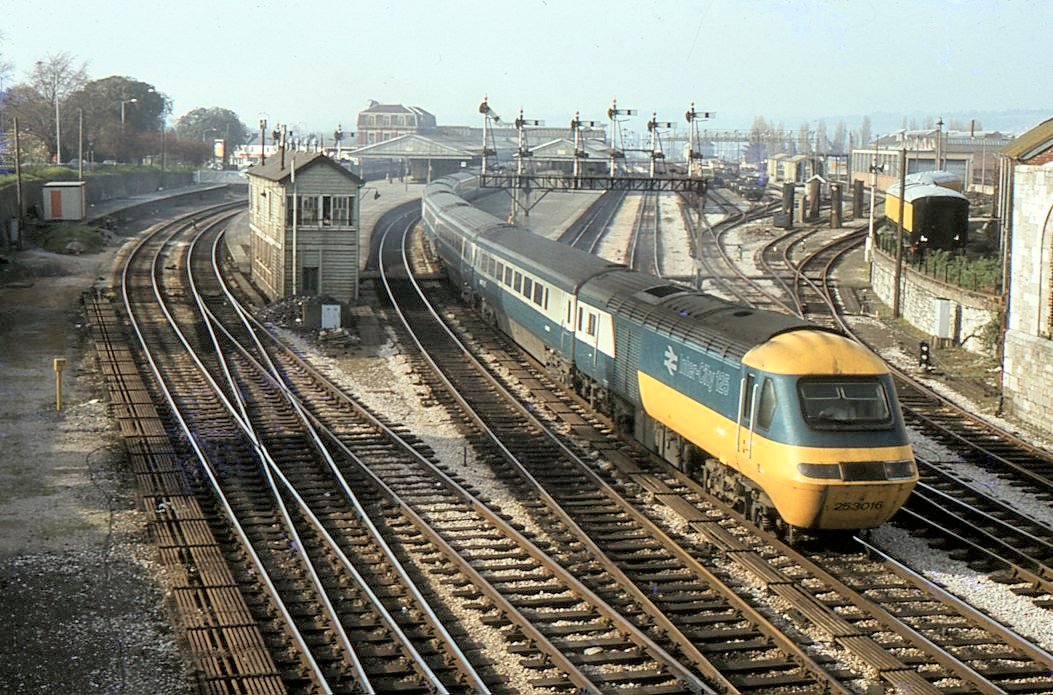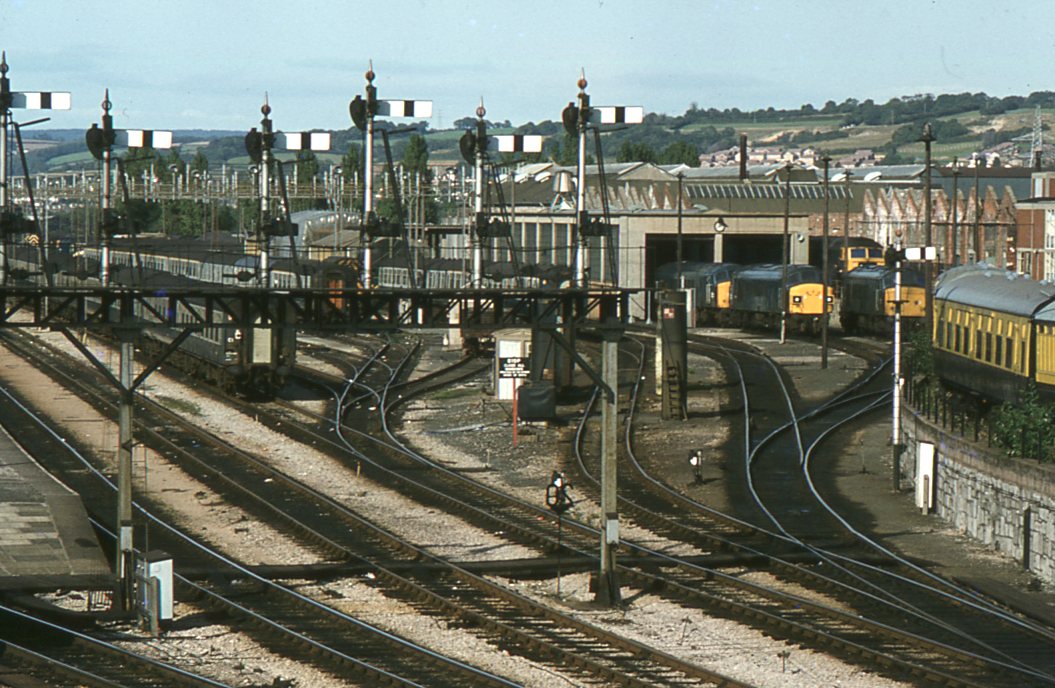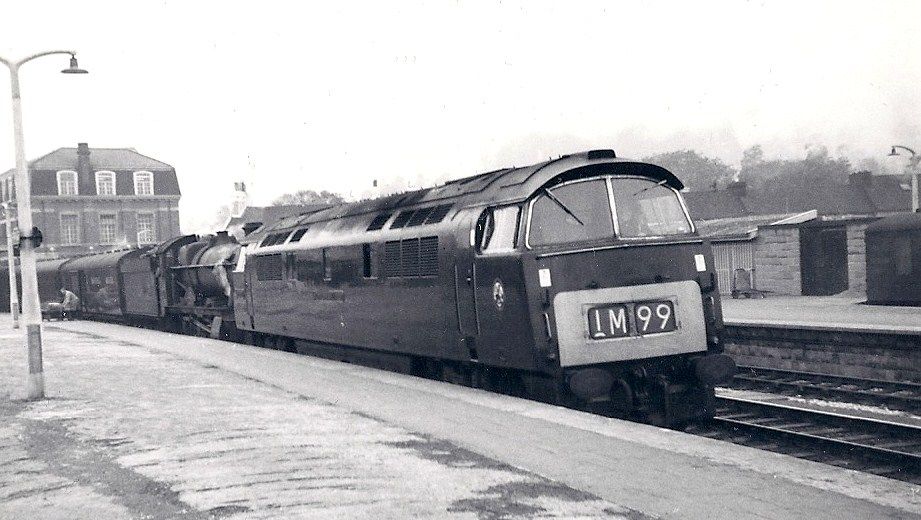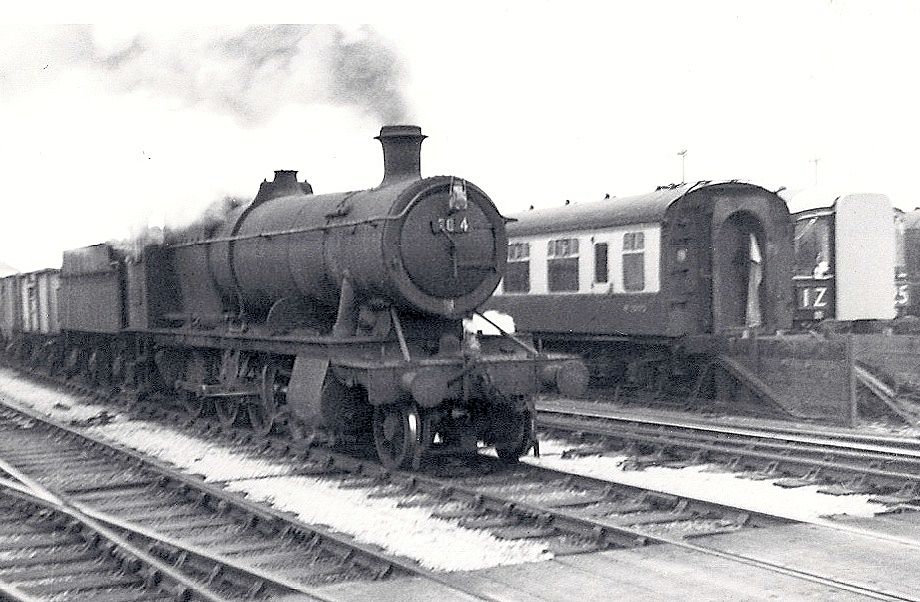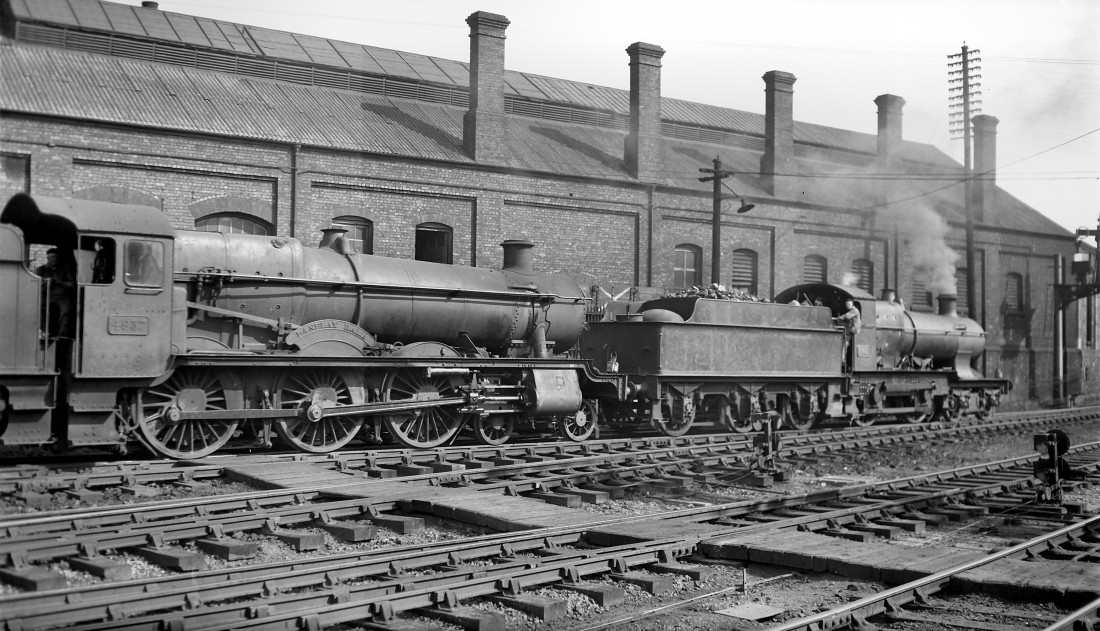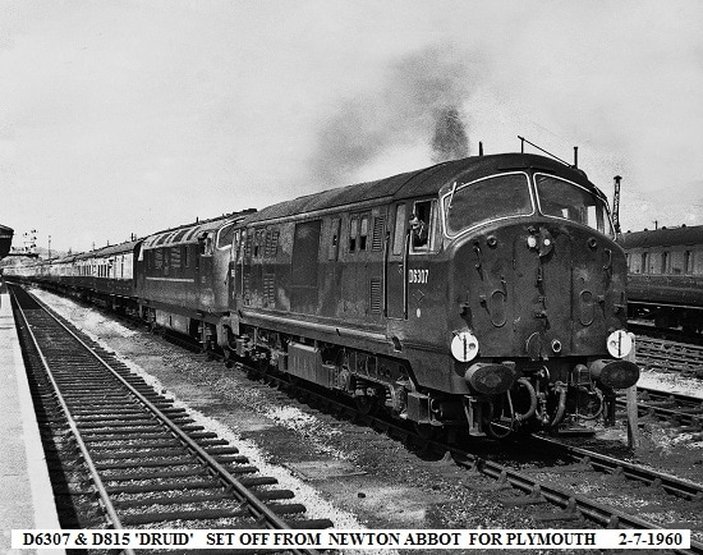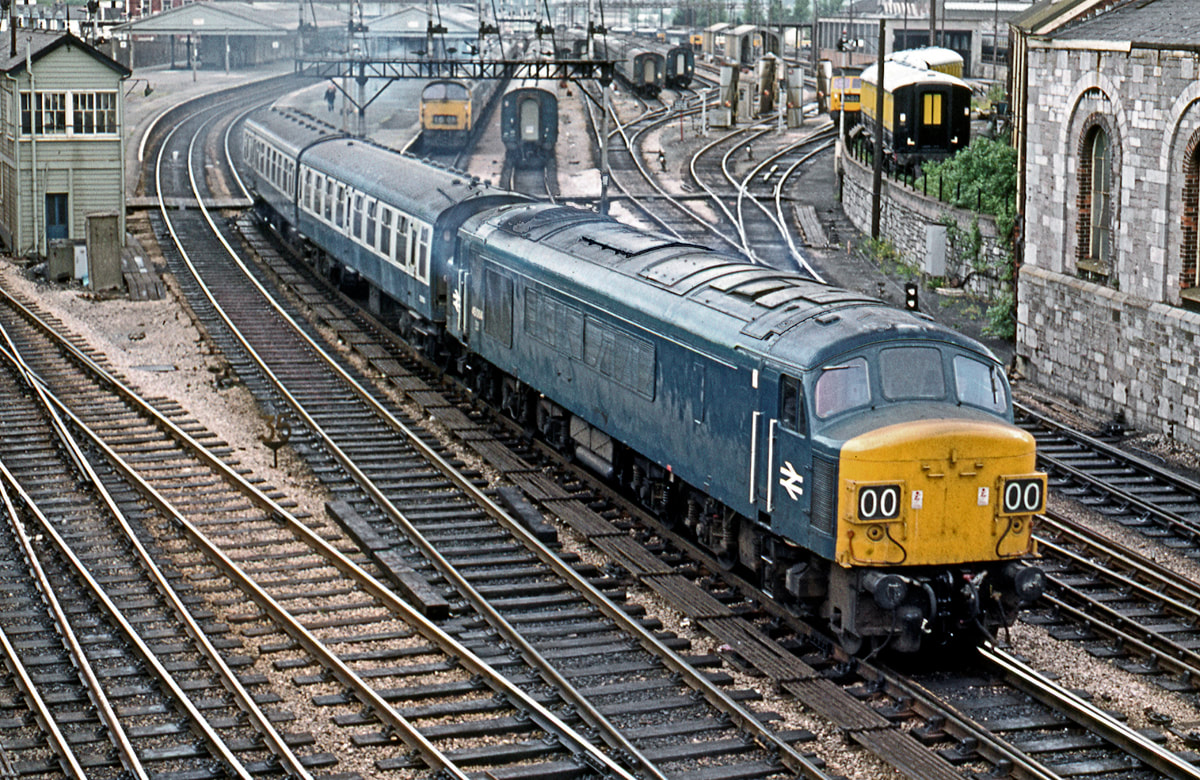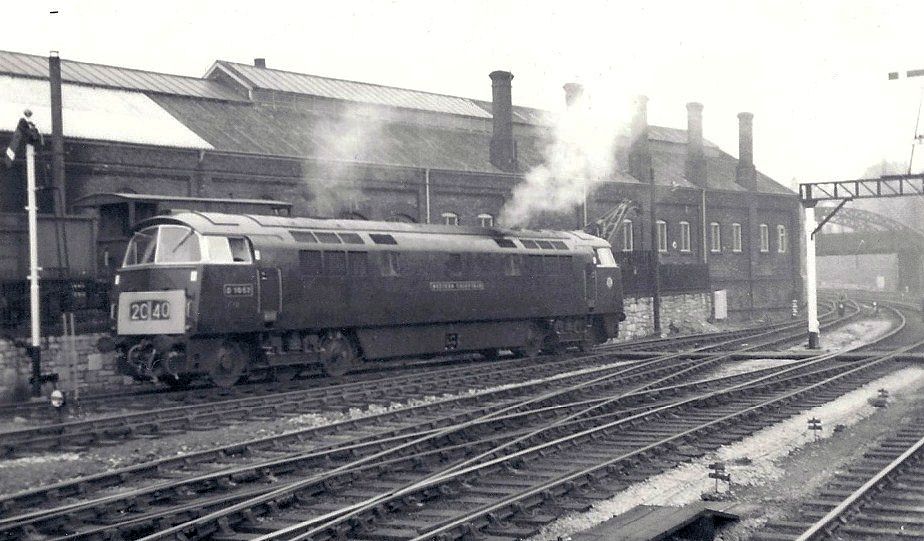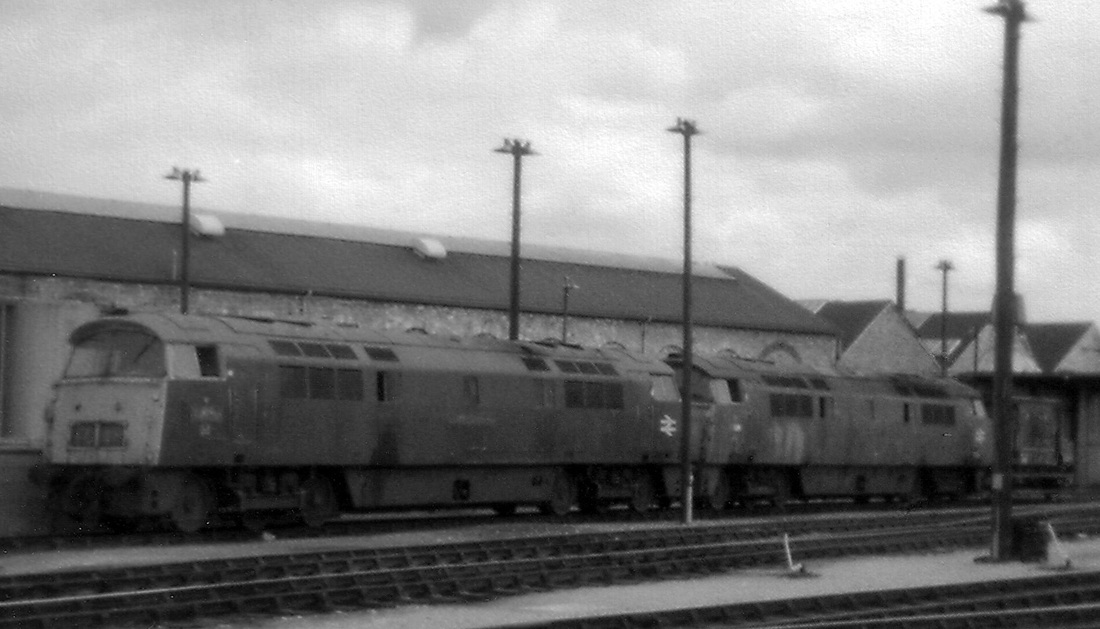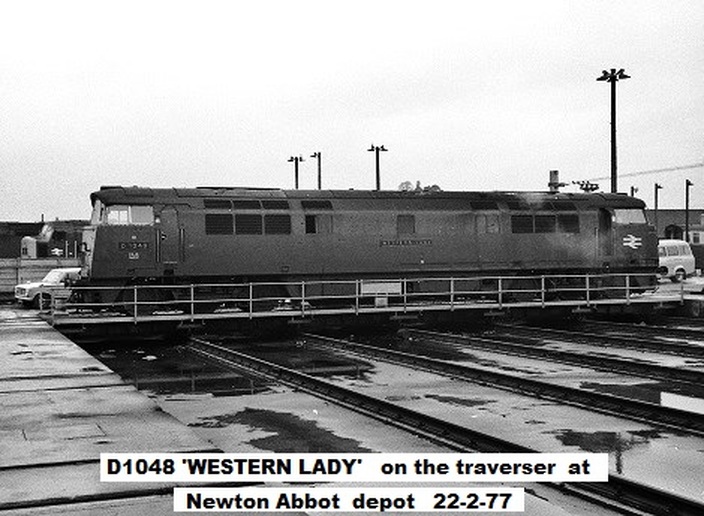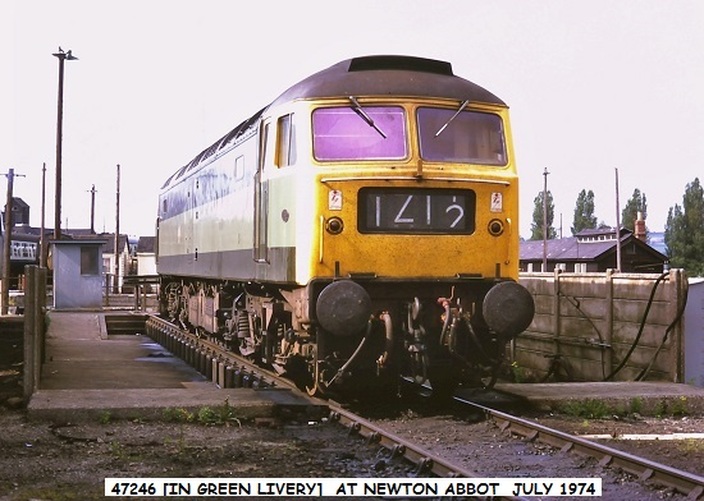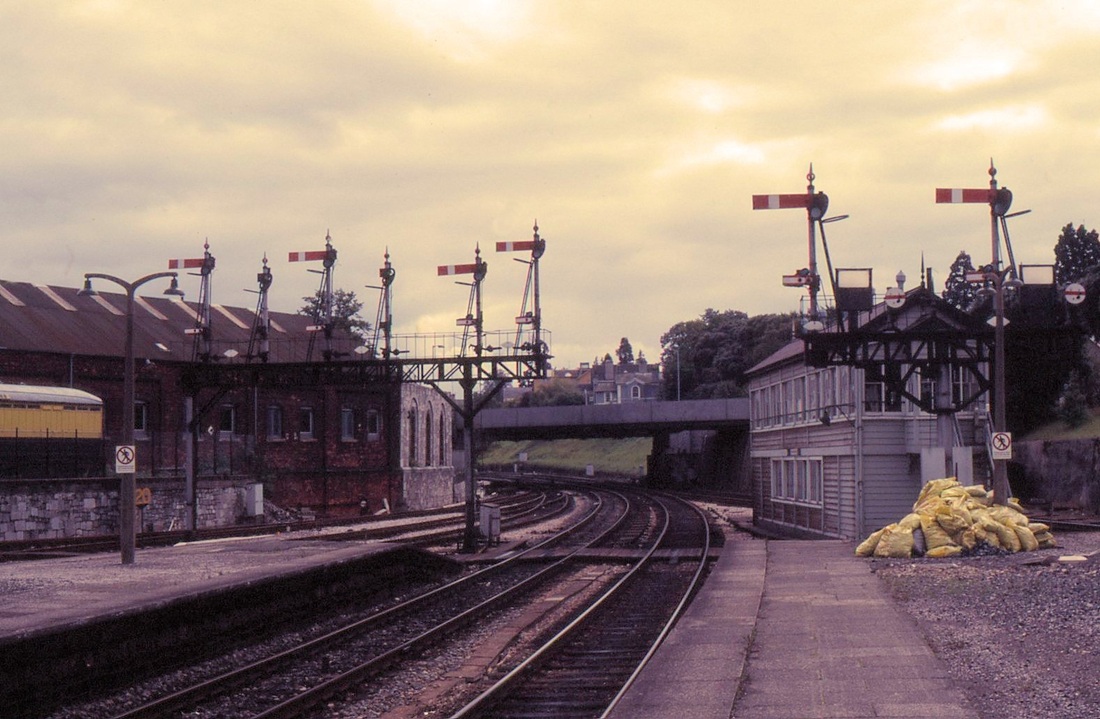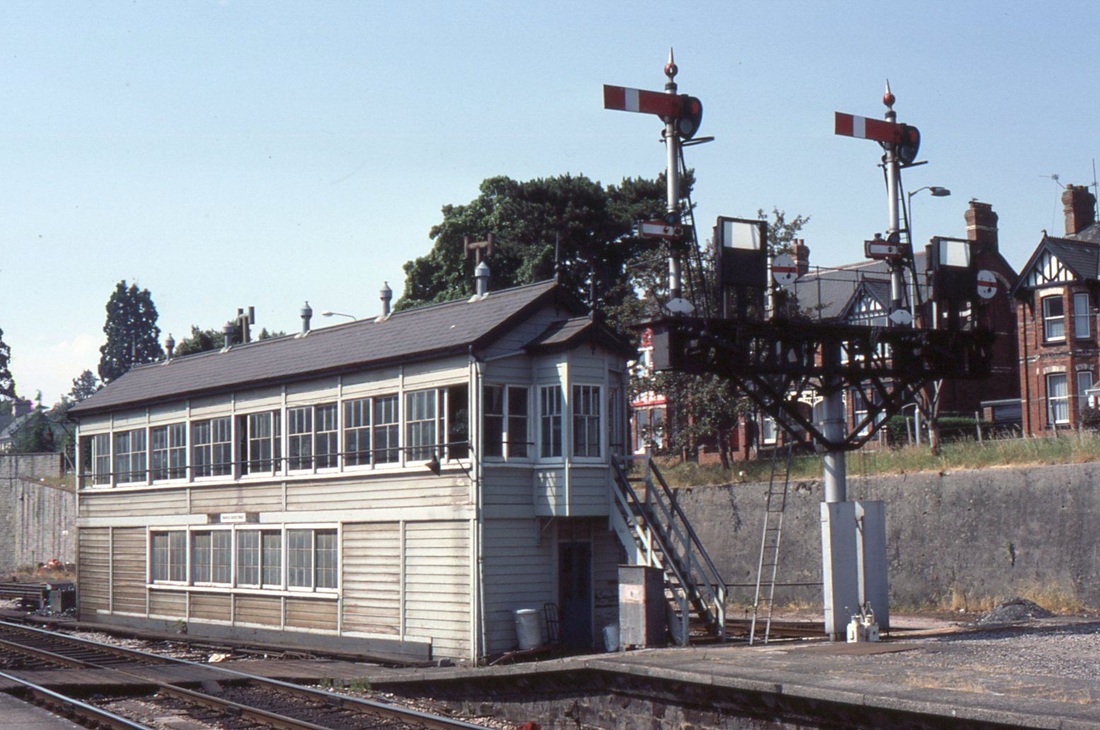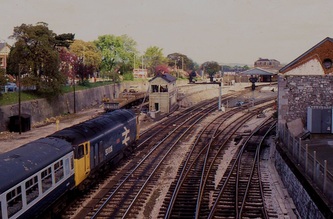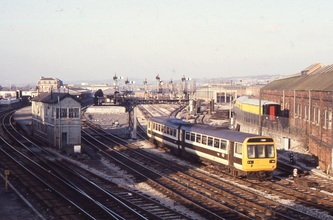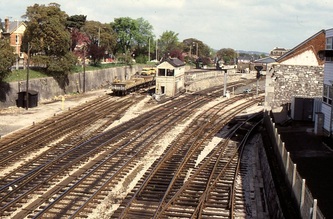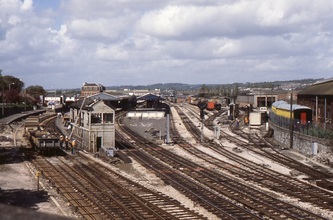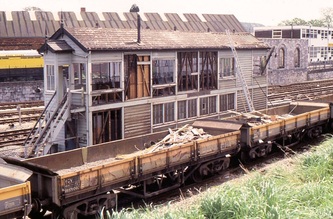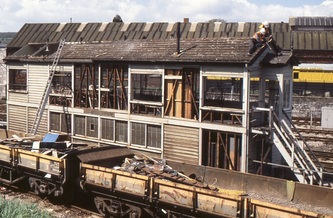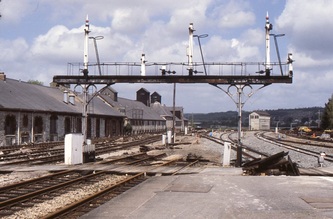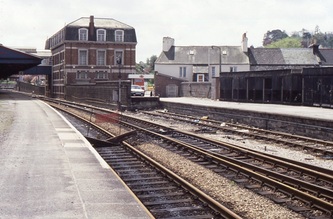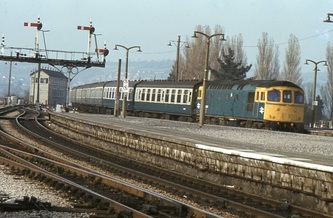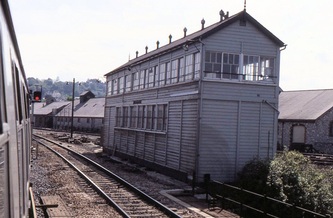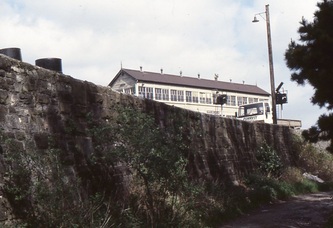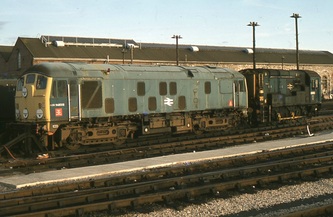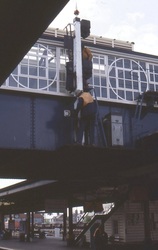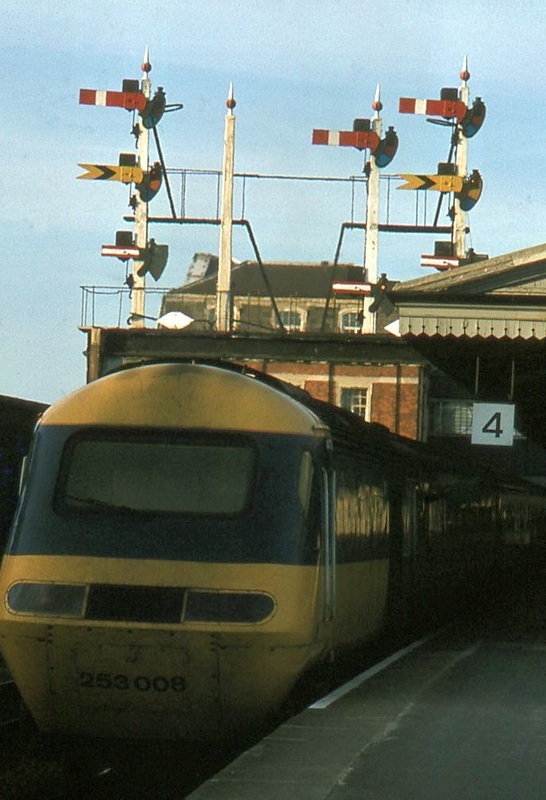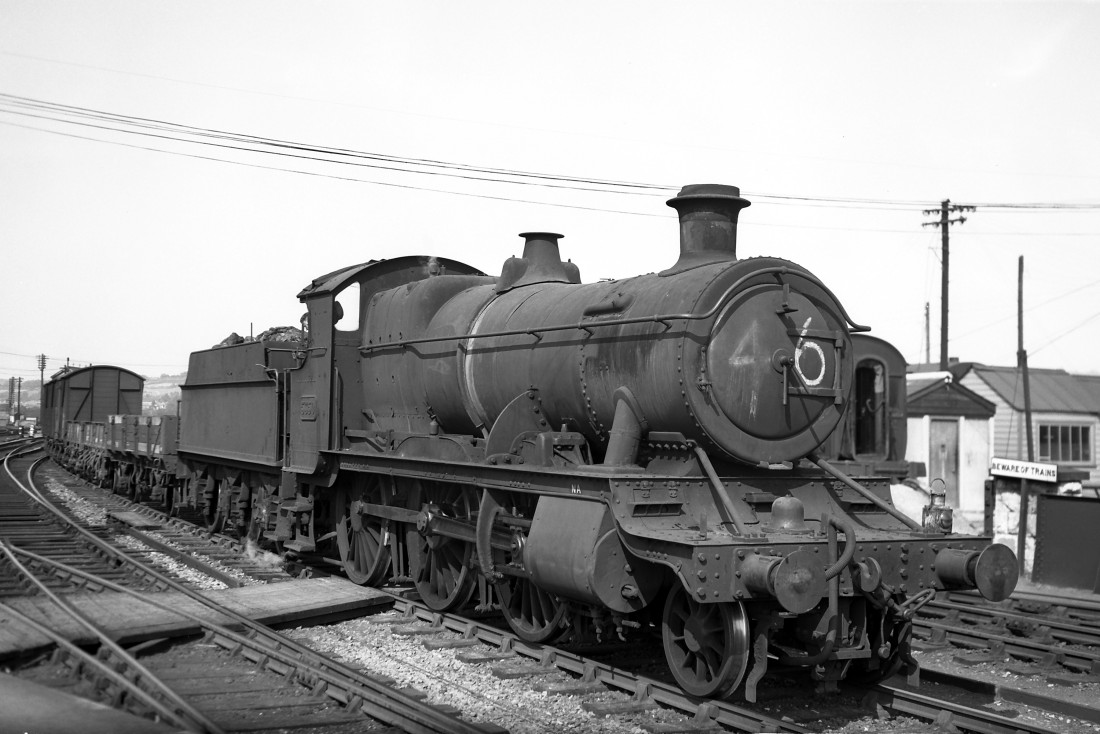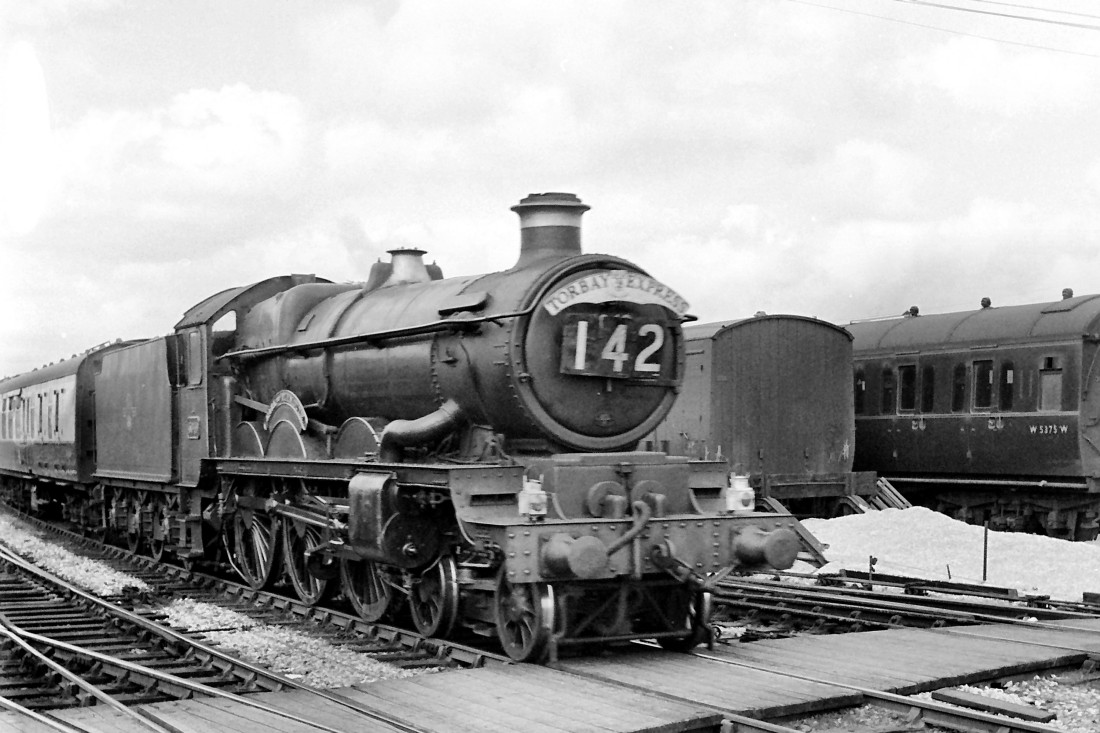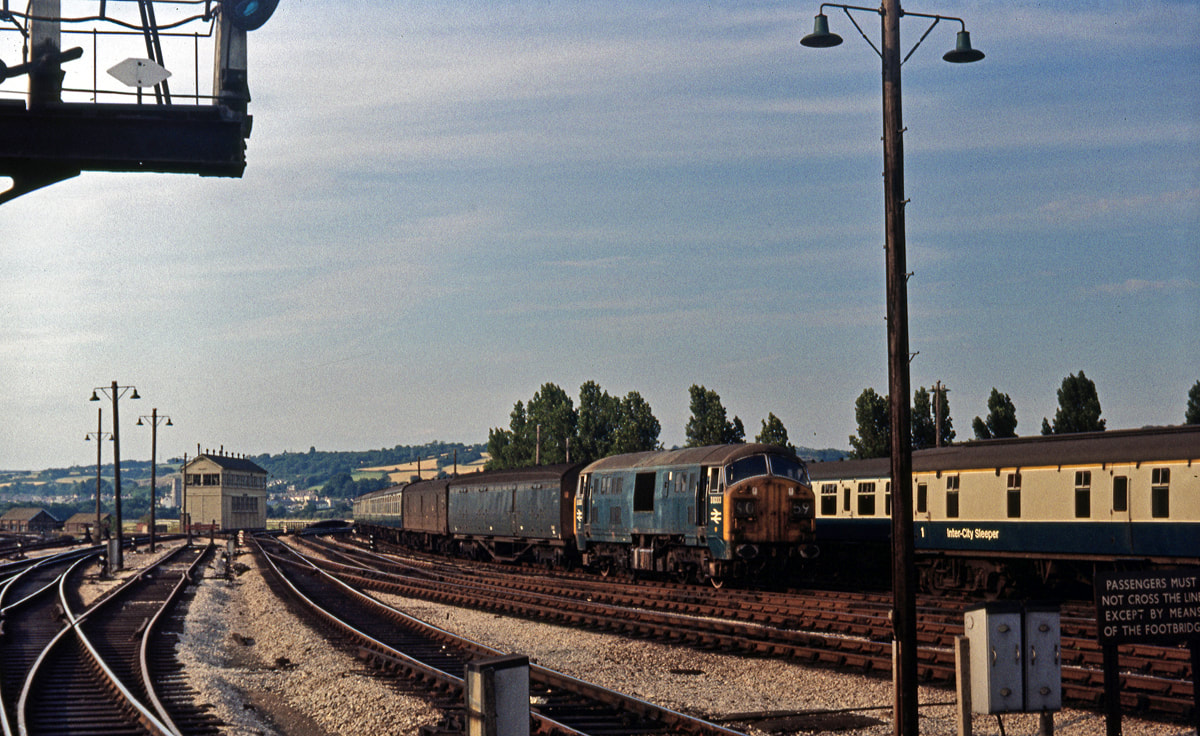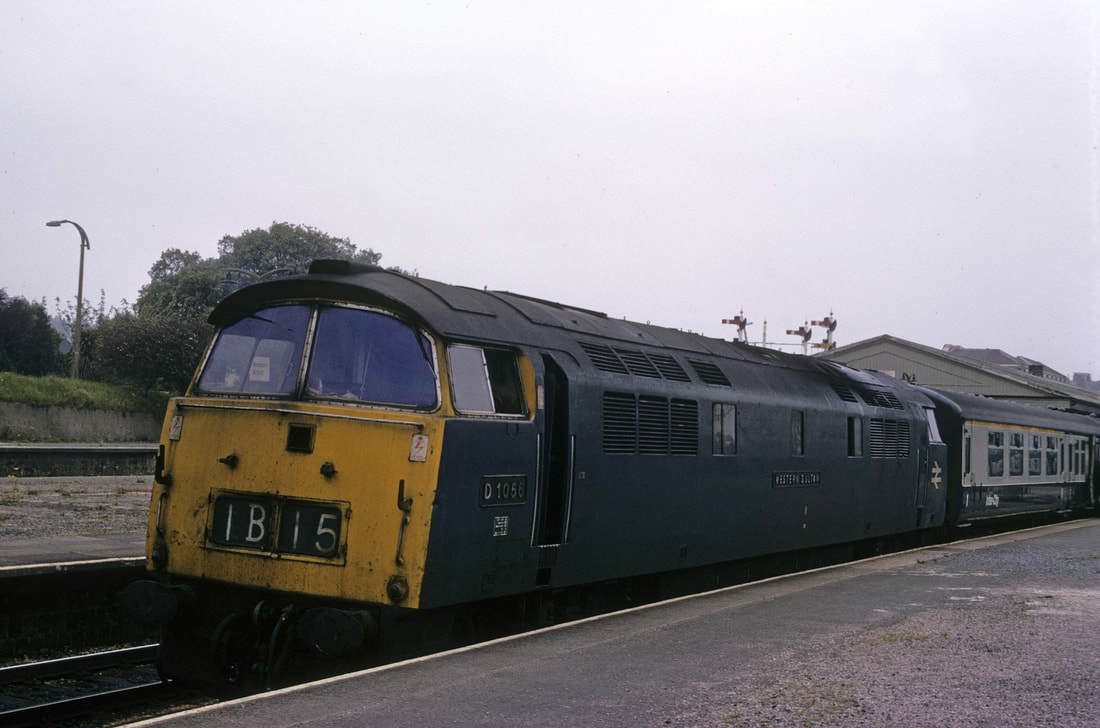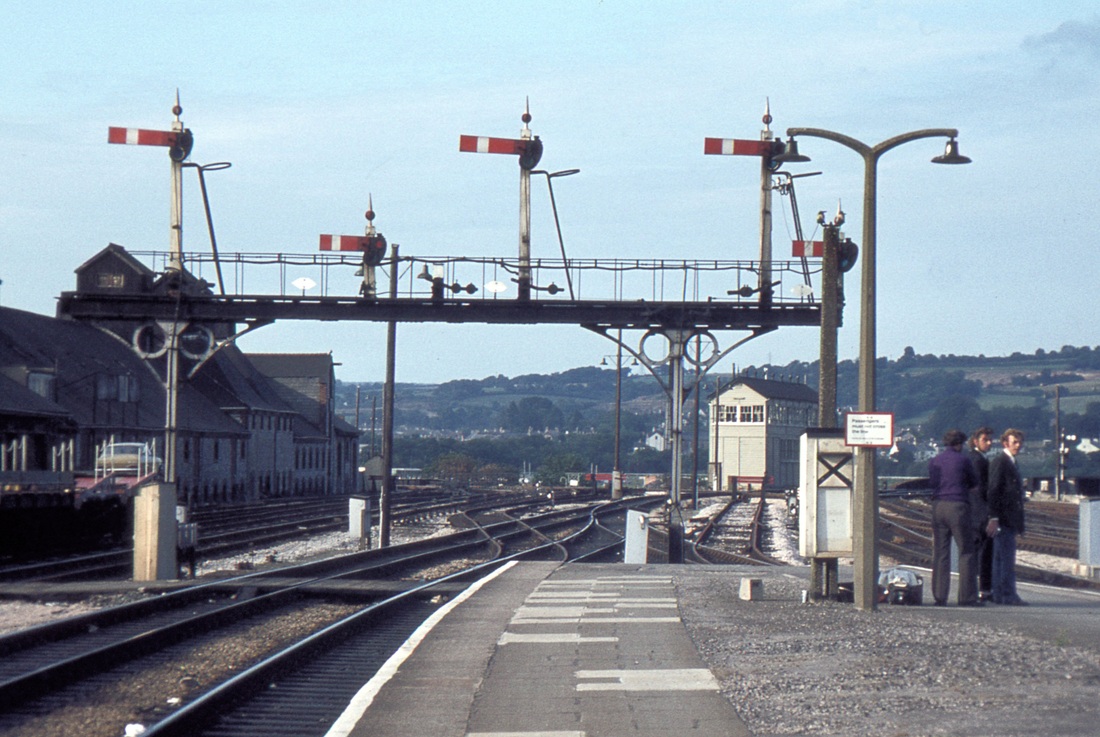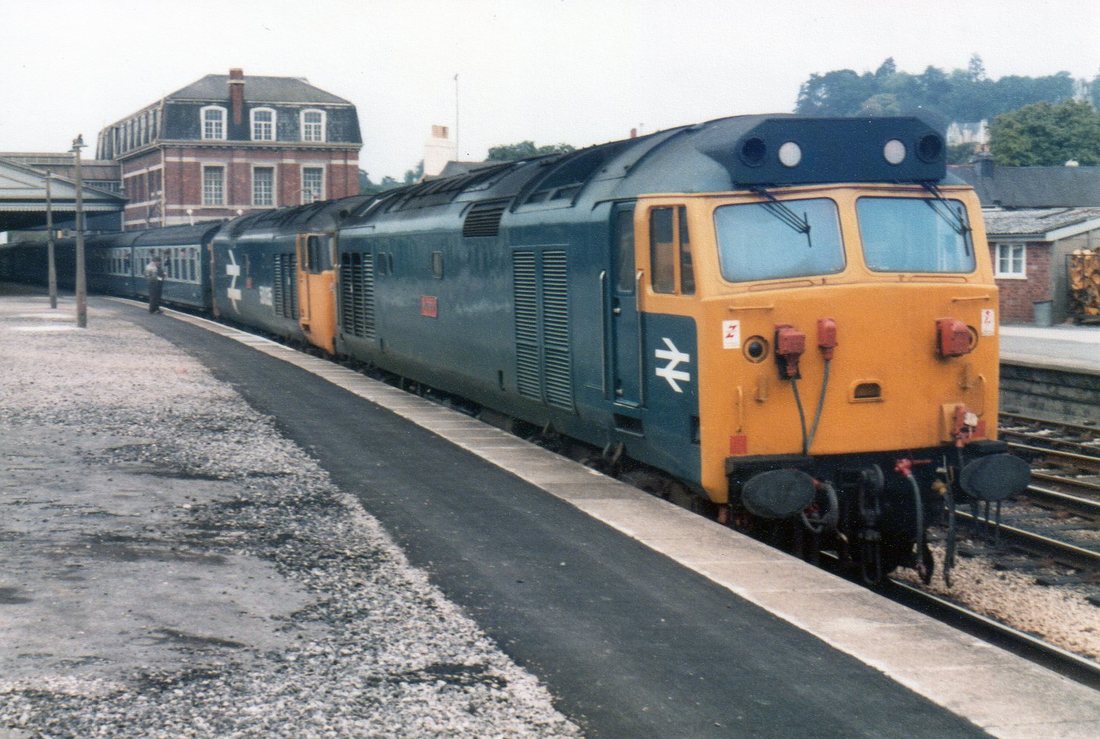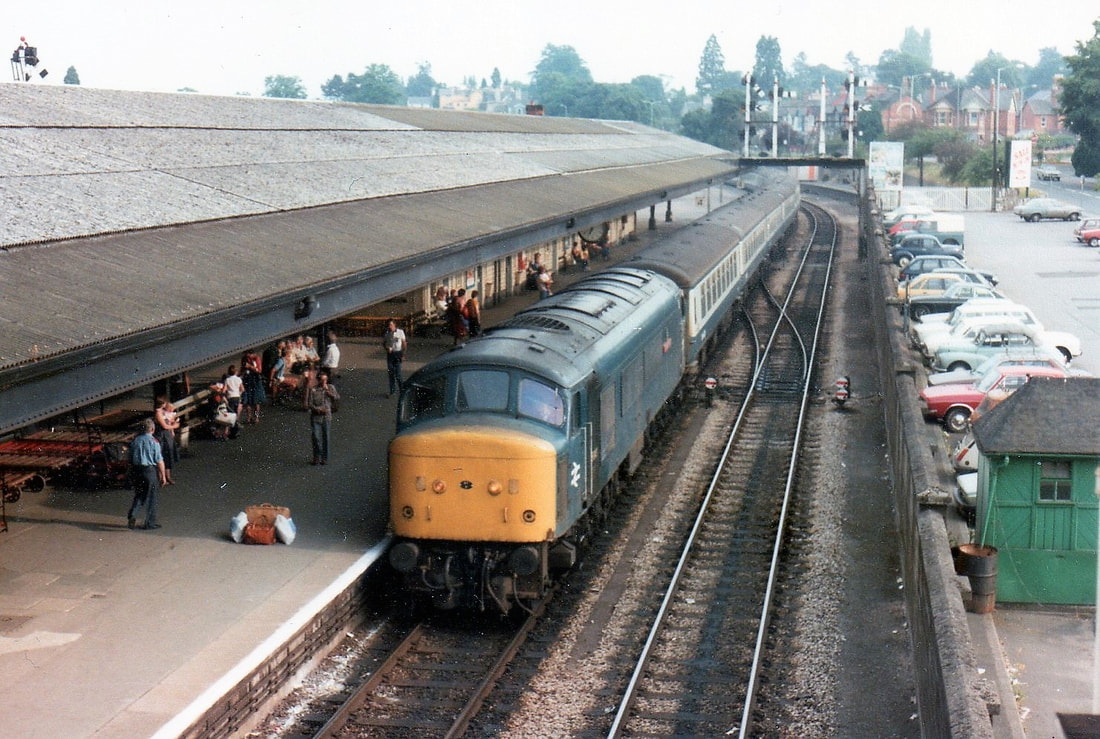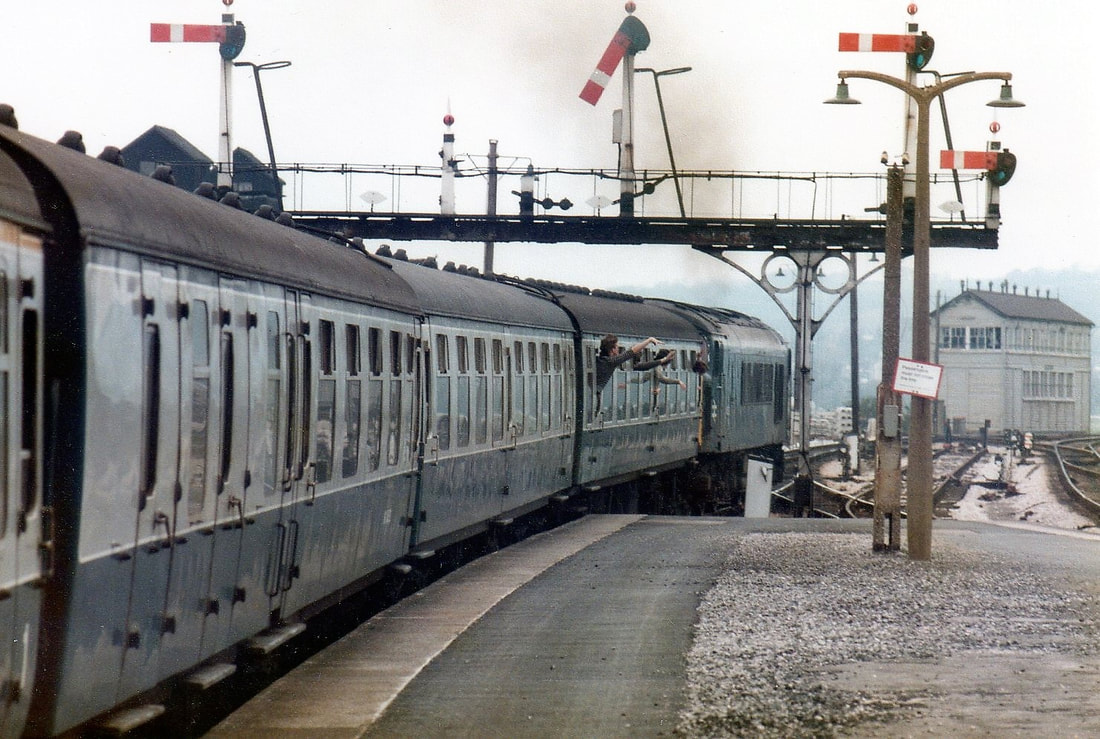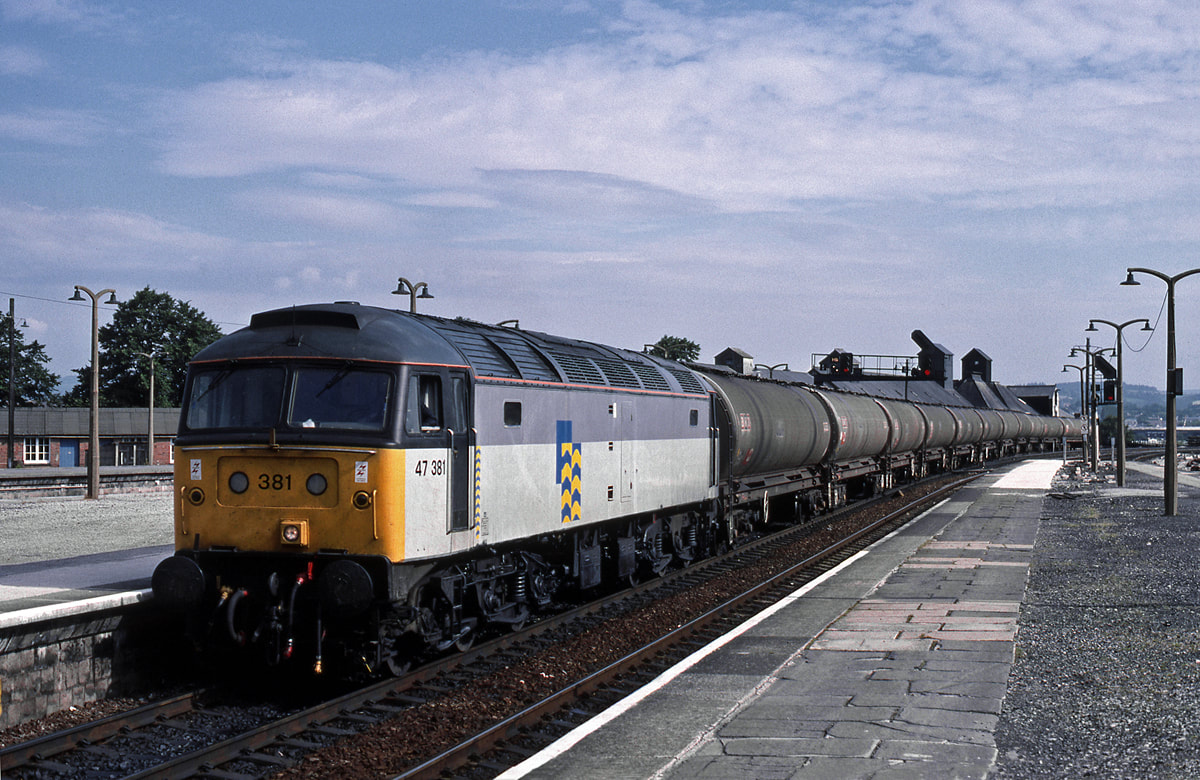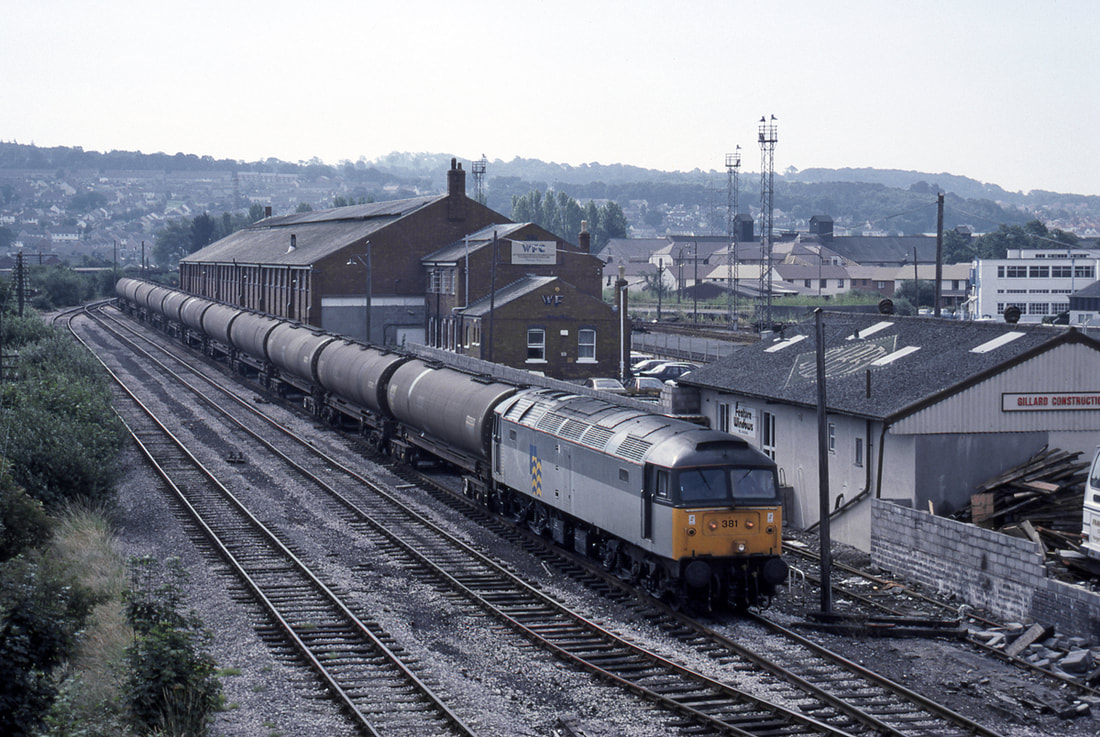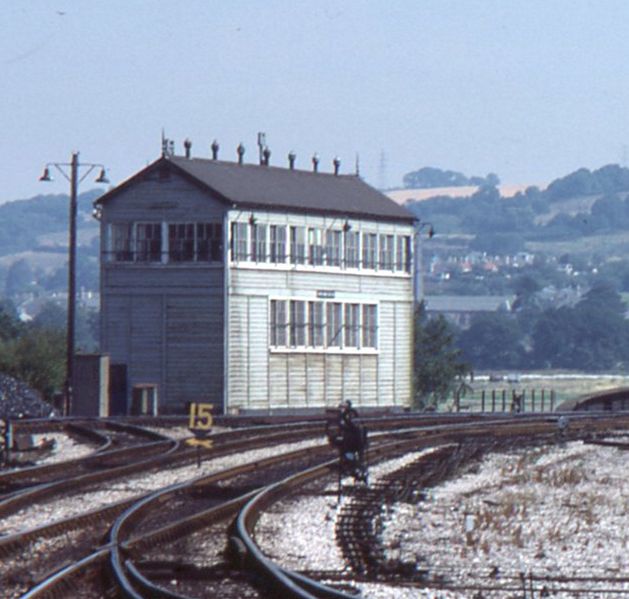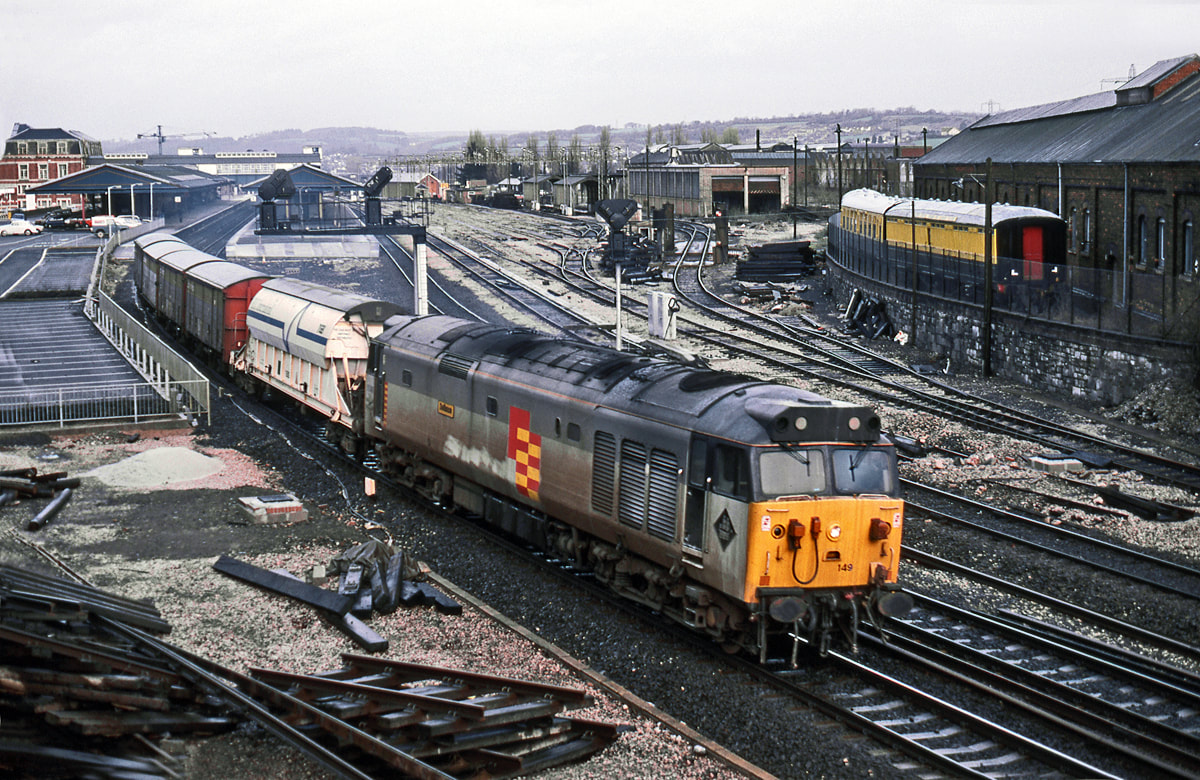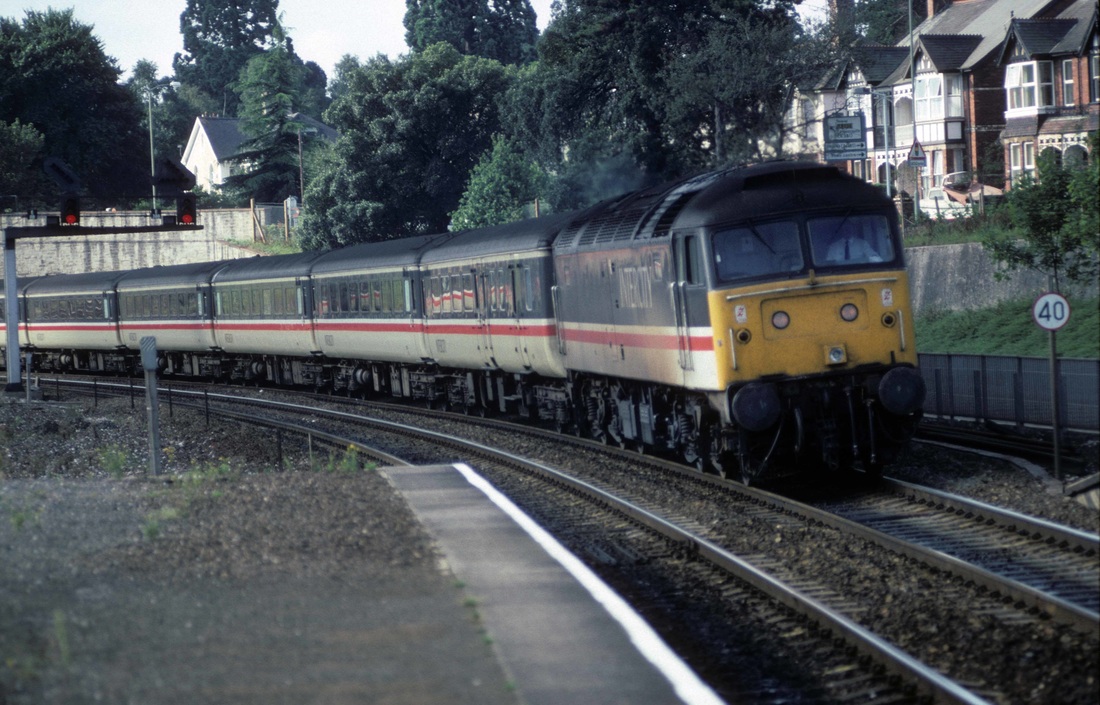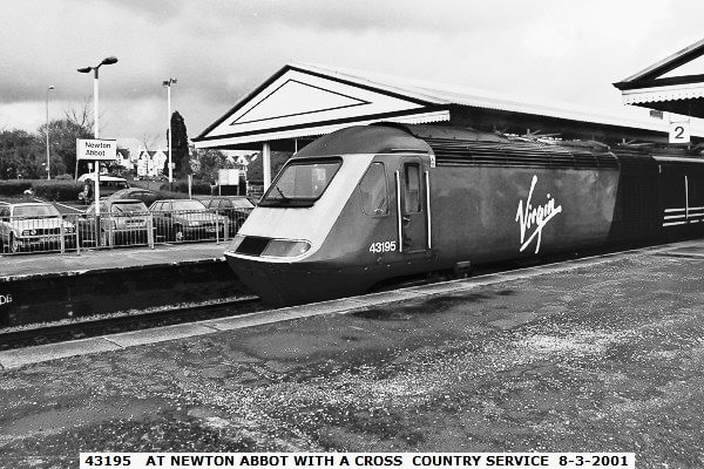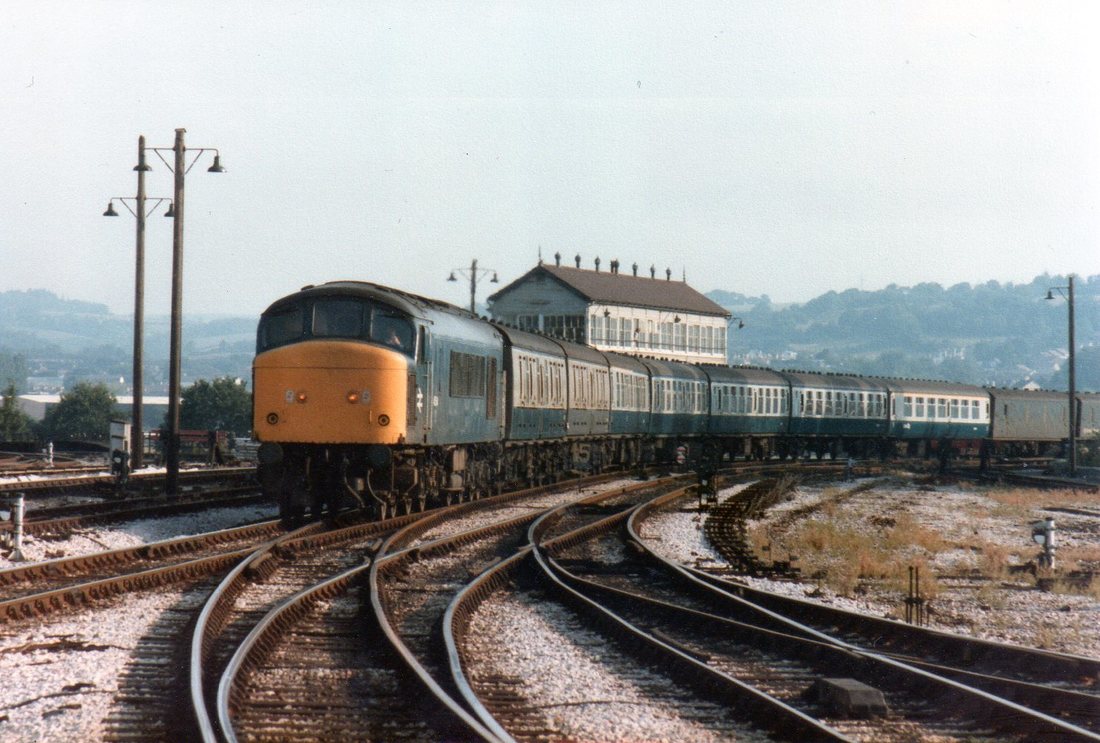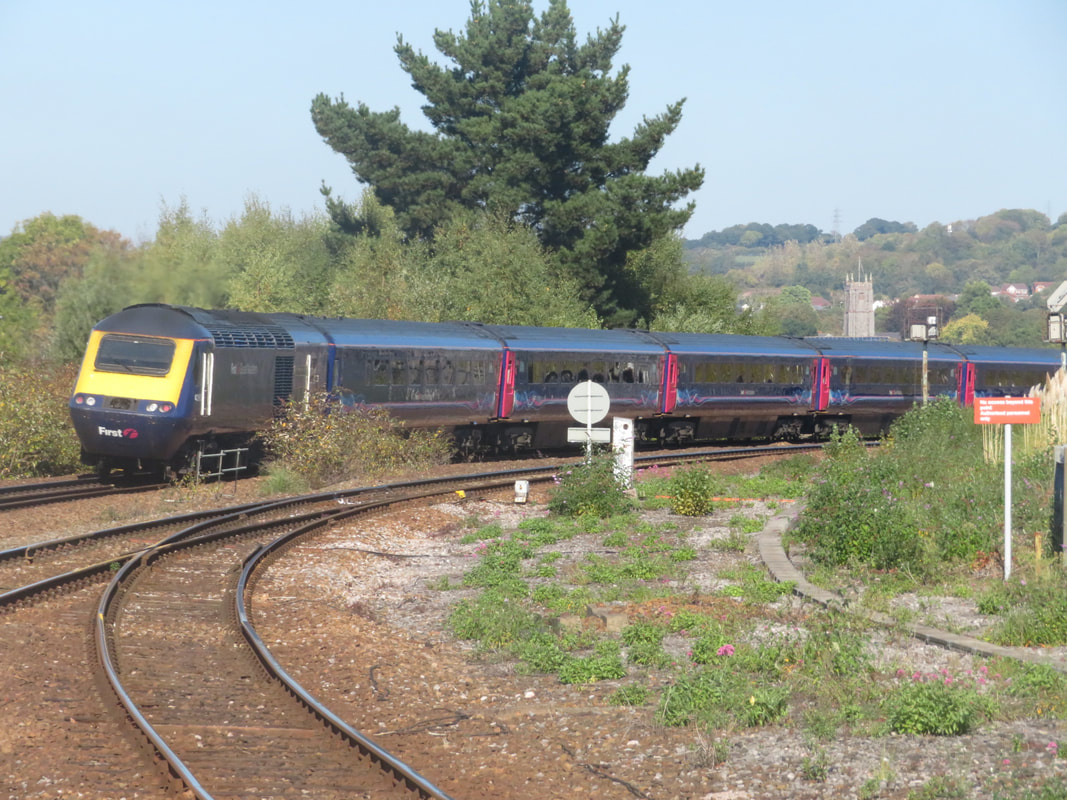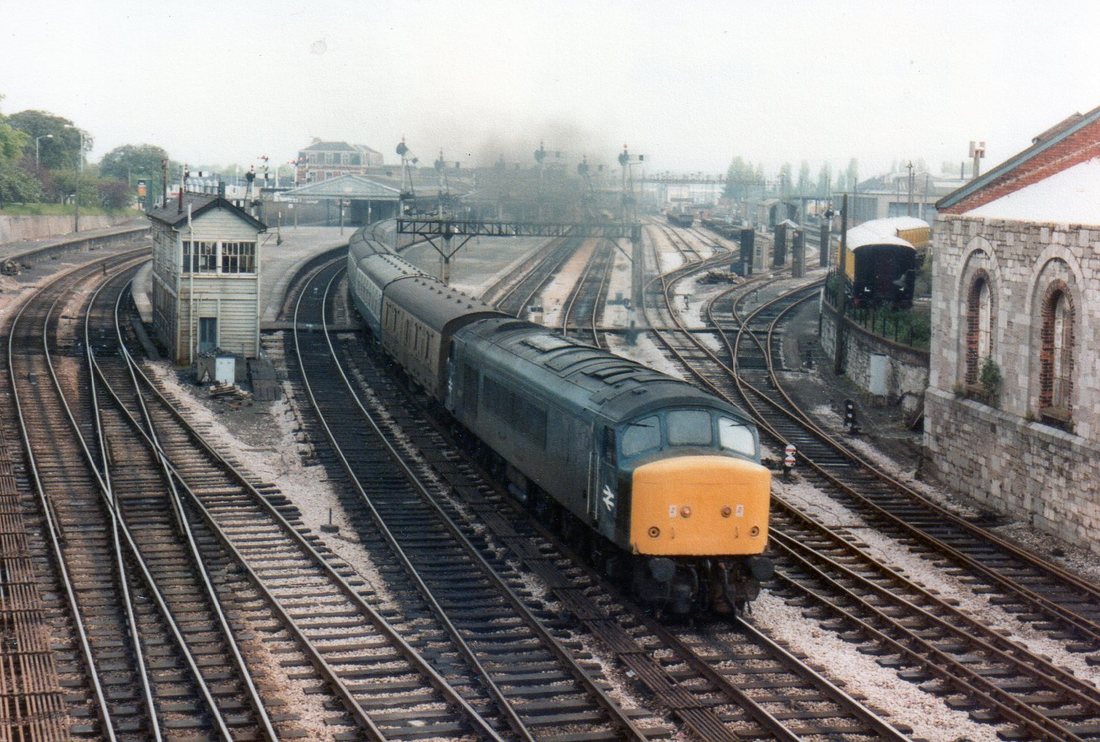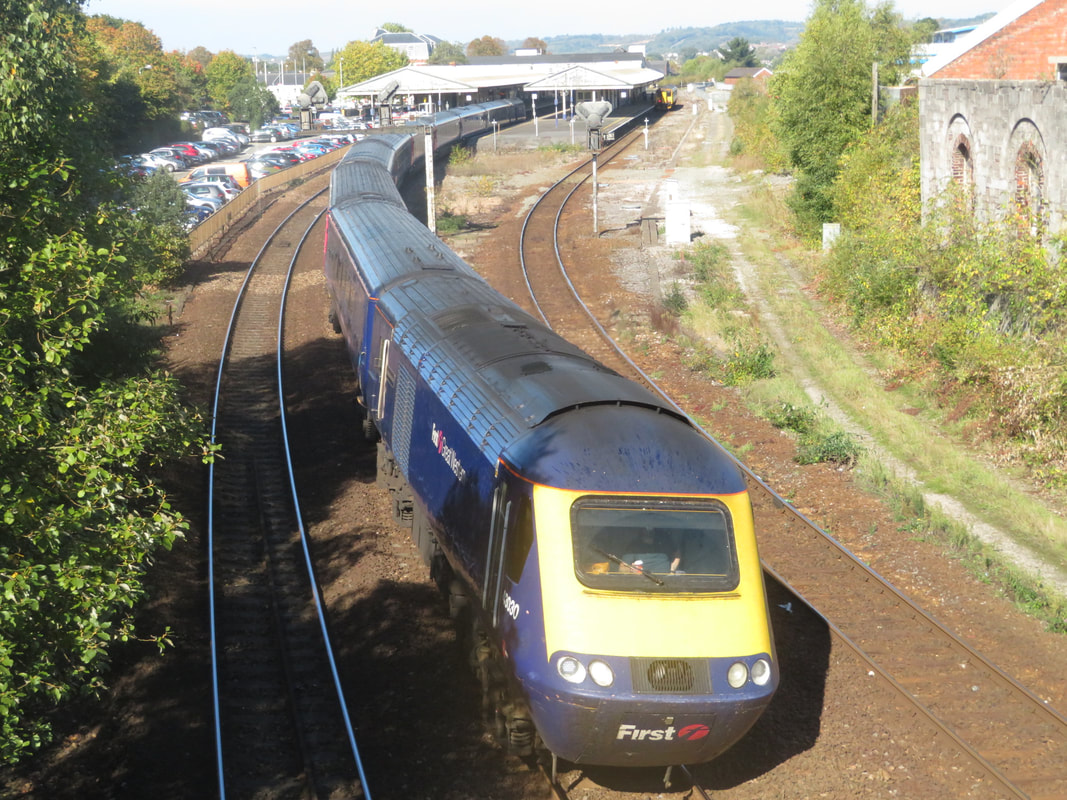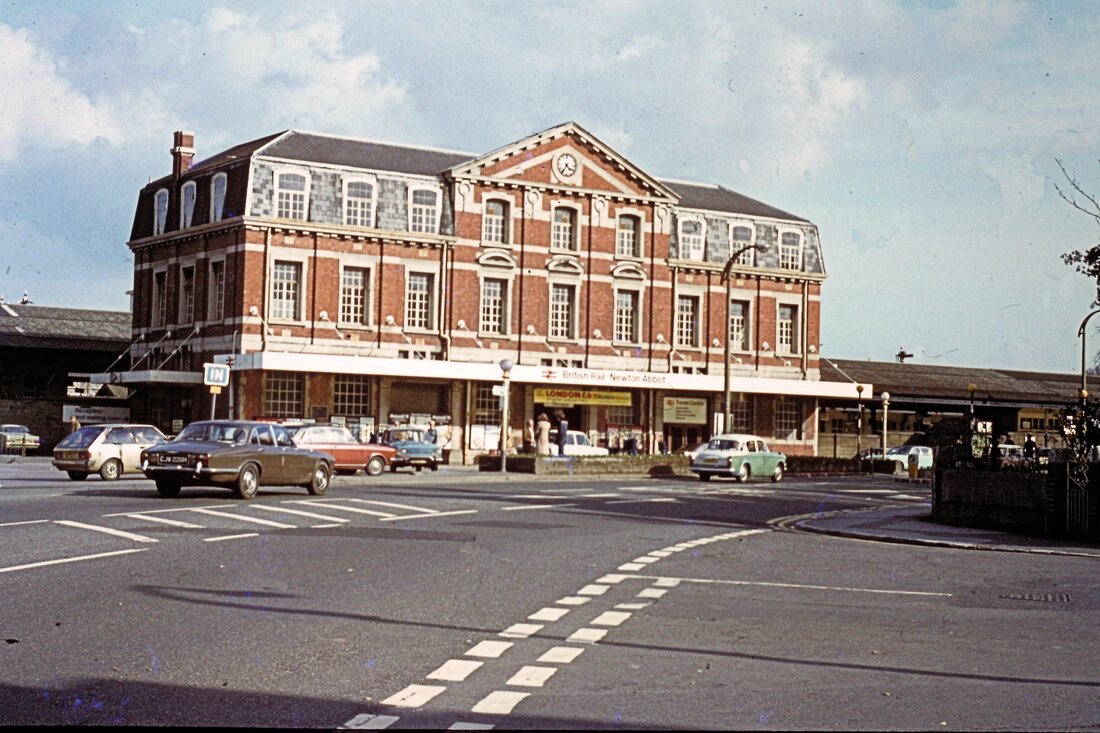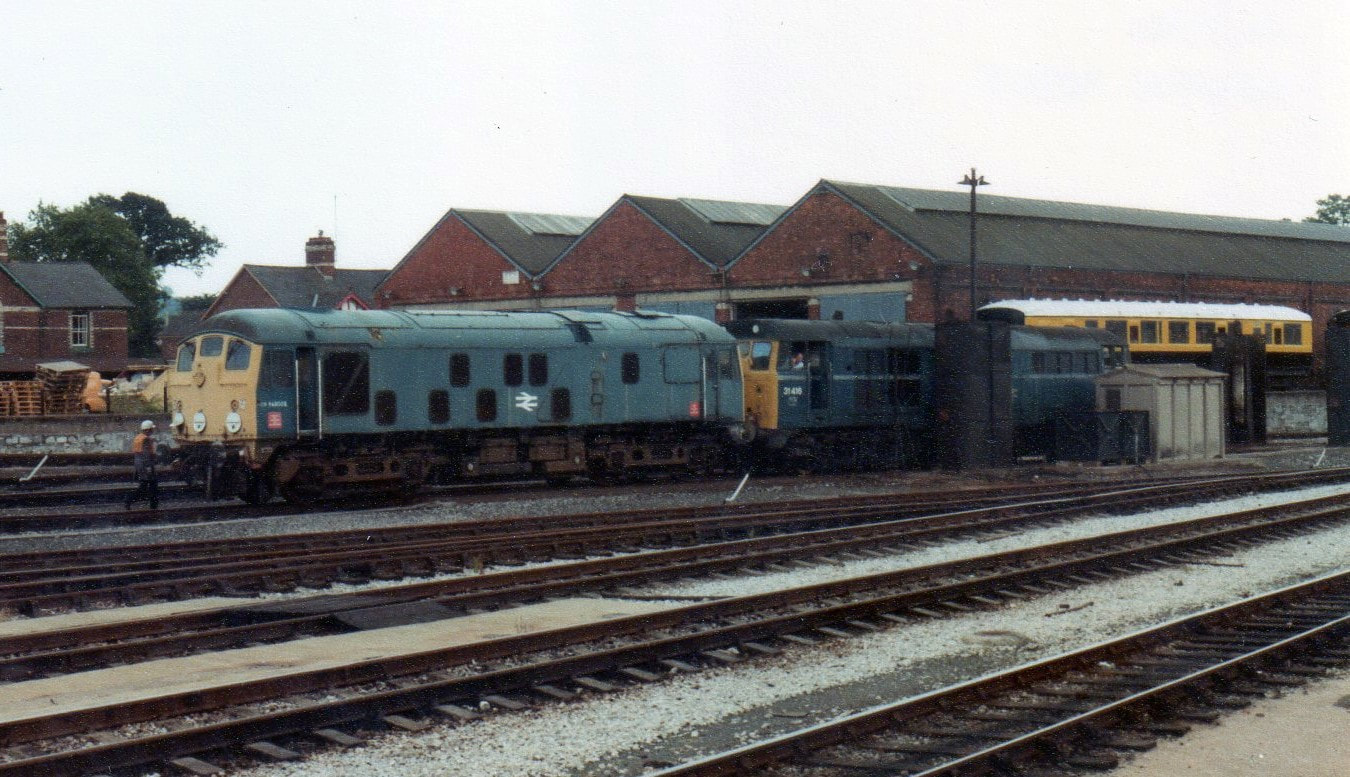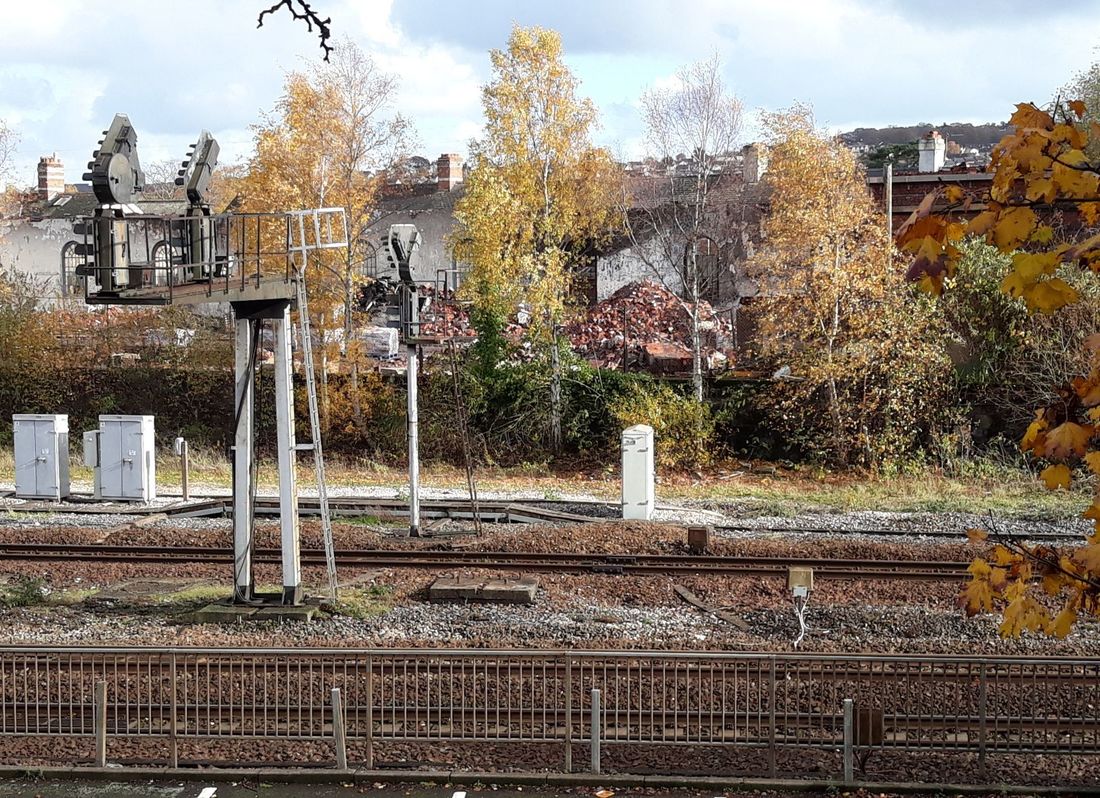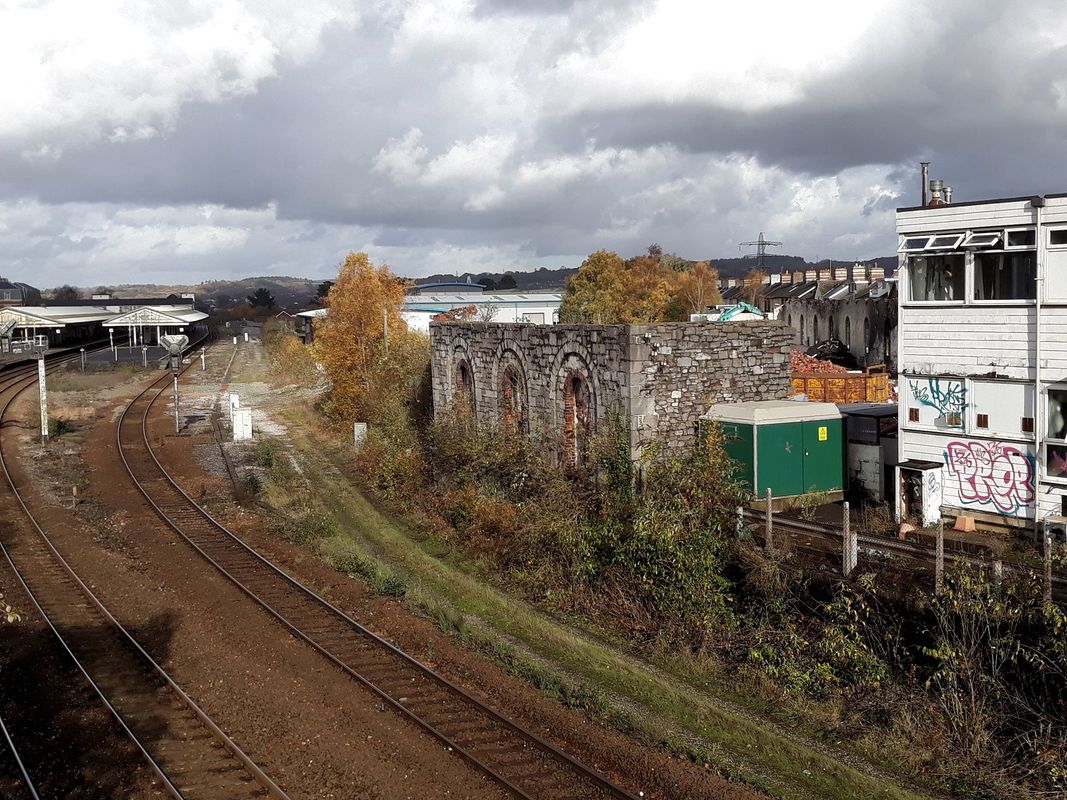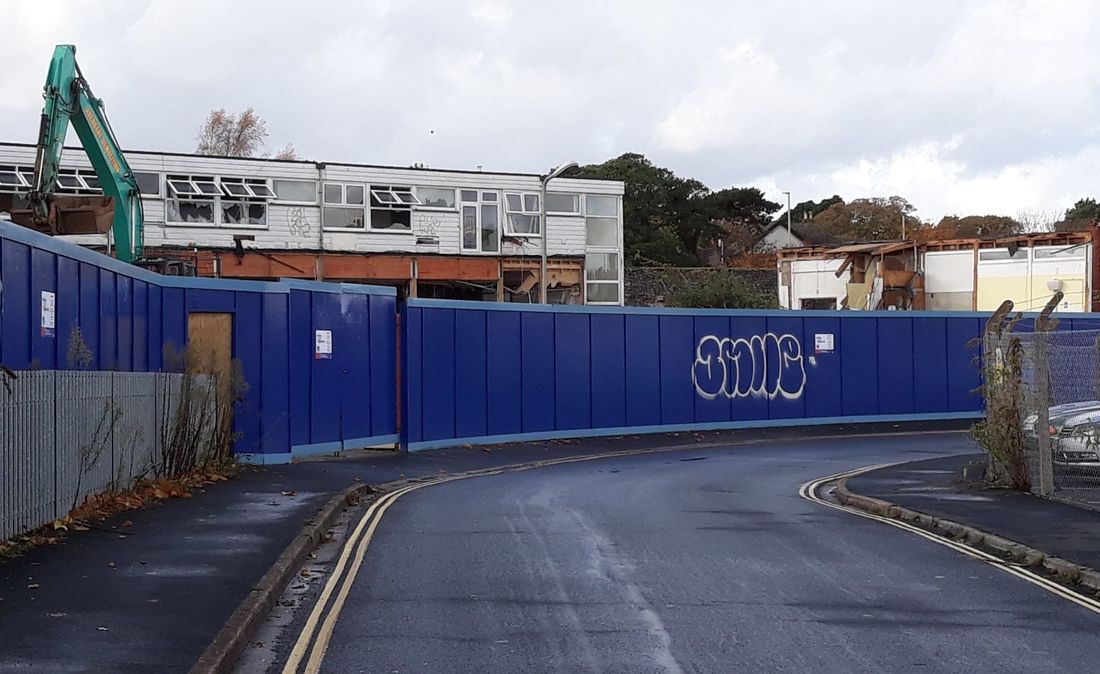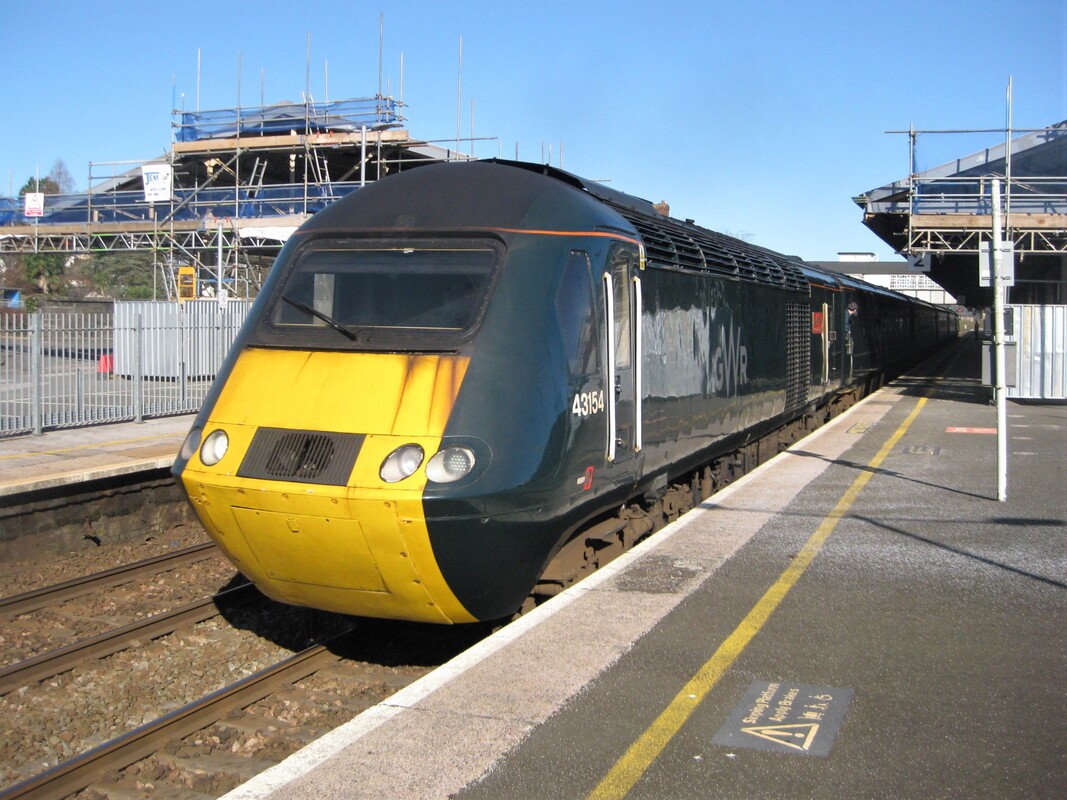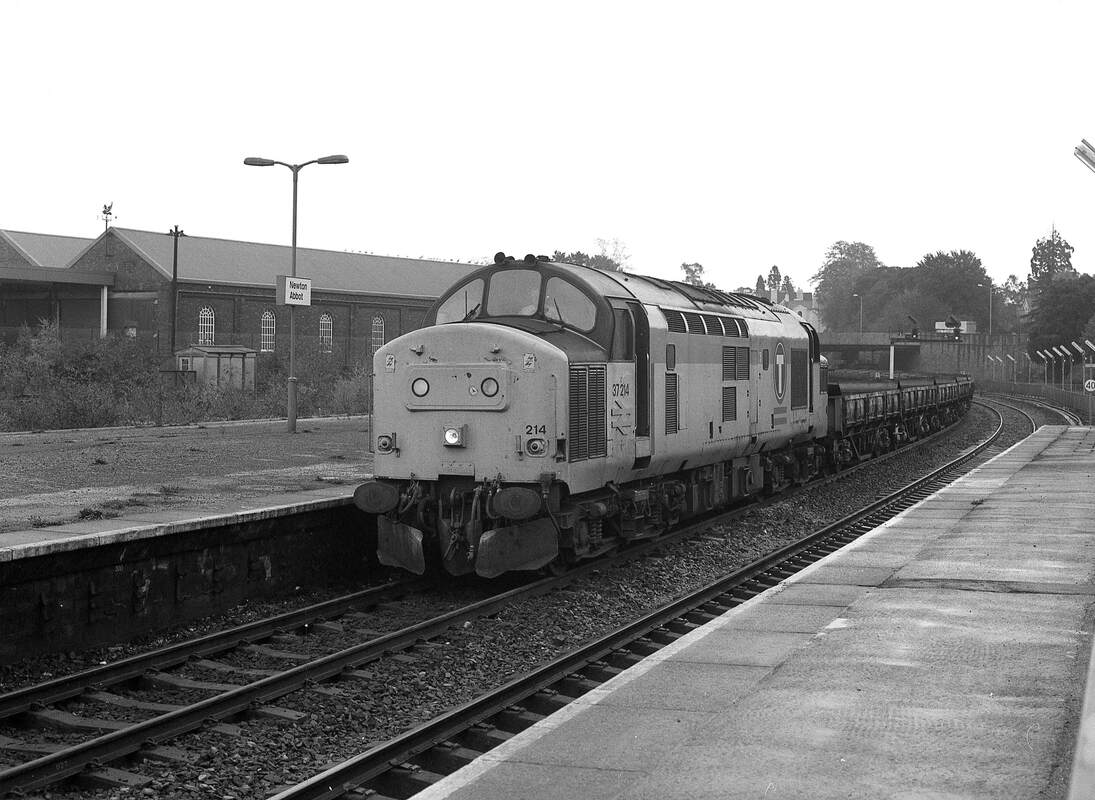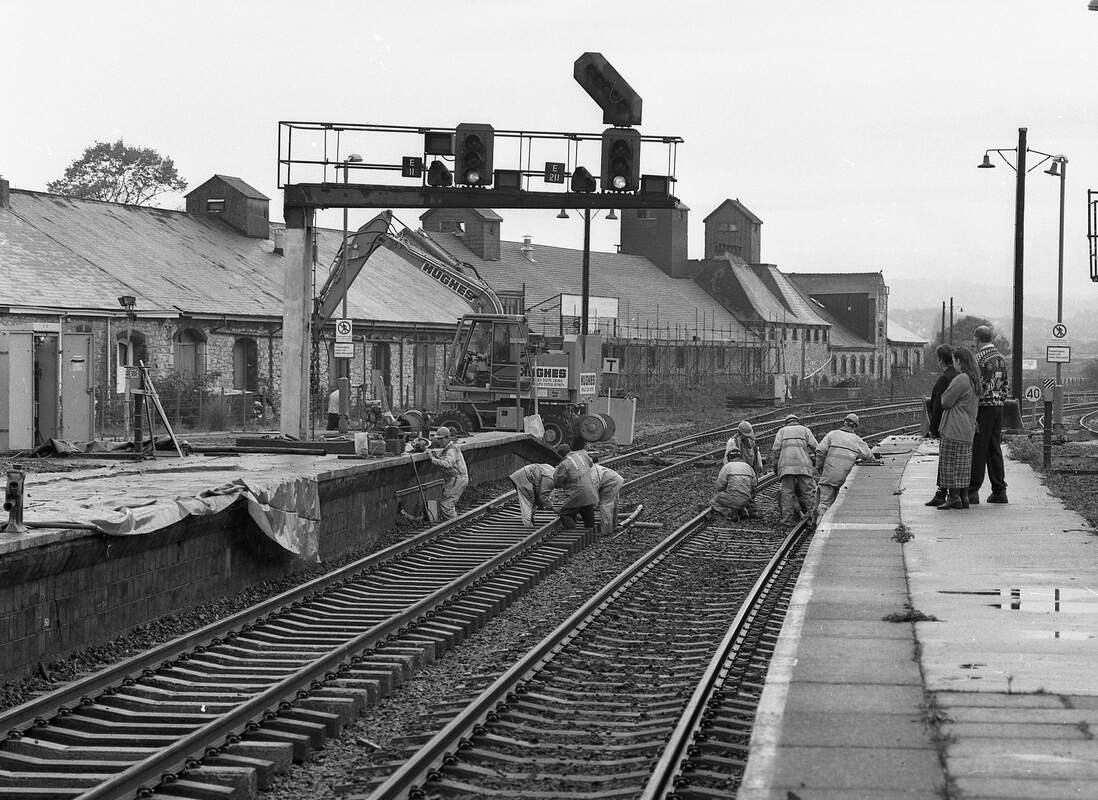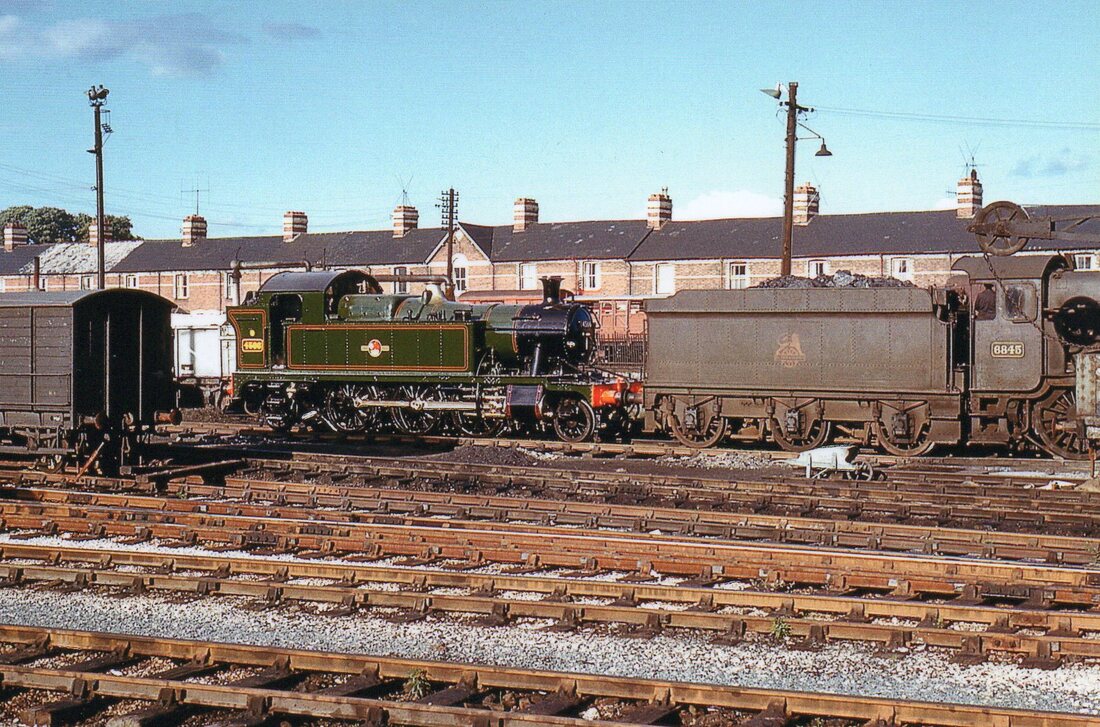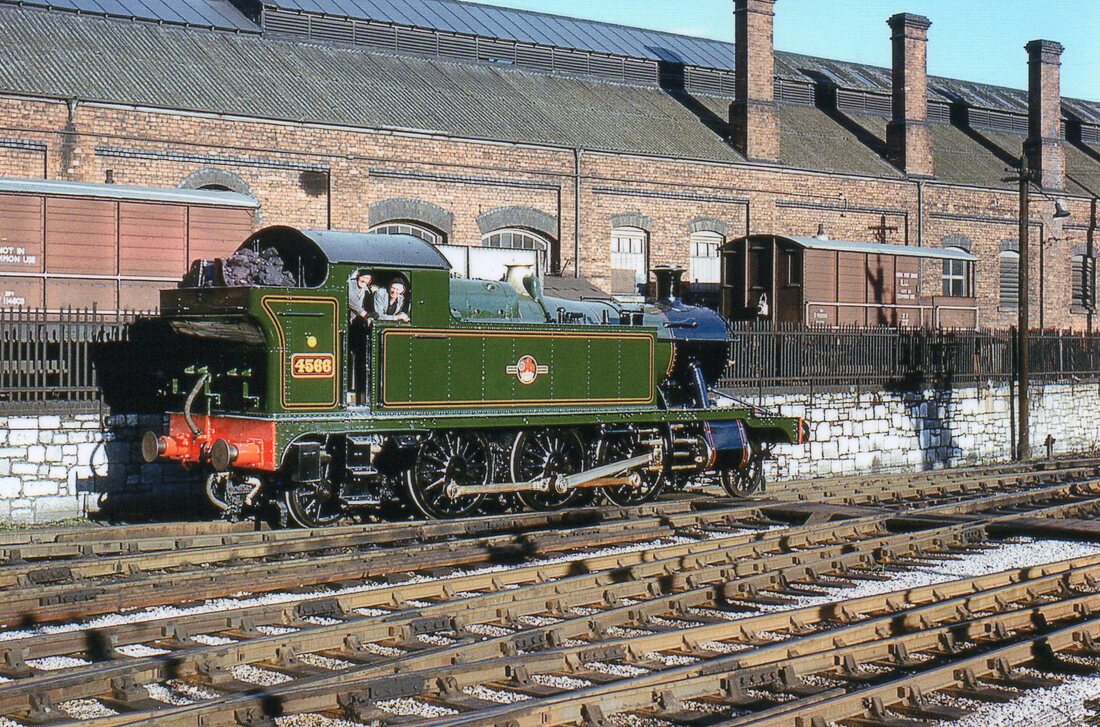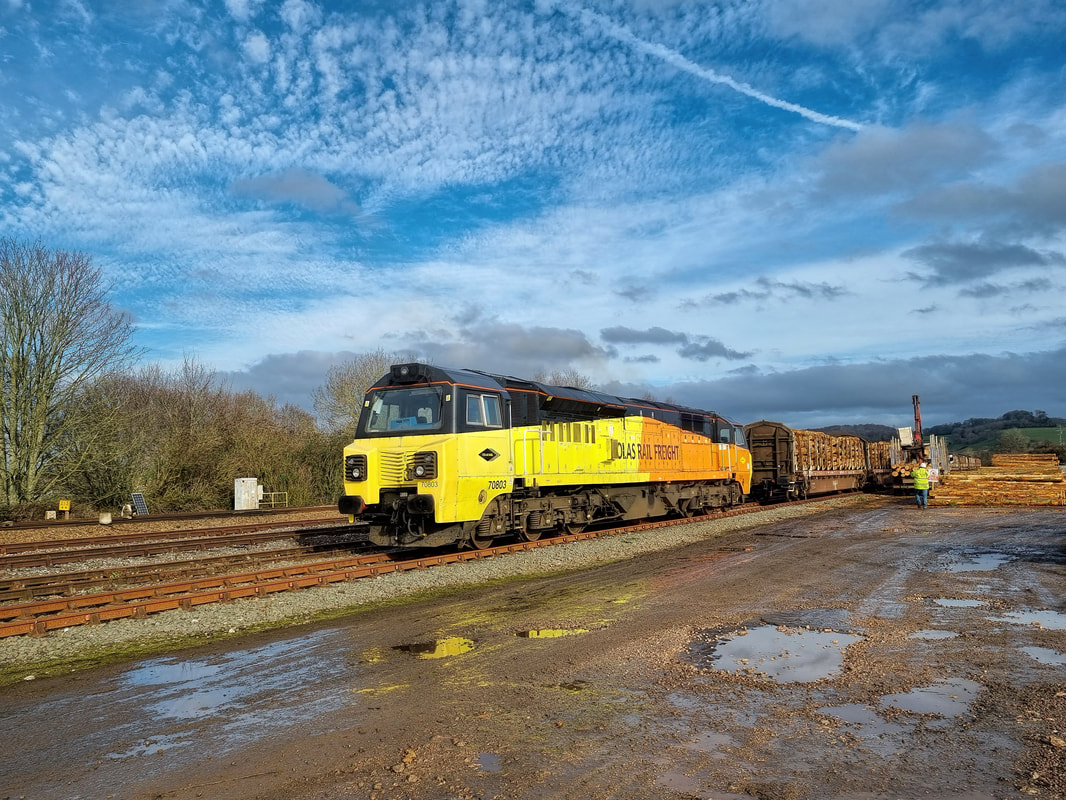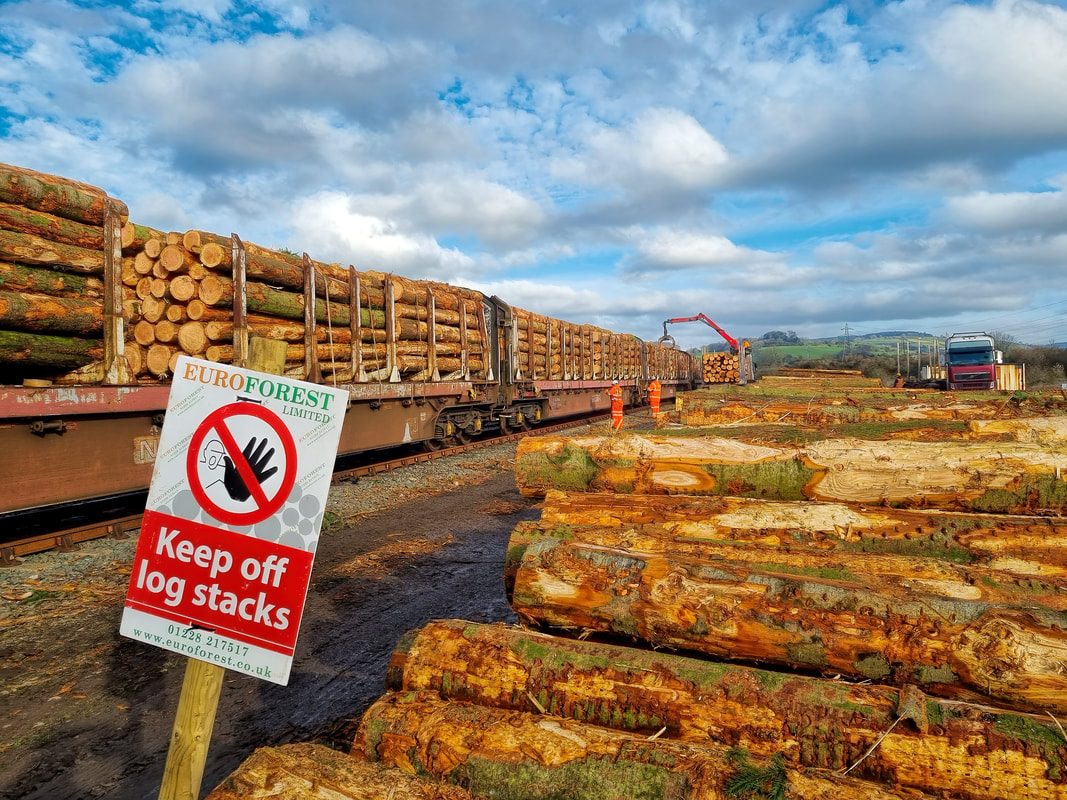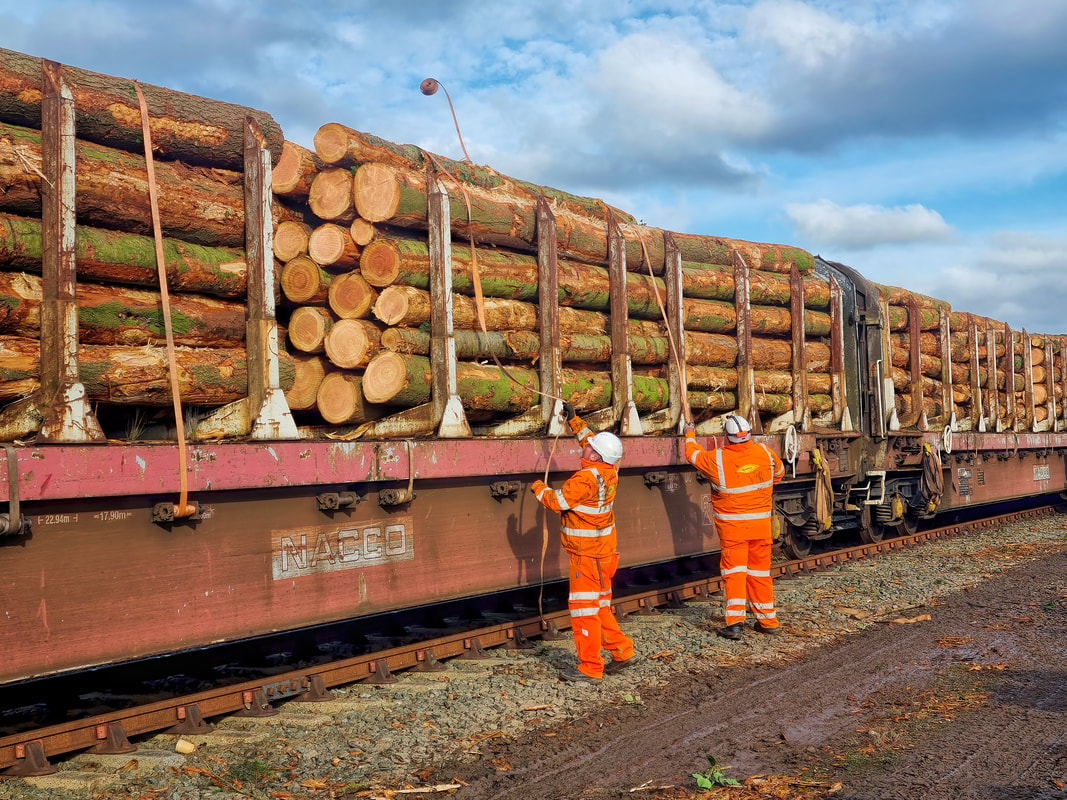Devon Main line
from Plymouth to Newton Abbot
from Plymouth to Newton Abbot
Credits, Many thanks to all contributors - please see a list on the home page.
USEFUL MAPS
Members and general visitors to the CRS site will be interested in visiting http://www.railmaponline.com From the opening page a full map of the UK can be accessed which can then be enlarged to show every railway line in the UK. Not just today's network but lines from the past have been overlaid. As you zoom in sidings and even tramways become visible.
A valuable tip from Guy Vincent.
Members and general visitors to the CRS site will be interested in visiting http://www.railmaponline.com From the opening page a full map of the UK can be accessed which can then be enlarged to show every railway line in the UK. Not just today's network but lines from the past have been overlaid. As you zoom in sidings and even tramways become visible.
A valuable tip from Guy Vincent.
Further notes on the above picture sent in by Trevor Tremethick. D801 Vanguard - I believe this to be in Platform 8 at North Road, with stock in the Park Sidings on the right. It's not that sharp but I felt that an early Warship with a disc headcode and steam-style reporting number was worth having. I don't know what train 'A38' was, but with that reporting number it might be heading for the M5! Also, the little boy may be Adrian's friend taken by Adrian, or the other way round.
First HST into Plymouth - Andrew Rigler
I was sorting our some bits and pieces and came across an image taken by my father and paper cutting, from the Western Evening Herald, going back almost exactly 43 years ago. The occasion was the first official run of a, then new, HST set into Plymouth and my dad took my brother and I in, to see it arrive. I would have been twelve at the time, as can be evidenced by my handwriting! The first time I heard a HST rev up it was like hearing a jet versus a old prop plane, i.e. it was the sound of the future. I do not think any of us realised, that the units would still be around all this time later, albeit modified with new engines etc. Look at how much interest it generated!
I recall it was a wet and cold day, somewhat different to the Easter we are currently experiencing (2020)
Best wishes, Andy Rigler.
I recall it was a wet and cold day, somewhat different to the Easter we are currently experiencing (2020)
Best wishes, Andy Rigler.
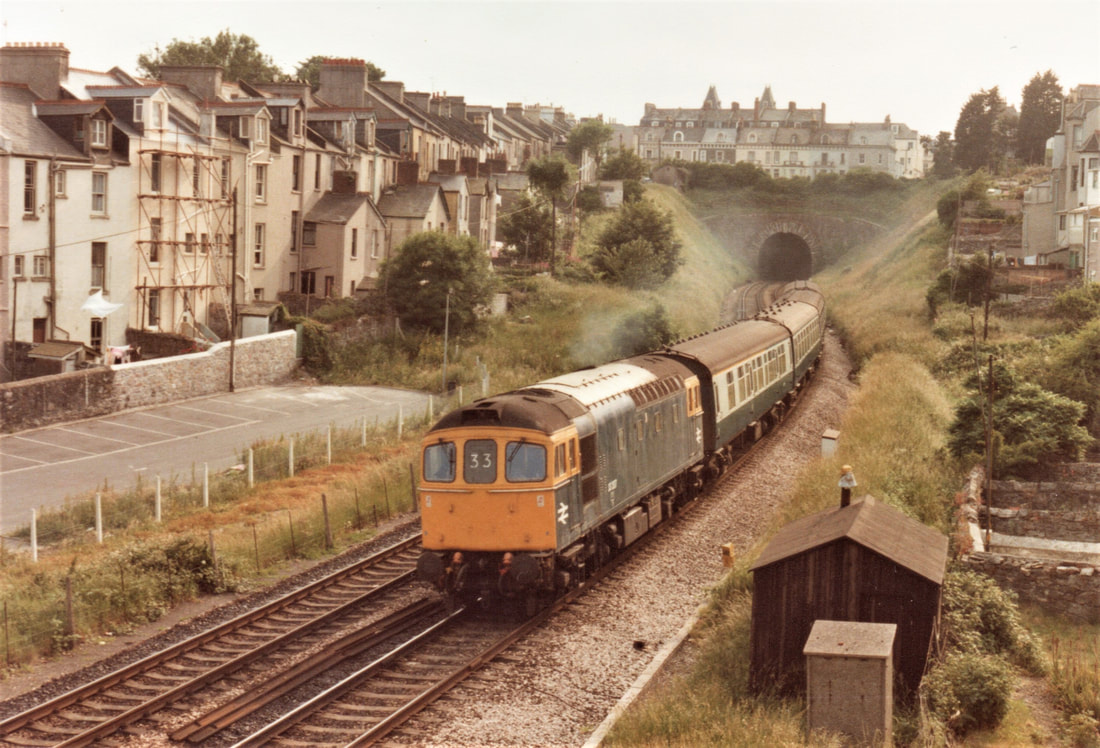
Rare Hither Green allocated 'Slim Jim' 33207 had earlier arrived at Plymouth on the Sunday 09.35 Exeter to Plymouth on the 26th June 1983. The loco for this train would be anything spare on Exeter stabling point so produced 31s, peaks, 47s and 50s too. The engine would take its stock to Laira and return the coaches as the 17.35 ECS from Laira to Malago Vale sidings in Bristol. However this was routed via Plymouth station in order to detach the Paddington sleeper portion of two coaches to be later added to the portion from Penzance that night. 33207 is seen in the picture emerging from Mutley Tunnel heading through Lipson with the ECS. 33207 is still going strong with West Coast Railways.
Copyright
Clive Smith
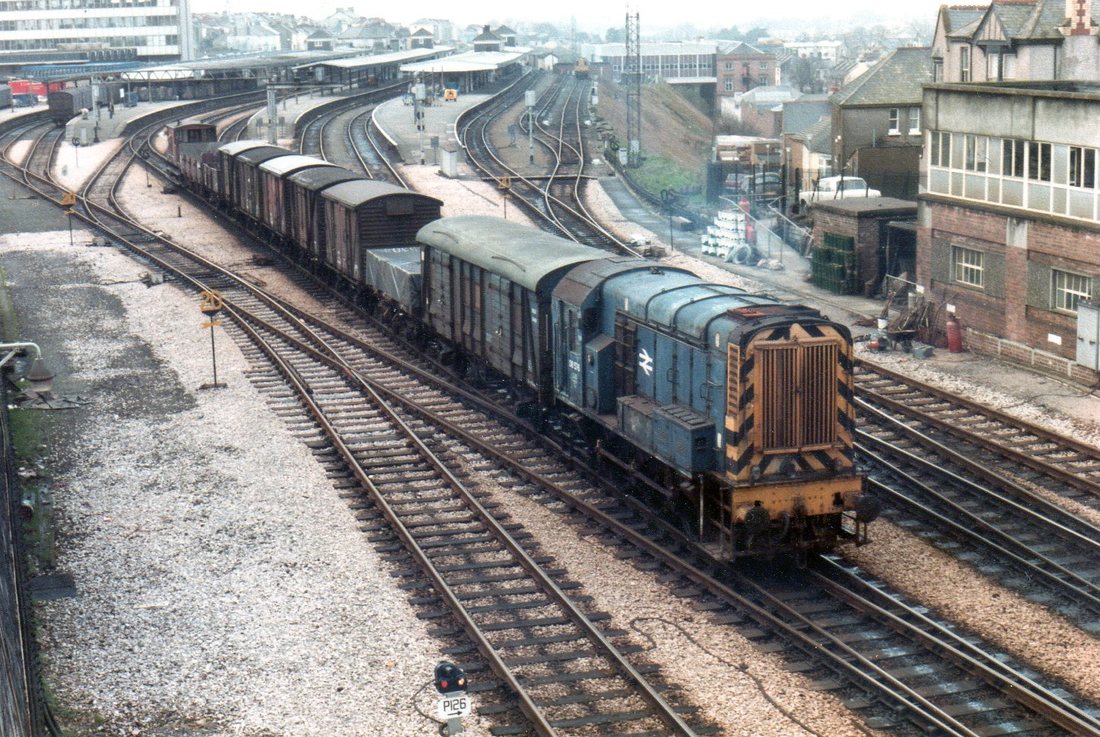
08576 makes slow progress through Plymouth station on 26th February 1982 with what was known locally to Plymouth enthusiasts as 'the dockyard goods', the 7B71 11.12 Keyham to Friary. This freight followed the marshalling at Keyham goods yard of various 'as required' trip workings, these being from the naval base itself or the Royal Navy armament depots at Bull Point and Ernesettle. The train was worked by a class 25 in the 70s switching to an 08 in 1980 with the ending of class 25s based at Laira.. Of particular note in the consist is a Southern Region PLV behind the 08. Note also the rows of BRUTES full of parcels on platform 4 and the red Royal Mail parcels truck waiting in the loading bay . The station pilot 08 sits at the end of the 'park sidings' and look at the embankment falling away to the right which is bereft of trees - unlike today. Copyright Clive Smith
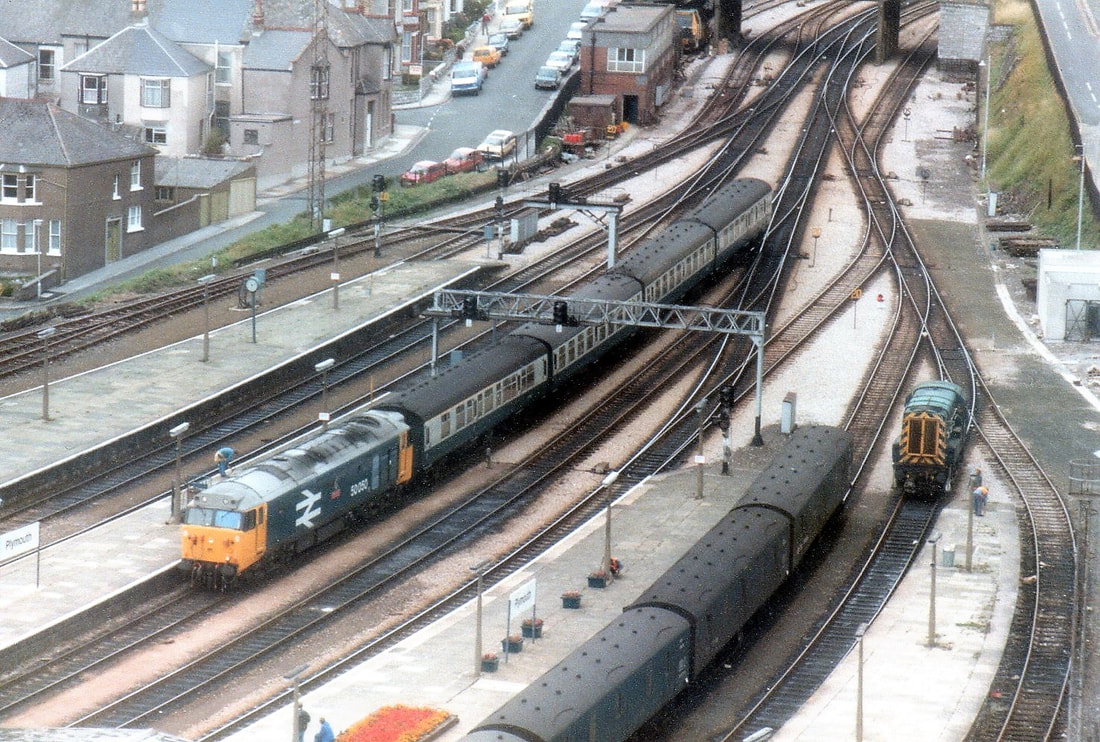
50050 from On High at Plymouth September 1983. Clive writes - This was before drone cameras and some fifteen years before I was employed at Inter City House. On this occasion I blagged my way in, took the lift to one of the higher floors and grabbed a shot. It was 50050 on the 10.00 Paignton - Plymouth on the 9th September 1983. Copyright Clive Smith.
An interesting comparison here - spot the differences.
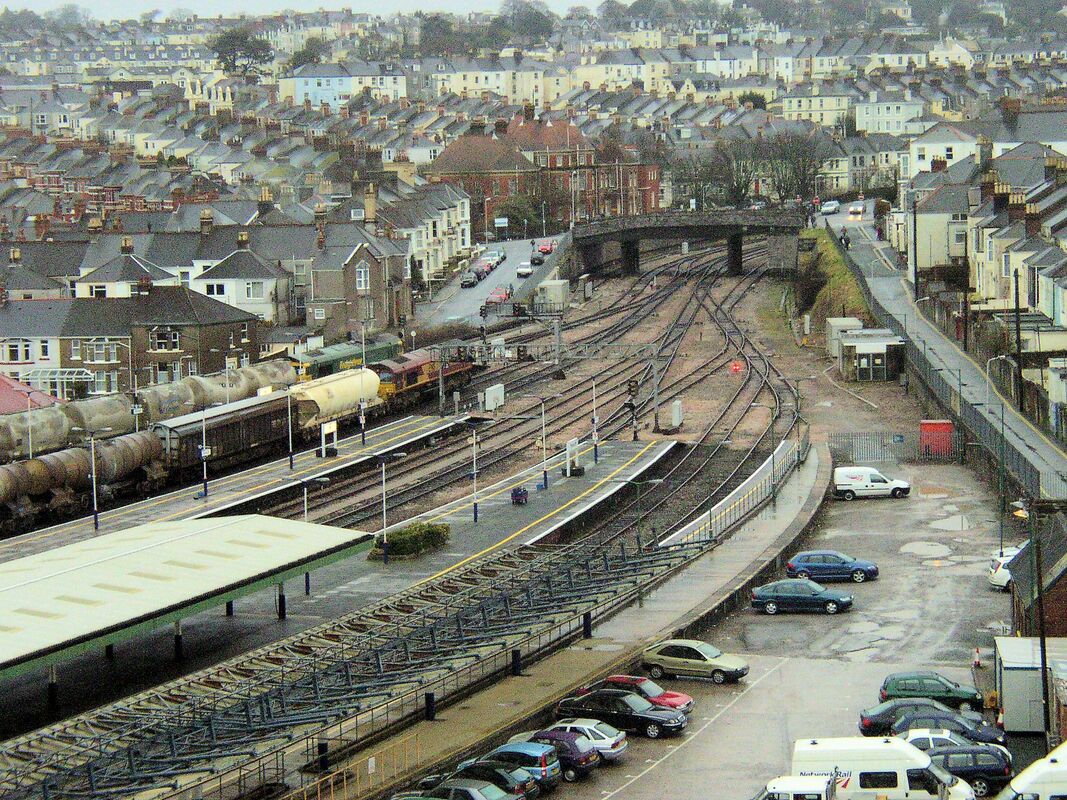
Going through my archives thought you might like to add the attached photograph to the website. Taken from my office on the 5th floor of Intercity House at Plymouth in 2006, looking out over the East end of Plymouth station. Managed to capture the Moorswater Cement train and the Parkandillack China Clay train both waiting for the road East.
Kind Regards, Chris. Copyright Chris Bellett
Clive Smith writes. About two years ago CRS featured some of my photos of Plymouth in the snow from January 1985. Here is another selection depicting the heavy snowfall and aftermath from exactly thirty five years ago.
Light snow turned to heavy snow mid morning on the 18th and by early afternoon Plymouth was covered in a fair few inches of snow with trains heavily delayed. Buses were suspended at midday as traffic ground to a halt so I had a 5 mile walk home. Luckily the snow remained for the following day with the temperature remaining cold providing another day of rare wintry photo opportunities in slightly better light and less challenging conditions
Light snow turned to heavy snow mid morning on the 18th and by early afternoon Plymouth was covered in a fair few inches of snow with trains heavily delayed. Buses were suspended at midday as traffic ground to a halt so I had a 5 mile walk home. Luckily the snow remained for the following day with the temperature remaining cold providing another day of rare wintry photo opportunities in slightly better light and less challenging conditions
Houndiscombe Road Bridge replacement
This bridge which forms an excellent location for many photographs is in fact a replacement as detailed in an article on our News Column for Tuesday 19th September 2023. You will find this if you look up our archives.
Mutley
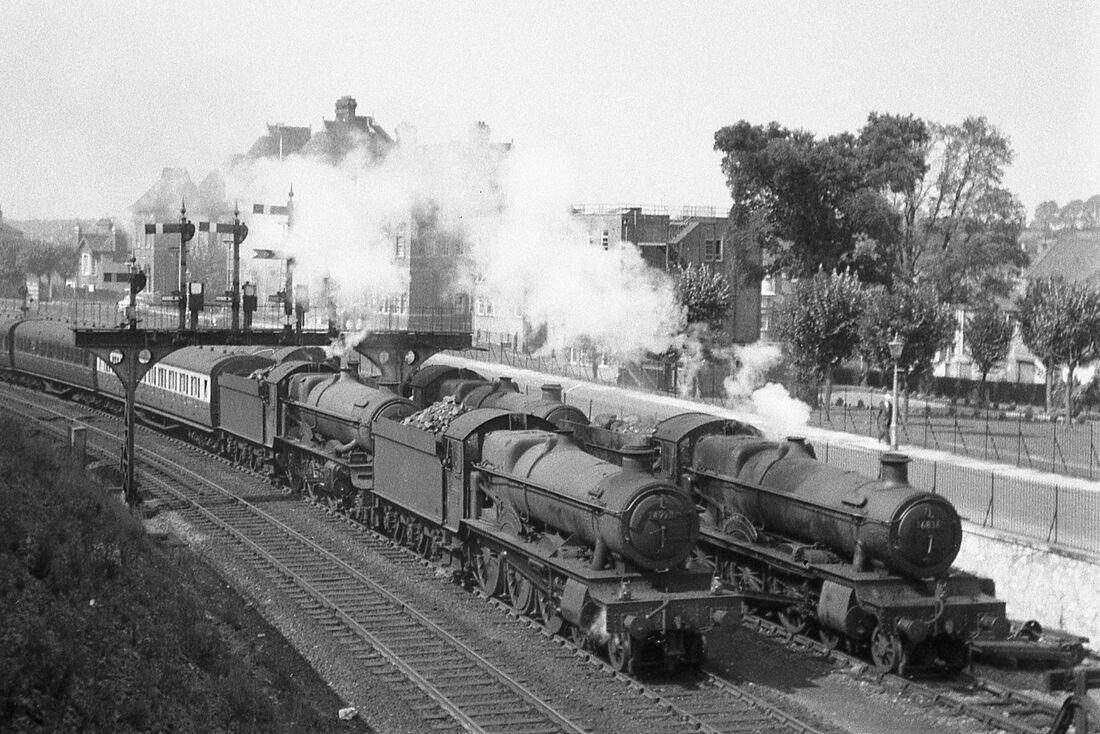
A busy scene outside Plymouth's Eye Infirmary as 4928 and 6028 pass with 14 coaches on the Falmouth (dep 9.30am) and Newquay (dep 9.45am) to Paddington, while on the right is a line of locos waiting to back down onto their trains in the platforms at Plymouth Station. They are left to right: D603, 5531, 5092 and 6836. The date is Friday 4 September 1959. Copyright Mike Roach.
3067 - 6870 and 4708 slog their way up Hemerdon Bank at milepost 241 with 13 coaches on 5 September 1959.
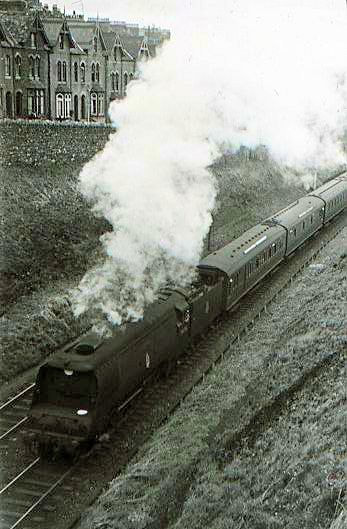
Here is a shot of the down Atlantic Coast Express Plymouth portion, passing the site of Mutley station on its way to the terminus at Friary, in about 1952. For some years after the war, Mutley Plain was the main shopping centre of Plymouth, until the reconstruction of the city centre after the bombing. Copyright Roy Hart.
Friary didn't have a turntable big enough for pacifics, so they turned on Cattewater triangle.
Mutley station and its closure - an article by Mike Roach
NEWS ITEM FOR 3 JULY
Mutley Station, Plymouth, opened in August 1871 and closed on 3 July 1939, 80 years ago today. It had no freight facilities and only ever dealt with passengers and parcels. After closure passengers would have had to walk just over a quarter of a mile to Plymouth North Road Station, now Plymouth Station. Today all that remains of Mutley Station is the sloping pedestrian access to the down platform and a flat area where the main station buildings were located on the up platform. An article about Mutley Station appeared in the Spring 2019 CRS Magazine.
Regards, Mike. Many thanks Mike and also Clive Smith.
Mutley Station, Plymouth, opened in August 1871 and closed on 3 July 1939, 80 years ago today. It had no freight facilities and only ever dealt with passengers and parcels. After closure passengers would have had to walk just over a quarter of a mile to Plymouth North Road Station, now Plymouth Station. Today all that remains of Mutley Station is the sloping pedestrian access to the down platform and a flat area where the main station buildings were located on the up platform. An article about Mutley Station appeared in the Spring 2019 CRS Magazine.
Regards, Mike. Many thanks Mike and also Clive Smith.
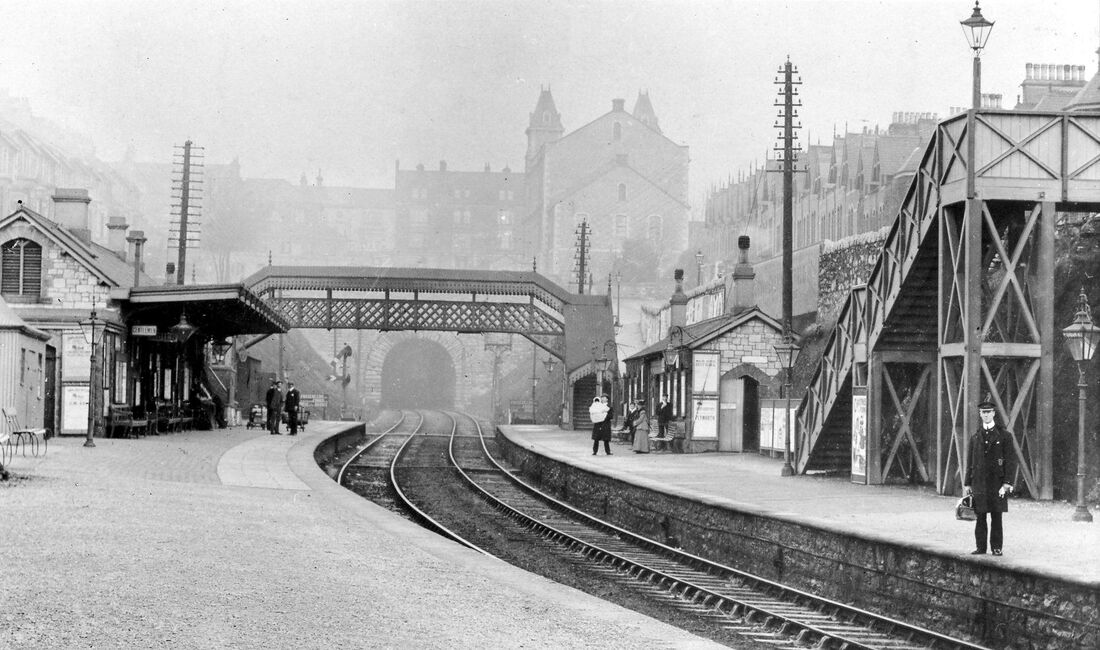
2774 Mutley Station looking east towards Mutley Tunnel. Note the sloping path up to the public road and the wooden steps both on the right of the picture. Lens of Sutton Association.
With regard to the signal, the 1894 25-inch plan on NLS shows a small signal box about 100 metres west of Sutherland Road bridge. I am thinking that the top signal was the advanced starting signal of that box, while the bottom signal was the up distant signal for Mannamead Box at the other end of the tunnel.
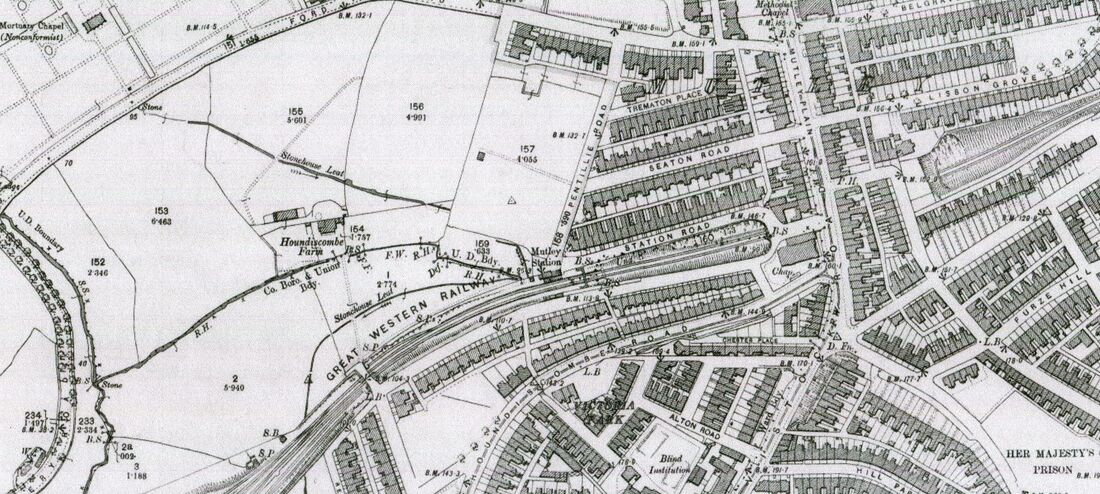
Copy from the 25 inch O.S. Map 1892 - 1914 of the Mutley area reproduced Courtesy of the National Library of Scotland. Note the slope leading down to the down platform. Also note the tramway tracks up on Mutley Plain. The tracks past the station were for a horse drawn tramway and closed early. The Plymouth Tramway system badly damaged by the war lingered on until 25th September 1945. Ref P.W. Gentry Tramways of South West England.
A further note from Roy Hart.
If you expand the picture a little, you will catch a glimpse of Mutley signal box beyond the up side station building. Mutley box was small and had little function except to act as an 'outer home' for North Road East Mannamead box (situated in a better spot to break the North Road East to Lipson section) was opened in 1906. The signal is Mutley up starter with distant for Mannamead. Therefore the photo can be dated to 1906-10 as Mutley box closed in 1910.
Roy Many thanks Roy - see expanded view below.
If you expand the picture a little, you will catch a glimpse of Mutley signal box beyond the up side station building. Mutley box was small and had little function except to act as an 'outer home' for North Road East Mannamead box (situated in a better spot to break the North Road East to Lipson section) was opened in 1906. The signal is Mutley up starter with distant for Mannamead. Therefore the photo can be dated to 1906-10 as Mutley box closed in 1910.
Roy Many thanks Roy - see expanded view below.
Chris Osment (Rail West) has added the following comment :-
The signal-box west of Sutherland Road bridge would have been North Road East. The NLS map to which you refer also shows Mutley signal-box on the up platform between the station building and the footbridge and it can just be seen in the photo.
The signal was the Up Starting (No 6) for Mutley with, as you suspected, the Up Distant for Mannamead. Also visible beyond the footbridge on the Down side is the bracket that carried Mutley’s Down Home (No 2) and splitting Down Distants for North Road East. See details at https://www.s-r-s.org.uk/html/gwf/T3151.htm . According to SRS records Mutley box was ordered in February 1896, contained 6 working and 2 spare levers, and was closed in 1908, while Mannamead was ordered in 1905. What is not clear therefore is whether the photo dates from the short period between 1905 and 1908, or after 1908 at which time the former Mutley signal 6 would have become the Up Advanced Starting for North Road East. It all depends really on whether or not the Down Home arm is still there on the bracket out-of-sight beyond the footbridge!
Regards, Chris. Thank you Chris. The article compiled by Mike Roach has produced further comment and a link for which we are most grateful. See photographs above.
The signal-box west of Sutherland Road bridge would have been North Road East. The NLS map to which you refer also shows Mutley signal-box on the up platform between the station building and the footbridge and it can just be seen in the photo.
The signal was the Up Starting (No 6) for Mutley with, as you suspected, the Up Distant for Mannamead. Also visible beyond the footbridge on the Down side is the bracket that carried Mutley’s Down Home (No 2) and splitting Down Distants for North Road East. See details at https://www.s-r-s.org.uk/html/gwf/T3151.htm . According to SRS records Mutley box was ordered in February 1896, contained 6 working and 2 spare levers, and was closed in 1908, while Mannamead was ordered in 1905. What is not clear therefore is whether the photo dates from the short period between 1905 and 1908, or after 1908 at which time the former Mutley signal 6 would have become the Up Advanced Starting for North Road East. It all depends really on whether or not the Down Home arm is still there on the bracket out-of-sight beyond the footbridge!
Regards, Chris. Thank you Chris. The article compiled by Mike Roach has produced further comment and a link for which we are most grateful. See photographs above.
Many will remember the days of Mutley Tunnel before the days when the appearance of the west end of it and the general area was ruined by the erection of an unsightly car park over it. A very bad move planning wise.
However the local paper, the Plymouth Herald did capture the scene before the area was spoilt. Clive Smith has sent in the following link to enable you all to see the last days of the clear entrance. Many thanks Clive.
https://www.plymouthherald.co.uk/news/history/16-truly-amazing-pictures-plymouth-1273831
However the local paper, the Plymouth Herald did capture the scene before the area was spoilt. Clive Smith has sent in the following link to enable you all to see the last days of the clear entrance. Many thanks Clive.
https://www.plymouthherald.co.uk/news/history/16-truly-amazing-pictures-plymouth-1273831
Mutley Tunnel - then and now.
Older readers of a particular vintage will remember the western end of Mutley Tunnel in Plymouth as a lovely photographic location. Sadly this was obscured by a hideous multi-storey car park built over the tracks in 1973.
However the eastern portal still provided a superb location from various viewpoints. The most legitimate was known locally to us enthusiasts as 'The Turret', a lovely promontory of Ivydale Road in the Lipson area overlooking the track from the north side. This cul-de-sac also afforded a vista in the opposite direction all the way down to Laira. Another location nearer to the tunnel mouth and south of the track required negotiating a flimsy concrete posted three wire fence to gain a better vantage !
My last photos were taken there in the mid-1980s. Travelling back and forth along the line, I'm sure many of us have noticed the gradual encroachment of trees on the cuttings at both ends of the tunnel. It was quite a shock to stand lineside the other day and compare the views from now with then nearly 35 years ago.
I must add that the final picture is taken from the south side overlooking the tunnel, albeit a few yards back from the edge of the cutting. As with much of our urban railway sites the old wire fencing has been replaced with an impenetrable pointy high steel structure.
Regards, Clive Smith, Ivybridge. Many thanks Clive.
Older readers of a particular vintage will remember the western end of Mutley Tunnel in Plymouth as a lovely photographic location. Sadly this was obscured by a hideous multi-storey car park built over the tracks in 1973.
However the eastern portal still provided a superb location from various viewpoints. The most legitimate was known locally to us enthusiasts as 'The Turret', a lovely promontory of Ivydale Road in the Lipson area overlooking the track from the north side. This cul-de-sac also afforded a vista in the opposite direction all the way down to Laira. Another location nearer to the tunnel mouth and south of the track required negotiating a flimsy concrete posted three wire fence to gain a better vantage !
My last photos were taken there in the mid-1980s. Travelling back and forth along the line, I'm sure many of us have noticed the gradual encroachment of trees on the cuttings at both ends of the tunnel. It was quite a shock to stand lineside the other day and compare the views from now with then nearly 35 years ago.
I must add that the final picture is taken from the south side overlooking the tunnel, albeit a few yards back from the edge of the cutting. As with much of our urban railway sites the old wire fencing has been replaced with an impenetrable pointy high steel structure.
Regards, Clive Smith, Ivybridge. Many thanks Clive.
Then and now (2010) Mutley tunnel
- Clive Smith examines vegetation growth at Mutley Tunnel.
- Clive Smith examines vegetation growth at Mutley Tunnel.
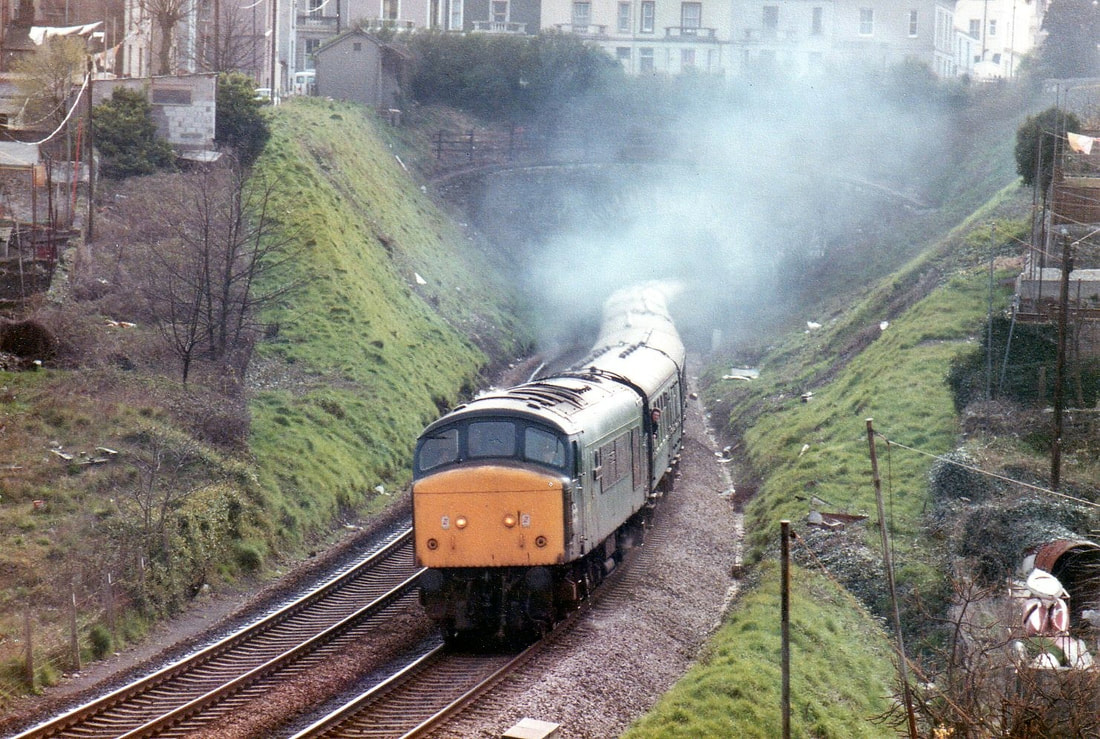
(Photo 1) 45059 Royal Engineer blasts away from Mutley Tunnel on the 2nd April 1983 with the 17.45 return day excursion (ADEX) from Plymouth to Manchester. A pristine cutting forms the backdrop and shows where the photographer stood for the next picture. For a few quid Mancunians had an 18-hour day out at the opposite end of the country and be back home for midnight. Adexes were a fantastic way for spotters without much money to visit far flung stations and depots and often provided interesting motive power and great memories. Copyright Clive Smith
Plymouth Lipson Junction
Plymouth Laira Junction
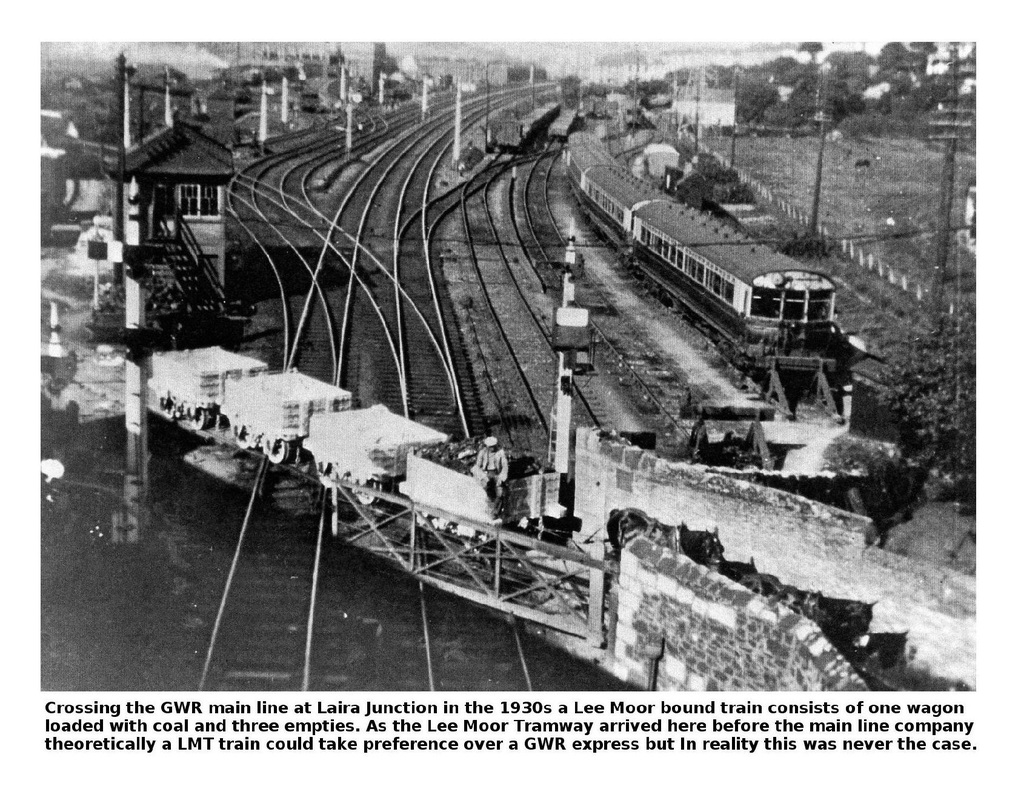
This extremely interesting picture is from the Maurice Dart collection of China Clay lines Part 2 and It is published with his permission. In addition to his already comprehensive caption may we point out the steam issuing from the Laira Sheds which were alongside the main line. The Lee Moor Tramway was of 4' gauge.
The CD is available from Wheal Martyn Museum, for details please see the home page.
Crabtree - taken from a location by the rear coach in the first of the next pictures.
Bridge over the River Plym - Crabtree
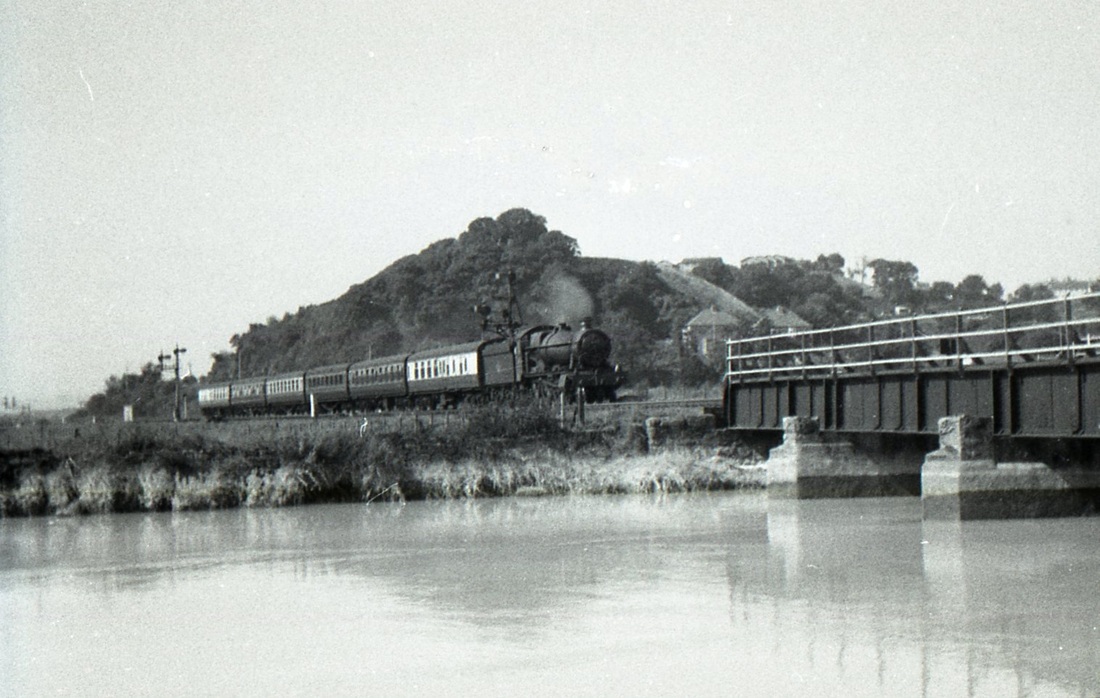
Its 11.25am on Tuesday 8 September 1959
"Rood Ashton Hall" (Now preserved) with 6 Coaches on the 11.20am stopping train from Plymouth to Taunton (every station then still open except Stoke Canon and Sampford Peverell) about to cross the River Plym just west of Tavistock Junction.
There is a note in the timetable against Plympton, Cornwood, Ivybridge, Bittaford Platform and Wrangaton saying rail service withdrawn from 2nd March 1959.
35mph speed restriction over bridge Copyright Mike Roach

43184 heads the 1E63 15.27 Plymouth - Leeds over Crabtree Viaduct. Not the usual photo from the footbridge over the track as the sun was in the wrong place, but an opportune moment to take advantage of the tide being out and stepping onto the river Plym foreshore. 4th August 2022.
Copyright, Clive Smith
Comparisons at Marsh Mills - note the motive power and the changes in background.
Tavistock Junction.
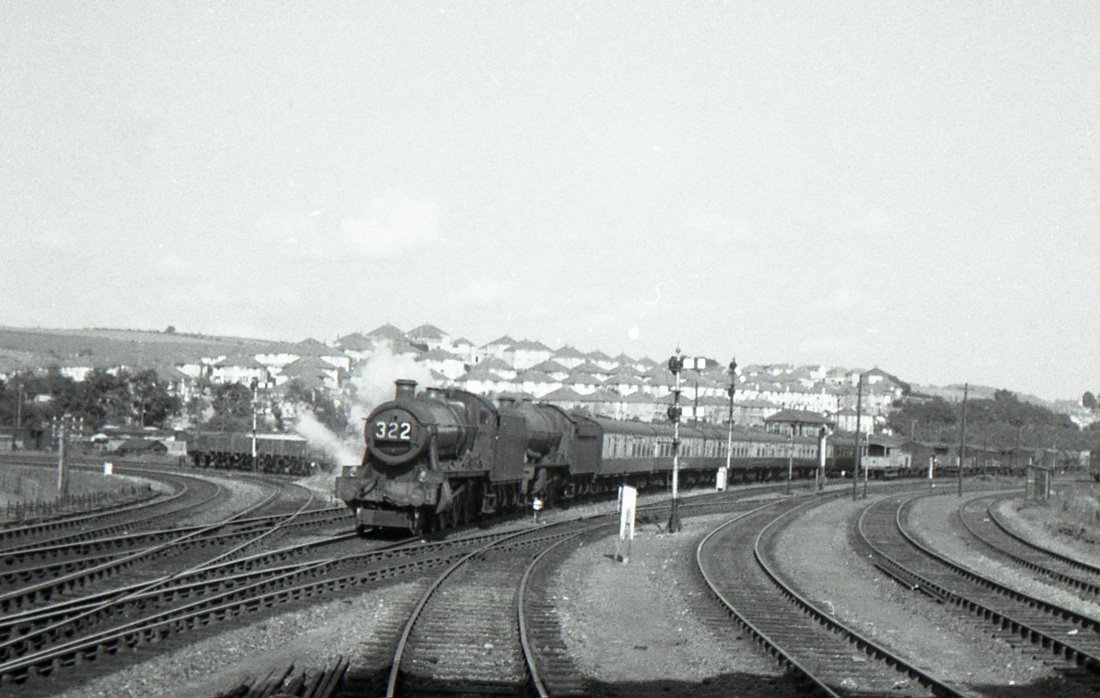
5995 Wick Hall & 6012 King Edward V1 with the 1.30pm from Paddington Tuesday 1st September 1959 Tavistock Junction signalbox can be seen beyond the train. 5995 was an Oxley (Wolverhampton) locomotive, and 6012 was an Old Oak King, but it had been a Laira engine in the early 1950s.Copyright Mike Roach
Now History!
Colas Rail Freight class 70 sits in the shed at Tavistock Junction, this view was taken on 13th February 2018 and see's 70808 at Tavi for an exam, unfortunately Colas Rail Freight has pulled out of Tavistock Junction and class 70's will no longer visit for maintenance. The Colas portacabin office has now been removed and the old derelict former EWS mess block demolished.
Alan Peters Many thanks Alan.
Colas Rail Freight class 70 sits in the shed at Tavistock Junction, this view was taken on 13th February 2018 and see's 70808 at Tavi for an exam, unfortunately Colas Rail Freight has pulled out of Tavistock Junction and class 70's will no longer visit for maintenance. The Colas portacabin office has now been removed and the old derelict former EWS mess block demolished.
Alan Peters Many thanks Alan.
Plympton
Plympton
Plympton Station was 4 miles east of Plymouth Station at the foot of Hemerdon Bank and alongside Boringdon Road. A layby marks the location of the former station buildings and entrance. To the west and the other side of an overbridge carrying Plymbridge Road was the goods yard. Alongside the yard was an important road, now the B3416, but in 1962 it was the A38 and carrying all the trunk road traffic until a bypass was finished some ten years later. In the accompanying photo, which was taken from Meadow View Road looking roughly east, the A38 runs in front of the 2-storey building on the left and past the end of the sheds on the right. The tower is that of St. Mary's Church because this small town was called Plympton St. Mary, although the railway station was always called just Plympton. A short distance to the east and south of the main A38 through the centre of Plympton St. Mary was another town called Plympton St. Maurice. This second town has the ruins of a castle and an ancient grammar school which Sir Joshua Reynolds attended as he was born and brought up here. It is suggested that most people living in Plymouth know little or nothing about Plympton St. Maurice as it is well hidden and one does not pass through it by accident. I knew nothing about the town umtil a school trip there at the age of 9 or 10 years when we visited the castle and the Guildhall.
On the south side of St. Marys Church, and opposite the churchyard, was a cattle market which closed circa 2001. Because it was only a couple of hundred yards from the goods yard it is believed that cattle leaving by rail would have been walked from the market to the goods yard, including holding up the trunk road traffic as they crossed the A38. The photo shows empty cattle wagons on both sides of the main line with the nearest ones in a dead end siding, and the far ones in the goods yard which consisted of two loops and no dead end sidings. The loco that brought in some of the wagons was small prairie 5544 of Laira Shed and in the photo it is departing, to return a few hours later to collect the loaded wagons and take the cattle wagons to Tavistock Junction Yard on the first part of their journey to their new owners. Most small livestock markets have either closed or been relocated to edge-of-town sites (as at Truro). One that survives almost untouched by the passage of time is at Devils Bridge a short distance from the terminus of the Vale of Rheidol narrow gauge railway. Another is at Kington in Herefordshire, a small town near the border with Wales, where the auction mart remains in the centre of the town surrounded by domestic and commercial properties. I have written an article about the sale which took place at Kington Mart on 31 August 1938 (which will be published elsewhere), when no less than 22,000 sheep were auctioned. In the 1930s the railways still reigned supreme in longer distance transport; and for shorter distances the sheep were expected to walk from the farm to the mart and from the mart to their new home; as they were to Kington Railway Station which was on the edge of the town. The Great Western Railway rose to the occasion and provided 200 cattle wagons for the sheep to be hauled away. This would have been a major logistical exercise involving many railwaymen and train movements. Kington was on the single track New Radnor Branch and the largest locos permitted were the 7400-class pannier tanks which could haul 30-wagon trainloads on the branch. However the first train away was of 60 cattle wagons which would have needed to be double-headed
The loco seen at Plympton Goods Yard on 1 March 1962 was small prairie 5544. The loco had arrived at Laira from Truro on 15 July 1961 and was condemned at Laira on 21 September 1962. It was hauled to Cashmore's yard at Newport and scrapped. All my other photos of 5544 were of the loco on passenger trains on the Launceston Branch with the last one being taken on 19 May 1962. In 1962 the eastern boundary of the City of Plymouth ran along the centre of the River Plym at Marsh Mills seen in the photos in Parts 2 and 4 of this series. Plympton came under the jurisdiction of the Plympton St. Mary Rural District Council, but with Local Government Reorganisation on 1 April 1974 the Plympton RDC was abolished and its territory carved up with Plympton going to an enlarged City of Plymouth and the rest, with six other small councils, forming the South Hams District Council centred on Totnes. Plympton Station closed to passengers on and from 2 March 1959 and to goods on and from 1 June 1964. A campaign has been under way for some time to open a new railway station at Plympton. My thoughts on the subject are that if Plympton is to get a new station it should be a parkway style station with a large car park. There could be a suitable site off the B3416 just a half mile east of Tavistock Junction Yard where there are a number of supermarket sheds between the B3416 and the railway and they appear to be little used. With the site being just a mile off a junction on the A38 Devon Expressway the station could serve the northern and eastern sides of Plymouth; West Devon and East Cornwall.
CAPTIONS
5997 Prairie 5544 is seen leaving Plympton Goods Yard with a brake van at 12.07pm on 1 March 1962. The cattle market is just out of the photograph on the right hand side.
MLR / 6 April 2023
Plympton Station was 4 miles east of Plymouth Station at the foot of Hemerdon Bank and alongside Boringdon Road. A layby marks the location of the former station buildings and entrance. To the west and the other side of an overbridge carrying Plymbridge Road was the goods yard. Alongside the yard was an important road, now the B3416, but in 1962 it was the A38 and carrying all the trunk road traffic until a bypass was finished some ten years later. In the accompanying photo, which was taken from Meadow View Road looking roughly east, the A38 runs in front of the 2-storey building on the left and past the end of the sheds on the right. The tower is that of St. Mary's Church because this small town was called Plympton St. Mary, although the railway station was always called just Plympton. A short distance to the east and south of the main A38 through the centre of Plympton St. Mary was another town called Plympton St. Maurice. This second town has the ruins of a castle and an ancient grammar school which Sir Joshua Reynolds attended as he was born and brought up here. It is suggested that most people living in Plymouth know little or nothing about Plympton St. Maurice as it is well hidden and one does not pass through it by accident. I knew nothing about the town umtil a school trip there at the age of 9 or 10 years when we visited the castle and the Guildhall.
On the south side of St. Marys Church, and opposite the churchyard, was a cattle market which closed circa 2001. Because it was only a couple of hundred yards from the goods yard it is believed that cattle leaving by rail would have been walked from the market to the goods yard, including holding up the trunk road traffic as they crossed the A38. The photo shows empty cattle wagons on both sides of the main line with the nearest ones in a dead end siding, and the far ones in the goods yard which consisted of two loops and no dead end sidings. The loco that brought in some of the wagons was small prairie 5544 of Laira Shed and in the photo it is departing, to return a few hours later to collect the loaded wagons and take the cattle wagons to Tavistock Junction Yard on the first part of their journey to their new owners. Most small livestock markets have either closed or been relocated to edge-of-town sites (as at Truro). One that survives almost untouched by the passage of time is at Devils Bridge a short distance from the terminus of the Vale of Rheidol narrow gauge railway. Another is at Kington in Herefordshire, a small town near the border with Wales, where the auction mart remains in the centre of the town surrounded by domestic and commercial properties. I have written an article about the sale which took place at Kington Mart on 31 August 1938 (which will be published elsewhere), when no less than 22,000 sheep were auctioned. In the 1930s the railways still reigned supreme in longer distance transport; and for shorter distances the sheep were expected to walk from the farm to the mart and from the mart to their new home; as they were to Kington Railway Station which was on the edge of the town. The Great Western Railway rose to the occasion and provided 200 cattle wagons for the sheep to be hauled away. This would have been a major logistical exercise involving many railwaymen and train movements. Kington was on the single track New Radnor Branch and the largest locos permitted were the 7400-class pannier tanks which could haul 30-wagon trainloads on the branch. However the first train away was of 60 cattle wagons which would have needed to be double-headed
The loco seen at Plympton Goods Yard on 1 March 1962 was small prairie 5544. The loco had arrived at Laira from Truro on 15 July 1961 and was condemned at Laira on 21 September 1962. It was hauled to Cashmore's yard at Newport and scrapped. All my other photos of 5544 were of the loco on passenger trains on the Launceston Branch with the last one being taken on 19 May 1962. In 1962 the eastern boundary of the City of Plymouth ran along the centre of the River Plym at Marsh Mills seen in the photos in Parts 2 and 4 of this series. Plympton came under the jurisdiction of the Plympton St. Mary Rural District Council, but with Local Government Reorganisation on 1 April 1974 the Plympton RDC was abolished and its territory carved up with Plympton going to an enlarged City of Plymouth and the rest, with six other small councils, forming the South Hams District Council centred on Totnes. Plympton Station closed to passengers on and from 2 March 1959 and to goods on and from 1 June 1964. A campaign has been under way for some time to open a new railway station at Plympton. My thoughts on the subject are that if Plympton is to get a new station it should be a parkway style station with a large car park. There could be a suitable site off the B3416 just a half mile east of Tavistock Junction Yard where there are a number of supermarket sheds between the B3416 and the railway and they appear to be little used. With the site being just a mile off a junction on the A38 Devon Expressway the station could serve the northern and eastern sides of Plymouth; West Devon and East Cornwall.
CAPTIONS
5997 Prairie 5544 is seen leaving Plympton Goods Yard with a brake van at 12.07pm on 1 March 1962. The cattle market is just out of the photograph on the right hand side.
MLR / 6 April 2023
Hemerdon Bank with a ruling gradient of 1 in 42 was quite a testing ground for east bound trains and for unfitted goods trains there was a need to pin down sufficient brakes before making the steep descent.
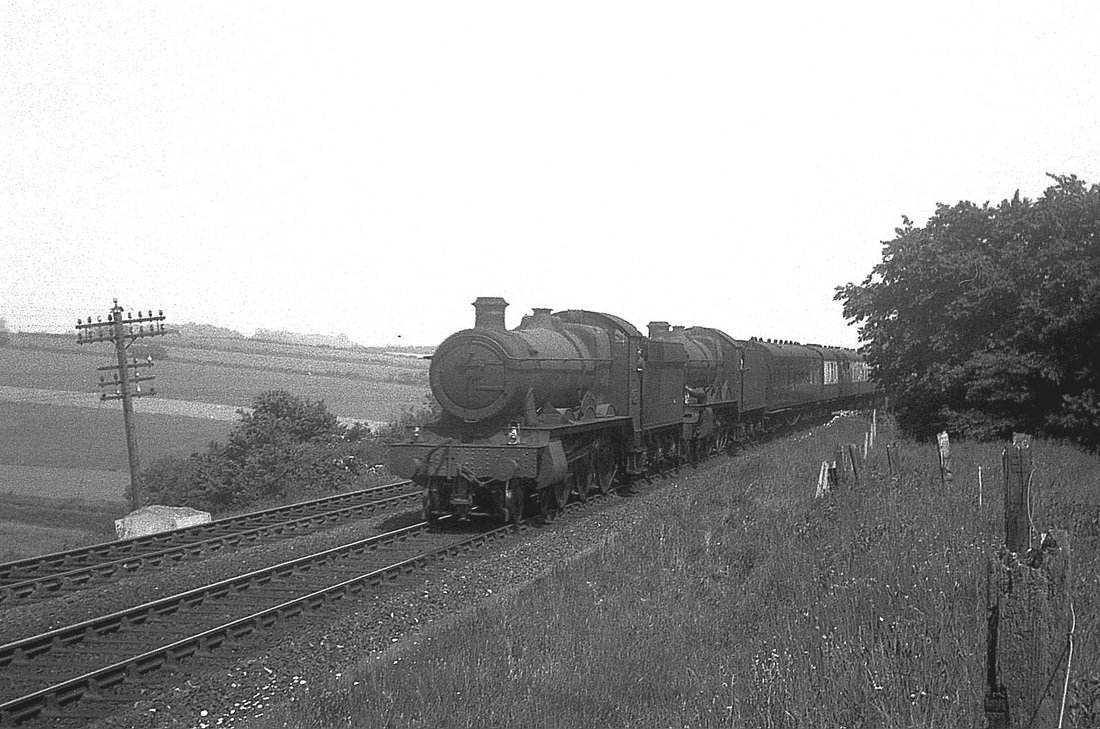
4975 and 5003 coast down Hemerdon Bank with the down "Cornishman" at 3.23pm on Friday 3 June 1960, a few minutes late, and non-stop from Exeter St. Davids. 4975 was named Umberslade Hall and was a Newton Abbot loco. 5003 was named Lulworth Castle and was also Newton Abbot loco from March 1959.Copyright Mike Roach
Hemerdon Gallery 1
Hemerdon Gallery 2
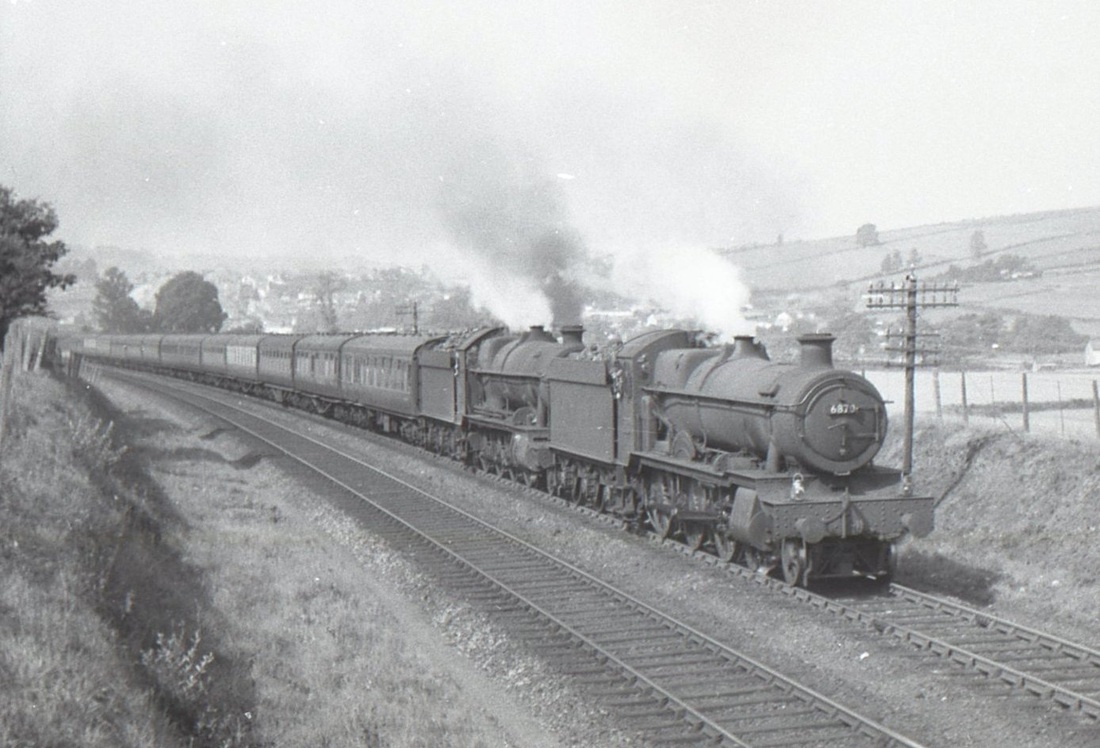
6870 and 4708 with 13 coaches forming the 8.20am Penzance to Paddington past milepost 241 at 11.43am on Saturday 5th September 1959. 4708 was an un-named 2-8-0 express freight loco. 6870 was named Bodicote Grange and was sheded at Penzance, and would normally be removed at Newton Abbot. Copyright Mike Roach
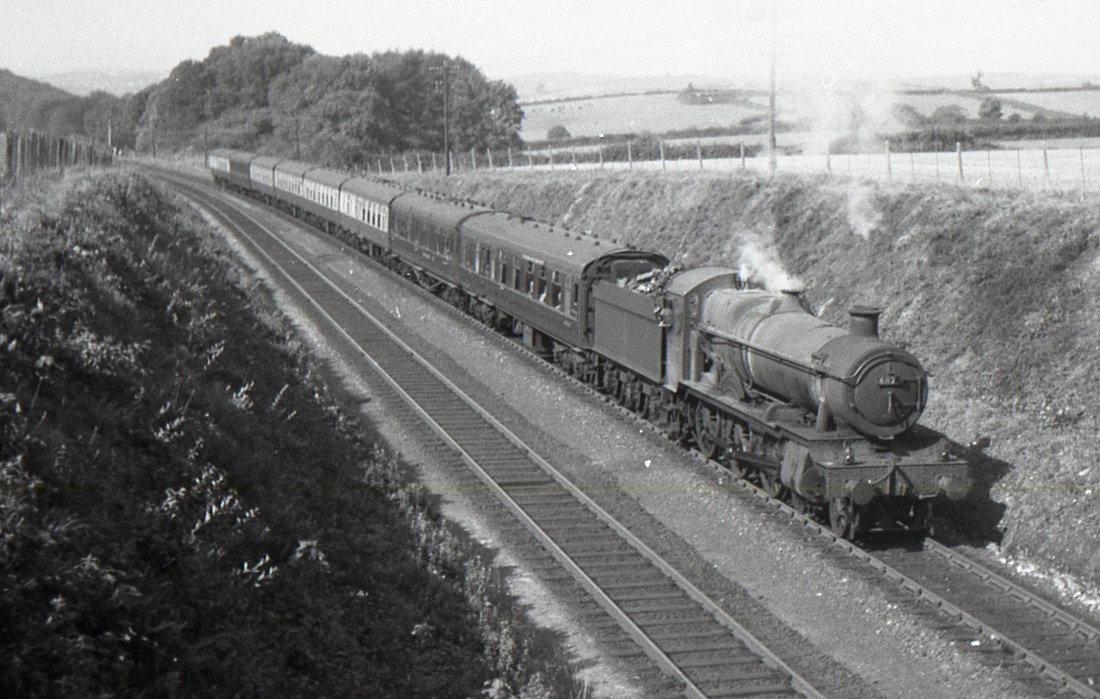
6873 Caradoc Grange with the 7.55am Penzance to Swansea at the top of Hemerdon Bank at 11.25am on Tuesday 15th September 1959. 6873 was a Laira engine right through the 1950s. The Granges were very similar to the Hall Class, but had smaller driving wheels, making them good at climbing gradients. They could be distinguished from the Halls by the raised piece over the cylinders. Copyright Mike Roach
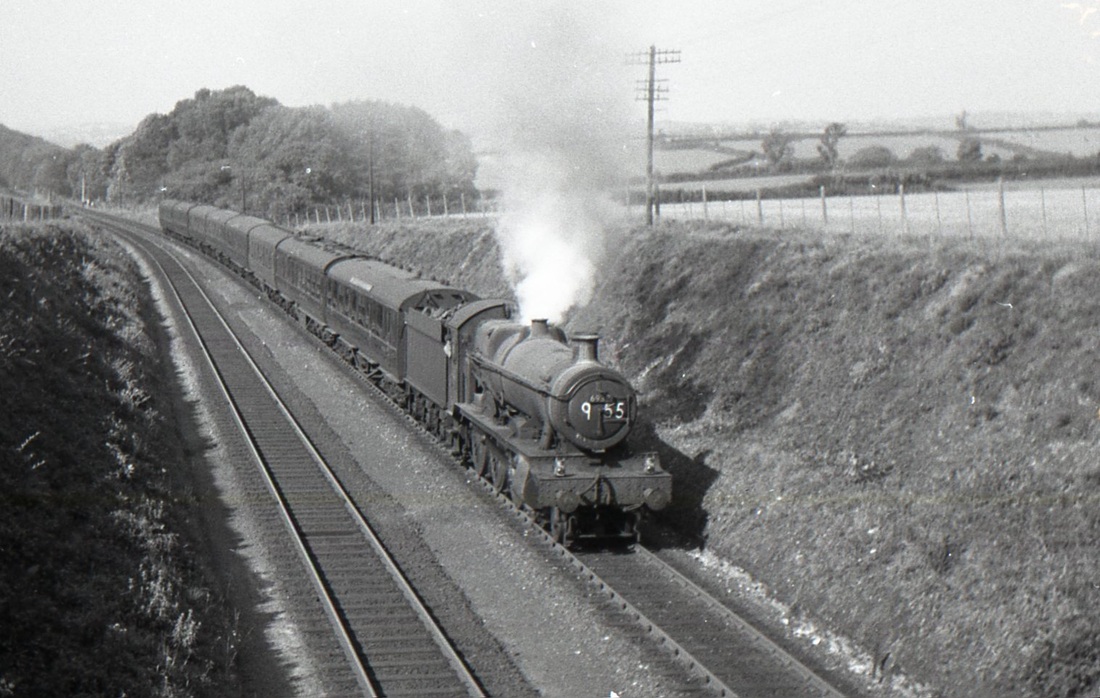
6938 Corndean Hall with the 7.30am Penzance to Manchester at the top of Hemerdon Bank at 10.55am on Tuesday 15th September 1959 photographed from Sparkwell Bridge. Hemerdon Box semaphore distant signal can be seen between the last coach and the edge of the picture. 6938 was a Newton Abbot loco at the time, but was moved to Laira 2 months later in November 1959. Copyright Mike Roach
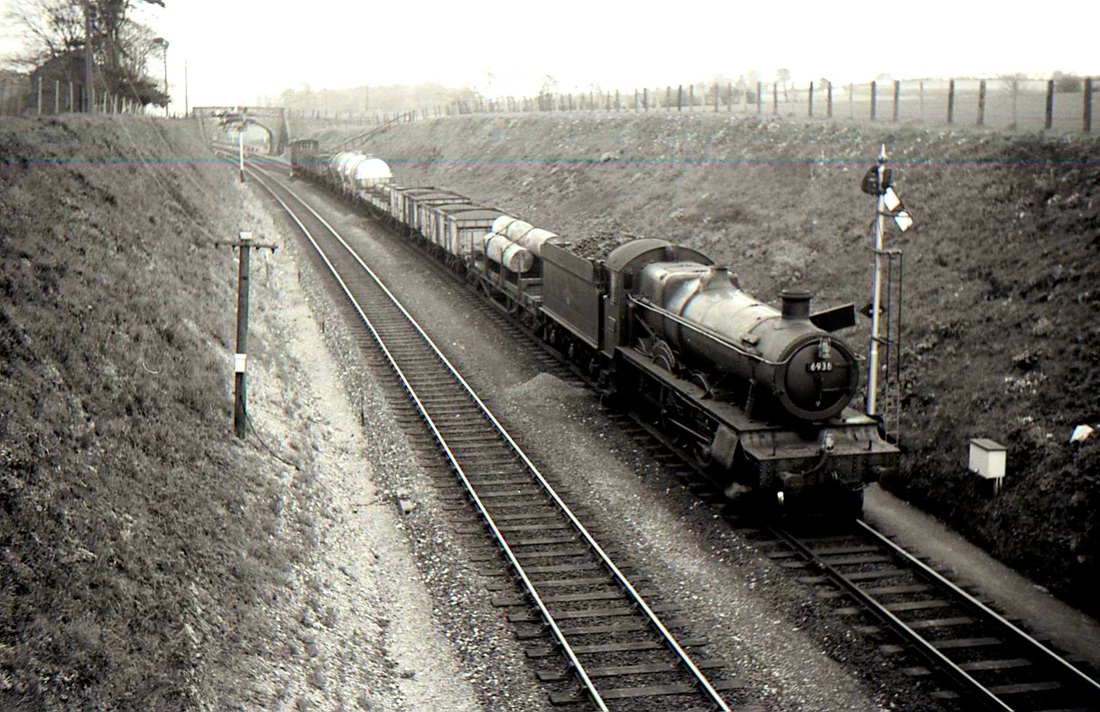
6936 Breccles Hall has arrived at the top of Hemerdon Bank with an unfitted freight train. It has stopped to obey the sign to the right of the loco chimney.The train guard will be running alongside the train as it very slowly moved off, pinning down brakes on each wagon in turn, using an extension bar, until at least 50% were pinned down. Finally he will signal to the driver and climb aboard his brake-van as it passes him. Sparkwell Bridge was a good place to see this procedure in operation. It was really hard, dangerous work for the guard, and unfortunately, at the bottom of the bank, the whole procedure had to be reversed and the brakes released one-by-one. The procedure is now consigned to the dustbin of history. 6936 was a Cardiff Canton locomotive, and on the closure of Canton to steam, it would move to Cardiff East Dock Shed. May 1962 Copyright Mike Roach
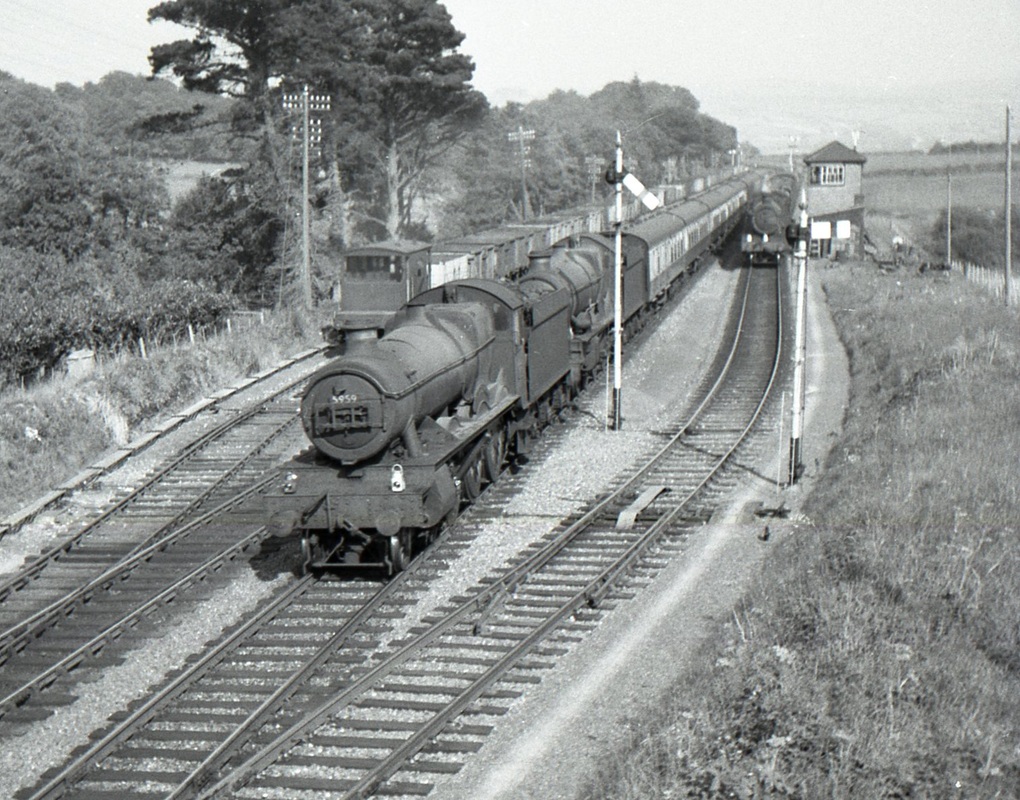
A lovely picture featuring a very nearly a full house at Hemerdon. 5959 Mawley Hall and 5065 Upton Castle pass a recessed goods train with the 11.30am from Paddington to Penzance. If on time Penzance would be reached at 7.10pm On the up loop a coal train awaits the passage of an up service at 4.05pm on Wednesday 9th September 1959 Copyright Mike Roach. One wonders if anybody has ever managed to photograph four trains at this location. 5959 was an Exeter loco but would move to Tyseley the same month; 5065 was sheded at Old Oak Common.
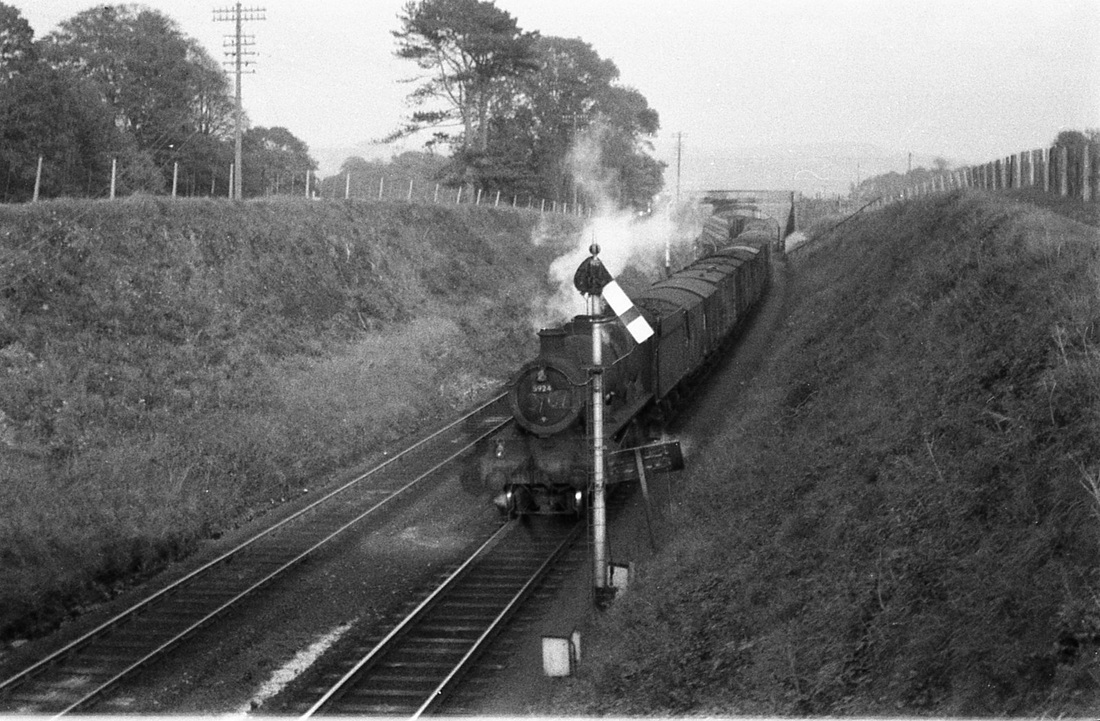
5924 Dinton Hall at the stop board. Since the guard is not visible, and is not walking up to the front of the train, it is possible that the train has a "fitted head", i.e a proportion of the wagons with vacuum brakes. 5924 was a Bristol, St. Phillips Marsh, locomotive. October 1960 Copyright Mike Roach
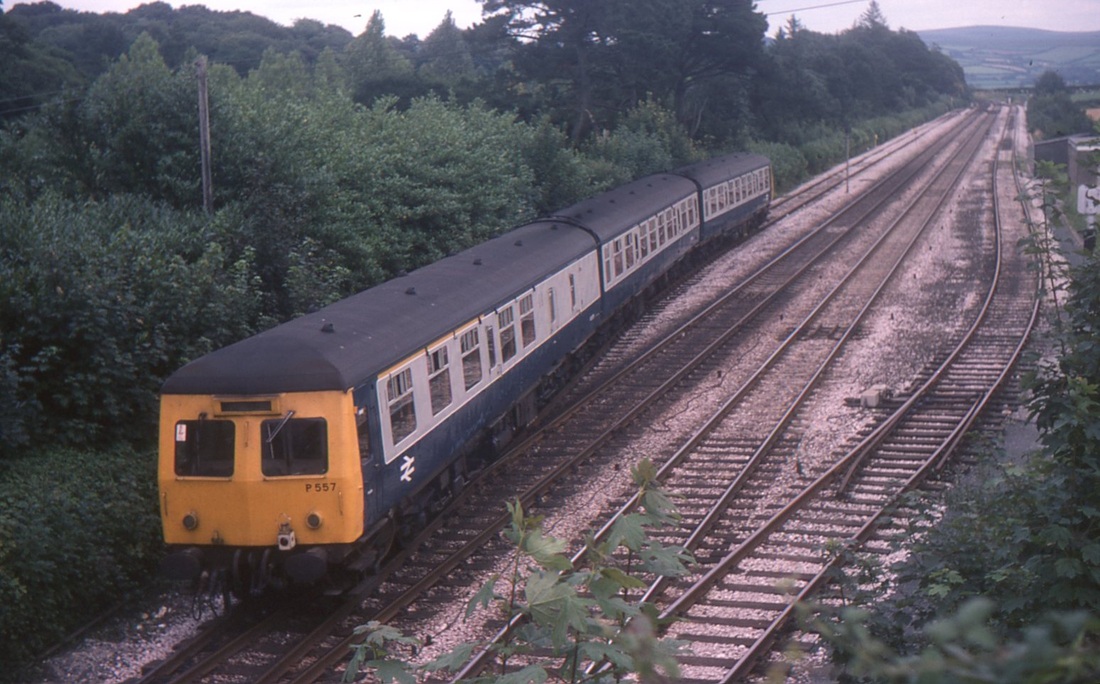
An unusual working at Hemerdon loop. This ECS train went right through the loop and out the other end. At this time no trains were scheduled to use the up loop. So once a day a train (usually a parcels train) was signalled through the loop to ensure that points, signals and track circuits were used at least once a day to keep them working. In 2014 the up loop is still there. The down loop was removed many years ago. This picture taken on the 31st Aug 1978 Copyright Mike Roach
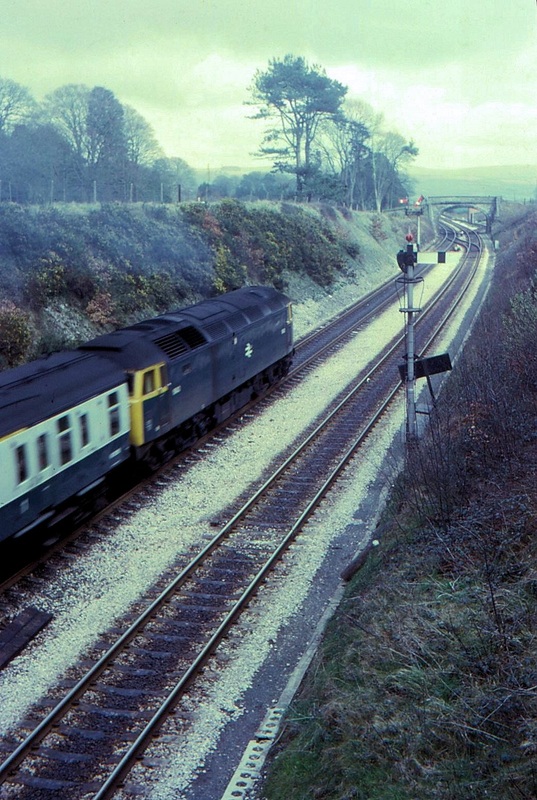
Nearing the top of the Hemerdon bank a class 47 approaches the loops and is signalled on the through line, passenger trains rarely used the loop. The down loop visible and the crossover used to return banking engines back down the incline. The sign by the home signal warns drivers to stop to 'put down brakes'. It's December 1970 Copyright Mike Roach
East of Hemerdon
Slade viaduct
Cornwood
Blatchford viaduct, just east of Cornwood
Ivybridge Station closed 5th October 1964
Ivybridge station's - a history, courtesy of Wikipedia.
Ivybridge railway station is situated on the Exeter to Plymouth line and serves the town of Ivybridge in Devon . It is 234 miles 27 chains measured from the zero point at Paddington via Box.
The station reopened in 1994 to the east of the original station, which was in use from 1848 until 1965. The new station is located in the civil parish of Ugborough. It is owned by Network Rail and operated by Great Western Railway.
The station reopened in 1994 to the east of the original station, which was in use from 1848 until 1965. The new station is located in the civil parish of Ugborough. It is owned by Network Rail and operated by Great Western Railway.
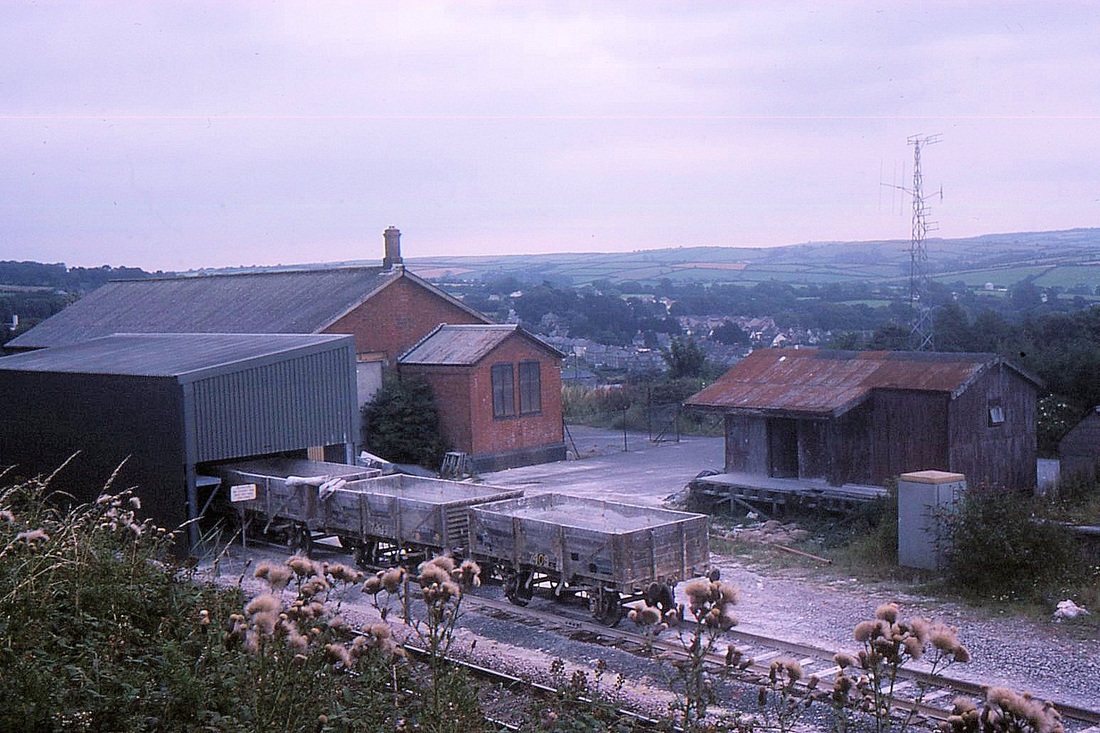
A fascinating picture of Ivybridge Goods yard - the date is 31st August 1986. The yard has ceased to carry 'ordinary goods traffic' but a shed has been constructed for the loading of china clay which as been transported from Lee Moor Clay pit by road. 22 wagons were counted at this location. Copyright Mike Roach
The steps to Ivybridge old station site.
The idea of a new station for Ivybridge.
Nearly 30 years of the original station at Ivybridge closed a new site was chosen. Geoffrey Hurrell writes [on the 19th March 2022]. I have attached a photograph of the site of Ivybridge (new) station that may be of interest to someone. My late father, S V F Hurrell was part of the users' group who suggested this site that had previously been a coal yard when consideration was given to re-opening after the rapid growth of the village in the 1970s.
Kind regards Geoff Hurrell. Many thanks Geoff for the information and picture.
Kind regards Geoff Hurrell. Many thanks Geoff for the information and picture.
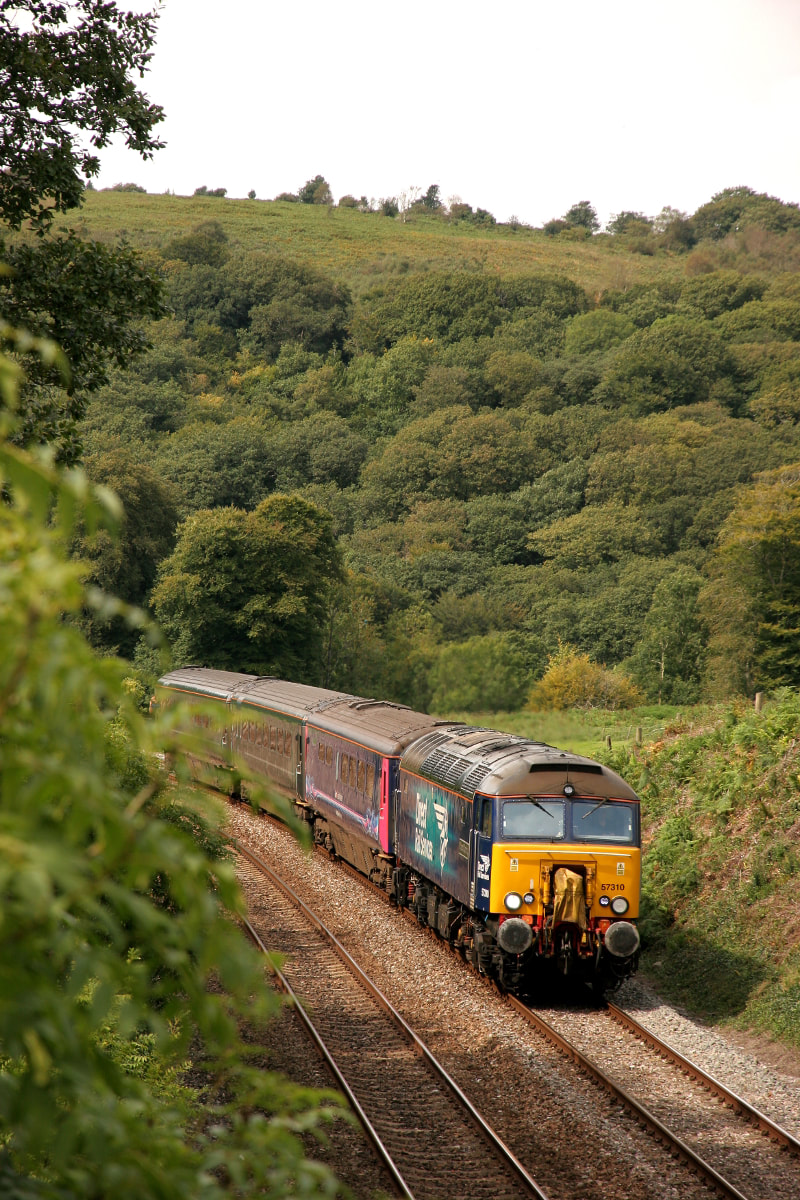 The up loco hauled, the 13.35 Plymouth to Exeter Saturdays train using the seated coaches off the 'Night Riviera' hauled by DRS 57310. Taken from Harford Road bridge, just east of Ivybridge viaduct on the 2nd September 2017 Copyright Chris Harvey
The up loco hauled, the 13.35 Plymouth to Exeter Saturdays train using the seated coaches off the 'Night Riviera' hauled by DRS 57310. Taken from Harford Road bridge, just east of Ivybridge viaduct on the 2nd September 2017 Copyright Chris Harvey
- Ivybridge 25 today
Mike Roach - Ivybridge's new park-and-ride railway station is 25 years old this year. The formal opening ceremony took place on Friday 15 July 1994 and was performed jointly by the Chairman of Devon County Council and the Regional Director of Railtrack. The 2-platform station was sponsored by the British Railways Regional Railways Sector and constructed at a cost of £380,000 which sounds like a bargain now. Although marketed as a park-and-ride station it has no booking office and is effectively a wayside halt, and the station has never had the frequent train service associated with park-and-ride. Has the station lived up to the expectations at the time of construction. The latest passenger usage figures for 2017/18 show a figure of 57,000 and falling. The population of Ivybridge is about 12,000. Meanwhile Totnes, with a population of 15,000 has a passenger usage figure of 700,000 and rising. Since the closure of the Kingsbridge Branch Totnes Station has served a large area of South Devon including Kingsbridge and Salcombe. The figure of 700,000 for Totnes Station is 39% more than Tiverton Parkway Station which also serves a large area. Many thanks Mike.
Ivybridge Plaque as seen on the 15th June 1994 Copyright Mike Roach- The following pictures were kindly supplied at Mikes request by Clive Smith. Many thanks Clive.
(1) 5029 Nunney Castle makes a magnificent sight at Ivybridge as it heads the 'The Anniversary Ltd' Westbury - Plymouth on the 9th May 2014. Copyright Clive Smith.
(2) It's 12.25 and the late running 10.00 Penzance - Paddington HST passes 150126 at Ivybridge on the 09.00 Cardiff to Penzance on the 4th December 2018. Copyright Clive Smith.
(3) A poster advertising the countryside available from Ivybridge station published in 2019. Copyright Clive Smith.
(4) The 06.47 Penzance - Paddington GWR 2+8 HST arrives at Ivybridge on the 1st May 2019 with 43172 Harry Patch leading and with Inter City liveried 43185 on the rear. A handful of passengers get ready to board the train . This is one of three direct weekday services to London from this unmanned station. Copyright Clive Smith.
(5) In 2006 the Wessex Trains franchise ended and with it the 9 trains a day each way that stopped at Ivybridge. This caused a local furore because the Department For Transport proposed that only three trains each way would stop at Ivybridge under the new Greater Western franchise. Meetings were held in the town hall with Great Western to voice objections.The local MP Gary Streeter did a fantastic job in getting the service level increased. This was done by extending Penzance and Gunnislake locals to Newton Abbot until it was possible to get HSTs to stop at the station when Central Door Locking was introduced I believe later in 2006. The picture shows a demonstration at the station in protest at the proposed cuts. Copyright Clive Smith,- Many thanks to both Mike Roach for the original article and first picture and to Clive Smith for the remainder of the pictures.
- The Old Ivybridge
Mike Roach
The original Ivybridge which closed on the 2nd March 1959 was someway to the west of the new station. This view was taken from the down platform. This was served by a road spur which came to the back of the station building, there was a short cut should one have already walked up the steep road from the village - the short cut entailed a climb of 67 steps!! The above picture is copyright Mike Roach
-
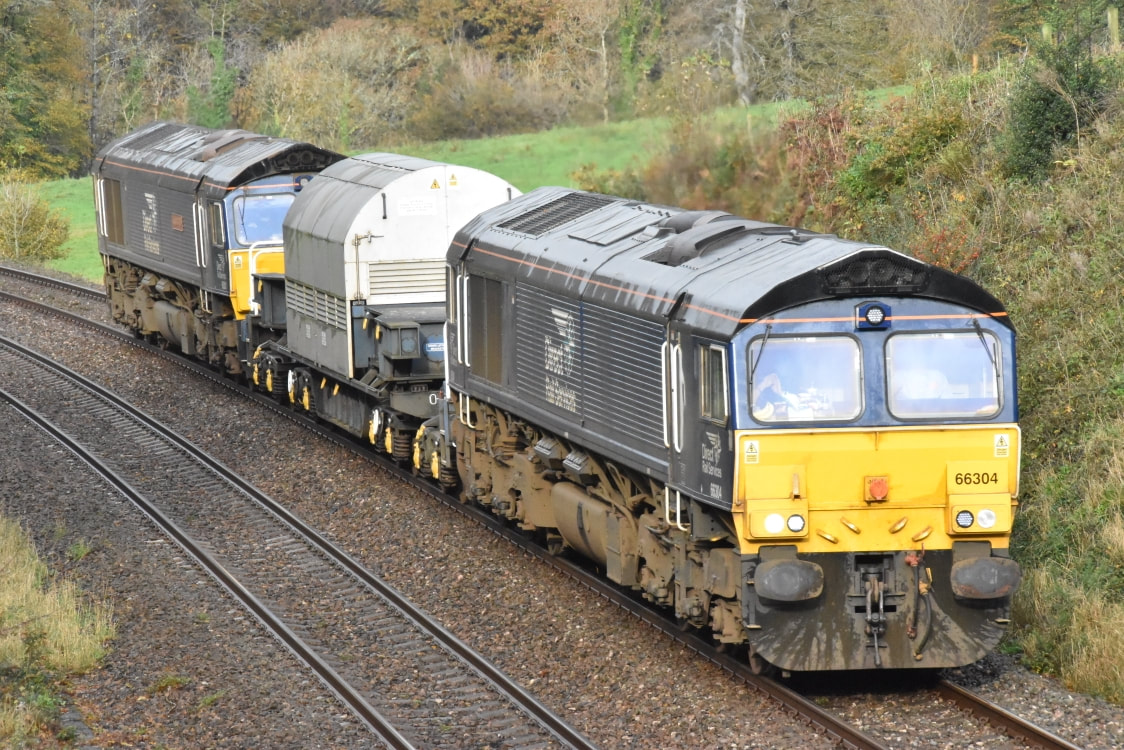
2nd November 2020. DRS 66304 leads a nuclear flask with 66301 behind on the 6Z30 07.48 Devonport Royal Dockyard - Crewe Coal Sidings approaching Harford Bridge west of Ivybridge at 09.07 running 10 minutes late. I was very lucky to capture this in a minute of watery sunshine during endless gloom. One of the train crew clearly needs sustenance for the journey north. Snacks on the tracks !
Regards, Clive Smith. Copyright
The new Ivybridge Station The station re-opened in 1994 to the east of the original station, which was in use from 1848 until 1965. The new station is located in the parish of Ugborough, and is operated by First Great Western
The Redlake Tramway ran for nearly 8 1/2 miles across Dartmoor carrying supplies and workers to and from the Redlake china clay workings and Bittaford. It was built in 1911 to a 3' gauge.
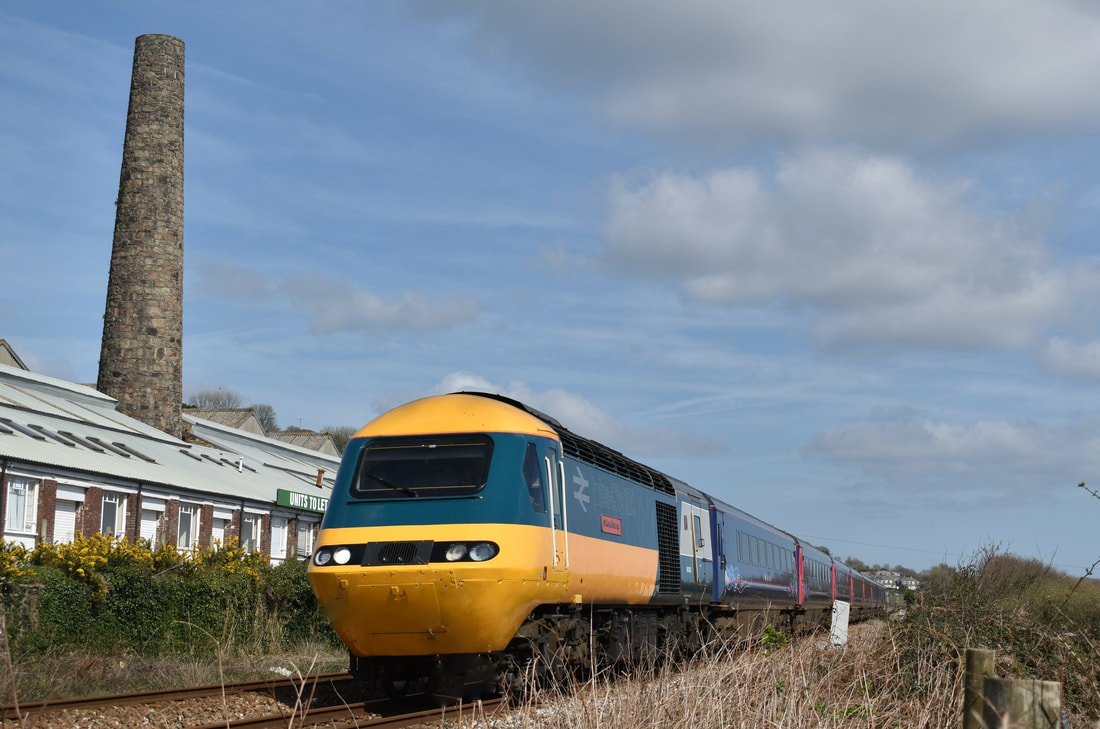
Celebrity BR liveried 43002 passes the old Cantrell Works between Bittaford and Ivybridge with the 3A88 10.45 St Phillips Marsh - Plymouth ECS to form the 13.56 from Plymouth to Paddington. This movement was due to an earlier fatality in Somerset delaying trains and displacing sets. Some severe cutting back of vegetation has allowed this location to be again opened up but the bracken and brambles will soon take hold as spring marches into summer and may make pictures difficult. The rear car is 43022. Having seen this location in many photos back in hydraulic days it came as a disappointment when I went looking for the vantage points some twenty years ago. Amazing what a long overdue substantial bit of pruning can reveal. The works here once housed Western Machinery Ltd . Today the building is split into small units for hire with a nice pop-up cafe on Wednesdays I have been known to frequent with my good lady.. 25th March 2019. Copyright Clive Smith.
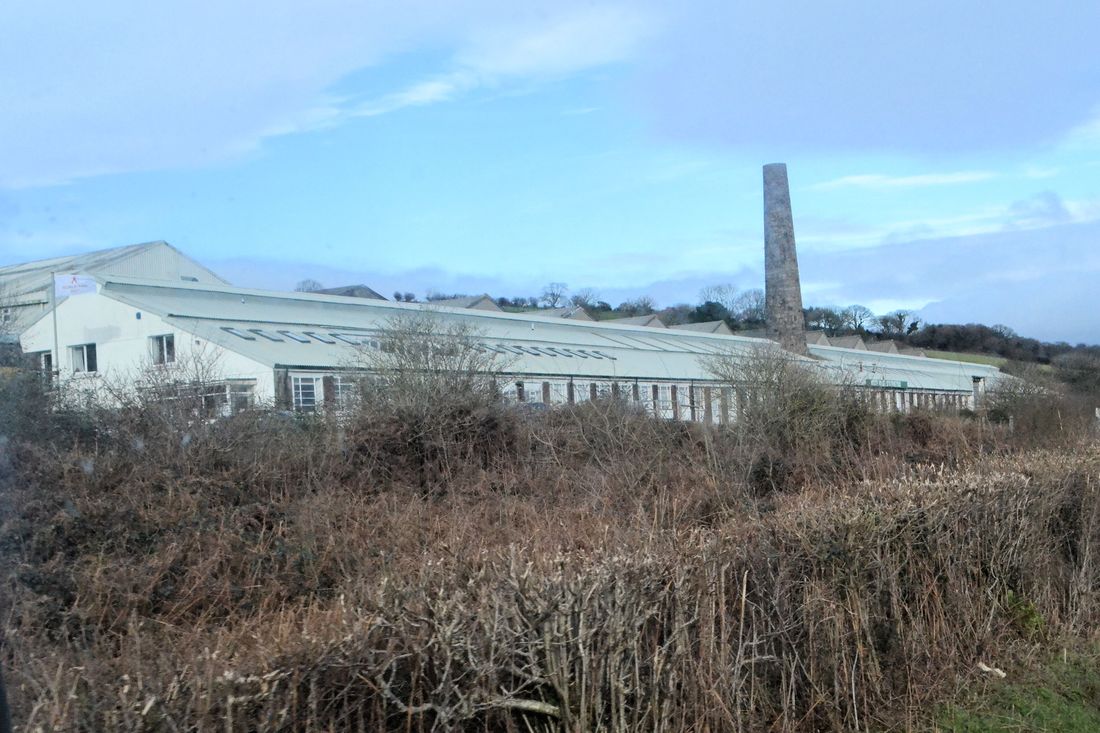 This former china clay dry alongside the main line lay at the foot of an incline built to carry materials and workers to and from Redlake Tramway - a 3' gauge line which ran for over eight miles across Dartmoor. This picture from the top of a double decker bus taken by Roger Winnen on the 16th January 2016. Copyright.
This former china clay dry alongside the main line lay at the foot of an incline built to carry materials and workers to and from Redlake Tramway - a 3' gauge line which ran for over eight miles across Dartmoor. This picture from the top of a double decker bus taken by Roger Winnen on the 16th January 2016. Copyright.
Going Local in Bittaford Closed 2nd March 1959
Clive Smith
Clive Smith
(1) In brilliant sunshine 43301 heads the 1S51 12.27 Plymouth - Edinburgh at Daveys Bridge between Ivybridge and Bittaford on the 22nd November. 43357 is on the rear. (2) The hastily taken going away shot of 1S51. (3) Very close to home for me and perfectly co-ordinated as part of my walk back from photographing the XC HST set further down the road. This was scheduled at 13.05 and was a little late. 43154 is the lead power car on the 10.50 Penzance - Cardiff Central crossing Bittaford Viaduct with 43088 out of sight on the rear. I've been wanting to take a photo here for some time but the light has to be good and the sun in a very specific position. (4) It could be 66116 under the dirt which has been on the RHTT Rail Head Treatment Train. 66098 was definitely on the rear. This is the 23rd and it started at Exeter at 13.26. Of course the glorious sun in the morning couldn't last and high clouds dulled the scene at the bottom of the road in my village of Bittaford. Not a shot I've done before as the view of the viaduct is boxed in. However as I'm not very mobile at the moment I thought I'd go local and see if I could get something. No cars or buses zooming by and thankfully a couple of large trucks on my side of the road passed a few minutes before. Regards Clive Smith
LNER class A2 pacific 60532 Blue Peter makes a very rare appearance in the westcountry as it passes over Bittaford Viaduct with the 1Z40 Wolverhampton - Plymouth 'Eastern Mayflower' tour. This loco has not run on the main line since 2001 having only gained its main line certificate in 1992. It has been under overhaul since 2014. This is my local village and sadly this scene is impossible to capture now. The field I was stood in is now the site of a massive property with large private grounds. Just above the rear of the train is another stretch of land which is at the end of my road. That was built on shortly after this picture was taken and there are now large box houses where the horizon was. The Horse & Groom pub by the viaduct can be seen immediately behind the loco. The trees are also now considerably higher.
Regards, Clive Smith
Regards, Clive Smith
Many thanks Clive.
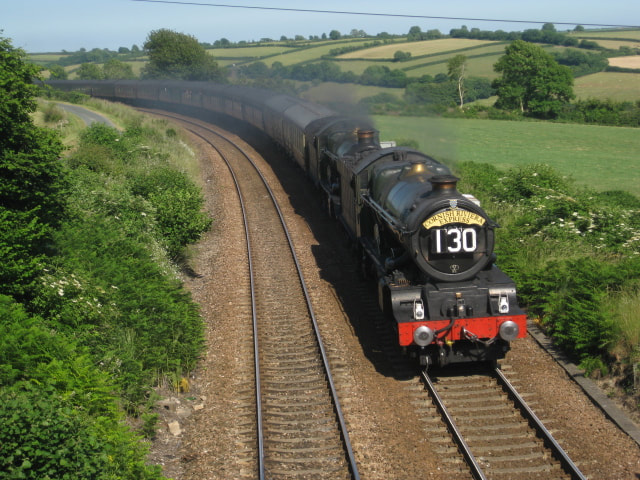
On a glorious weekend eight years ago 6024 King Edward I and 5029 Nunney Castle are seen at 17.00 at Daveys Cross between Bittaford and Ivybridge with the 09.07 Paddington to Penzance Cornish Riviera railtour on Saturday 26th June 2010. Note the train is carrying the 'Riv' headboard and correct identifying number. Copyright Clive Smith
Bittaford from afar
Clive writes - A Cross Country HST with power cars 43366 and 43207 works the 1M42 11.53 Plymouth - Birmingham New Street along the southern slopes of Dartmoor as it crosses Bittaford Viaduct .Normally a Voyager, this is the second day running this train has been an HST and is the only XC HST out working at the moment during an industrial dispute. It is believed to be working for driver traction refresher purposes. This is the first time I have used this location in over twenty years living in the locality. I always thought the shot wasn't possible due to trees and electricity pylons and wires in the valley below but I recently saw a similar photo so set out to find the viewpoint. A quick recce the previous day suggested it might be down a horrendously boggy farm track and so I turned up wearing appropriate footwear and trousers. After about two hundred yards of trudging through mud I came to an opening at the top of a field that slopes down the valley with a view out across a dip in the electricity cables. I was a bit concerned the 2+7 HST might not all fit in as there are trees at either end of the gap where the track is visible but luckily it all worked.
Regards, Clive Smith
Regards, Clive Smith
See unusual views of Ivybridge and Wrangaton Victualling Depot you can't see from the train a fascinating report by Colin Burges. Go to Features Sept. to Dec. 2017
Wrangaton The station closed 5th October 1964. This station was unusual in that the station buildings were high above the platform on the top of an embankment.
A note from Mike Roach referring the picture above. The main point about the kissing gate and sign at the footpath approach to Wrangaton Station is that this was right alongside a bridge over the railway which has disappeared along with the road over the bridge, where one could park and watch trains go by. When the A38 was dualled in the 1970s it was decided not to provide a bridge over the A38 for this very minor road which was severed and became a cul-de-sac at each end. The bridge over the railway was demolished about the same time since it did not then lead anywhere. The old layout can be seen in the Middleton Press book of the line.
Regards Mike
Regards Mike
Below - along the main line - location not known.
To see a view of the loading platform you can't see from the train go a fascinating report by Colin Burges. as he explores the railway route by bike go to Features Sept. to Dec. 2017
To learn a lot more about the viaduct at Bittaford go a fascinating report by Colin Burges as he explores the railway route by bike go to Features Sept. to Dec. 2017
Out in the country east of Bittaford.
West of Brent
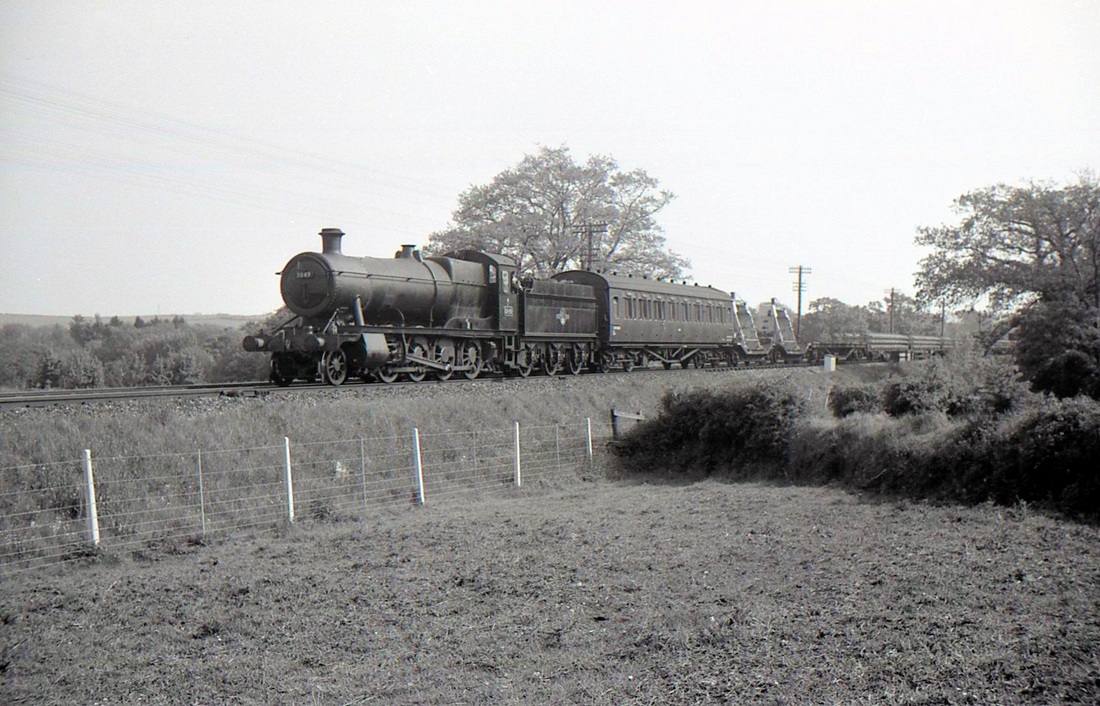
I believe that it is on the embankment half a mile (may be a mile) west of Brent Station. The 2800 is on a track relaying train obviously, because you can see the track panels with the concrete sleepers, and the mess van at the front. The machinery on the well wagons is used in the relaying. 3849 was a Laira engine at the time. It was only at Laira for just three months from April to July 1962. So this dates the photograph very accurately. 3849 was then sent away to Banbury. The locomotives disposal date was 31st August 1965 Copyright Mike Roach
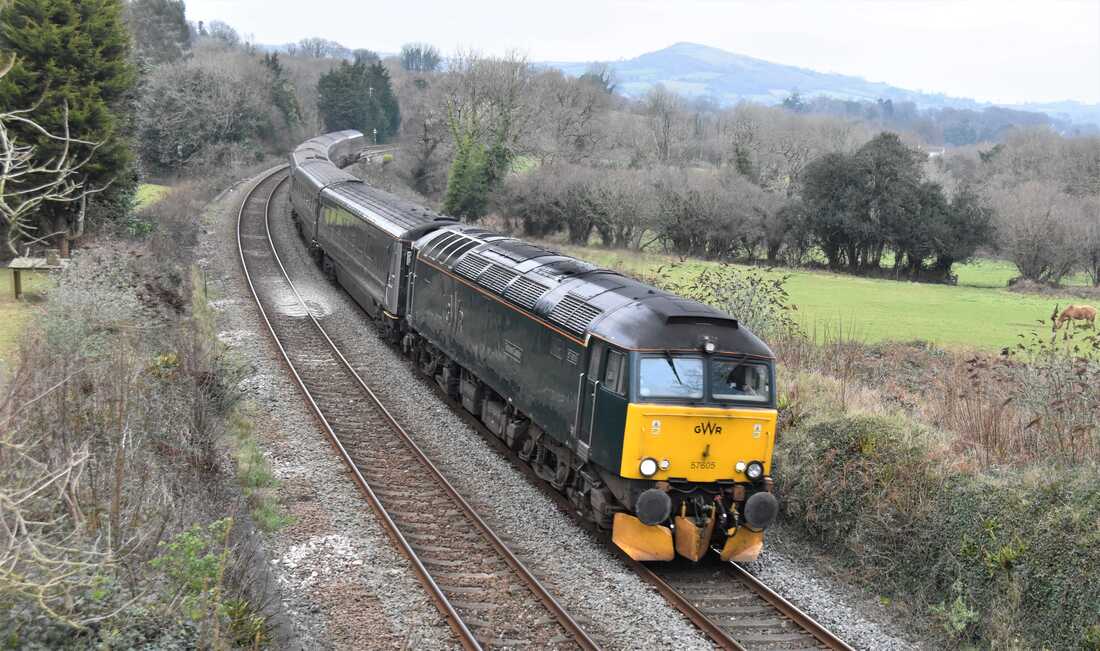
57605 'Totnes Castle' heads the 5C99 11.06 Reading Depot - Penzance sleeper ECS towards Wrangaton from Aish taken from Cheston Bridge on Primrose Lane. First Group this week released a provision for expressions of interest from suppliers for five bi-mode locomotives for use on Great Western Railway’s Sleeper Service.This would appear to signify the beginning of the end for the class 57s on the sleeper service although they probably have a couple of years at least
Copyright Clive Smith 24th January 2022
For views of the western approach to Brent station and the station itself go a fascinating report by Colin Burges. as he explores the railway route by bike go to Features Sept. to Dec. 2017
Brent Station closed to passengers 5th October 1964. It had previously closed to goods 5th April 64. The Kingsbridge branch had closed on 16th September 1963
Mike Roach writes :-
5573 was at Newton Abbot Shed from December 1957 to December 1962 when it was transferred away to Whitland. I photographed the loco on the Kingsbridge Branch on Saturday 1 July 1961, and I have seen a picture of it on the Branch the previous Saturday. A month later I photographed it at Wadebridge and Bodmin General but it was not formally transferred to St. Blazey so perhaps it was on loan.
The previous summers would have been similar but lets assume that this is a Saturday in June or July 1961. The train is the 10.55am Saturdays Only Kingsbridge to Paddington. The train would have arrived in its normal platform in Brent at 11.30am. 5573 would then have propelled its coaches out towards Newton Abbot over the crossover and onto the up main. It would then have worked its train westwards through the up platform out under the road bridge from which the photo was taken and into the up loop. The 11.15am Plymouth to Paddington arrived in the up platform and 5573 propelled its coaches out of the loop and on to the back of the Paddington train. Departure from Brent was scheduled at 11.45am and arrival at Paddington at 4.18pm.
Three pictures below we see 5573 on a Kingsbridge branch train in November 1959
Many thanks Mike for your reasoning behind the otherwise rather strange movement depicted in Mike Morants Picture.
However there is a further suggestion sent to Mike Roach from Charles Fennamore - Mike thinks this is more likely the case.
BRENT
Charles Fennamore thinks that the coaches are being pushed rather than pulled as we thought, and has come up with an alternative explanation as follows. Its much earlier in the day, which is still a Saturday. The 5 coaches are ECS on their way from Plymouth to Kingsbridge to take up their booked working to Paddington at 10.55am. They have been dropped off in the up platform and 5573 has come out of the up loop to pick them up. The loco is now pushing the coaches eastwards clear of the crossover. It will then run towards the photographer over the crossover onto the down main clear of all the points and then push the rake of coaches into the branch platform on the right. Finally 5573 will run around and go onto the front of the train ready to form the 9.55am Brent to Kingsbridge arrive 10.30am.
Was there a suitable train up the main line from Plymouth in 1961 to drop the coaches off ? Yes there was and it was the 7.40am St Austell to Birmingham Moor Street. This departed Plymouth at 9.10, and Brent at 9.45am. So the picture was taken just after 9.45am when the main train had departed for Birmingham. The previous train was an hour earlier and was a combined Penzance to Manchester and Plymouth to Liverpool train which was probably too long already to take an extra 5 (and sometimes 6) coaches. The only snag with bringing the coaches up on the St Austell train was that it only started running on Saturday 8 July 1961. However in 1960 and earlier years the 7.40am from St Austell had operated right through the 3-month currency of the Western Region Summer timetable. On Saturday 9 July 1960 the train had been hauled by 4934 Hindlip Hall of Newton Abbot Shed from Plymouth onwards.
The angle of the shadows seems to confirm the time of day as being quite early.
5573 was at Newton Abbot Shed from December 1957 to December 1962 when it was transferred away to Whitland. I photographed the loco on the Kingsbridge Branch on Saturday 1 July 1961, and I have seen a picture of it on the Branch the previous Saturday. A month later I photographed it at Wadebridge and Bodmin General but it was not formally transferred to St. Blazey so perhaps it was on loan.
The previous summers would have been similar but lets assume that this is a Saturday in June or July 1961. The train is the 10.55am Saturdays Only Kingsbridge to Paddington. The train would have arrived in its normal platform in Brent at 11.30am. 5573 would then have propelled its coaches out towards Newton Abbot over the crossover and onto the up main. It would then have worked its train westwards through the up platform out under the road bridge from which the photo was taken and into the up loop. The 11.15am Plymouth to Paddington arrived in the up platform and 5573 propelled its coaches out of the loop and on to the back of the Paddington train. Departure from Brent was scheduled at 11.45am and arrival at Paddington at 4.18pm.
Three pictures below we see 5573 on a Kingsbridge branch train in November 1959
Many thanks Mike for your reasoning behind the otherwise rather strange movement depicted in Mike Morants Picture.
However there is a further suggestion sent to Mike Roach from Charles Fennamore - Mike thinks this is more likely the case.
BRENT
Charles Fennamore thinks that the coaches are being pushed rather than pulled as we thought, and has come up with an alternative explanation as follows. Its much earlier in the day, which is still a Saturday. The 5 coaches are ECS on their way from Plymouth to Kingsbridge to take up their booked working to Paddington at 10.55am. They have been dropped off in the up platform and 5573 has come out of the up loop to pick them up. The loco is now pushing the coaches eastwards clear of the crossover. It will then run towards the photographer over the crossover onto the down main clear of all the points and then push the rake of coaches into the branch platform on the right. Finally 5573 will run around and go onto the front of the train ready to form the 9.55am Brent to Kingsbridge arrive 10.30am.
Was there a suitable train up the main line from Plymouth in 1961 to drop the coaches off ? Yes there was and it was the 7.40am St Austell to Birmingham Moor Street. This departed Plymouth at 9.10, and Brent at 9.45am. So the picture was taken just after 9.45am when the main train had departed for Birmingham. The previous train was an hour earlier and was a combined Penzance to Manchester and Plymouth to Liverpool train which was probably too long already to take an extra 5 (and sometimes 6) coaches. The only snag with bringing the coaches up on the St Austell train was that it only started running on Saturday 8 July 1961. However in 1960 and earlier years the 7.40am from St Austell had operated right through the 3-month currency of the Western Region Summer timetable. On Saturday 9 July 1960 the train had been hauled by 4934 Hindlip Hall of Newton Abbot Shed from Plymouth onwards.
The angle of the shadows seems to confirm the time of day as being quite early.
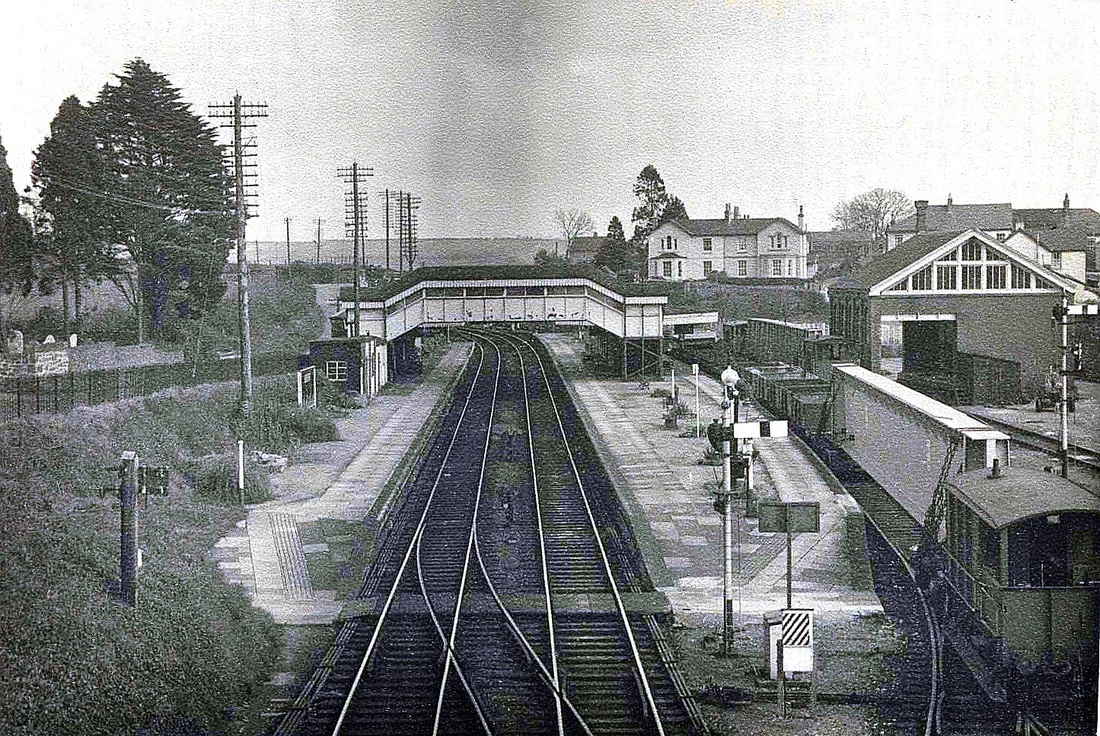
An interesting view of Brent taken by Sid Sponheimer. A consignment of two bridge girders is tabled in the Kingsbridge platform and goods yard. Date unknown but the fact that the 'Kingsbridge branch' seems to have been removed from the station nameboard suggests that it is after closure of the branch (16th September 19630 . Copyright
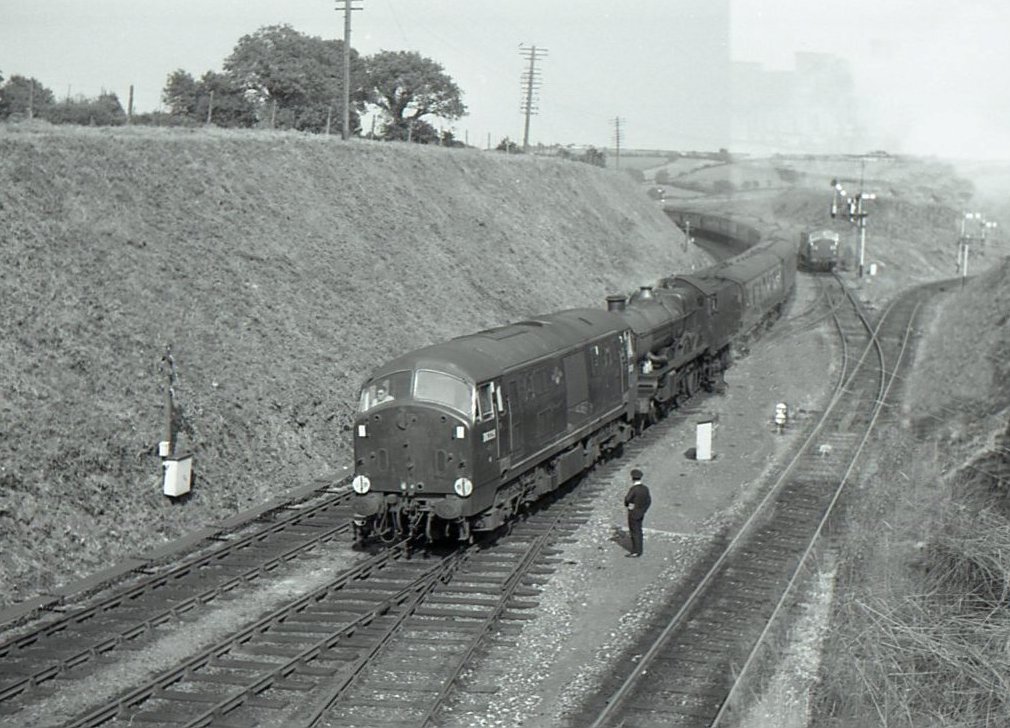
Brent. The Kingsbridge branch comes in from the right. A Class 22 heads a Castle on the 12.30pm from Paddington to Plymouth. This 14-coach train included a 3-coach portion at the rear for Kingsbridge. The train would have to draw up twice in the platform, where the railwayman in the picture would uncouple the rear three coaches. The Class 22 in the loop would then pick them up, shunt them across and add them to the 2 coaches of the branch train. The whole operation took less than 5 minutes.The mainline train was running 26 mins late that day. Jun1962 Copyright Mike Roach. (Apologies for the slight defect on this image)
The RW picture taken at South Brent shows 33017 and 33022 on a RPPR spcl which started at Paddington and was worked by two class 40s , 40081 and 083 as far as Newton Abbot vice a Deltic. 33017 and 33022 worked the train from Newton Abbot to Par and back to Newton Abbot. This gave a rare sight of a 33 into Cornwall. Does RW have any shots of them in Cornwall , I do but cant find them at the moment. The first class 33 working into Cornwall were on the 18 plus specials which brought 33s to St Germans at easter time , i think the first one were in 1970
Brent Goods Shed on the5th March 2020 Clive Smith
Time for my annual dental check up and what better place to have your molars looked at than the old goods shed at the closed Brent station. Built in 1893 the shed was closed when goods traffic ceased on the 6th April 1964 with the station following six months later. The branch to Kingsbridge was closed the previous year. Now a smart looking dental and medical centre and an ideal place to watch trains through the window as your cavities are drilled into. For the record my teeth were in excellent condition.
Regards, Clive Smith
Regards, Clive Smith
Marley Tunnels
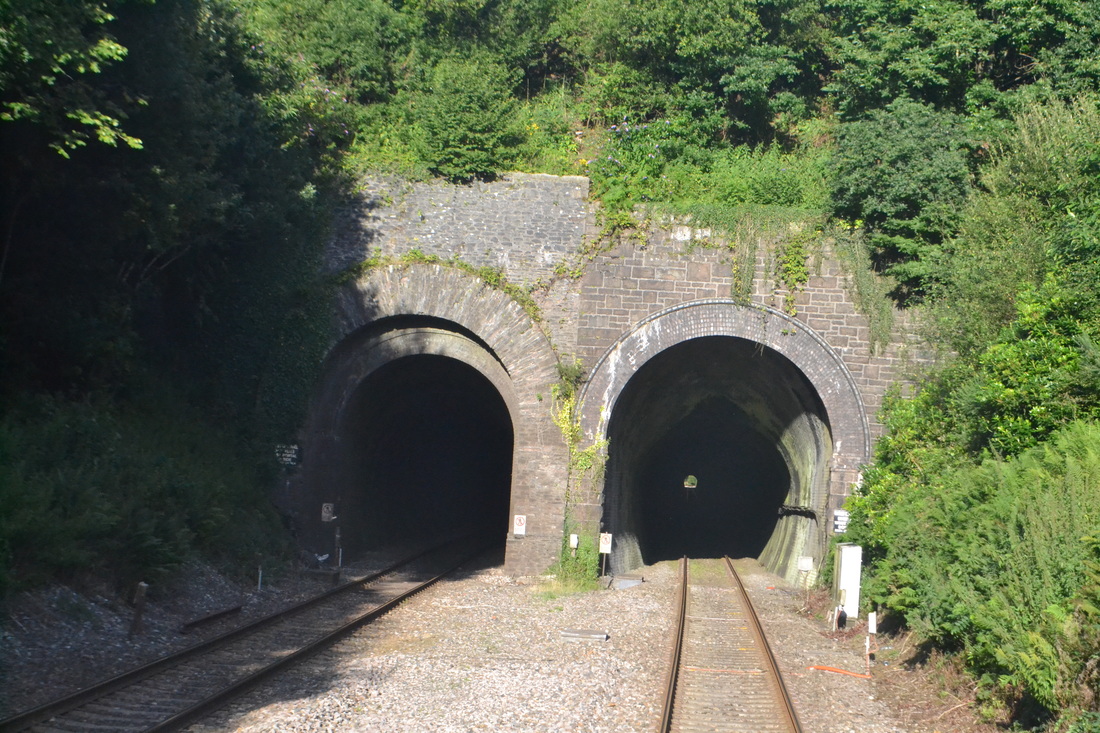
A view of the west end of Marley down yunnel 150815g Dead straight through Marley Tunnel 869yds with a glimmer of light showing through, the second bore of this tunnel was opened in 1893. Seen on the 15th August 2015 from the rear of the Exeter - Penzance (Using sleeper stock) Copyright Roger Winnen
To see Marley House and views of the track at Rattery views you can't see from the train go a fascinating report by Colin Burges. as he explores the railway route by bike go to Features Sept. to Dec. 2017
Rattery
Tigley The marvellous picture below by Mike Morant gives us a glimpse of Tigley Signalbox - this was opened 1st May1908 and closed 28th June 1964. (Chris Osment)
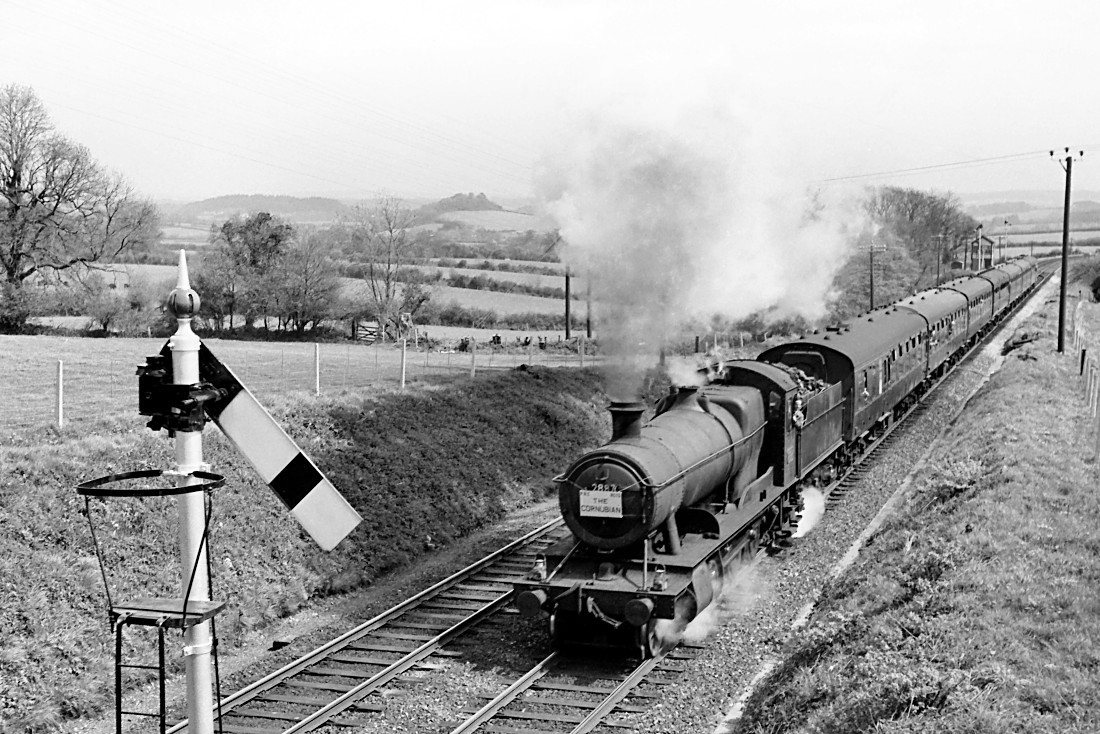
Collett 2800 class 2-8-0 no. 2887 hauled this special from Exeter St. David's to Plymouth and is seen here at Tigley on the ascent of Rattery bank. The Cornish part of the tour from Plymouth to Penzance and back was hauled by Bulleid original pacific no. 34002 Salisbury. 2887 then did the honours by returning the participants to Exeter.
2887 was a Taunton allocated engine at this time but was withdrawn in the month following this outing Note this railtour ran on the 3rd May 1964. Tigley signalbox in the distance had a matter of weeks of life left - it closed 28th June 1964.
[Mike Morant collection
Three Arches Bridge - this is about one mile west of Totnes.
Saturday December 8th 2018 may have seen the passing of an era with the last HST worked down Cornish Riviera Express. The 10.03 Paddington - Penzance passes Three Arches Bridge near Follaton west of Totnes in atrocious weather on the climb up Rattery Bank. With IET changeovers never a 100% certainty it was only today (Monday 10th December) when an IET produced that another footnote can be added to the history of the legendary named train..It is an incredible thirty nine years that HSTs have worked 'The Riv' with the last loco hauled 'Down' being on 5th August 1979. For the record it arrived at Penzance on time. The 'Up' gave way to HSTs in May 1980 and still soldiers on with these stalwarts of modern engineering. With changeovers to IETs gathering pace it is only a matter of months before this too will go. Alas I was unable to note the power car numbers. If anyone can contact the website with this information it can be added to the record. Regards, Clive Smith Many thanks Clive
For the record Guy Vincent adds :- Clive Smith's historic posting of what could possibly have been the "final" HST-worked 1C76 1003 Paddington-Penzance 'Cornish Riviera Express' was indeed most welcome and worth recording. What a pity the weather was not better for him! I have managed to find out the identity of the HST that worked the train, it was:
Set OC47 comprising 43079 44060 42067 42381 42308 42509 42319 40710 41108 43180
How long before 1C76 'drops' and another HST turns up on it? I guess we will have to wait and see.
Best wishes, Guy Vincent Many thanks Guy.
For the record Guy Vincent adds :- Clive Smith's historic posting of what could possibly have been the "final" HST-worked 1C76 1003 Paddington-Penzance 'Cornish Riviera Express' was indeed most welcome and worth recording. What a pity the weather was not better for him! I have managed to find out the identity of the HST that worked the train, it was:
Set OC47 comprising 43079 44060 42067 42381 42308 42509 42319 40710 41108 43180
How long before 1C76 'drops' and another HST turns up on it? I guess we will have to wait and see.
Best wishes, Guy Vincent Many thanks Guy.

Taken from a rutted byway to the north of the line on the outskirts of Totnes a train is seen descending the last of the bank from Rattery. If my camera were better, it would have picked up Western Beacon in the grey above the trees at left. Western Beacon is the southernmost point of Dartmoor and overlooks Ivybridge Station, the start of my ride. Copyright Colin Burges
Totnes
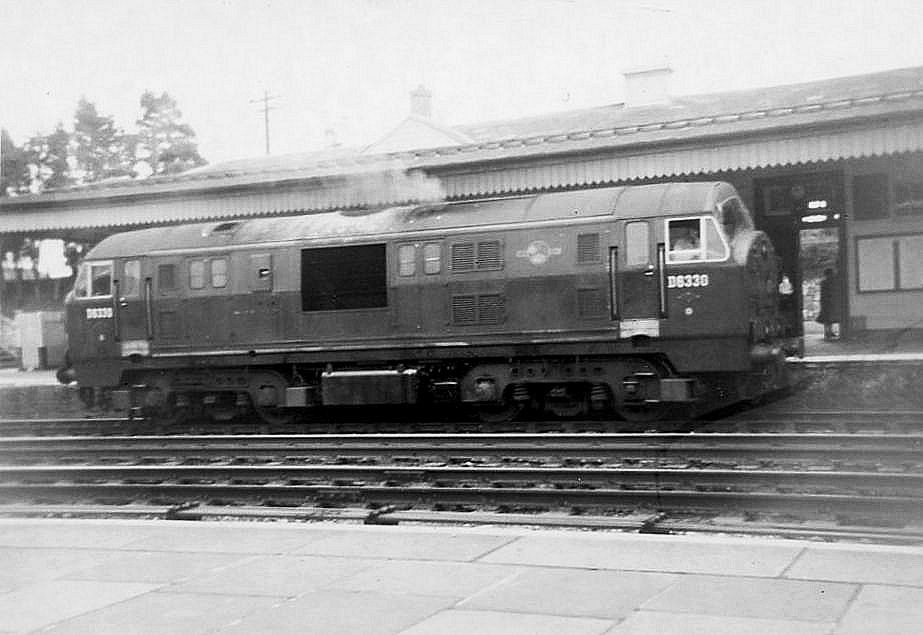
I have attached just one other (rather poor) photograph, that of a (British Electric) class 2 ‘Baby Warship’ acting, I presume, as Dainton banker. BR, in their wisdom, allowed the western region to build their stock as diesel hydraulics (with a single Napier deltic engine) whereas The North British Company built a similar loco as a considerably heavier diesel electric. Either way neither was successful and were poor substitutes for the tried and trust 5101/6100 steam locos.
I managed to tick every single one of the two ‘Warship Class’ locos, but my heart always sank whenever our holiday train appeared thus powered rather than by a Castle or King. I can vividly recall seeing D805 'Benbow' bounce alarming over the facing points onto the up platform loop at Totnes. Oliver Nock said that the only time he was ever really frightened on the footplate of any locomotive was on a Warship!
At that time everything was tested over the ferocious Devon Banks. Among the highlights I saw was the Brown-Boveri gas turbine loco (nicknamed Kerosene Castle by some wag). I say ‘saw’, but I was playing cricket on Coronation Park next to the station at the time and the first I heard was the extraordinary sound it made as the driver opened up for the climb up Rattery. I am also willing to swear an oath that I saw the first of the ‘Western’ class locos (D1000 Western Enterprise) in grey primer before it was given its original and short-lived desert sand livery – in my innocence I wrote ‘silver’ next to it in my Ian Allen combined volume.
I wish I had taken more pictures and more notice of those events; memories can easily disappear without trace unless preserved by an organisation such as the Cornish Railway Society. I commend you for your continuing efforts.
Kind regards. Geoff Hurrell. Copyright
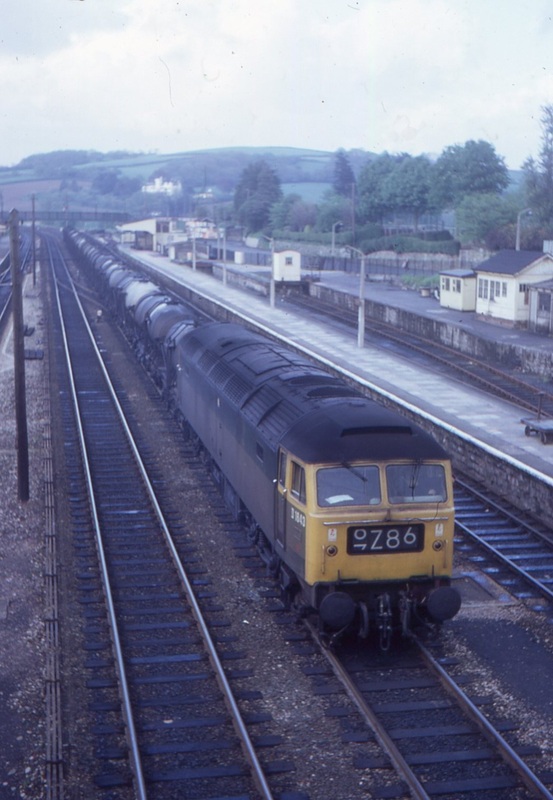
In May 1969 industrial action resulted in this most unusual working - full milk tankers are being worked down to Cornwall, to St Erth. They had originated from Torrington. The class 47 locomotive was number 1643 and the load was 30 tankers. Note the two lenghty sidings behind the down platform. Copyright Mike Roach
FIRE at Totnes Station.
Mike Roach remembers the Totnes fire anniversary
TOTNES FIRE 1962 Michael L. Roach
It was 60 years ago today on Saturday 14 April 1962 that Totnes Station was devastated by a fire which started in the early hours. The fire destroyed all the main buildings on the downside i.e the Plymouth-bound platform, including the booking hall/office, the parcels office and refreshment room. The debris was cleared and the platform used for the day's train service as normal. A Portakabin was delivered next day and used as a booking office and waiting room for some time. Thanks go to The Railway Observer for recording this item. On the same page of the same Railway Observer (June 1962) a news item records that the complete dieselisation of the Cornish main line and its branches is nearing completion with very few steam turns remaining.
MLR / 12 April 2022
TOTNES FIRE 1962 Michael L. Roach
It was 60 years ago today on Saturday 14 April 1962 that Totnes Station was devastated by a fire which started in the early hours. The fire destroyed all the main buildings on the downside i.e the Plymouth-bound platform, including the booking hall/office, the parcels office and refreshment room. The debris was cleared and the platform used for the day's train service as normal. A Portakabin was delivered next day and used as a booking office and waiting room for some time. Thanks go to The Railway Observer for recording this item. On the same page of the same Railway Observer (June 1962) a news item records that the complete dieselisation of the Cornish main line and its branches is nearing completion with very few steam turns remaining.
MLR / 12 April 2022
Totnes area incident - another Fire 6th August 1989 Ron Kosys
A few hours at Totnes on 6th August 1989
Ron writes : - I don’t normally take light engines...
Whether 47447 had failed and so was topped by 47280 to Plymouth I don’t know, or it could have been a planned move...
I’m not sure of the train’s identity but certainly 47280 appeared to be doing all of the work as it began the climb out of Totnes.
A few hours later it returned with 47827 and 47618 in tow. However, as they appeared smoke could clearly be seen above the locos and indeed flames were leaping up the body side of 47827. I’m guessing a brakes issue.
After waving furiously at the driver in the hope that he might realise I was trying to indicate a problem, I did take one shot, by which times the tall flames were no longer visible. I’m guessing the driver had already realised he had a problem.
The locos were held for a few hours on the up through road at Totnes station whilst everything cooled down and a fitter arrived from Laira.
In the meantime the fire brigade dealt with the lineside fires left in its wake.
As can be seen, there is clear evidence of previous lineside fires.
Many thanks Ron for capturing and sharing these pictures with us.
Ron writes : - I don’t normally take light engines...
Whether 47447 had failed and so was topped by 47280 to Plymouth I don’t know, or it could have been a planned move...
I’m not sure of the train’s identity but certainly 47280 appeared to be doing all of the work as it began the climb out of Totnes.
A few hours later it returned with 47827 and 47618 in tow. However, as they appeared smoke could clearly be seen above the locos and indeed flames were leaping up the body side of 47827. I’m guessing a brakes issue.
After waving furiously at the driver in the hope that he might realise I was trying to indicate a problem, I did take one shot, by which times the tall flames were no longer visible. I’m guessing the driver had already realised he had a problem.
The locos were held for a few hours on the up through road at Totnes station whilst everything cooled down and a fitter arrived from Laira.
In the meantime the fire brigade dealt with the lineside fires left in its wake.
As can be seen, there is clear evidence of previous lineside fires.
Many thanks Ron for capturing and sharing these pictures with us.
Totnes gets a NEW Footbridge - an article by Clive Smith
The new bridge at Totnes is up. The final section was put in place by crane early on Sunday morning (22nd July 2018) . It is hoped to be in operation in a few weeks. The lift columns will be cladded with bricks but the builders I spoke to said there were no plans for the central span to be painted. Personally I think a shade of green would help it blend in with the surroundings.
Regards
Clive Smith Many thanks indeed Clive
Regards
Clive Smith Many thanks indeed Clive

(3) 50050 Fearless heads the 09.27 Paddington to Penzance relief train on 9th April 1982. The blue footbridge is the precursor to the incumbent structure. I believe it was accidentally struck by a crane during a p.way possession and had to be replaced due to the damage. My memory is hazy on dates. Late 80s perhaps ? Note the Unigate Creamery with deliveries ongoing and the remnants of the former up sidings. The down sidings were still in use . A wonderful trolley can be seen on the down platform . Copyright Clive Smith
Totnes - Then and Now
Totnes Quay branch plus railtour visits.
A short branch led from the east end of Totnes station down to Totnes Quay.
A short branch led from the east end of Totnes station down to Totnes Quay.
On the Totnes pictures by Cedric Owen (one of the great characters of the era!) - the engine had been condemned and taken out of service in the week prior to the special. It was specially steamed for the trip and then finally taken off for scrap. Thanks for that Roy
Dainton Bank & Tunnel (West)
Below and above we have pictures of Dainton Signal Box'es. The lower one in 1960, the more recent one above in 1987. Chris Osment makes the following interesting comment " -- After the 1965 replacement Type 37A 'Plywood Wonder' signal box at Dainton Tunnel was closed in 1987, it was moved to Westbury and became the club-room of the Westbury Sailing Club, just off Station Road". Chris says "Judging from recent pictures on their website, it is still in use today.
For a very interesting article on 'Dainton Tunnel Signal Box and Westbury Iron Works' look at our Features section for January to June 2017, and scroll down.
Dainton Bank & tunnel (East)
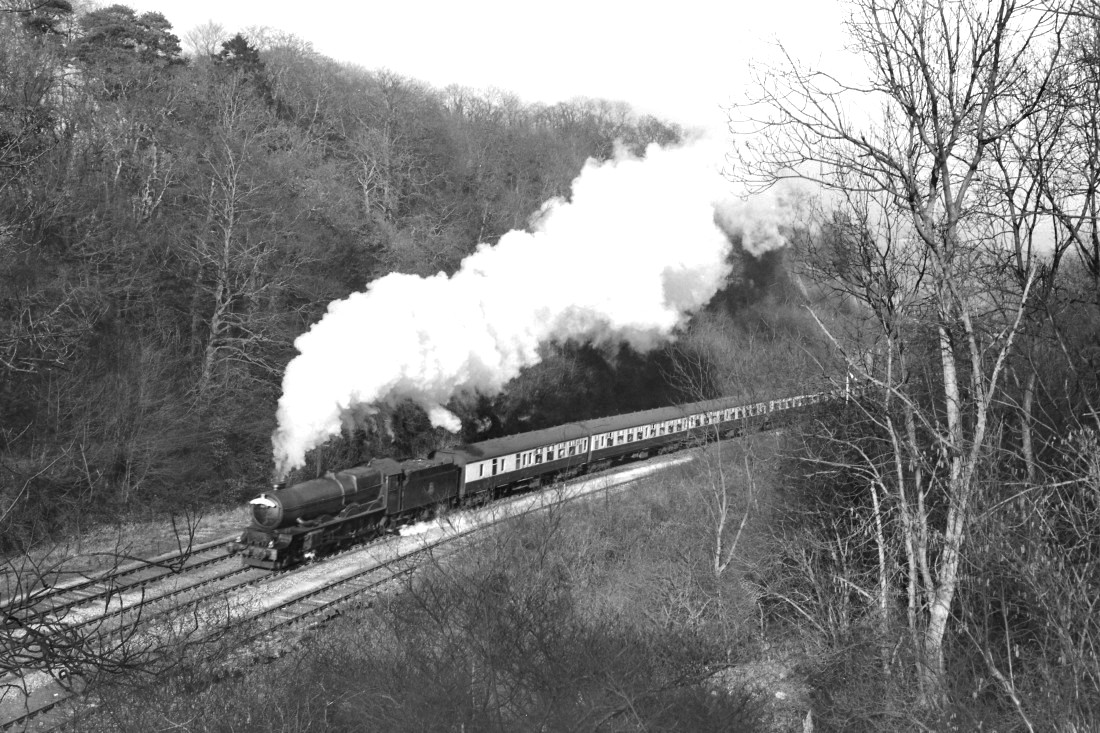
There is plenty of power in this shot from the Mike Morant collection as 6017 King Edward 1V forges its way up Dainton bank on the 17th February 1957, No. 6017 was an 83D Plymouth Laira Engine when this shot was taken but moved to 84A Wolverhampton Stafford Road in February 1959 and was withdrawn from there in July 1962
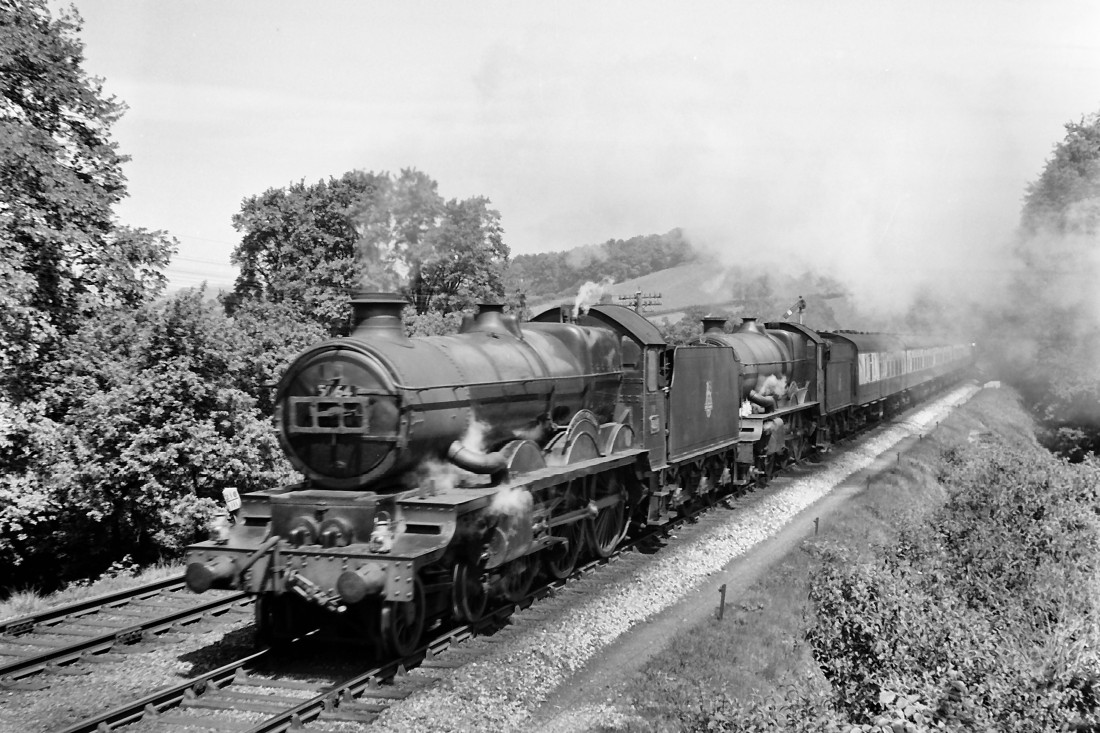
Here we see 5064 piloting 6022 on the 23rd May 1957. 5064 was built in June 1937 as Tretower Castle, its name was quickly changed in September 1937 to Bishops Castle. The loco was withdrawn in January 1963. 6022 King Edward 111 was built in 1930 and withdrawn on 30th September 1962 and was cut a year later.
Courtesy the Mike Morant Collection 160709_W_BR_5064_6022_23-5-57
It wasn't an uneventful journey - 7802 was scheduled to run as pilot to Penzance and return but was detached at Plymouth on the outward leg with a hot box.
70019(70000) stalled about 100 yards short of St. Austell station and 47703 was called up to assist to St. Austell and then ran dead-in-tow to Penzance.
info courtesy of Six bells junction.
Lighning will be remembered as a local engine - Coming home from school I can well remember it standing at the entrance to Redruth tunnel with an up service train. K.J.
70019(70000) stalled about 100 yards short of St. Austell station and 47703 was called up to assist to St. Austell and then ran dead-in-tow to Penzance.
info courtesy of Six bells junction.
Lighning will be remembered as a local engine - Coming home from school I can well remember it standing at the entrance to Redruth tunnel with an up service train. K.J.
Stoneycombe
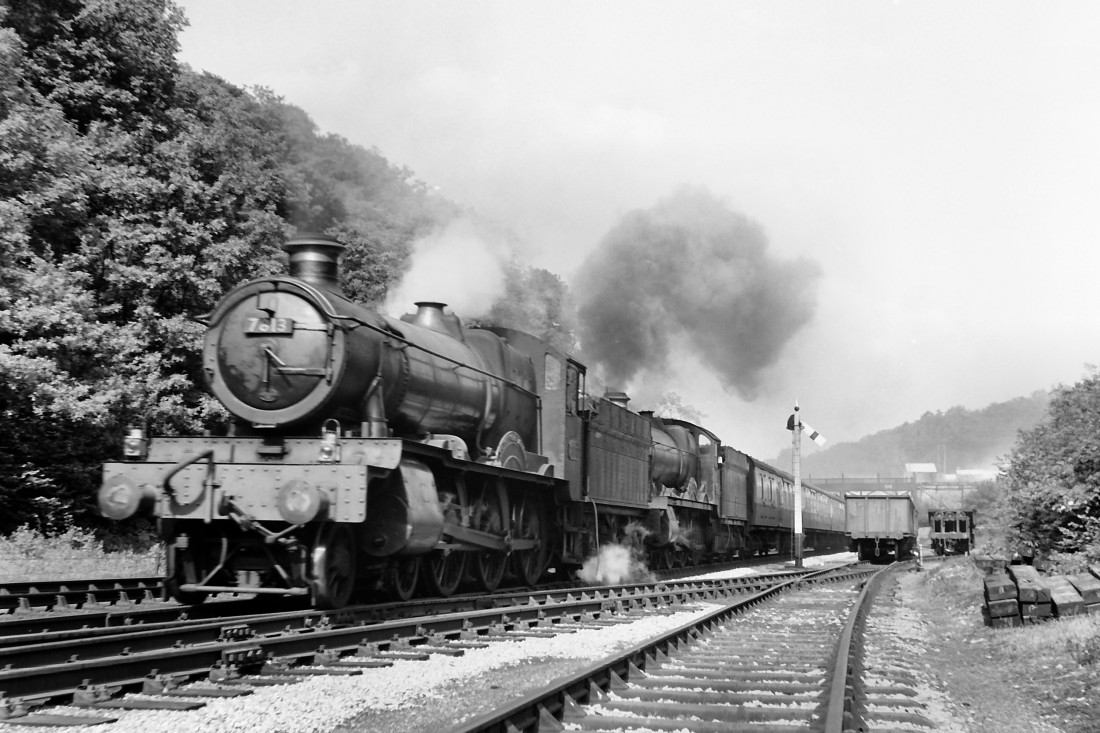
Its the 29th May 1957 as 7813 and 5972 climb past Stoneycombe sidings which served the massive quarry alongside the notorious Dainton Bank. The piloting engine is 7813 Freshford Manor - this was built in January 1939 and withdrawn in September 1965. The second steam locomotive is no. 5972 Olton Hall is a 4-6-0 Hall class locomotive.
In the 2000s the locomotive achieved fame after it was used to haul the "Hogwarts Express" in the Harry Potter films. Built in April 1937 at Swindon railway works it was first allocated to Carmarthen, South Wales where it remained until 1951 then allocated to Plymouth Laira TMD. Its last shed allocation was to Cardiff East Dock, before it was withdrawn in December 1963, and acquired by Woodham Brothers, Barry, Vale of Glamorgan for scrap in May 1964. Thankfully it survived. Mike Morant Collection 160709_W_BR_7813_5972_Dainton_29-5-57
Between Stoneycombe and Aller Junction
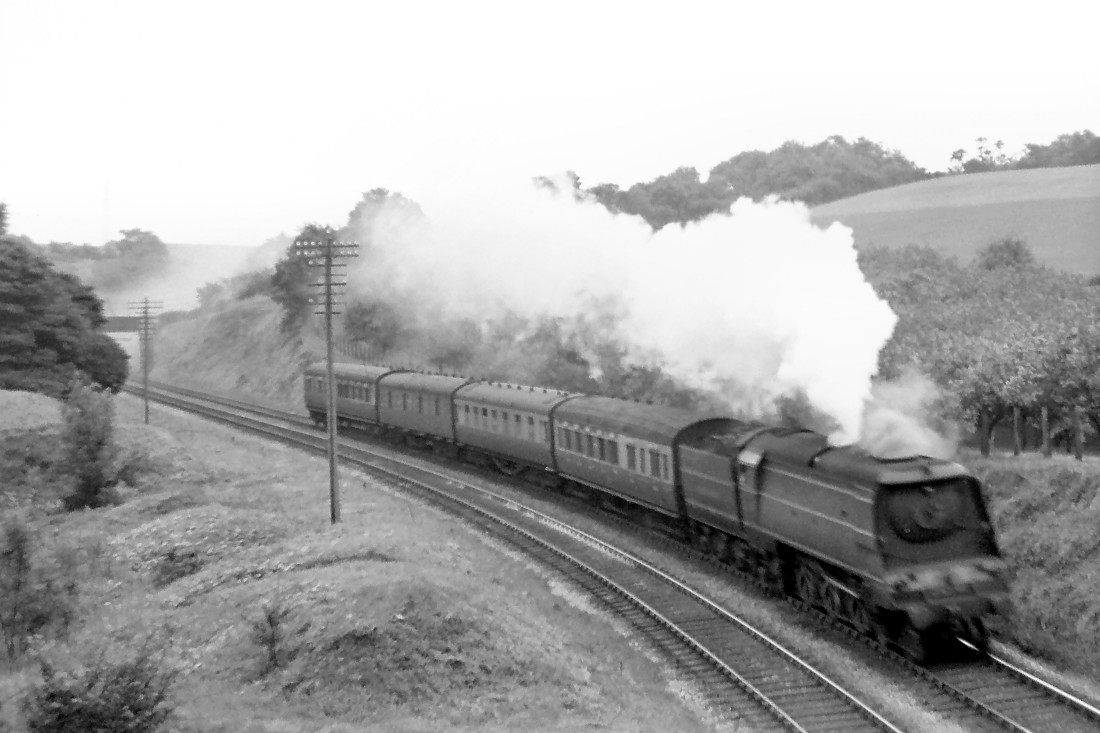
Bullied original light pacific no. 21C141 with steam to spare climbs Dainton Bank with a light load of GWR passenger stock in July 1947. This was one of the Exmouth Junction route knowledge outings along the South Devon Coast line and over the hills of Dainton and Hemerdon. This picture courtesy of the Mike Morant collection.
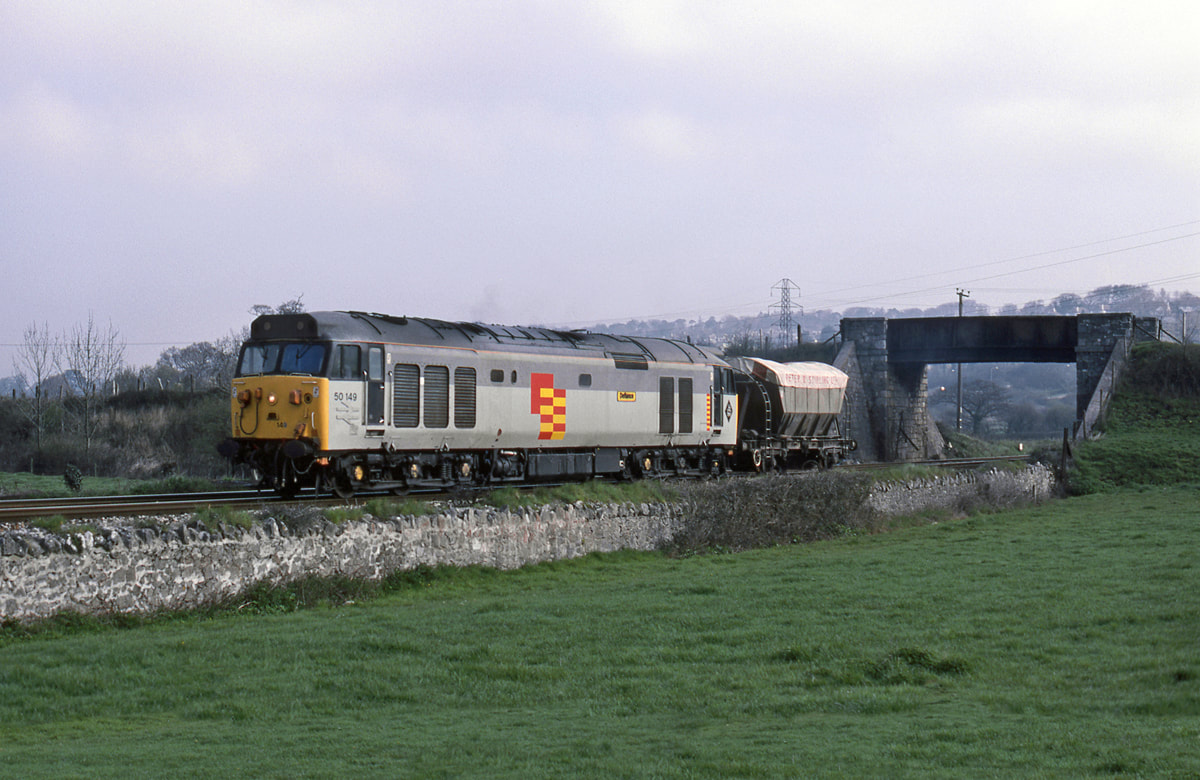
Monday 11th April 1988 saw 50149 work its regular 6C57 0530 St Blazey to Heathfield.
As can be seen in the view as it passes under Langford Bridge near Aller, there was no Tiger for loading at Heathfield.
Instead there was just a solitary wagon destined for the Watts Blake Bearne ball clay siding. This was located on the Heathfield branch at Newton Abbot. Copyright Ron Kosys
Aller Junction
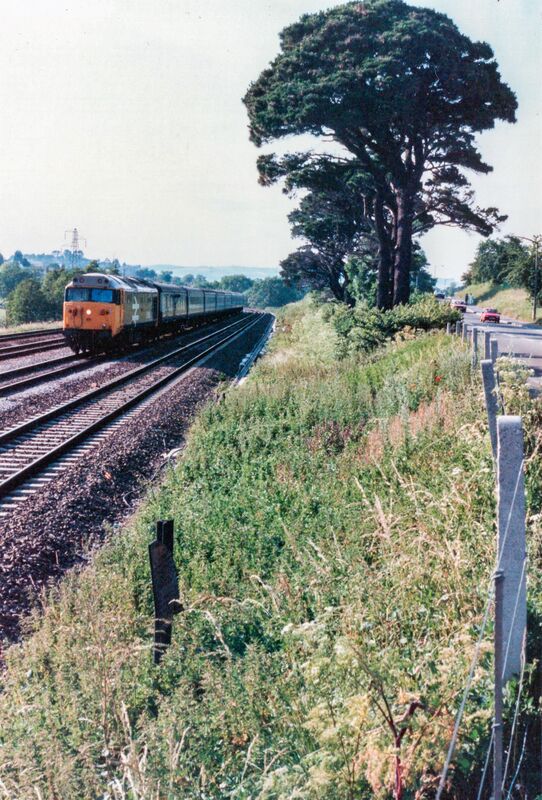
A very different scene back in 1985 on the 7th July as 50045 heads the Sunday 1C49 14.45 Paddington - Plymouth. Parallel to the railway is the old A380 that was replaced in 2015 with the new A380 Kingskerswell by-pass radically transforming the area. The four railway tracks, bridges and Aller Junction were themselves drastically changed in 1987 with the Newton Abbot resignalling and rationalisation. I had been out to Aller to photograph the 'Great Western Limited' B.R. steam train from Paddington to Plymouth with 4930 & 5051 following their half hour stop in Newton Abbot station. The steam tour had passed here at 17.55 and I had photographed them from the other side of the tracks in the sun when it was possible to use one of the farm track or road bridges across the railway that existed then. On my way back along the road I snapped 50045. The steam tour was the second attempt by BR to return steam to Devon and all was well at Aller but both steam locos stalled on Dainton Bank and had various attempts to get going without success. 50045 was detached from its train and then came on the rear and banked the train from milepost 217 to 218 adjacent to Dainton Tunnel signal box. 50045 was detached there then followed to Totnes where the train was terminated rather than running through to Plymouth as booked. The 14.45 Paddington - Plymouth was abandoned somewhere on Dainton Bank and then eventually rescued by the returning 50045.
Copyright Clive Smith.
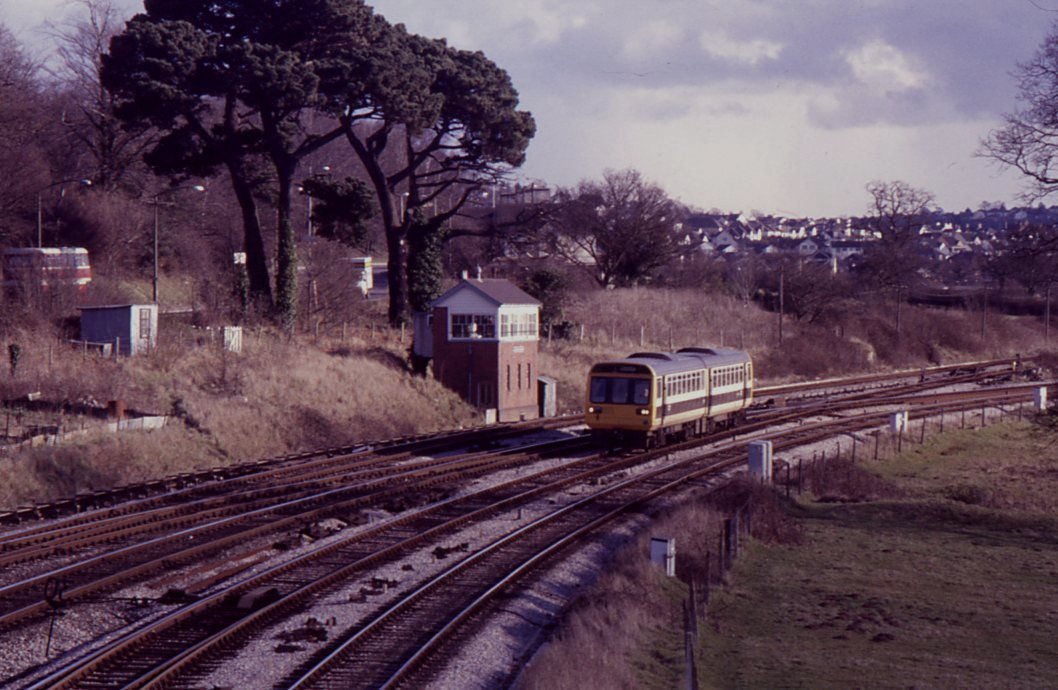
A nice study of Aller Junction and signalbox as a Skipper from Paignton joins the up fast for Newton Abbot on 21Mar87 This scene has changed forever, gone is the pointwork, gone is the box, gone are the trees, the land has been bulldozed, part of the Kingskerswell by-pass project. This comment dated May 2013 By June 2013 it was learned that the bridge from which this picture was taken had already been closed to the public and was to be removed over Christmas 2013. Copyright Roger Winnen
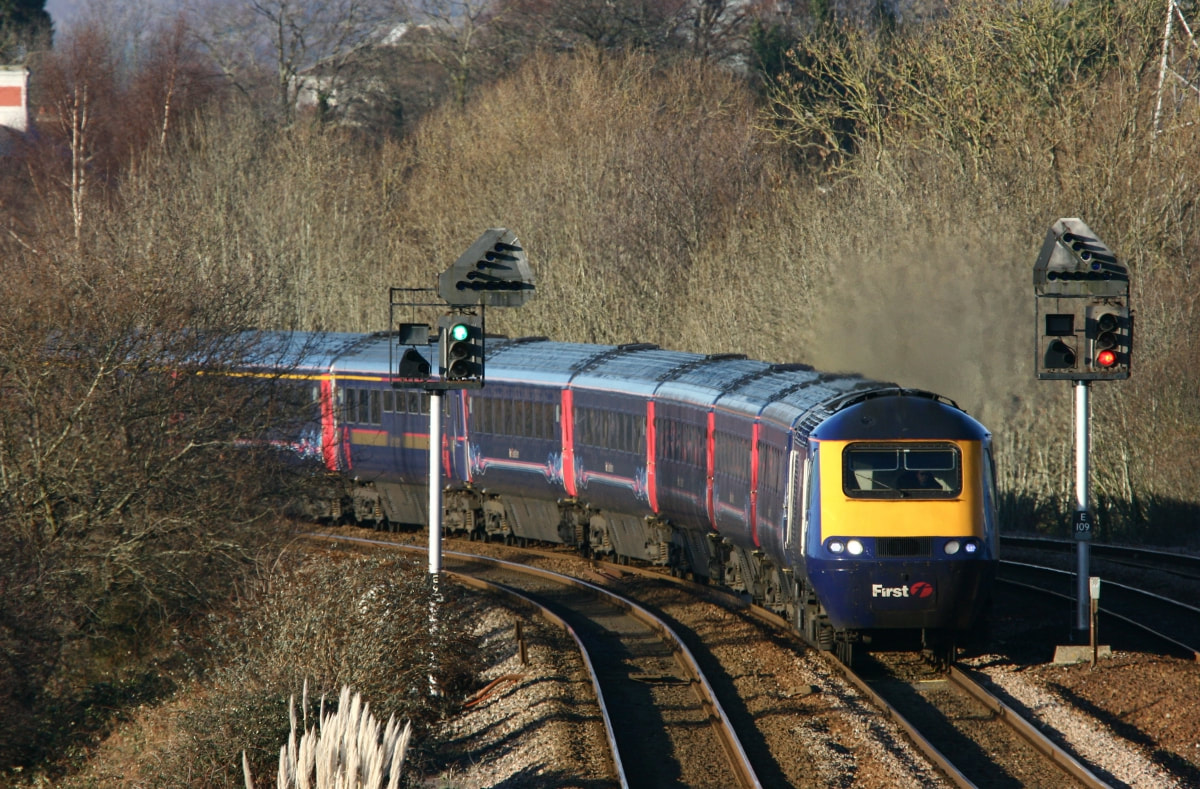
Please find attached a shot from January ten years ago that you might like. Captured with a long lens from the now demolished overbridge at Aller, here is the 1106 Paddington - Plymouth, accelerating hard away from Newton Abbot and taking a run at Dainton bank. The low winter light was just glorious, and the date was 2nd January 2010.
Best Regards,
Copyright Chris Harvey, Bodmin
Re the Footbridge alongside road bridge west of Newton Abbot station. Clive Smith writes
Earlier this month (October 2018) I stood on the road bridge over the railway to the west of Newton Abbot station to photograph some GWR HSTs from London. Crossing the road to take some shots looking west to Aller for the first time since the 1980s I was rather surprised to find this was now impossible. I have been told around four or five years ago the bridge was closed and condemned as unsafe for pedestrians . The road bridge did not carry a pavement until then but these have been added with a slight narrowing of the road lanes. The result is the loss of a useful photo location . The first three pictures show the scene on the 9th October 2018. The last picture was taken on 21st May 1983 from the footbridge of 45109 on the 07.50 Paignton - Glasgow and Edinburgh. I believe the footbridge carries electricity cables underneath it and removal of the bridge was planned for August this year but has clearly not happened.
Regards, Clive Smith Many thanks Clive.
Earlier this month (October 2018) I stood on the road bridge over the railway to the west of Newton Abbot station to photograph some GWR HSTs from London. Crossing the road to take some shots looking west to Aller for the first time since the 1980s I was rather surprised to find this was now impossible. I have been told around four or five years ago the bridge was closed and condemned as unsafe for pedestrians . The road bridge did not carry a pavement until then but these have been added with a slight narrowing of the road lanes. The result is the loss of a useful photo location . The first three pictures show the scene on the 9th October 2018. The last picture was taken on 21st May 1983 from the footbridge of 45109 on the 07.50 Paignton - Glasgow and Edinburgh. I believe the footbridge carries electricity cables underneath it and removal of the bridge was planned for August this year but has clearly not happened.
Regards, Clive Smith Many thanks Clive.
Newton Abbot Gallery 1 Steam
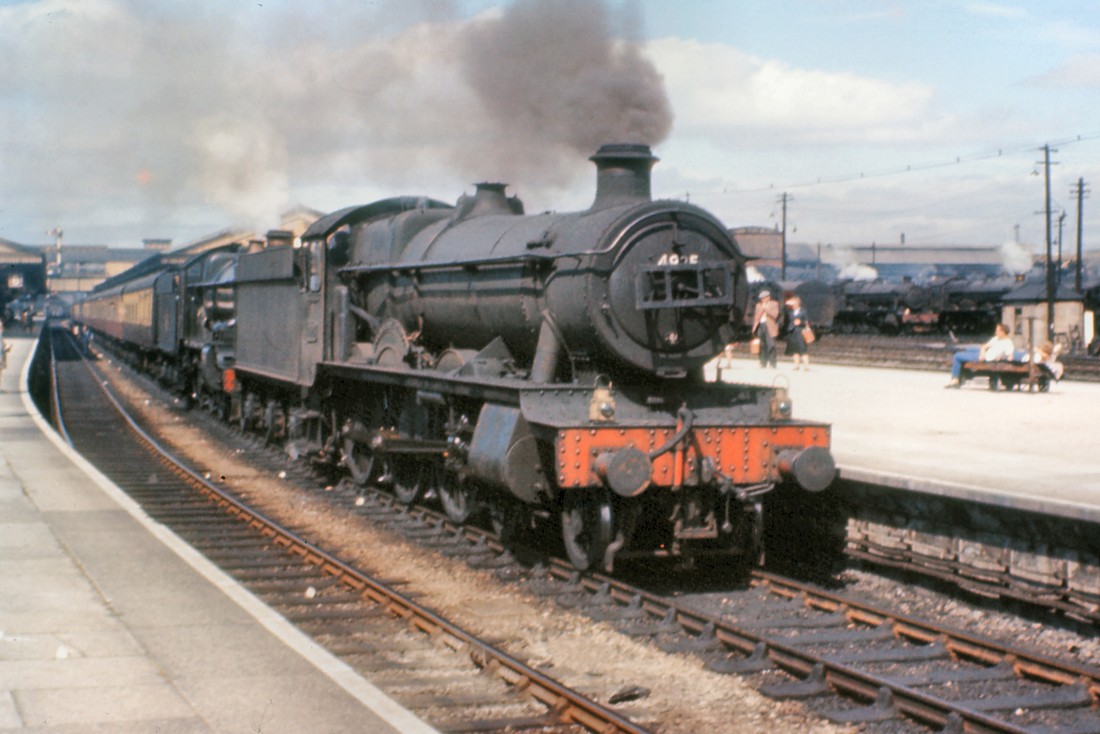
A lovely colour shot taken in August 1958 as a Castle assisted by 4925 Eynsham Hall starts away on its journey with a service to Plymouth. There is plenty of activity in the shed behind where steam raising is in progress. The shed closed as a diesel shed in 1970 but continued as a coach servicing and refueling point until 1981. Mike Morant took this picture and has kindly allowed us to use it.
Newton Abbot Gallery 2 Diesel
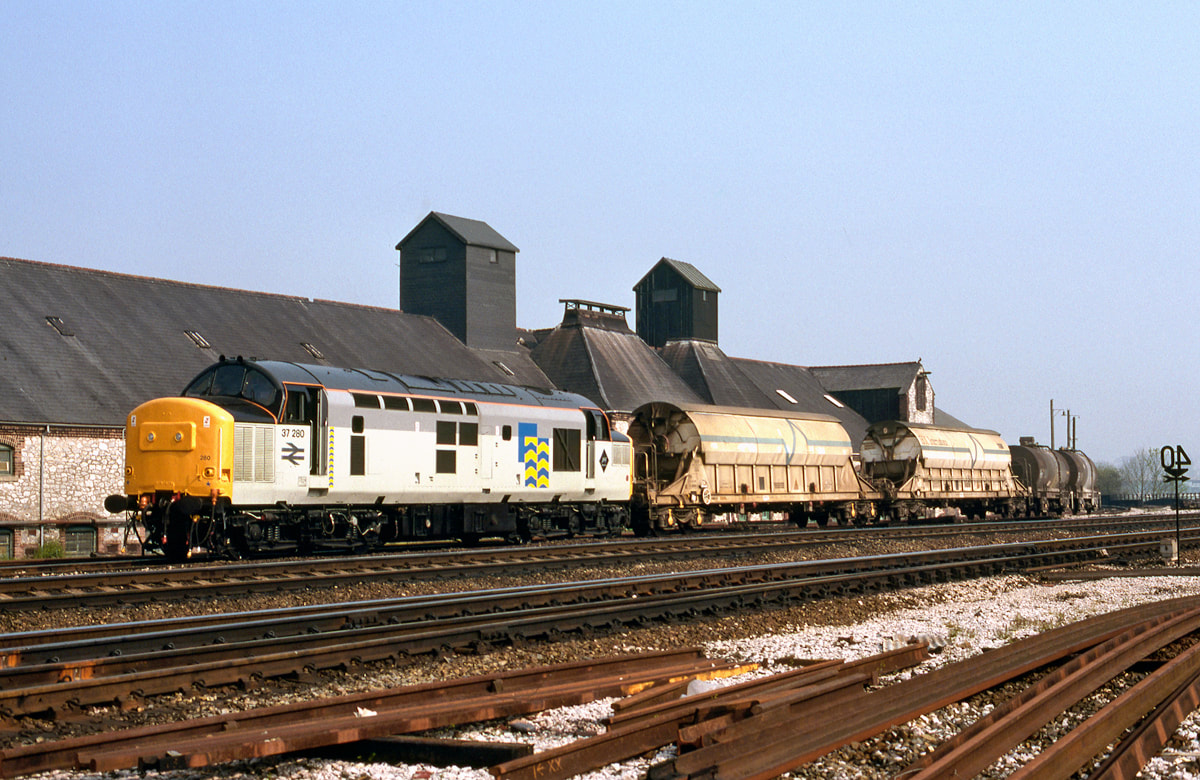
Ron Kosys writes :- Possibly my favourite SouthWest tripper of all time...
37280 waits to come off the Heathfield branch at Newton Abbot with the Heathfield tripper 4th May 1989, that was booked to run through to St Blazey via a stop at Tavistock Junction.
6C58 was booked to leave Heathfield at 1045 although it invariably ran early. The usual load ex Heathfield was one ECC Tiger of ball clay per day,so it made a change to see it with two. The two tanks on the rear would have been collected from the Newton Abbot Clays siding, which you could easily photograph off the Newton Road bridge. I’ll send you some in due course...
So, 37280 is waiting time to run through Newton Abbot station, next stop Tavistock Junction, where it will almost certainly pick up a lot more traffic, most of which was associated with the clay industry. Copyright
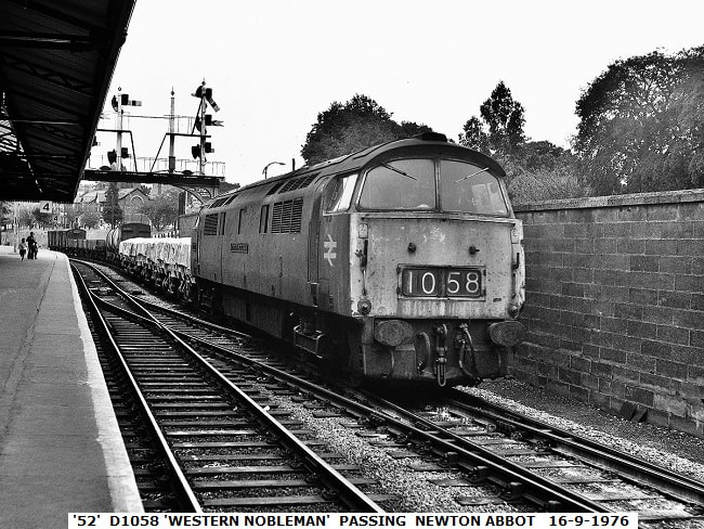
Newton Abbot - up avoiding lines. A mixed train passes through under a clear signal on the interesting gantry. The points in the foreground are also of interest. Making use of its long platforms an up service from Penzance or Plymouth would stop on the platform line with its tail just beyond here. Then an additional portion from the Torbay line to be added would arrive. The locomotive from this portion would be removed via this crossover and the additional coaches propelled onto the eastbound train. This move, complete with passengers would not be permitted today. Copyright John Cornelius
Newton Abbot Gallery 3 The re-oranisation and re-signalling phase.
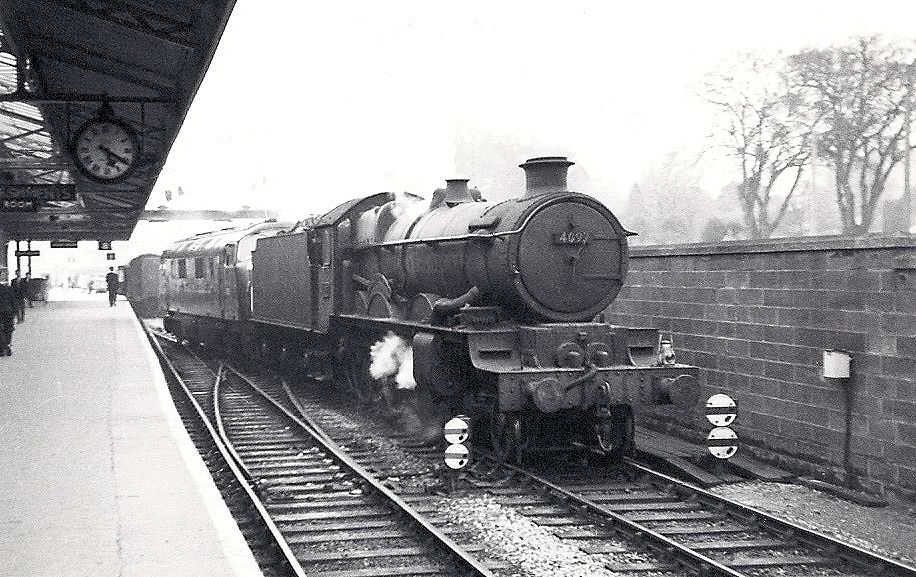
4993 Dunster Castle in a deplorable condition & D838 Rapid come off the train at Newton Abbot running out onto the up through line on the 8th Aug 62 Copyright Michael Forward. This train will have arrived from the Plymouth direction and stopped short at the west end of the very long island platform to uncouple and release 4993 and D838 over the crossover. The train will then be propelled slowly up the platform to join stock from the Kingswear branch already standing at the east end of the platform. 8th August 1962. Copyright Michael Forward.
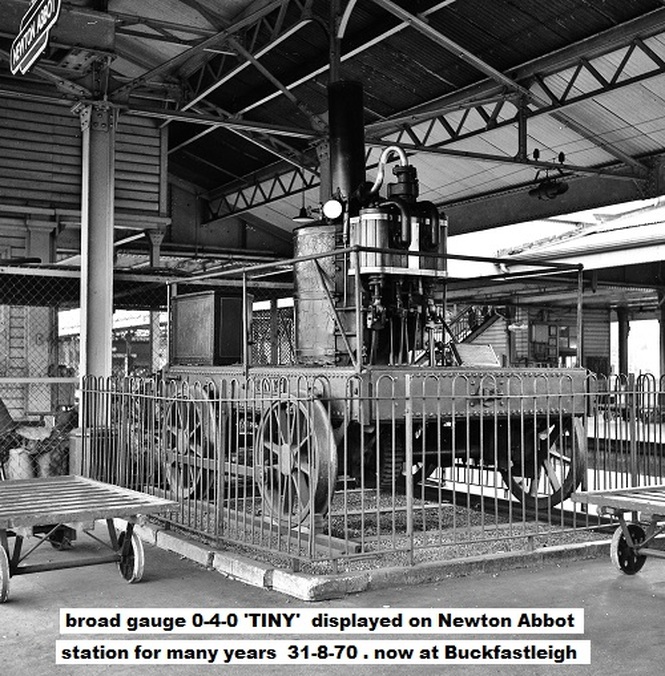
A fine photograph copyright John Cornelius of the broad gauge loco 'Tiny' which for many years was a resident of Newton Abbot shed until made redundant in 1927. Thankfully, it was preserved, being transferred to sit on the platform at Newton Abbot opposite the shed. It now resides at the South Devon Trust Museum at Buckfastleigh.
It is now over 30 years since the remodelling of Newton Abbot station.
The first picture shows 45048 The Royal Marines arriving at platform 4 with the summer Saturday 16.00 Penzance - Liverpool on 9th July 1983. The platform is busy and note the row of postal trolleys to the left. The highly visible unattended baggage would nowadays result in instant tannoy warnings or a station evacuation although terrorism was just as prevalent back then. The wonderful semaphores to the west of platform 4 and the through road can be seen along with a selection of now vintage cars in the smaller car park of the day. The two Morris Minors were already vintage by this time.
Switching eastwards in the second picture , the 'road' is set on the semaphore gantry as 45150 heads towards the magnificent east box with the 13.45 Penzance - Bristol TM on the 16th April 1983. Some peak enthusiasts in the front mark 1 coach show their enthusiasm for the class.
Regards, Clive Smith. Many thanks indeed Clive
The first picture shows 45048 The Royal Marines arriving at platform 4 with the summer Saturday 16.00 Penzance - Liverpool on 9th July 1983. The platform is busy and note the row of postal trolleys to the left. The highly visible unattended baggage would nowadays result in instant tannoy warnings or a station evacuation although terrorism was just as prevalent back then. The wonderful semaphores to the west of platform 4 and the through road can be seen along with a selection of now vintage cars in the smaller car park of the day. The two Morris Minors were already vintage by this time.
Switching eastwards in the second picture , the 'road' is set on the semaphore gantry as 45150 heads towards the magnificent east box with the 13.45 Penzance - Bristol TM on the 16th April 1983. Some peak enthusiasts in the front mark 1 coach show their enthusiasm for the class.
Regards, Clive Smith. Many thanks indeed Clive
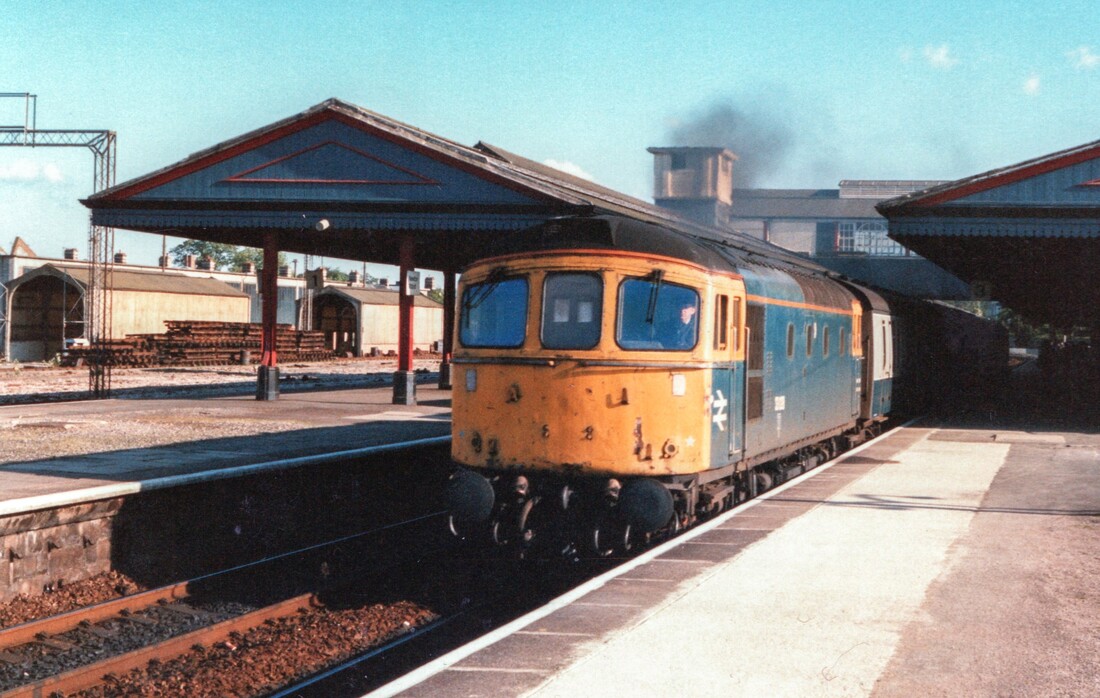
33028 thrashes out of Newton Abbot in what I believe is summer 1987. I didn't note the date or working but it's likely a Paignton - Exeter. The rationalisation has been completed but some of the lifted track can be seen in the background. A particularly brutal cutting back of what was once a lovely station to spend time on.
Copyright Clive Smith
Contrasts at Newton Abbot - Then and Now - Clive Smith
Of all the locations that have changed over the years it is Newton Abbot that has seen the most radical. Despite thirty one years passing since the 1987 rationalisation I still find it strange being on the station without automatically thinking of the past. These pictures show the changes looking east from the end of the station. The first shows 45064 heading the 06.35 Bristol TM - Plymouth on 26th August 1983. This train conveyed a number of parcel vans. The wonderful signal box and points and wooden pole lighting complete the scene. Fast forward to 9th October 2018 and an HST heads east with the 12.55 Plymouth - Paddington. The scene is now one of rationalised track, weeds and what looks like a tree explosion where the box once stood.
Regards, Clive Smith Many thanks Clive
Regards, Clive Smith Many thanks Clive
The changes following the 1987 rationalisation are much more apparent here. The first picture shows 45017 leaving the station with the 21.31 Nottingham - Plymouth parcels on 21st May 1983. Tracks lead off in directions past the magnificent west box, providing a through line and platform as well as lines to the yard and recently closed depot. Semaphores abound. The fondly remembered David And Charles exhibition coaches can be seen to the right. Fast forward to 9th October 2018 and 43030 departs leading the re-timed 10.35 Paddington - Plymouth. The station now has an extended car park and three lines and platforms. The rest is history and it looks like the Victorian Carriage & Wagon shed just visible to the right will also soon go to make way for an Aldi store - see link.
https://www.devonlive.com/whats-on/shopping/aldi-plans-new-newton-abbot-1238756
Regards, Clive Smith Once again, many thanks Clive.
https://www.devonlive.com/whats-on/shopping/aldi-plans-new-newton-abbot-1238756
Regards, Clive Smith Once again, many thanks Clive.
Demolition of the Carriage Shed at Newton Abbot
This work commenced on Monday 12th November 2018 - about three weeks previously a fire which is suspected was arson destroyed much of the shed. Fortunate in a way as demolition to clear the area for a Supermarket had been intended.
This work commenced on Monday 12th November 2018 - about three weeks previously a fire which is suspected was arson destroyed much of the shed. Fortunate in a way as demolition to clear the area for a Supermarket had been intended.
With the demolition of the shed now taking place above is a reminder of better days from the 26th July 1982. 31416 shunts carriage heating unit ADB986008 (24054) through the adjacent loco depot's washing plant. Other than the original station building and remaining platforms there is now little left of Newton Abbot's rich railway heritage. Regards Clive Smith
Anniversary of the closure of Newton Abbot Works Michael L Roach
The South Devon Railway built the line from Exeter to Plymouth via Newton Abbot, and the first passenger train arrived at Newton Abbot on the last day of 1846. The passenger service was extended to Totnes in 1847 and Torquay in 1848. The SDR soon constructed a running shed and locomotive repair works at Newton Abbot which survived the takeover by the Great Western Railway and nationalisation, finally closing in 1970. In steam days the works would repair all sizes of loco except the King-class and from sheds all over the Western Region but it specialised in the smaller steam locos from West Country sheds. The works closed to steam in 1960 but was repurposed to maintain diesel locomotives for a few years.
The last steam locomotive to receive an overhaul at the works was small prairie tank number 4566 of Penzance Shed in June and July 1960. The loco left the works on Wednesday 15 July 1960 in a ceremony which was attended by local dignitaries and reported in the local press. Two weeks earlier on 3 July there were 6 locos in the works including 2 Castles. The choice of 4566 as the last loco to go through the works was a masterstroke because the loco had been sent new to Newton Abbot as its first shed in October 1924 immediately after construction. 4566 was transferred from Penzance to Laira Shed, Plymouth in October 1961 and withdrawn from there in April 1962. Sent to Woodham Brothers scrapyard at Barry the loco was saved for preservation on the Severn Railway Railway arriving there in August 1970. So this is a notable year for 4566 being 60 years since it left Newton Abbot Works and 50 years since it arrived on the Severn Valley Railway.
What of 4566 in the year 2020. The loco still resides on the Severn Valley Railway where she is stored in The Engine House at Highley awaiting an overhaul. 4566 was last steamed on 2 January 2017 when the loco made two return trips between Kidderminster and Bridgnorth, and performed very well. Its a little over four years until 4566 celebrates its 100th birthday. Lets hope that the overhaul can be completed in time for this wonderful little locomotive to celebrate its centenary in steam and earning its living on passenger trains. I am obliged to David Cook of The 4566 Group, owners of the locomotive, for assistance in writing this article and for providing the photographs.
Another veteran of the steam era with strong connections to South Devon is the coal-fired paddle steamer Kingswear Castle built by Philip & Son on the banks of the River Dart. The ship is back where it belongs doing the pleasure trips it was designed for between Dartmouth and Totnes. The steamer entered service in 1924 and will also celebrate its 100th birthday in 4 years time.
Michael L Roach 10 July 2020
The last steam locomotive to receive an overhaul at the works was small prairie tank number 4566 of Penzance Shed in June and July 1960. The loco left the works on Wednesday 15 July 1960 in a ceremony which was attended by local dignitaries and reported in the local press. Two weeks earlier on 3 July there were 6 locos in the works including 2 Castles. The choice of 4566 as the last loco to go through the works was a masterstroke because the loco had been sent new to Newton Abbot as its first shed in October 1924 immediately after construction. 4566 was transferred from Penzance to Laira Shed, Plymouth in October 1961 and withdrawn from there in April 1962. Sent to Woodham Brothers scrapyard at Barry the loco was saved for preservation on the Severn Railway Railway arriving there in August 1970. So this is a notable year for 4566 being 60 years since it left Newton Abbot Works and 50 years since it arrived on the Severn Valley Railway.
What of 4566 in the year 2020. The loco still resides on the Severn Valley Railway where she is stored in The Engine House at Highley awaiting an overhaul. 4566 was last steamed on 2 January 2017 when the loco made two return trips between Kidderminster and Bridgnorth, and performed very well. Its a little over four years until 4566 celebrates its 100th birthday. Lets hope that the overhaul can be completed in time for this wonderful little locomotive to celebrate its centenary in steam and earning its living on passenger trains. I am obliged to David Cook of The 4566 Group, owners of the locomotive, for assistance in writing this article and for providing the photographs.
Another veteran of the steam era with strong connections to South Devon is the coal-fired paddle steamer Kingswear Castle built by Philip & Son on the banks of the River Dart. The ship is back where it belongs doing the pleasure trips it was designed for between Dartmouth and Totnes. The steamer entered service in 1924 and will also celebrate its 100th birthday in 4 years time.
Michael L Roach 10 July 2020
Many thanks to Michael L. Roach for his detailed article and to David Cook for the photogaphs from his collection.
Devon Timber Trains Return
Timber trains returned to Devon in the form of a trial from Hackney Yard to Abergavenny, Colas Rail timber trains known as 'The Logs' previously ran from Teigngrace where the wagons were loaded for Kronospan at Chirk. Colas Rail 70803 is seen at Hackney Yard with 8 wagons being loaded for Pontrilas Timber on 17th January 2022. The train will work 6Z61 from Hackney Yard to Abergavenny the following day for unloading, if successful timber trains will once more become a common sight along the Dawlish Sea Wall.
Timber trains returned to Devon in the form of a trial from Hackney Yard to Abergavenny, Colas Rail timber trains known as 'The Logs' previously ran from Teigngrace where the wagons were loaded for Kronospan at Chirk. Colas Rail 70803 is seen at Hackney Yard with 8 wagons being loaded for Pontrilas Timber on 17th January 2022. The train will work 6Z61 from Hackney Yard to Abergavenny the following day for unloading, if successful timber trains will once more become a common sight along the Dawlish Sea Wall.
For onward travel to Exeter please see our Teignmouth to Exminster section.
